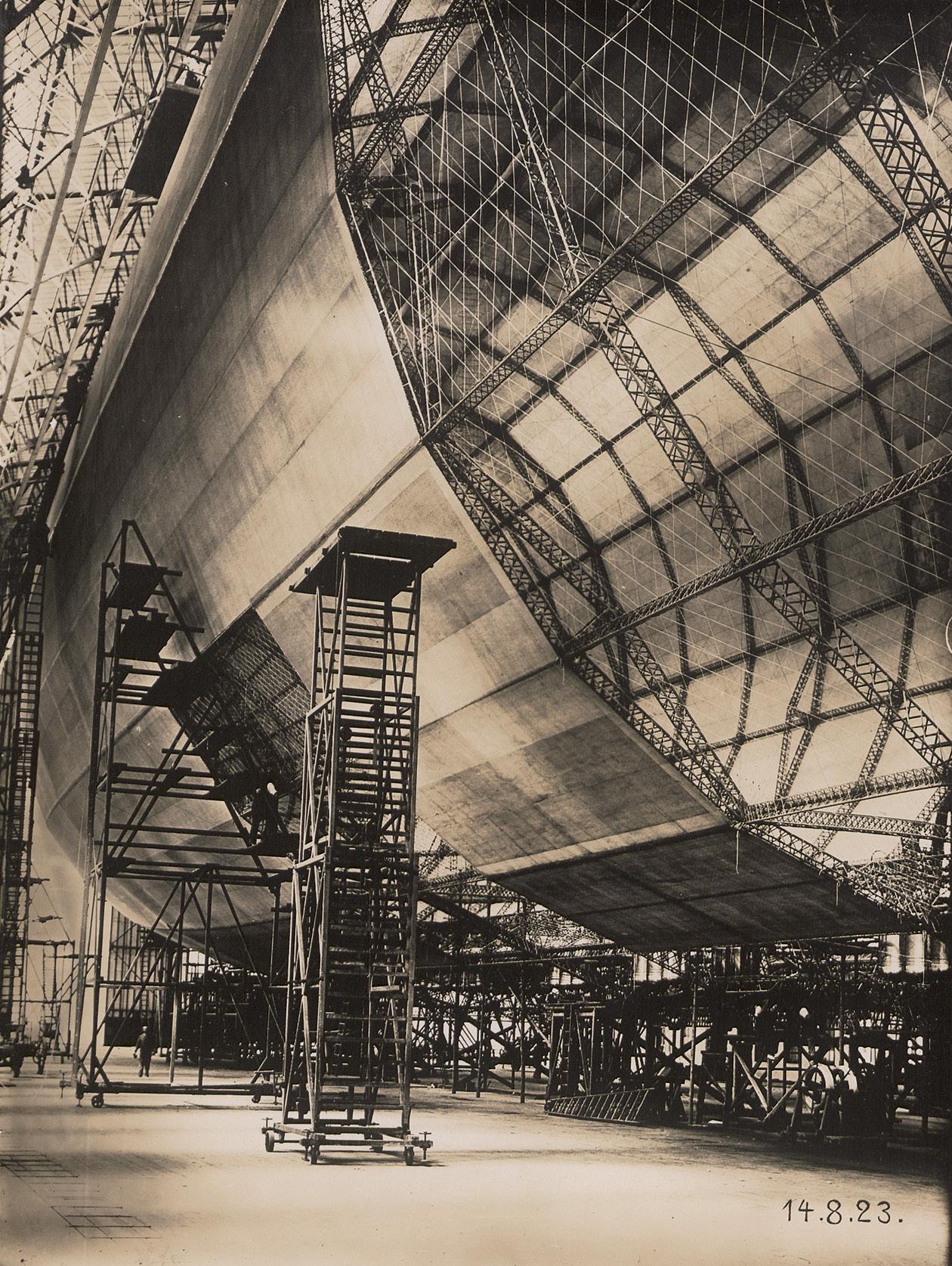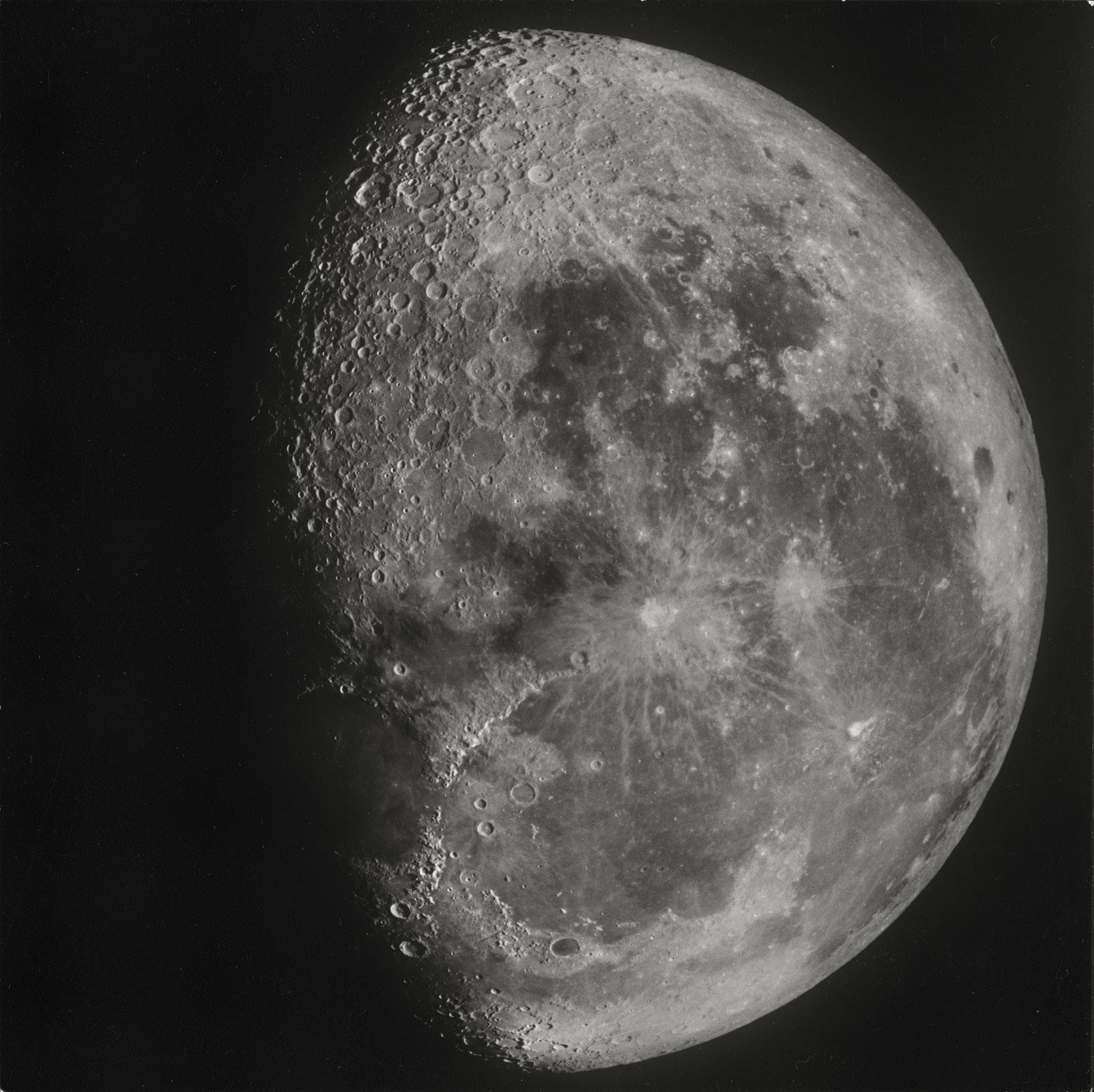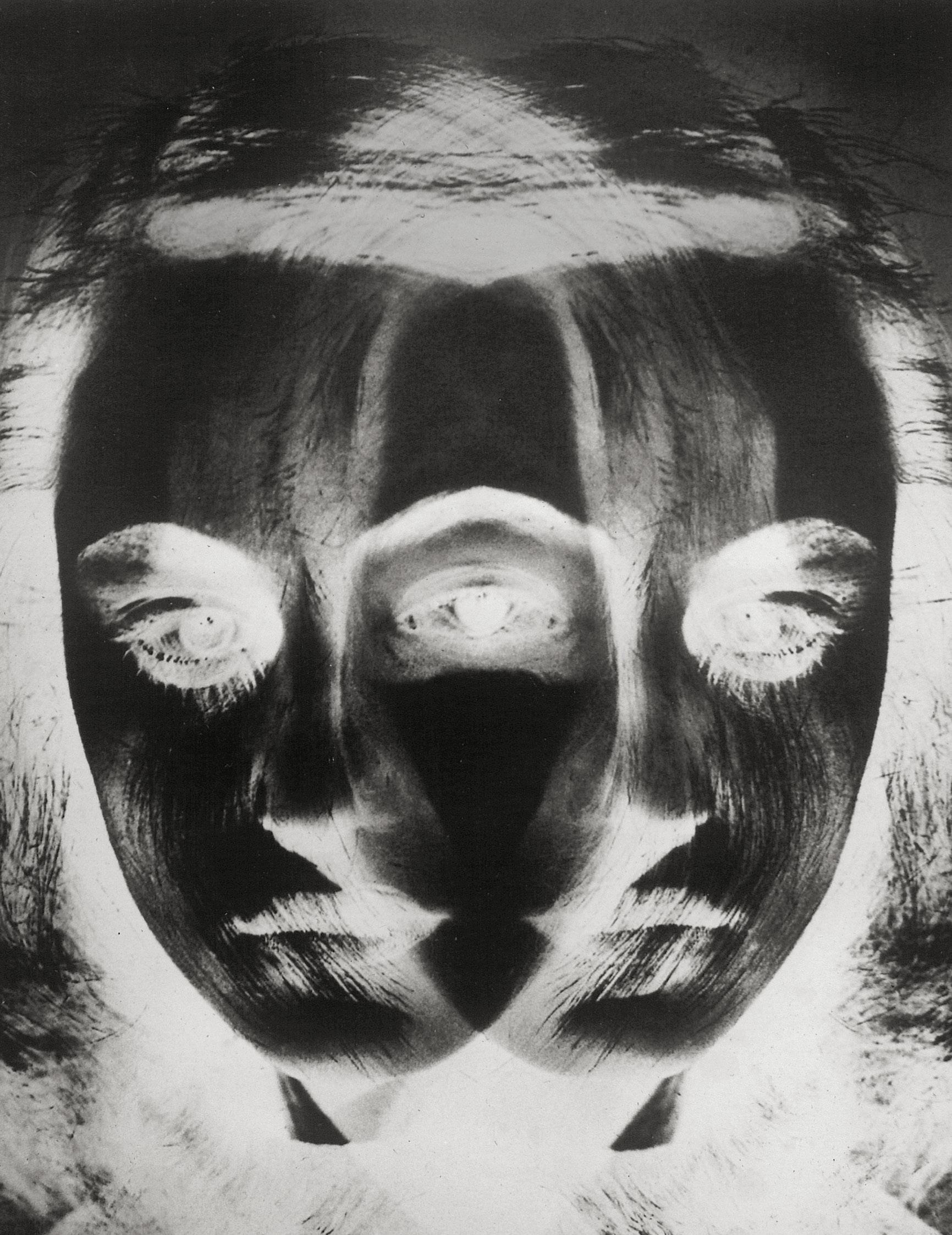
Erdener Str. 5a, 14193 Berlin, Germany november 29, 2025 16.00
preview / vorbesichtigung: 20.11. – 22.11.2025: 10.00 – 18.00, Rankestr. 24, 10789 Berlin, Germany 24.11. – 27.11.2025: 10.00 – 18.00, 28.11.: 10.00 – 15.00
In order to guarantee a smooth preview, we kindly ask you to register in advance by phone or e-mail.
Um einen reibungslosen Ablauf der Vorbesichtigung gewährleisten zu können, bitten wir Sie um eine vorherige Anmeldung per Telefon oder E-Mail.
contact / kontakt: jennifer@bassenge.com giovanni@bassenge.com
Tel.: +49 30 21 99 72 77
Fax: +49 30 21 99 71 05
bassenge foto-auktionen egbr
Online catalogues: www.bassenge.com
experten | specialists
Geschäftsführung | Management
Graphik, Zeichnungen und Gemälde des 15.–19. Jh.
David Bassenge
Dr. Ruth Baljöhr – Leitung
+49 (0)30-893 80 29-17 david@bassenge.com
+49 (0)30-893 80 29-22 15th to 19th Century Prints, Drawings and Paintings r.baljoehr@bassenge.com
David Bassenge
Eva Dalvai
+49 (0)30-893 80 29-17 david@bassenge.com
+49 (0)30-893 80 29-80 e.dalvai@bassenge.com
Lea Kellhuber +49 (0)30-893 80 29-20 l.kellhuber@bassenge.com
Nadine Keul +49 (0)30-893 80 29-21 n.keul@bassenge.com
Harald Weinhold +49 (0)30-893 80 29-13 h.weinhold@bassenge.com
Moderne und Zeitgenössische Kunst
Barbara Bögner – Leitung +49 (0)30-88 62 43 13 Modern and Contemporary Art b.boegner@bassenge.com
Katharina Fünfgeld +49 (0)30-88 91 07 90 k.fuenfgeld@bassenge.com
Simone Herrmann +49 (0)30-88 91 07 93 s.herrmann@bassenge.com
Sonja von Oertzen +49 (0)30-88 91 07 91 s.v.oertzen@bassenge.com
Laetitia Weisser +49 (0)30-88 91 07 94 l.weisser@bassenge.com
Photographie | Photography
Wertvolle Bücher und Handschriften
Jennifer Augustyniak – Leitung +49 (0)30-21 99 72 77 jennifer@bassenge.com
Giovanni Teeuwisse +49-(0)30-88 91 08 55 giovanni@bassenge.com
Dr. Markus Brandis – Leitung
+49 (0)30-893 80 29-27
Rare Books and Manuscripts m.brandis@bassenge.com
Harald Damaschke +49 (0)30-893 80 29-24
h.damaschke@bassenge.com
Selma Elsayed +49 (0)30-893 80 29-24
s.sayed@bassenge.com
Josephine Faroqhi +49 (0)30-893 80 29-48
j.faroqhi@bassenge.com
Stephan Schurr +49 (0)30-893 80 29-15
s.schurr@bassenge.com
Naomi Schneider +49 (0)30-893 80 29-48
n.schneider@bassenge.com
Autographen | Autograph Letters
Verwaltung | Office
Logistik Management | Logistics
Repräsentanzen | Representatives
München
Rheinland
Dr. Rainer Theobald +49 (0)30-4 06 17 42 r.theobald@bassenge.com
Jenny Neuendorf +49 (0)30-893 80 29-33
j.neuendorf@bassenge.com
Ralph Schulz +49 (0)30-893 80 29-16
r.schulz@bassenge.com
Harald Weinhold
+49 (0)151-1202 2201 muenchen@bassenge.com
Dr. Mayme Francis Neher +49 (0)175-204 63 23 info@mayme-neher.de
19 th century photography


leopold ahrendts (1825-1870)
4001 Schauspielhaus, Berlin. 1856. Gold-toned salted paper print with rounded corners. 15,7 x 22 cm. Mounted to board, titled in pencil below the image on the mount.
1.200 €
Leopold Ahrendts began his career as a painter and lithographer in Dessau, eventually transitioning to photography in the mid19th century. His photographic oeuvre encompasses urban landscapes and architectural views of Berlin, captured with a keen eye for composition and detail. His noteworthy contributions to the field earned him participation in international photographic exhibitions and widespread recognition as an architectural photographer.
Lit.: Eberhard Mayer-Wegelin and Sigrid Schulze. Berlin als Residenzstadt: Photographien von Leopold Ahrendts 1854-1870 Munich: Schirmer/Mosel, 2018, ill. p. 54.
Sigrid Schulze. „Leopold Ahrendts: Photograph“ in: Galerie Berinson, ed. Leopold Ahrendts (1825-1870) und die Frühzeit der Photographie in Berlin. Berlin: Galerie Berinson, 2011, ill. p. 29.

leopold ahrendts
4002 Die Kaiserbrücke / Die Waisenbrücke mit Inselspeicher und Mühlendamm. 1853/1856-1857.
2 salted paper prints with rounded corners, mounted to trimmed board. 15,6 x 21,2 cm and 16,7 x 21,2 cm. One print dated “1853” in pencil in lower right corner of mount.
1.200 €
Lit.: Eberhard Mayer-Wegelin and Sigrid Schulze. Berlin als Residenzstadt: Photographien von Leopold Ahrendts 1854-1870 Munich: Schirmer/Mosel, 2018, ill. p. 140.


leopold ahrendts
4003 Charlottenburger Chaussee with view of Brandenburg Gate towards Unter den Linden, Berlin. 1856. Gold-toned salted paper print with rounded corners. 19,5 x 16,5 cm. Mounted to board, titled in pencil below the image on the mount.
1.200 €
Lit.: Eberhard Mayer-Wegelin and Sigrid Schulze. Berlin als Residenzstadt: Photographien von Leopold Ahrendts 1854-1870 Munich: Schirmer/Mosel, 2018, ill. p. 131. Lothar de Maizière and Antonius Jammers (eds.). Bevor Berlin zur Weltstadt wurde: Die Residenz in Fotografien von Leopold Ahrendts. Berlin: Braun, 2001, ill. p. 19.
4004 Gendarmenmarkt, Berlin. 1857-58. Albumen print with rounded corners, mounted to original board. 18,7 x 21,4 cm (27,4 x 32,7 cm).
1.000 €
Lit.: Jutta Reinke and Wolfgang Stemmer, eds. Pioniere der Kamera: Das erste Jahrhundert der Fotografie 1840-1900. Die Sammlung Robert Lebeck. Bremen: Fotoforum, 1987, ill. p. 190.Eberhard Mayer-Wegelin and Sigrid Schulze. Berlin als Residenzstadt: Photographien von Leopold Ahrendts 1854-1870. Munich: Schirmer/Mosel, 2018, ill. p. 134.






4005
4005 Photographer: Charles Kroehle (1867-1902) and unknown. Portraits and ethnographic studies of Indigenous people of Peru. 1890s. 25 albumen prints. Circa 14 x 10 cm. 17 signed by C. Kroehle in the negative in lower corners, 2 with photographer’s stamp annotated in pencil on the verso.
8.000 €
Charles Kroehle is regarded as one of the pioneering photographers of the Amazon region. He participated in several expeditions through the Amazon Basin, Ecuador, and Bolivia, producing some of the earliest photographic records of Indigenous communities in these areas. The rare portraits presented here were
taken primarily in the Peruvian Amazon and depict members of various Indigenous groups, including the Pirus (Río Pichis), Canelos (Río Pastaza), Múra-Pirahã (Río Pachitea), Huasheri (Río Napo), Campa (Río Palcazu), Cunibo (Río Ucayali), Lorenzo (Río Mayra), Cachivo (Río Pachitea), Chipivas (Río Ucayali), and Cashiva (Chonta Isla, Río Pachitea). These images are among the earliest visual documents of these communities and hold significant ethnographic and historical value.
Lit.: Musée du quai Branly. D’un regard l’Autre: Photographies XIXe siècle. Arles: Actes Sud, 2006, ill. p. 90. Séverine Charon, ed. L’Amazonie disparue: Indiens et explorateurs 1825-1930. Paris: Réunion des musées nationaux, 2005, ill. pp. 94, 95, 98, 100.

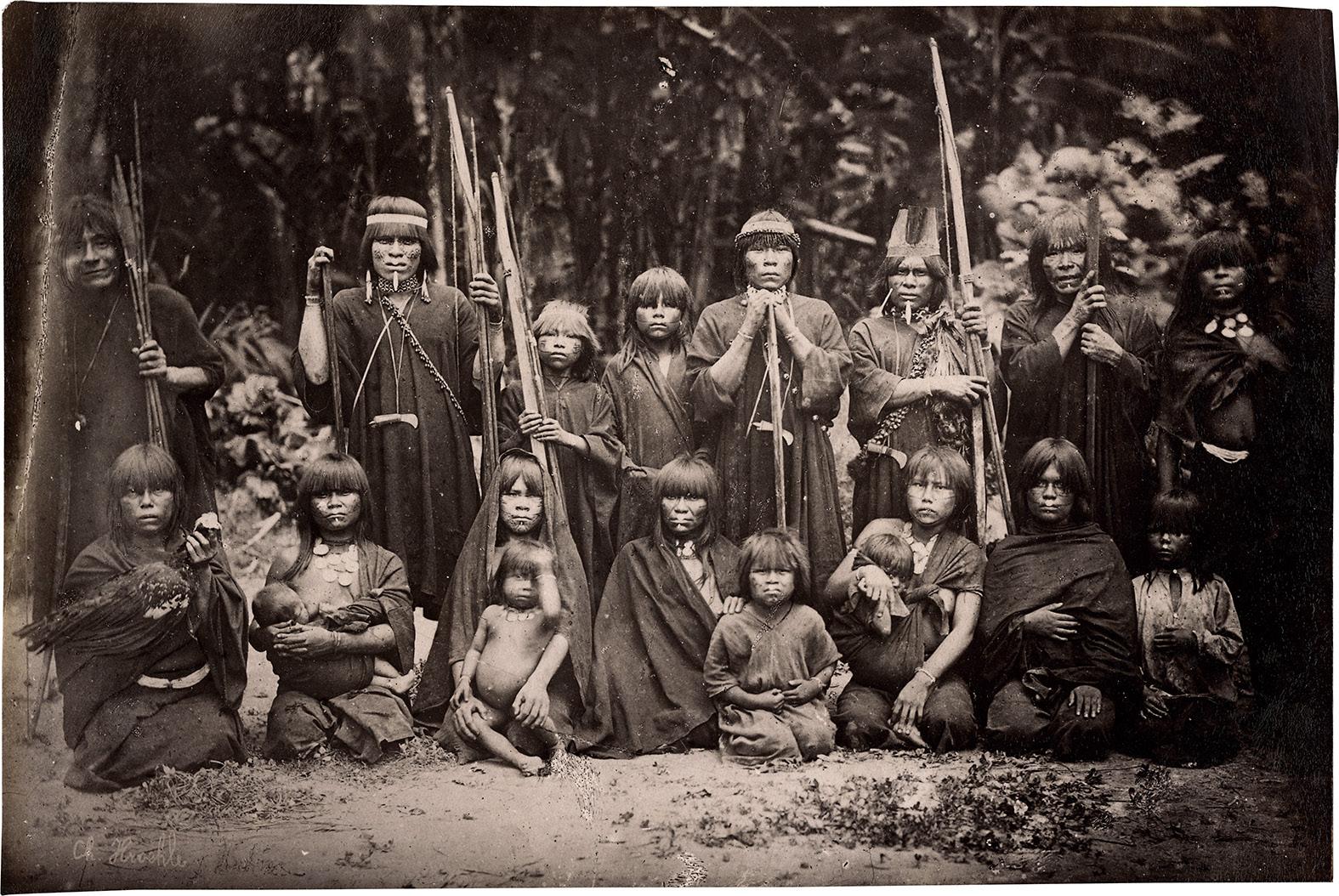

amazonia

4006 Photographer: Charles Kroehle (1867-1902). Indigenous life in the Peruvian Amazon. 1890s. 7 albumen prints. Each ca. 15 x 22 cm. Some signed “Ch. Kroehle” in the negative in lower margin.
4.000 €
This group of photographs by Charles Kroehle documents daily life and ceremonial practices among Indigenous communities of the Peruvian Amazon, likely the Shipibo or related Panoan-speaking peoples. Included are multi-generational group portraits taken in forest clearings, family scenes before palm-thatched dwellings, and canoeing on the river. Other images depict hunters with spears, women with infants, a crocodile hunting scene showing Indigenous people with Charles Kroehle and Georg Huebner, as well as portraits of men with bow and arrows. – With: 1 albumen print showing Andean highland people.
4007 Photographer unknown. Charles Kroehle (1867-1902) with Peruvian mummy; Peruvian mummy. 1890s. 2 albumen prints. Each circa 16 x 12 cm.
1.000 €
These two rare photographs depict Charles Kroehle alongside a preserved Peruvian mummy, as well as a separate image of the mummy itself. Likely taken during one of Kroehle’s expeditions in the 1890s, the photographs reflect the 19th-century European fascination with indigenous cultures and archaeological artifacts in South America.
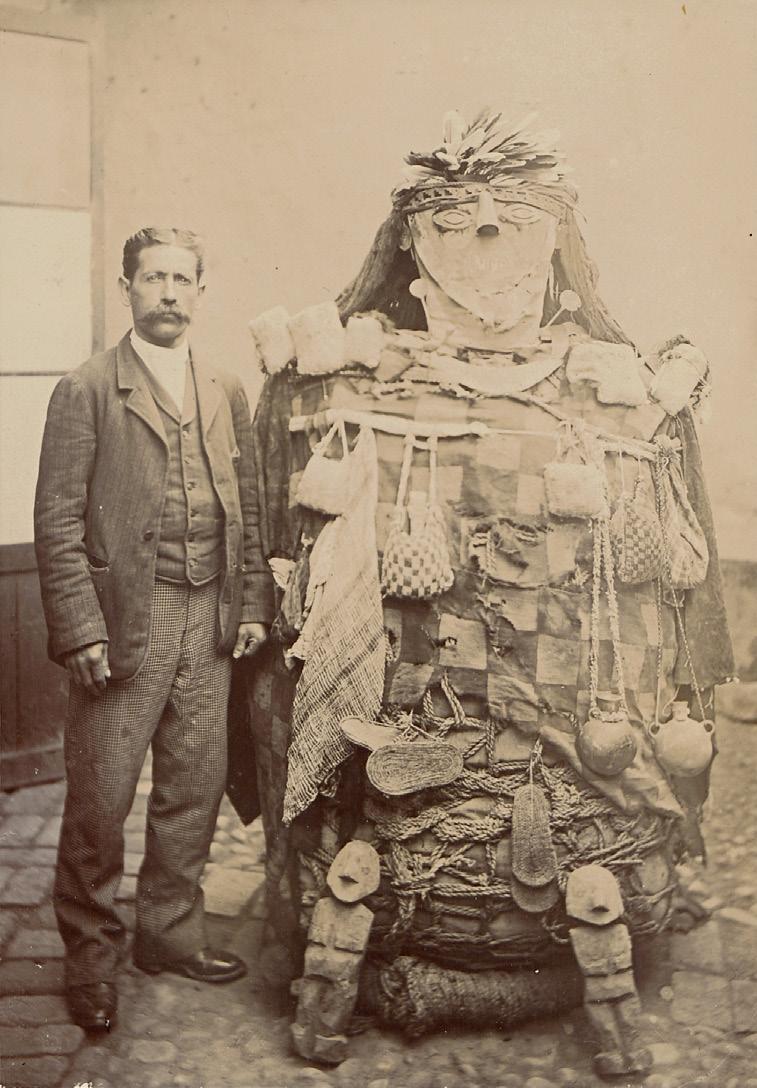

4008
domenico anderson (1854-1938)
4008 View of the Forum Romanum. Circa 1900. Sepia-toned gelatin silver print. 60 x 87 cm. Photographer‘s blind stamp in lower right corner, framed under glass in contemporary wooden frame (73 x 100 cm).
800 €
The son of the pioneering photographer James Anderson, Domenico Anderson continued the business after his father‘s death and produced many large-format views of Rome.
ottomar anschütz
(1846-1907)
4009 Animal studies. 1885-88. 8 albumen prints, 6 mounted to board. Circa 9,5 x 14 cm or reverse and 14,5 x 19,5 cm. Each with photographer’s name, date and location in the negative and/or embossed in lower right/left on board.
900 €
4010 Equestrian training. 1884. 12 albumen prints. Each circa 14,7 x 19,5 cm. Each with photographer‘s blind stamp in lower right corner and number in the negative in lower left corner; each with photographer‘s stamp on the verso.
1.500 €
A striking series depicting a man in the process of training a horse, each image emphasizing the animal’s dynamic movement and muscular tension. The sequence captures subtle shifts in posture and gesture with remarkable clarity, conveying a strong sense of rhythm, control, and physical intensity.


eugène atget (1857-1927)
4011 Hôtel de Lusignan - 8 Rue Elzévir. 1901. Albumen print. 21,5 x 17,7 cm. Titled and numbered „ 4328“ by the photographer in pencil on the verso.
1.200 €
Prints of this image are in the collections of the International Center of Photography, New York and the Musée Carnavalet, Paris.
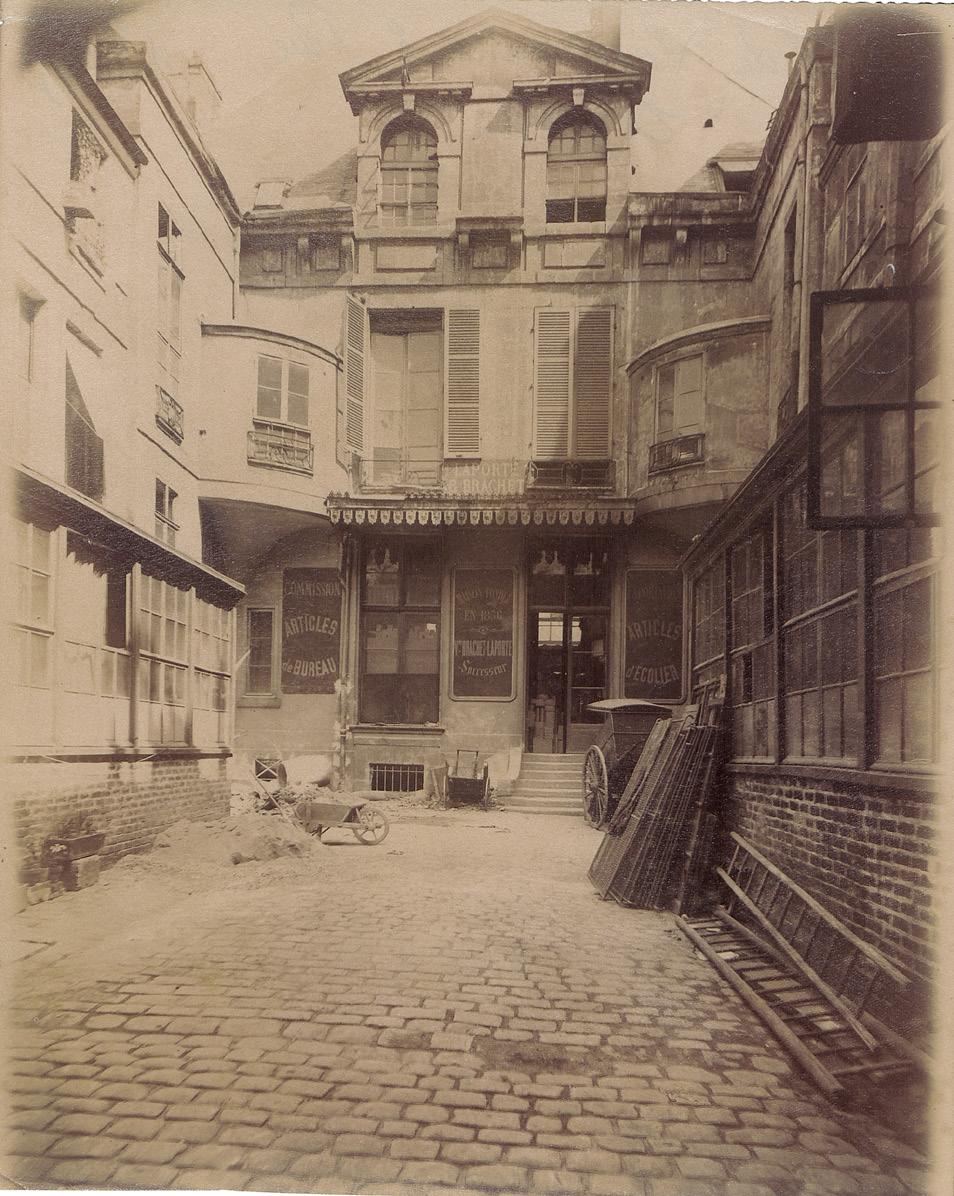

4012 Hôtel du Prevot - Passage Charlemagne. 1901. Albumen print. 21,6 x 17,8 cm. Titled and numbered „3871“ by the photographer in pencil on the verso.
1.200 €


édouard baldus (1813-1889)
4013 Vues de Paris en Photographie. 1855-1860. 26 albumen prints, mounted to album leaves. Each ca. 20 x 27 cm (31,5 x 42,5 cm). Each with the photographer‘s “E. Baldus” stamp below the image on the mount. Presented in contemporary full-leather folio album with gilt-stamped title “Vues de Paris en Photographie” and the arms of the City of Paris on the front board; spine with raised bands and gilt tooling.
8.000 €
A finely produced album comprising twenty-six large-format albumen prints of Parisian architecture and monuments by Édouard Baldus. Created between 1855 and 1860, at the height of Baldus’s career - when he was widely regarded as France’s leading architectural photographer - the album offers monumental views of Haussmann-era Paris, captured with remarkable clarity and compositional precision. The photographs span medieval, Napoleonic, and Second Empire structures, including Notre-Dame, the Arc de Triomphe, Place de la Concorde, and the Louvre, as well as now-lost landmarks such as the Palais de l’Industrie, the Tuileries Palace, and the old Hôtel de Ville. Elegantly bound in a full leather folio with the gilt-stamped title and arms of the City of Paris, the volume exemplifies Baldus’s mission to preserve France’s architectural heritage while celebrating the modernization of the capital under Napoleon III. Complete and well-preserved examples of such albums are increasingly rare







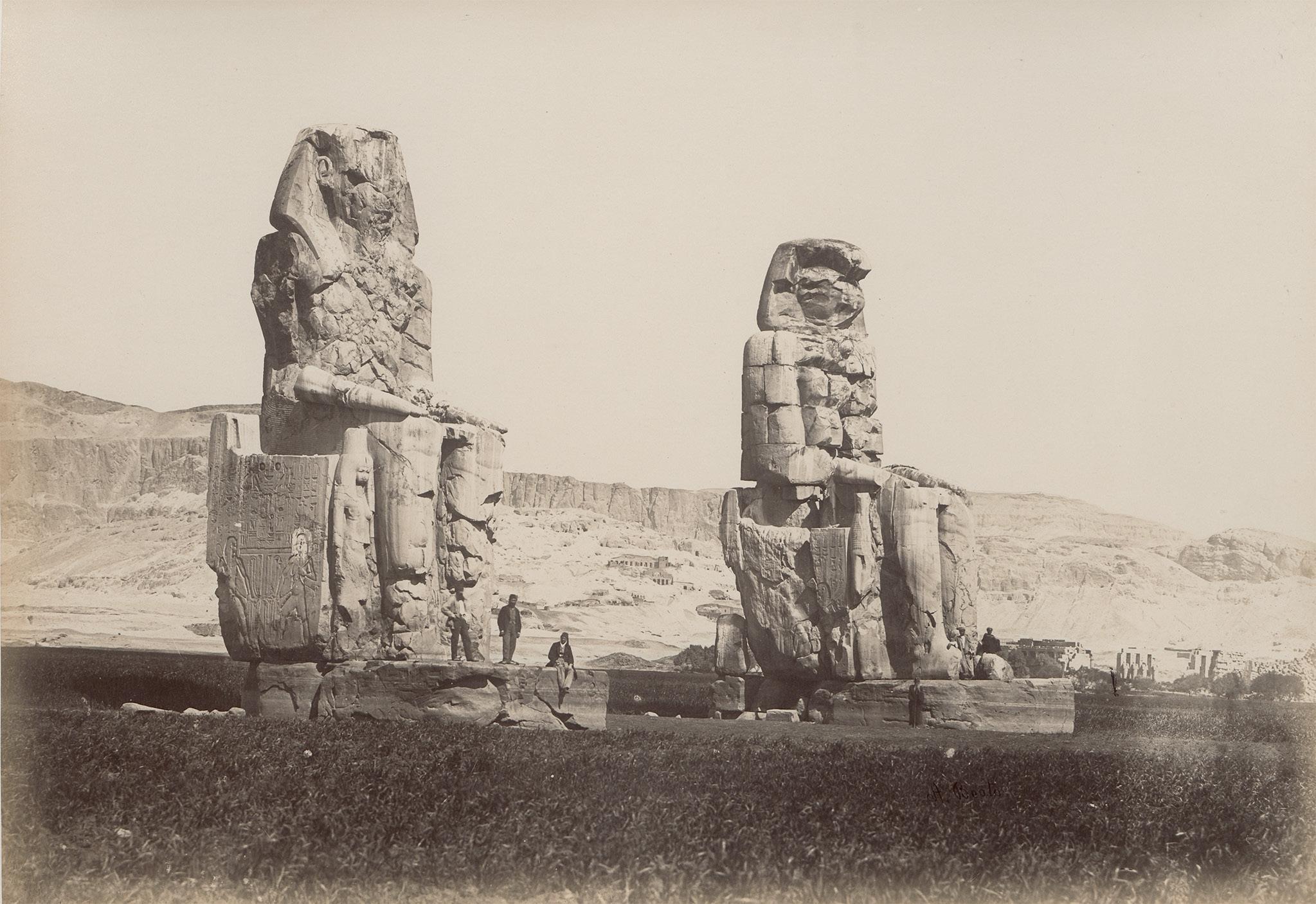

antonio beato (1825-1906)
4014 Views of Egypt. 1860s. 26 albumen prints, mounted to board. Each ca. 26 x 38 cm or reverse (41,5 x 51,5 cm). Each with photographer’s signature in the negative in lower margin and handwritten caption on label below the image on the mount. Presented in canvas clamshell box.
1.800 €
This group of photographs by Antonio Beato offers a representative survey of his early work in Egypt during the 1860s. The images encompass major archaeological and monumental sites along the Nile Valley, including the Pyramids of Giza, the Great Sphinx, the Temple of Karnak, Medinet Habu, Philae, the Colossi of Memnon, and the rock temples of Abu Simbel. Notably, the selection also features rare views of lesser-photographed locations such as Qurna and detailed studies of sculptural reliefs. Marked by their careful composition, deep tonal richness, and atmospheric clarity, Beato’s photographs stand among the most enduring visual documents of Egypt’s ancient architecture in the 19th century.
Lit.: Ferri, Antonio, ed. Il fotografo dei faraoni: Antonio Beato in Egitto 1860-1905. Bologna: Pendragon, 2008.
auguste belloc (1800-1867)
4015 Reclining nude. Circa 1858. Albumen print on board. 14,6 x 19,2 cm (16,4 x 21,5 cm). With number „34“ etched into negative.
1.000 €
Auguste Belloc began his career as a painter of miniatures and watercolors before turning to photography, where he quickly gained recognition for his mastery of the daguerreotype and contributions to early color stereoscopy. He later became known for his poetic nude studies, which combined classical aesthetics with technical finesse. Today, his work is held in major international collections, including the Museum of Modern Art, The Metropolitan Museum of Art, the Musée d’Orsay, and the Museum of Fine Arts, Boston. A variant of this print is held in the collection of the Museum of Modern Art, New York.

4015



guillaume berggren (1835-1920)
4016 Views of Constantinople. 1870s-1890s. 16 albumen prints, mounted to boards. Each ca. 21 x 27 cm (31,5 x 39,5 cm) or reverse. All but one with titled negative number and photographer’s name “G. Berggren” in the negative in the lower margin.
1.000 €
A rich and varied group of late 19th-century views of Constantinople by the Swedish-born photographer Guillaume Berggren, who established one of the most successful studios in the city. The photographs include wide city panoramas and detailed views of key landmarks such as the Hagia Sophia, Dolmabahçe Palace, the Galata Bridge, and the city walls, as well as animated scenes of everyday life along the Bosphorus. Among them is a striking image of a large military formation assembled in front of the Nusretiye Mosque, offering a rare glimpse into the ceremonial practices of the Ottoman Empire. Characterized by strong compositions and crisp detail, Berggren’s images reflect both documentary precision and an eye for atmospheric and architectural nuance.
4017 Panorama de Constantinople. 1880s. Panorama comprising 8 albumen prints. Each circa 22 x 16 cm (entire size circa. 22 x 134 cm). Mounted to original boards, joined at the folds with linen tape, housed in the original burgundy half-leather and canvas portfolio with embossed title and ornamentation. With unidentified dedication in ink on rear endpaper.
1.200 €
Taken from an elevated vantage point in Galata - likely near or from the Galata Tower - this carefully sequenced panorama forms a sweeping vista of the city’s historic waterfront. Landmarks such as the Hagia Sophia, Topkapi Palace, Süleymaniye Mosque, Yeni Cami, Nuruosmaniye Mosque, and the distant Beyazit Tower appear in rich architectural detail, along with the shoreline of the Bosphorus and the densely layered urban fabric of the old city.

berlin
4018 Photographer: Otto Raschdorff (1854-1917). Panorama von Berlin . Circa 1903. Panorama consisting of 10 collodion paper prints, mounted to original boards. Each circa 23 x 28,5 cm (entire size 23 x 286 cm). Joined at the folds with linen tape, with marbled front endpapers, housed in the original gray canvas portfolio with gilt-stamped title and ornamentation.
2.000 €
An unusually large panoramic view of Berlin, taken from the Neuer Dom while still under construction, as evidenced by the visible scaffolding. The sweeping vista captures the urban fabric of the rapidly expanding imperial capital in the early 20th century. Minor misalignments at the print joins result in some architectural elements appearing twice, but the overall visual impact remains cohesive and striking.
brazil
4019 Photographers: Marc Ferrez (1843-1923), Augusto Riedel (1836-1877), and others. Views of Brazil. 1860s-1880s. 10 albumen prints, mounted to board. Each between 14,5 x 21,5 cm and 19 x 25,5 cm (26,3 x 33,2 cm) or reverse. Most annotated in pencil on the mount; some with captions and dates in black ink on the mount.
1.800 €
This group of photographs includes sweeping views of Rio de Janeiro with landmarks such as Sugarloaf Mountain, the Candelária Church, and Rua do Ouvidor; views of Salvador and its hillside architecture; scenes from the province of Minas Gerais with farm buildings and mule trains; as well as botanical gardens, waterfalls, and bustling port towns.

william carrick (1827-1878)
4020 Portraits of Russian military officers, monks, pilgrims, street sellers, craftsmen, nuns, farmers and ethnic types. 1860s. 48 albumen prints, mounted to original studio carte-de-visite. Each circa 8,5 x 5,5 cm. Each with photographer’s name printed below the image; verso with studio logo and address. Inserted in gilt-edged album window mats, each captioned and numbered in red ink beneath the image. Bound in half-leather lacquered album with a hand-painted genre scene on the front cover.
1.200 €
The Scottish-Russian artist and photographer William Carrick was born in Edinburgh and raised in Kronstadt. In 1844, his family moved to St. Petersburg, where he enrolled at the Imperial Academy of Arts to study architecture. During a brief return to Edinburgh in 1857 to deepen his knowledge of photography, Carrick met the photographic technician John MacGregor. The two returned to Russia together and established a studio in St. Petersburg, with MacGregor serving as Carrick’s assistant. In 1871, the pair undertook a month-long journey through the Simbirsk province, producing a remarkable series of photographs depicting Russian and Mordovian peasants. Popular with contemporary tourists, these images are now exceptionally rare . The album presented here opens with portraits of Tsar Alexander II and Empress Maria Alexandrovna
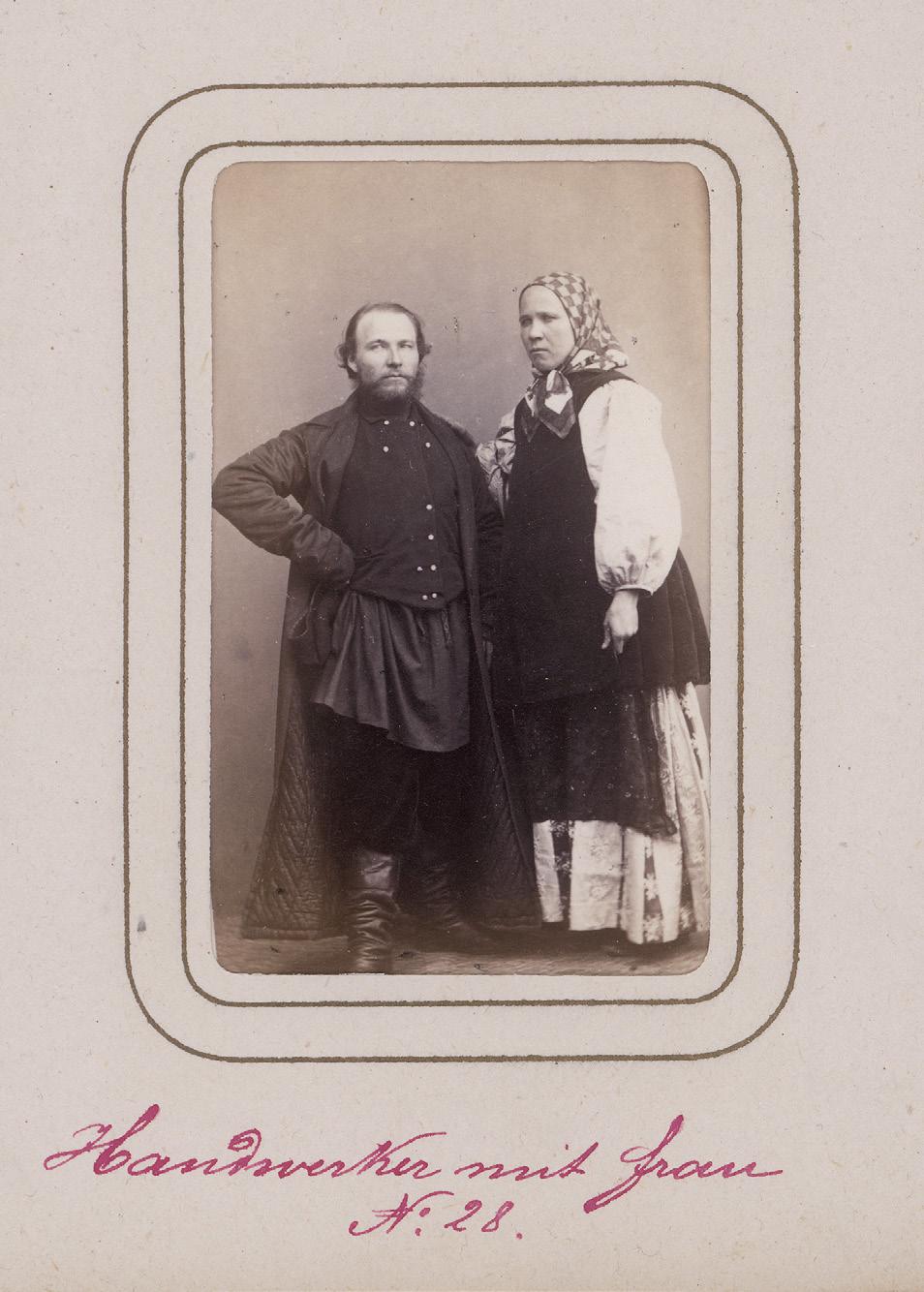



ceylon
4021 Photographer: J.D. Herbert (active ca. 1860-1885). Sinhalese temple dancers, chiefs, monks, craftsmen, and street performers. 1870s-1880s. 10 albumen stereoviews, mounted to yellow card stock. Each ca. 8,5 x 17,5 cm. With photographer’s studio stamp on the verso.
500 €
4022 Photographers: Skeen & Co. (active ca. 1860-1890), Scowen & Co. (active ca. 1870-1890), and unknown. Portraits of Tamil dignitaries and Ceylonese subjects. 1880s. 5 albumen prints, some mounted to boards. Between 21 x 26 cm and 30,5 x 21,5 cm. Some with handwritten captions in pencil, one with the photographer’s studio information in the negative in lower margin.
500 €
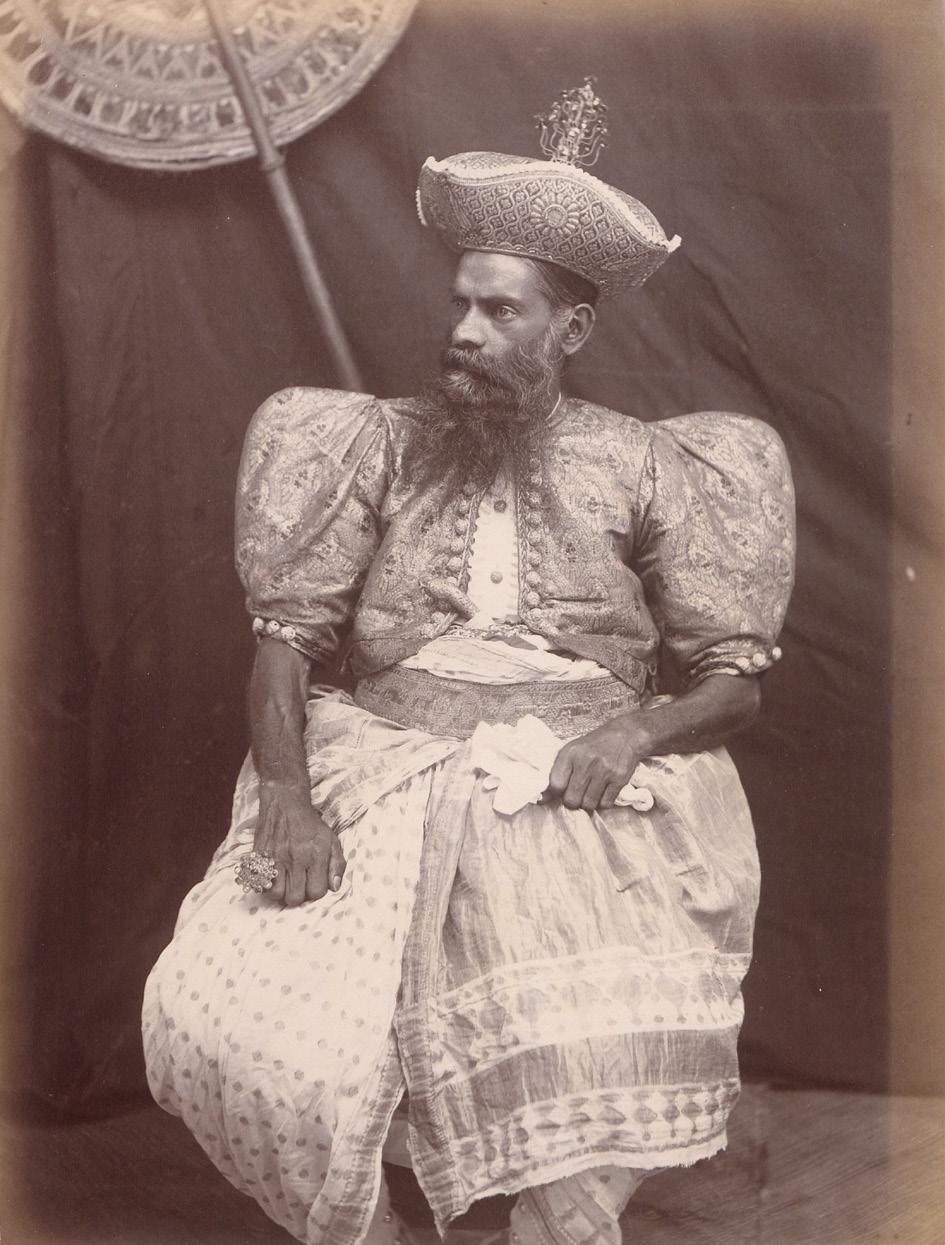

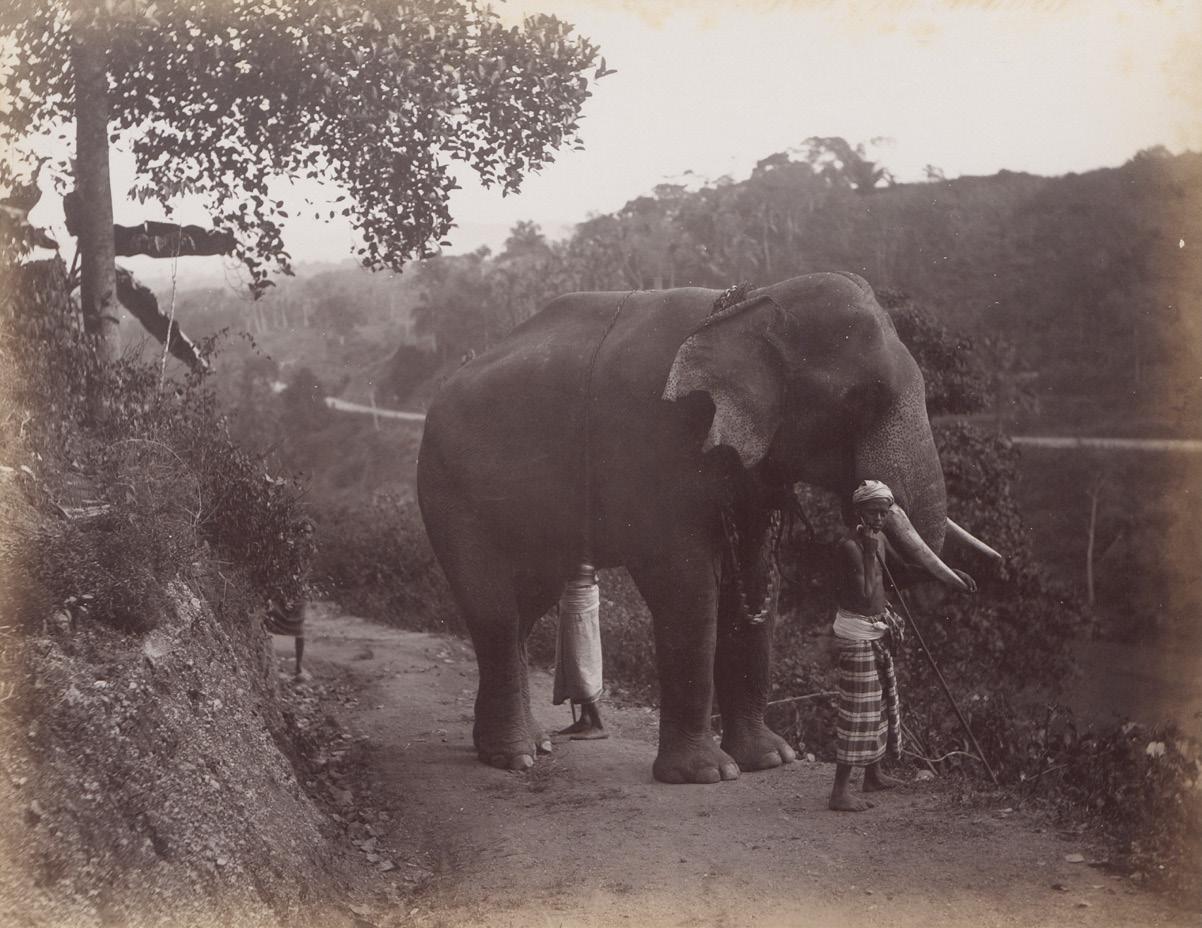
4023 Photographers: Joseph Lawton (active ca. 1870-1900), Scowen & Co. (active ca. 1870-1890), C.A. & C. (active ca. 1880-1900), and unknown. Scenes and portraits from colonial Ceylon. 1880s-1890s. 5 albumen prints and 1 collodion print. Each ca. 22 x 28 cm. Some with the photographer‘s studio information in the negative in lower margin.
500 €
4024 Photographer: Skeen & Co. (active ca. 1860-1890), Scowen & Co. (active ca. 1870-1890). Views of Ceylon. 1880s. 12 albumen prints, mounted to boards. Each between 21 x 27,5 cm (22,5 x 29,5 cm) and 21,5 x 28 cm (25 x 31,5 cm). Some with the photographer‘s studio information in negative in lower margin.
750 €
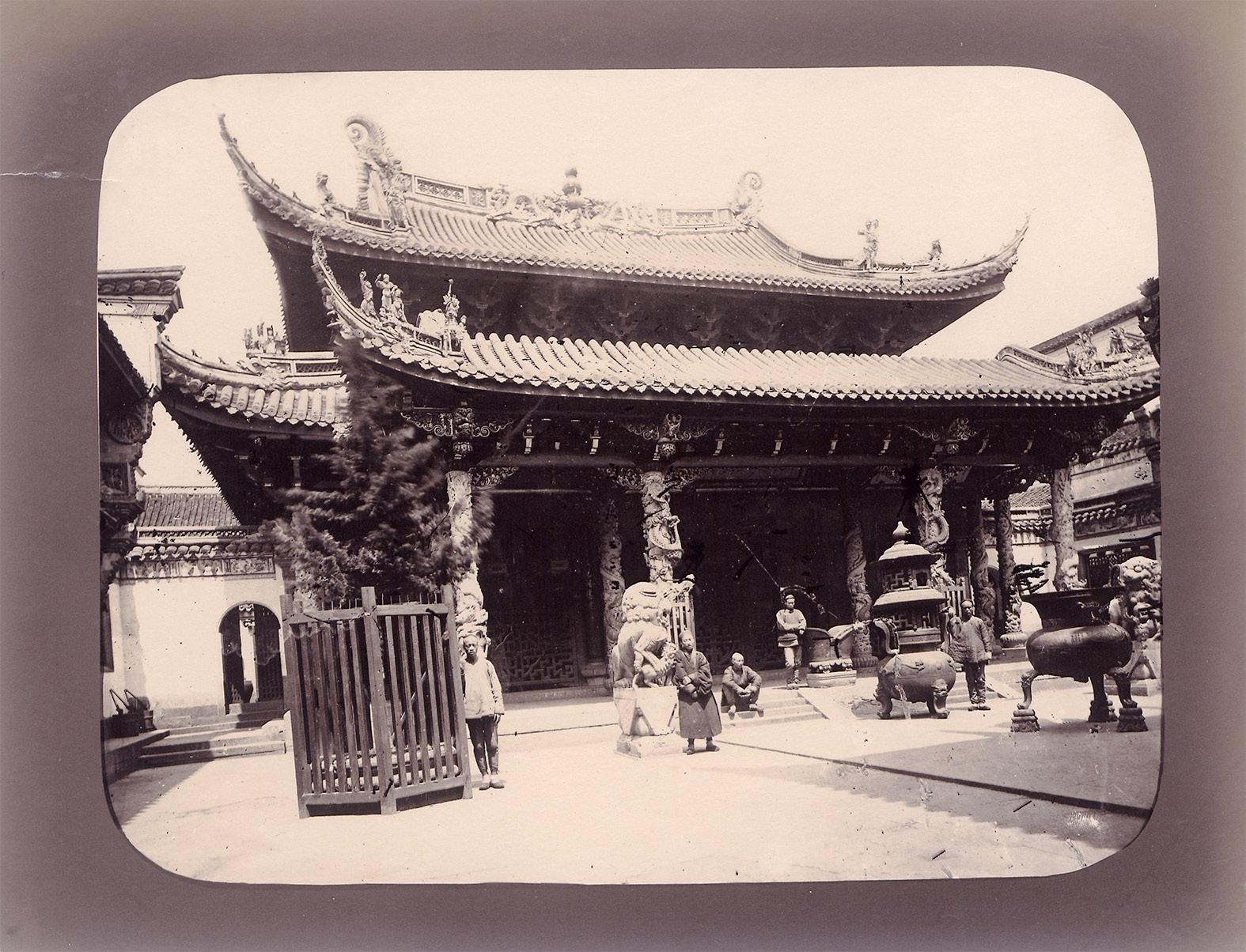

china
4025 Photographers: William Saunders (1832-1892), Henry Cammidge (active ca. 1880-1910), and unknown. Views of Shanghai. 1870s-1900s. 9 albumen prints. Each between 19,5 x 25,5 cm and 22 x 28 cm. Some annotated in the negative or in pencil on the verso.
1.200 €
This group of photographs offers a richly detailed visual record of Shanghai from the 1880s to the early 1900s. Included are views of the Bund with its colonial-era architecture, the Garden Bridge spanning Suzhou Creek, and the entrance gate to the Yu Garden. Additional images depict the Willow Pattern Tea House, the Tian Fei Gong temple, bustling scenes along Nanjing Road, and traditional canal-side dwellings.


4026 Photographer unknown. Views of Beijing and Shanghai. 1870s-1880s. 15 albumen prints, mounted to board. Each ca. 21,5 x 27 cm (32,5 x 44 cm). Captioned in blue ink below the image on the mount.
1.200 €
This selection of photographs provides a visual record of Beijing and Shanghai in the late 19th century. The Beijing scenes include the Temple of Heaven, distant views of the Forbidden City, and stretches of the city walls with their monumental gates. In Shanghai, the images show the Bund, walled compounds, commercial buildings along the canals, and everyday street activity, offering insight into urban life during the Qing dynasty.


4027 Photographers: Lai Afong (ca. 1839-1890), Pun Lun Studio (active ca. 1864-1907), and unknown. Views of Hong Kong. 1880s. 11 albumen prints. Each between 19,5 x 25,5 cm and 21,5 x 27,5 cm. Some annotated in pencil on the verso.
1.200 €
This remarkable group of photographs captures main sites of colonial-era Hong Kong in the late 19th century, including Victoria Harbour, Queen’s Road Central, St. John’s Cathedral, the Zoological and Botanical Gardens, as well as the iconic stone steps of Pottinger Street with sedan chair and rickshaw bearers.
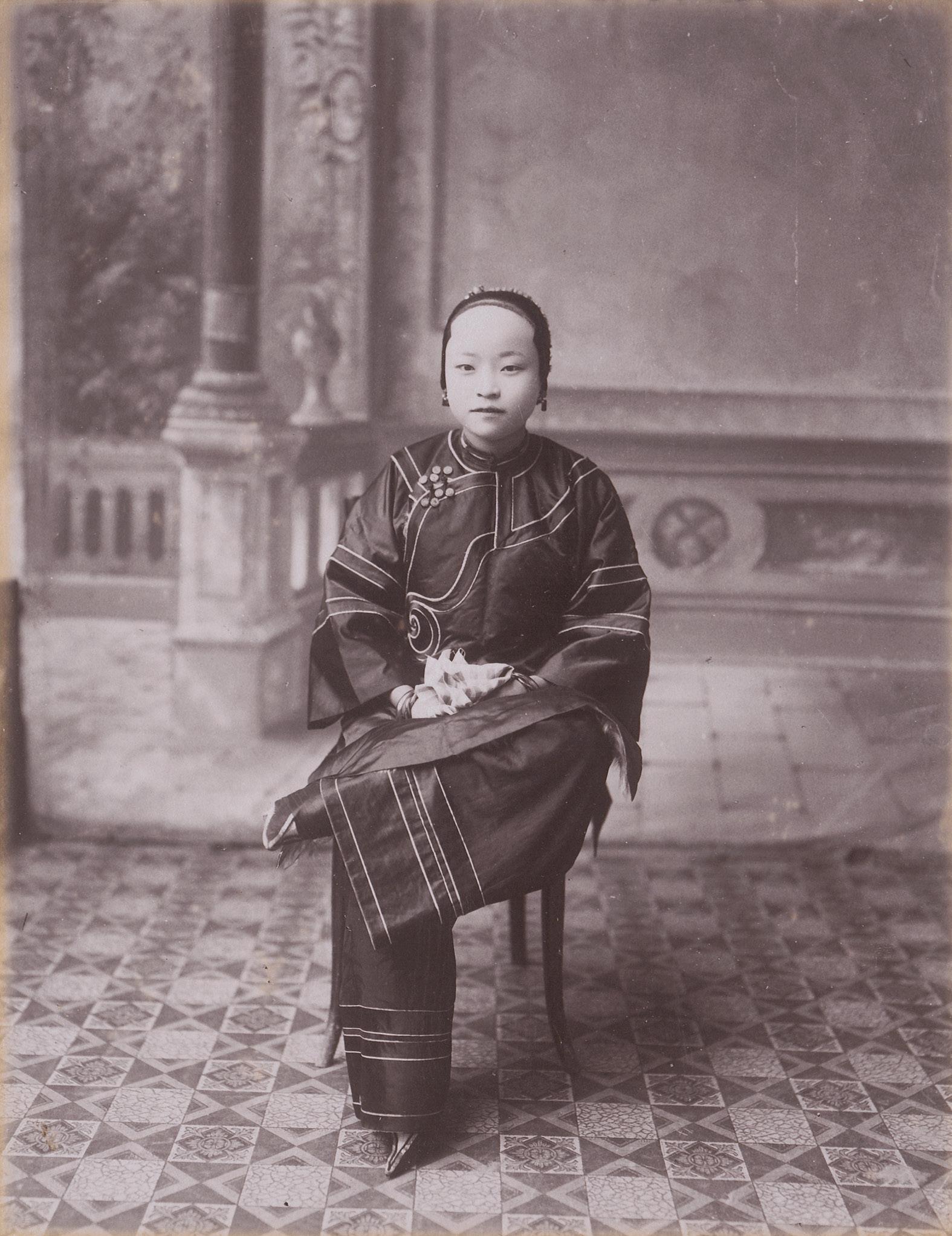
4028 Photographers: Lai Afong (1839-1890), Sze Yuen Ming & Co. (active ca. 1870-1910), and unknown. Views of Southern China. 1880s-1900s. 15 albumen prints, mounted to board. Each ca. 26,5 x 21 cm or reverse (38,5 x 31 cm). Some annotated in ink below the image on the mount.
1.000 €
Taken across several locations in southern China, this group includes views and portraits likely made in and around Canton (Guangzhou), Hong Kong, Shanghai, and Macau in the late 19th century. The photographs depict pagodas, temple grounds, stone bridges, the Willow Pattern Tea House, Tianfei Gong temple, and streets such as Queen’s Road and Boone Road. Also featured are village scenes, harbor areas, and studio portraits of Chinese women and girls in traditional dress, some with bound feet.

courret hermanos
(Eugène & Aquiles Courret, active 1863-1935)
4029 Souvenirs de l’Ile Tahiti et des Marquises. 1863. 21 albumen prints, mounted to album pages. Each ca. 11 x 15,5 cm or reverse (22 x 29 cm). Each with “Courret Hermanos Fotógrafos Calle Mercaderes 197, Lima” blind stamp on the mount, annotated in black ink below the image. Bound in green half-leather album with gilt-stamped title „Souvenirs de l’Ile Tahiti et des Marquises“ in rhombus shaped cartouche on front cover. Housed in a custom clam shell box covered in green faux-leather with mounted printed title label bordered by four diamond-shaped wooden inlays (entire size 30 x 41 cm).
5.000 €
Compiled shortly after the founding of the Courret Hermanos studio in Lima in March 1863 by French-born brothers Hippolyte and Eugène Courret, this rare album presents one of the earliest photographic surveys of Tahiti and the Marquesas Islands. Within months of establishing their studio, the brothers embarked on an expedition to the South Pacific, arriving in Tahiti in September that same year. Their photographs strike a balance between studio-style portraiture and documentary views, capturing full-length images of Tahitian and Marquesan men and women - some in traditional dress, others in Western attireas well as expansive scenes of Papeete’s streets, including the royal palace of Queen Pômare IV, the colonial hospital, and Rue de Rivoli. Views from Nuku Hiva include Taiohae’s government buildings and Fort Collet. – With: 7 carte-de-visite portraits of Tahitians.

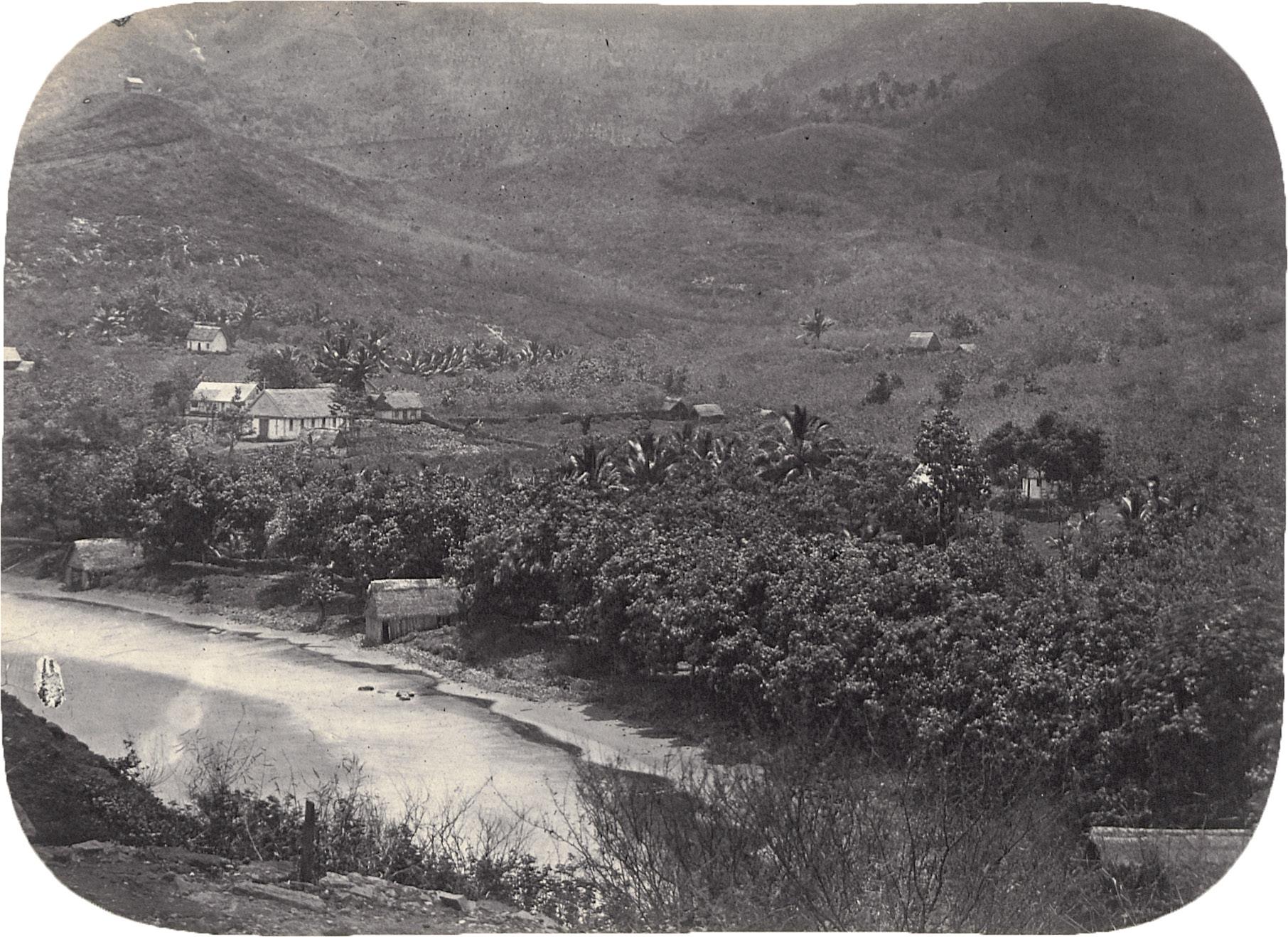

daguerreotypes
4030 Photographer: Albert Sands Southworth (1811-1894) and Josiah Johnson Hawes (1808-1901).
Portrait of a woman. Mid-1850s. Quarter plate, slightly tinted daguerreotype in leather case. 9 x 7 cm (11,5 x 10 cm).
1.500 €
Southworth & Hawes, the pioneering Boston-based daguerreo type partnership of Albert Sands Southworth and Josiah Johnson Hawes, set new standards for photographic portraiture in mid-19th-century America. Renowned for their refined lighting, elegant compositions, and ability to capture psychological depth, their portraits reflect a rare fusion of technical mastery and artistic sensibility.
Lit.: Brian Wallis, Grant B. Romer, eds. Young America: The Daguerreotypes of Southworth & Hawes. Göttingen: Steidl, compare ill. p. 1555 and 1556 for images featuring the same chair.

4031 Photographer: Eduard Wehnert (1811-1847).
Portrait of a mother with her daughter. Circa 1844. Quarter-plate daguerreotype (plate size circa 10 x 8 cm). With original gilt-highlighted ornamental paper surround with photographer‘s printed name, taped behind glass with gilt paper band.
900 €
In 1845, Eduard Wehnert married Bertha Wehnert-Beckmann, widely recognized as the first professional female photographer in Germany. Active in the early 1840s, she played a pioneering role in the history of photography. Daguerreotypes by Eduard Wehnert himself are exceedingly rare, and seldom appear on the market.

danzig
4032 Photographer: A. Ballerstaedt (active ca. 1865-1880). Views of Danzig. Ca. 1870s. 22 albumen prints, mounted to card. Each between 16 x 22 cm and 19 x 24 cm or reverse (28 x 37 cm). All with photographer’s blind stamp in lower margin: “A. Ballerstaedt / Danzig / Photograph. Atelier”; annotated in pencil on lower margin of recto as well as in black ink on verso in a contemporary hand.
1.500 €
A striking visual record of late 19th-century Danzig (now Gdansk) , this group includes views of significant civic and architectural landmarks of the historic Hanseatic city. Depicted are the Artus Court (Artushof), the Golden Gate (Langgasser Tor), the Great Armory (Großes Zeughaus), the Green Gate (Grünes Tor), the Old City Hall, and the Marienkirche from various perspectives, including panoramic views of the historic center. Many views are animated with horse-drawn carriages and passersby, offering a glimpse of urban life in the Prussian-era city.
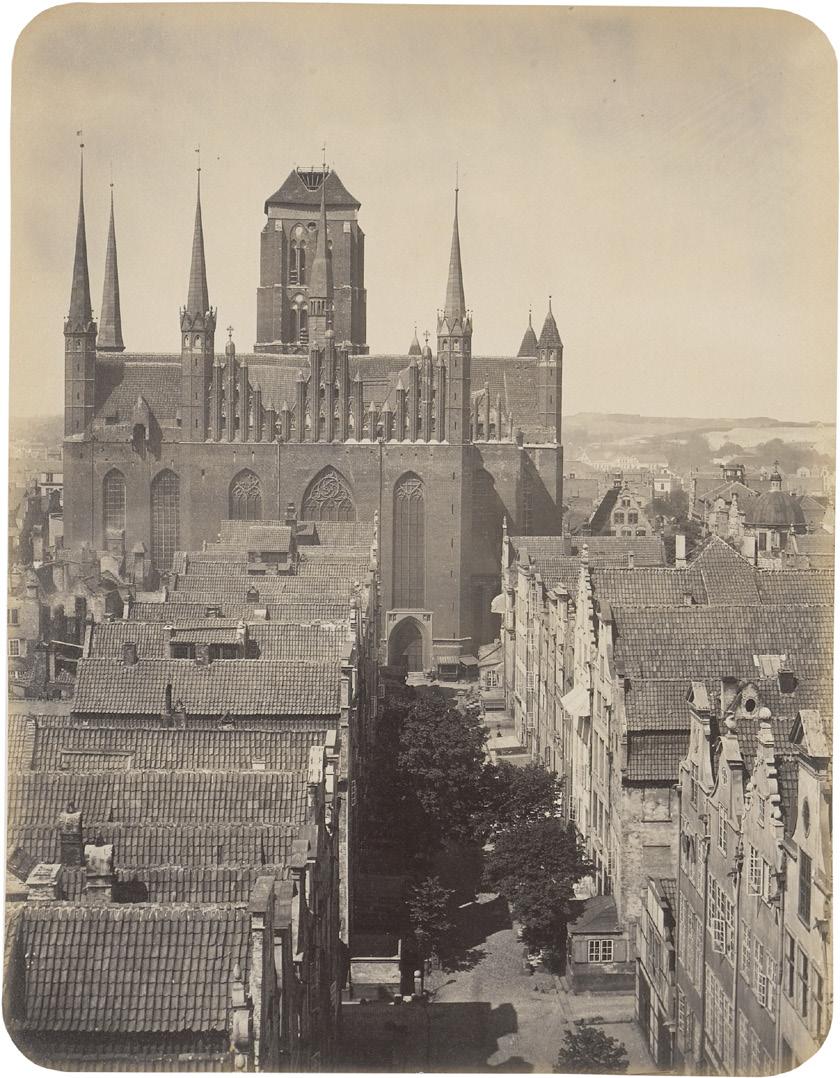
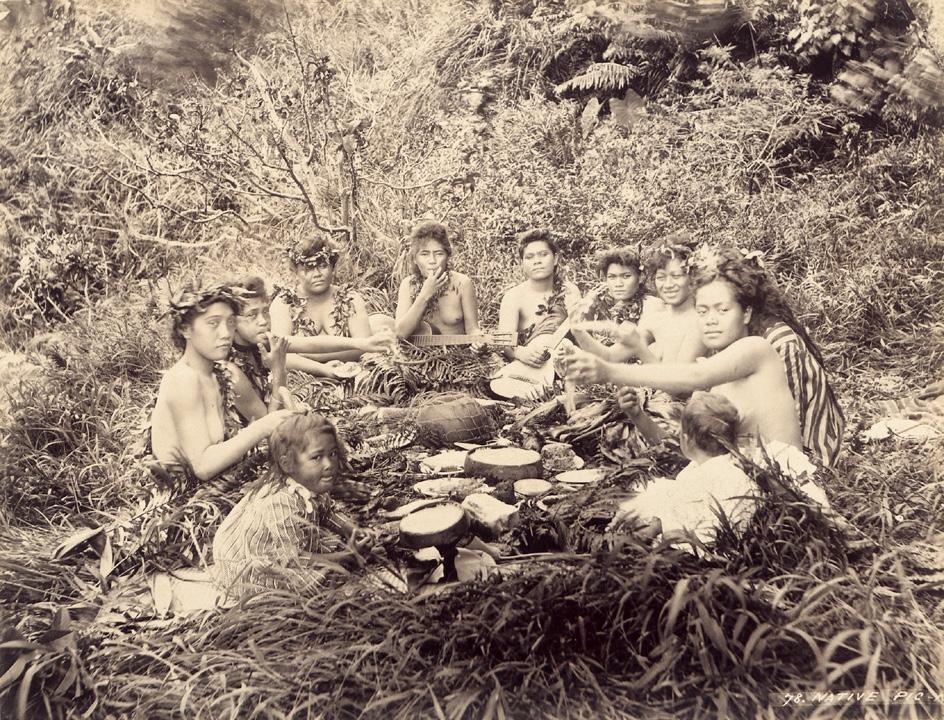
frank davey (1860-1922)
4033 Hawaiians eating a meal; Two Hawaiians with their boats, Diamond Head Beach, Oahu. 1890s. 2 albumen prints. 18,2 x 23,7 cm. Each with number and caption in the negative in lower edge, each mounted to board.
600 €
London-born Frank Davey was a prolific photographer active in London, Paris, and later California. After leaving England in 1880, he eventually settled in Hawaii around 1897-1901, where he photographed Indigenous communities, island landscapes, and early surf culture. He is considered one of the first photographers to document surfing.
warren de la rue (1815-1889)
4034 Lunar photographs. 1858-1859. 7 stereoscopic albumen prints, mounted on red mounts with yellow card stock. Each ca. 8,5 x 17,5 cm. Printed captions on recto with photographer credit and publisher imprint “Enlarged and published by Smith, Beck & Beck” or “Charles Panknin, London”; versos with printed explanatory text on some cards, including series number, date of negative, and in some cases, age of the moon and libration in longitude and latitude.
600 €
Between 1858-1862, British astronomer Warren De La Rueworking at the Kew Observatory - used a custom-designed photoheliograph to capture detailed wet collodion negatives of the moon’s surface. The stereoscopic prints, produced by pairing negatives taken under different libration conditions, created a three-dimensional illusion of lunar topography when viewed through a stereoscope. Issued by leading scientific publishers such as Smith, Beck & Beck and Charles Panknin, the views were intended to make cutting-edge astronomical research accessible to both scientific and lay audiences.
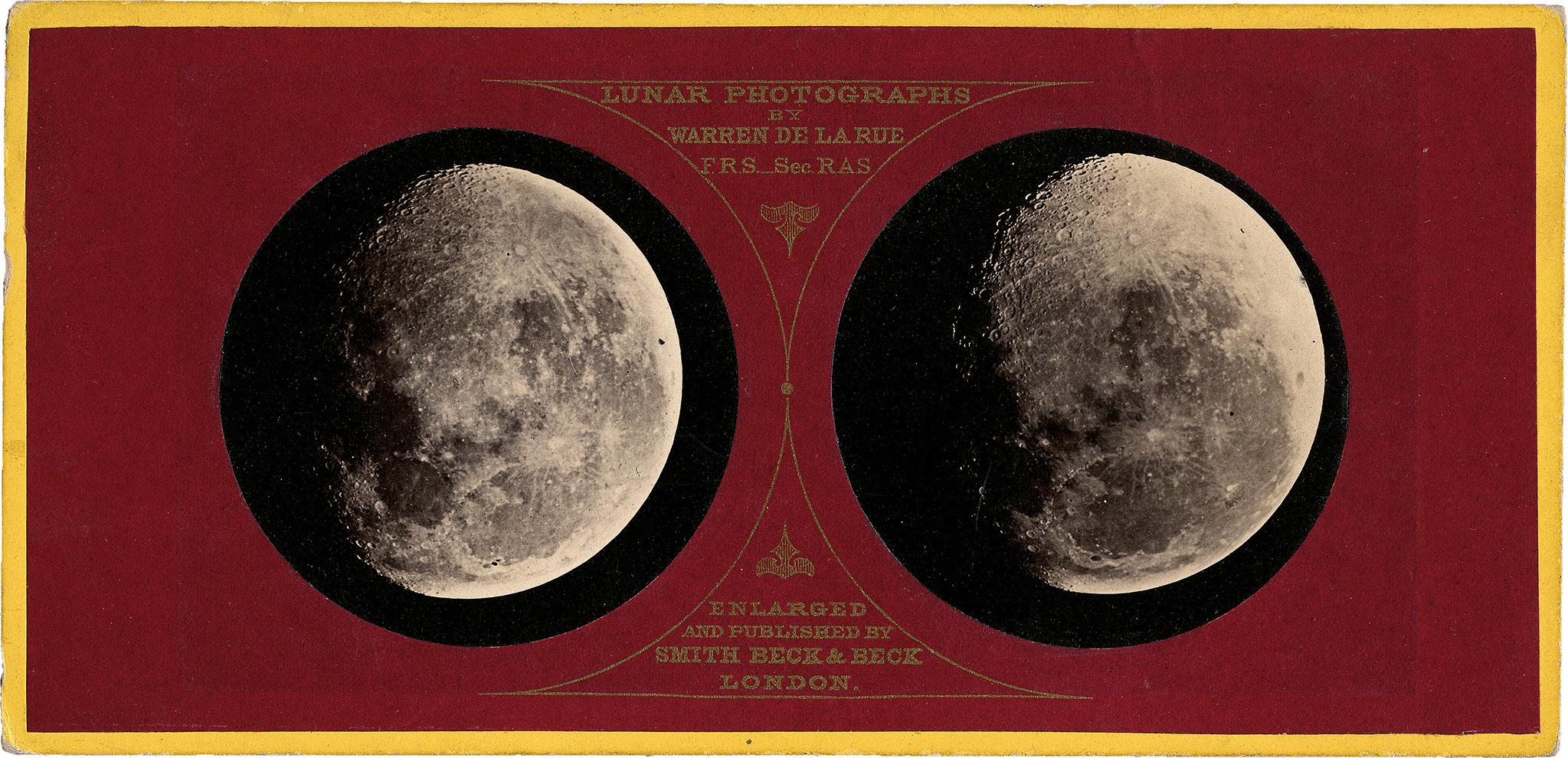
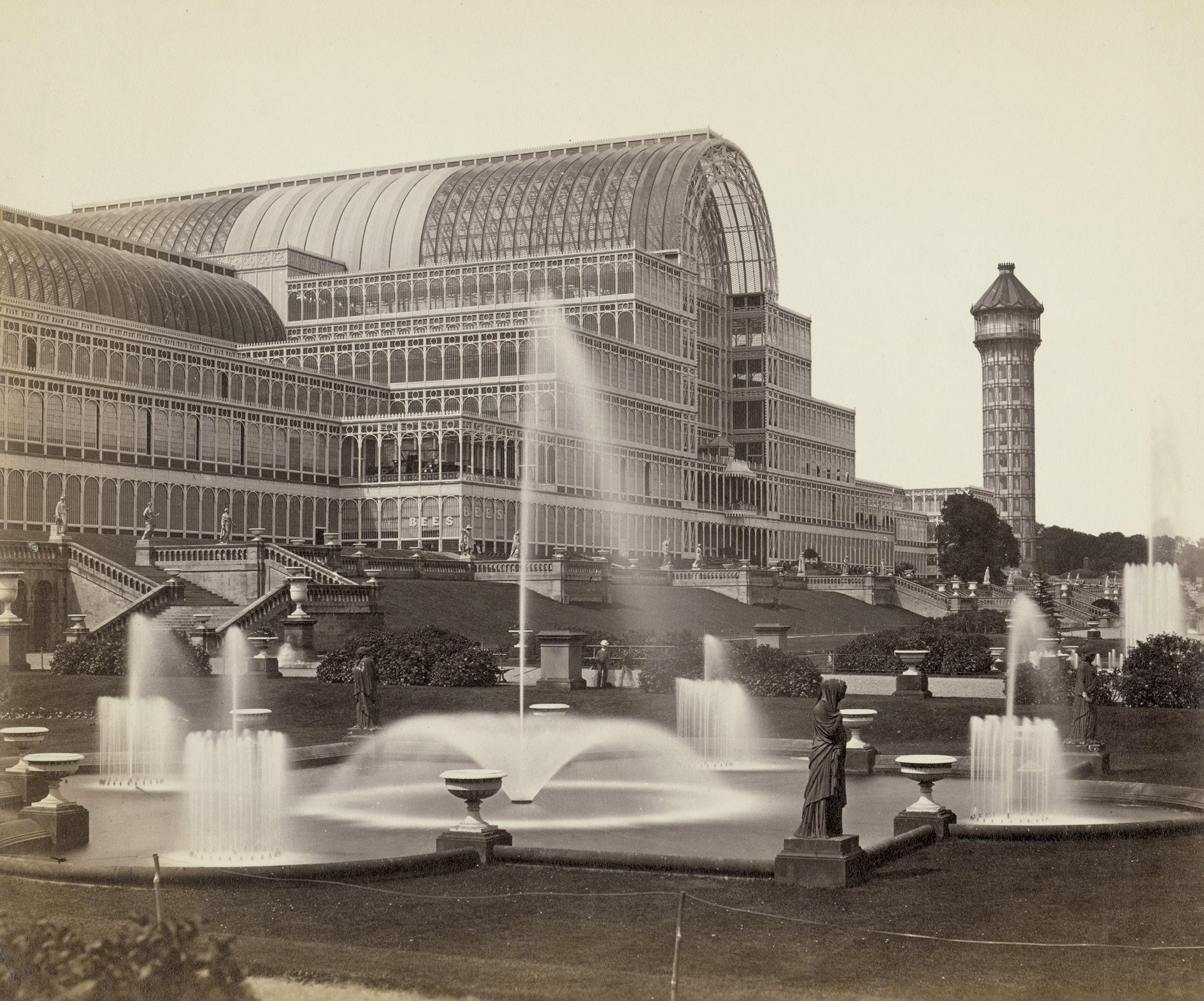
philip henry delamotte (1821-1889)
4035 The Crystal Palace at Sydenham. 1854. 3 albumen prints, printed early 1860s. 23,7 x 29 cm, 23 x 28 cm and 16,2 x 19,5 cm. Annotated in pencil on the verso.
1.000 €
This group comprises compelling views of the Crystal Palace at Sydenham shortly after its completion, including exterior views and an interior view featuring John Bell’s allegorical sculpture Una and the Lion, exhibited within the Palace’s grand halls.
exposition universelle 1867
4036 Photographer: Léon & Lévy (active ca. 1864-1890). Views from the Exposition Universelle, Paris. 1867. 77 albumen prints on carte-de-visite mounts. Each ca. 10,2 x 6,2 cm or reverse. Each with printed caption on the mount recto and studio stamp “Léon & Lévy, Succrs de Ferrier père & fils & Soulier, 113, Boulevard de Sébastopol, Paris. Vues Stéréoscopiques sur Verre de l’Exposition et de tous pays” on the verso.
600 €

4036

4037
roger fenton (1819-1869)
4037 Generals and regiments of the Crimean War from Photographic Pictures of the Seat of War in the Crimea. 1855. 12 salted paper prints, mounted to card. Each between 13,3 x 15,6 cm and 20 x 14,4 cm (60 x 44,5 cm). With captions and printed credit line on the mount: “Photographed by R. Fenton. Manchester, Published by T. Agnew & Sons, March 25th, 1856. London, P. & D. Colnaghi & Co., Paris, Moulin 23, Rue Richer. New York, Williams & Co.”
4.000 €
This group of photographs originates from Roger Fenton’s landmark publication Photographic Pictures of the Seat of War in the Crimea, issued by Thomas Agnew & Sons in 1856. Taken in 1855 during Fenton’s official commission to document the Crimean War, the images depict officers, military encampments, and scenes of camp life with formal clarity and compositional restraint. Deliberately avoiding the depiction of violence or suffering, Fenton’s photographs embody the Victorian ideals of stoicism and dignified heroism, and were instrumental in shaping contemporary public perception of the war.


theodor fontane (1819-1898)
4038 Photographer: Emil Bieber (1878-1962). Portrait of Theodor Fontane. 1894. Vintage collodion print. 15 x 10,5 cm. Date stamp „1899“ in lower right corner, mounted to board.
750 €
This portrait by Emil Bieber shows the novelist and poet Theodor Fontane, who died in 1898, in his final years. Likely taken in 1894 , it is considered one of the last photographic likenesses of Fontane and reflects his established public persona at the end of a prolific literary life. The image captures the quiet dignity and introspection often associated with the author of Effi Briest and Der Stechlin



francis frith (1822-1898)
4039 Views of Egypt, Nubia, and the Holy Land. 1856-1860. 13 albumen prints, mounted to original mounts. Each ca. 15,5 x 22,5 cm (31 x 43,5 cm). Each titled in letterpress below the image; most signed and dated “Frith Photo 1857” in the negative.
1.200 €

vincenzo galdi (1871-1961)
4040 Seated nude with doves. Ca. 1910. Albumen print. 20 x 13,2 cm. Photographer’s “Proprietà Artistica: Vincenzo Galdi, Via Sardegna, 55, Roma” studio stamp on the verso.
1.200 €
A refined example of Galdi’s exploration of the female nude, this photograph exemplifies the artist’s distinctive blend of classical poise and fin-de-siècle sensuality. Active in Rome during the early 1900s, Galdi developed a photographic language informed by Symbolist aesthetics and the visual heritage of his mentor, Guglielmo Plüschow. Here, the presence of doves adds an allegorical dimension to the sitter’s contemplative pose, underscoring Galdi’s interest in mythic and erotic themes rendered with formal clarity.
4041 Standing nude with lilies. Ca. 1910. Albumen print. 20,8 x 12,2 cm. Photographer’s “Proprietà Artistica: Vincenzo Galdi, Via Sardegna, 55, Roma” studio stamp in purple ink on the verso.
1.200 €

4041
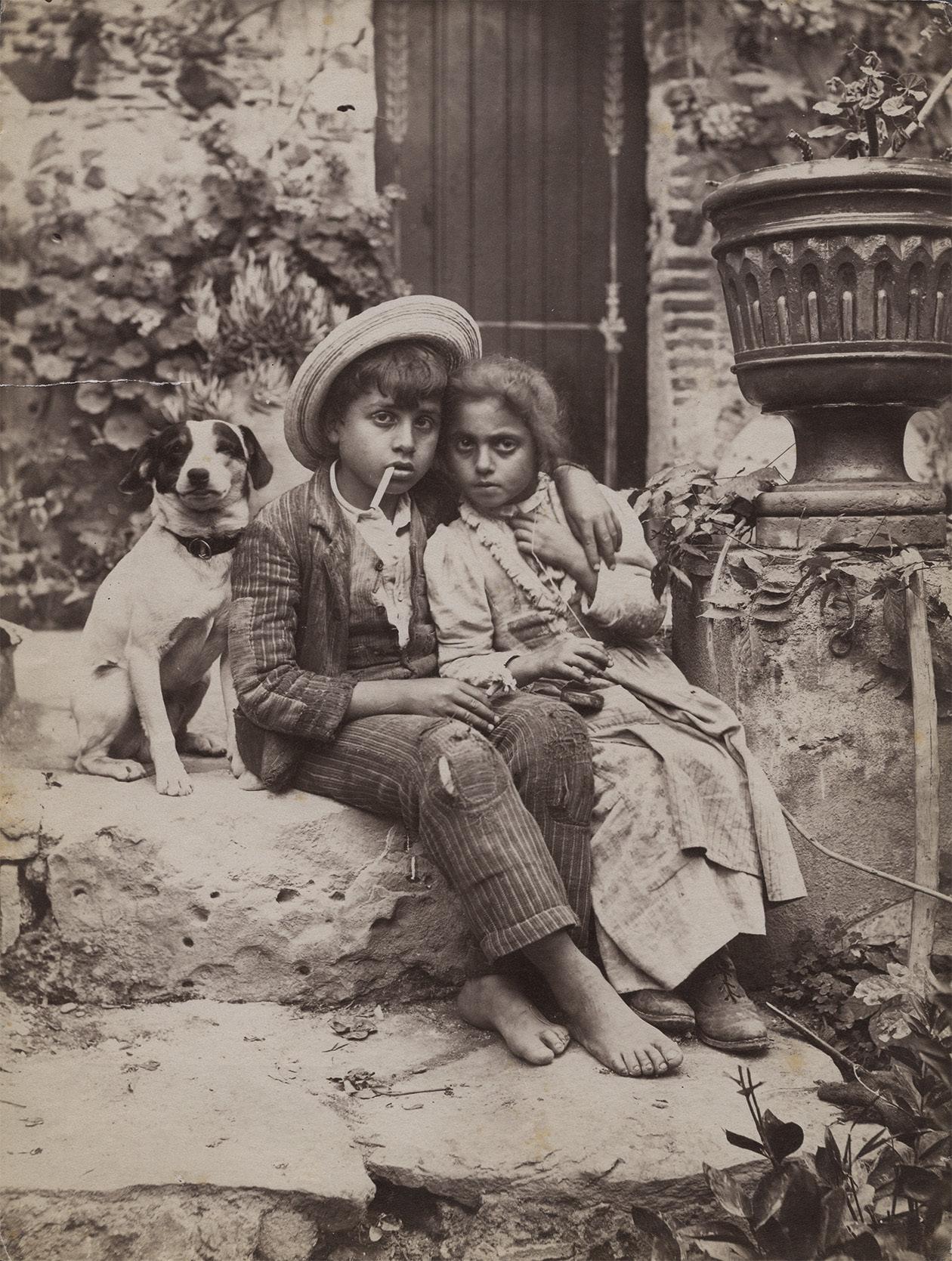



wilhelm von gloeden (1856-1931)
4042 Sicilian children with dog. 1904. Albumen print. 22,4 x 17 cm. Photographer‘s studio stamp, therein dated “25 FEB 1904” in purple ink and handwritten inventory number “2145” in blue crayon on the verso.
1.000 €
4043 Portraits of youths, Taormina. Circa 1890. 2 vintage albumen prints. 22,5 x 16,5 cm. Each mounted to board, annotated in pencil below image on mount.
1.500 €
4044 Arcadian scene with a group of nude youths on terrace overlooking the sea, Taormina. Circa 1890. Vintage albumen print. 16,5 x 23 cm. Mounted to board, annotated in pencil below image on mount.
1.500 €
4045 Cain. Circa 1900. Large-format photogravure on strong vellum paper, mounted to board. 31,5 x 23,8 cm (49 x 35,7 cm). Signed by the photographer in pencil in the lower left margin below the im age; title printed in the margin below the image.
3.000 €
One of von Gloeden’s most iconic and widely reproduced works, Cain stands out for its contemplative pose and allegorical weight. Blending classical references with fin-de-siècle symbolism, the image exemplifies the photographer’s refined use of natural light, idealized male form, and mythic undertones that helped shape his enduring legacy in art photography.
Lit.: Ulrich Pohlmann. Wilhelm von Gloeden: Sehnsucht nach Arkadien. Berlin: Nishen, 1987, ill. p. 37.

john beasley greene (1832-1856)
4046 Entrance to the second courtyard, Mortuary Temple of Ramesses III, Medinet Habu. 1854. Salted paper print, mounted to original card. 23,2 x 30 cm (47,4 x 61,7 cm). Signed and dated in the negative in lower right: “J.B. Greene 1854” and in lower left „I 31“.
1.800 €
Photographed during Greene’s 1854 expedition to Upper Egypt, this image shows the monumental entrance to the second courtyard of the Mortuary Temple of Ramesses III at Medinet Habu, on the west bank of Thebes. The structure’s massive stone blocks and carved hieroglyphic reliefs are captured in Greene’s characteristic frontal style, emphasizing clarity and volume. The composition exemplifies Greene’s dual role as archaeologist and photographer, blending scientific intent with an eye for formal rigor and tonal subtlety.
wilhelm
(1822-1887)
4047 Views of Egypt. 1860s. 20 albumen prints, mounted to board. Various sizes between circa 21,5 x 27,5 cm and larger. Most signed and numbered by the photographer in the negative in lower left/right corner; with title printed below the image on the mount.
1.200 €
The present group includes a general view of Cairo, a view of the Nile, camel scenes, an Arabic coffee house, the Tombs of the Caliphs, various street scenes in Cairo, Egyptian temple ruins, and a view of Aswan.
hamburg
4048 Photographer unknown. View of St. Michaelis Church, Hamburg. 1870s. Albumen print with rounded corners. 18 x 26,4 cm. Mounted to board.
300 €


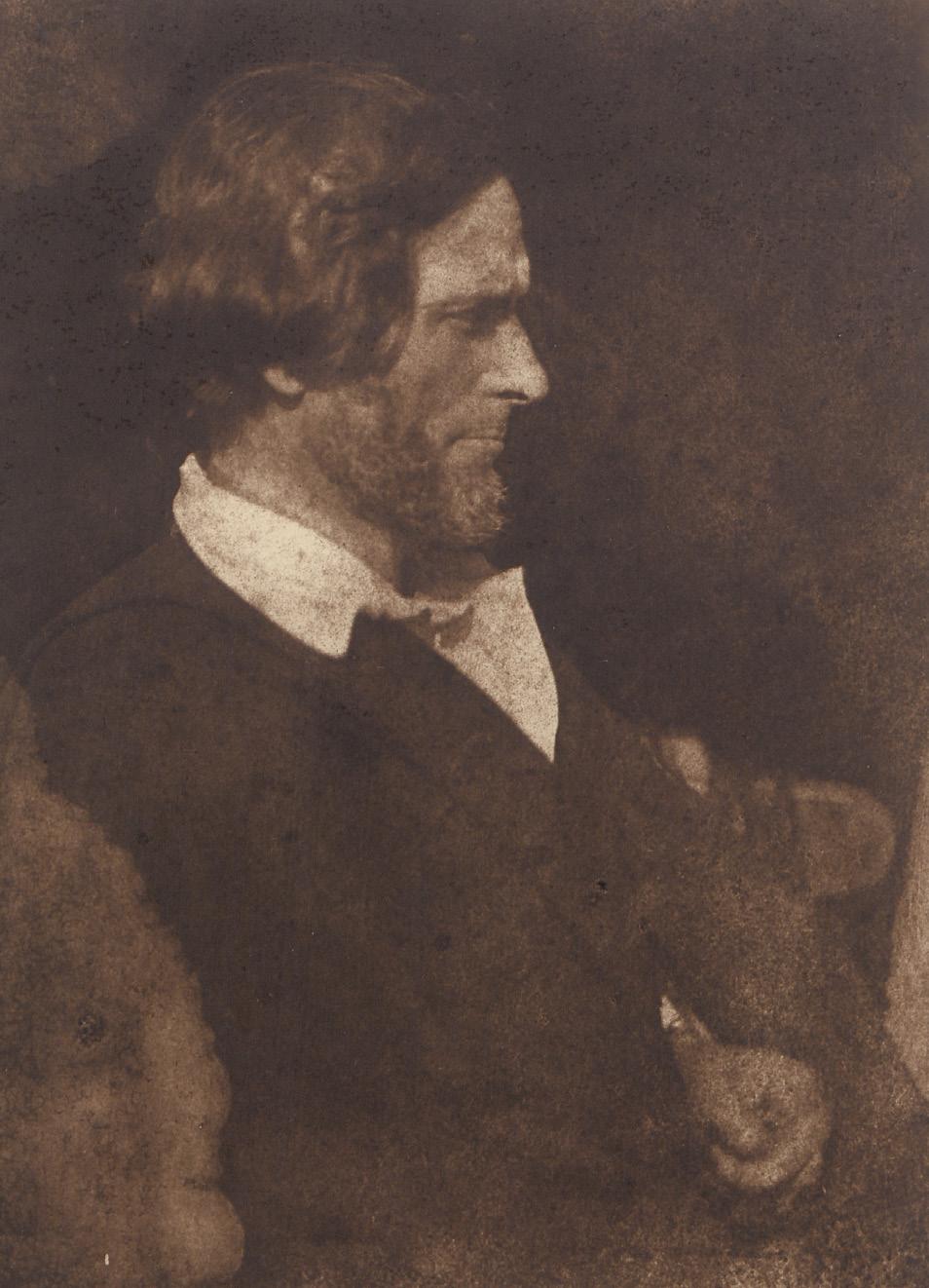
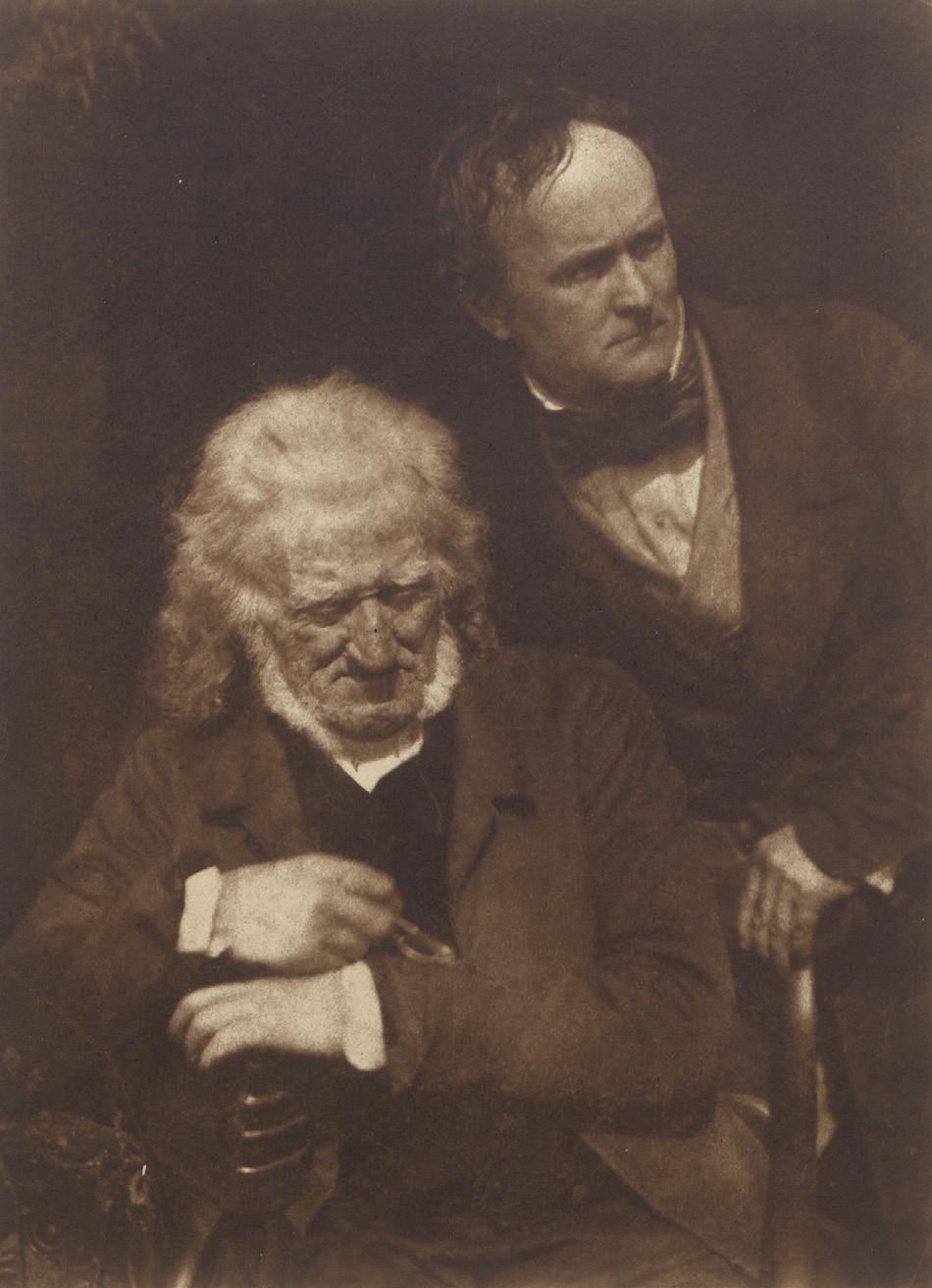
david octavius hill and robert adamson (1802-1870 and 1821-1848)
4049 A Selection of Portraits. 1840s. 52 carbon prints, mounted to boards, printed 1915 by Jesse Bertram. Each circa 20 x 14 cm or reverse (39 x 27 cm). Each numbered in pencil by another hand on lower left corner of recto, and annotated in black ink on the verso. Presented in canvas-backed clamshell box with interleaf.
3.000 €
David Octavius Hill and Robert Adamson, pioneers of Scottish photography, formed a groundbreaking partnership in 1843, establishing Scotland’s first photography studio at Rock House on Calton Hill, Edinburgh. Renowned for their collaborative work, they produced approximately 3,000 calotypes over four years, capturing a diverse range of subjects, including notable Scottish figures, local landscapes, urban scenes, and the daily lives of 4049
Newhaven fishermen and their wives. Their innovative use of the calotype process and their artistic compositions significantly contributed to the early development of photography as an art form.
This group of 52 carbon prints, printed in 1915 by Jesse Bertram from the original calotype negatives, reflects the breadth and depth of Hill & Adamson’s vision. The selection includes expressive portraits of working-class sitters, women in traditional Scottish dress, and evocative scenes of Greyfriars Kirkyard and other Edinburgh locations. Among the most distinguished sitters depicted are the literary critic and historian Thomas Carlyle, the painter Horatio McCulloch, the Free Church leader Rev. Dr. Thomas Chalmers, and the artist John Henning. These images, deeply rooted in their time yet remarkably modern in their psychological intensity, stand as both historical documents and timeless works of photographic art.


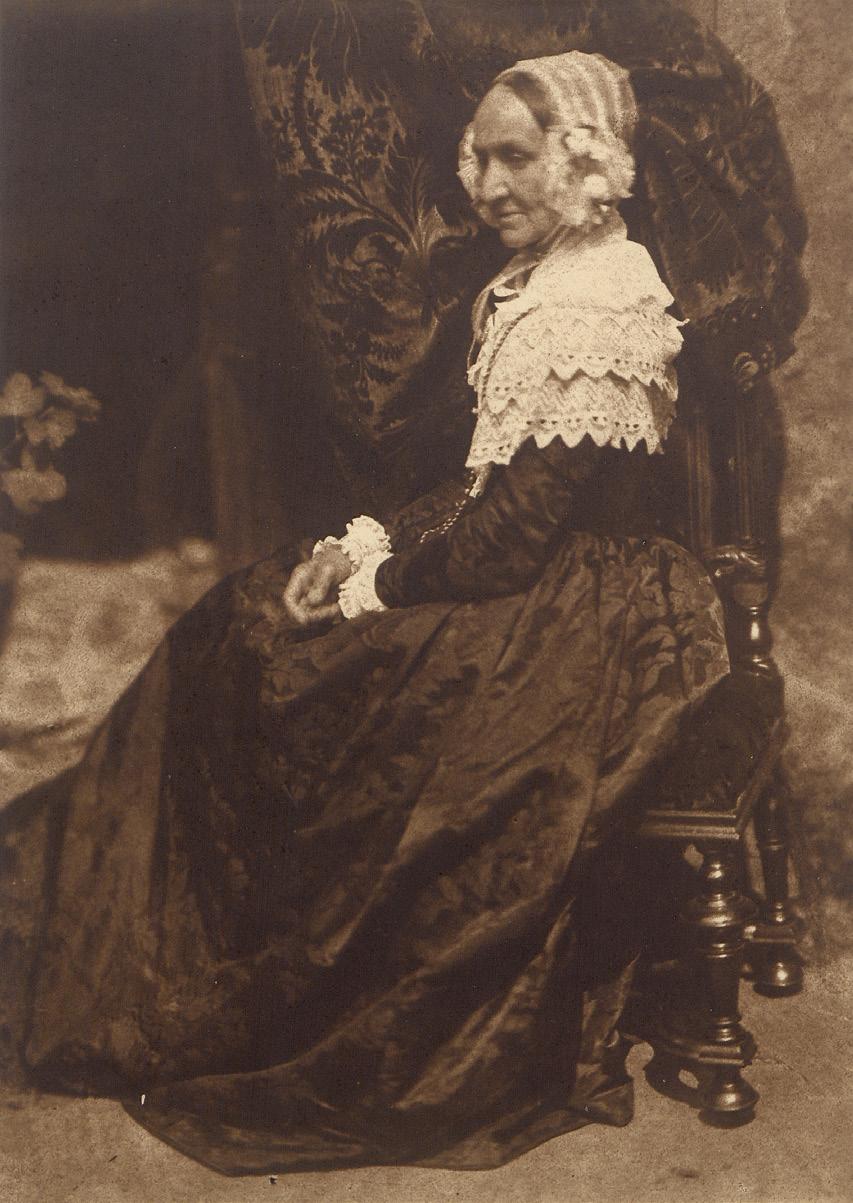


hong kong
4050 Photographer unknown. View of Hong Kong Bay. Circa 1908. 4-part linen-backed albumen print panorama. 17,5 x 99 cm. Mounted on one side to board. 1.500 €
This expansive panorama captures the colonial-era waterfront of Hong Kong around 1900, viewed from across the harbor in Kowloon. Prominent landmarks such as the Hong Kong Club, City Hall with its clock tower, and the old General Post Office line the bustling Praya, backed by hillside residences ascending Victoria Peak. Chinese junks and European steamships animate the harbor, underscoring the city’s role as a key trade hub. The seamless composition offers a rare and richly detailed view of the city’s shoreline before major reclamation and redevelopment.
Lit.: Dennis George Crow. Historic Photographs of Hong Kong & China 1860-1960. Los Angeles, 2000, ill. pp. 18-19.
4051 Photographer: Josef Löwy (1834-1902). Views of Hungary (Bosnia and Herzegovina). 1880s. 5 albumen prints. Each circa 20,2 x 25,3 cm. Each mounted to board, with photographer‘s name and title printed below the image on the mount.
400 €
This compelling group by Viennese court photographer Josef Löwy features early documentary views from the AustroHungarian-occupied Balkans, including scenes from Zepèe, Busovaèa, Sarajevo, and Kobila Glava near Ploèa-Han. Produced during the 1880s, the photographs reflect Löwy’s characteristic attention to both landscape and architectural detail at a time of growing imperial interest in the region.
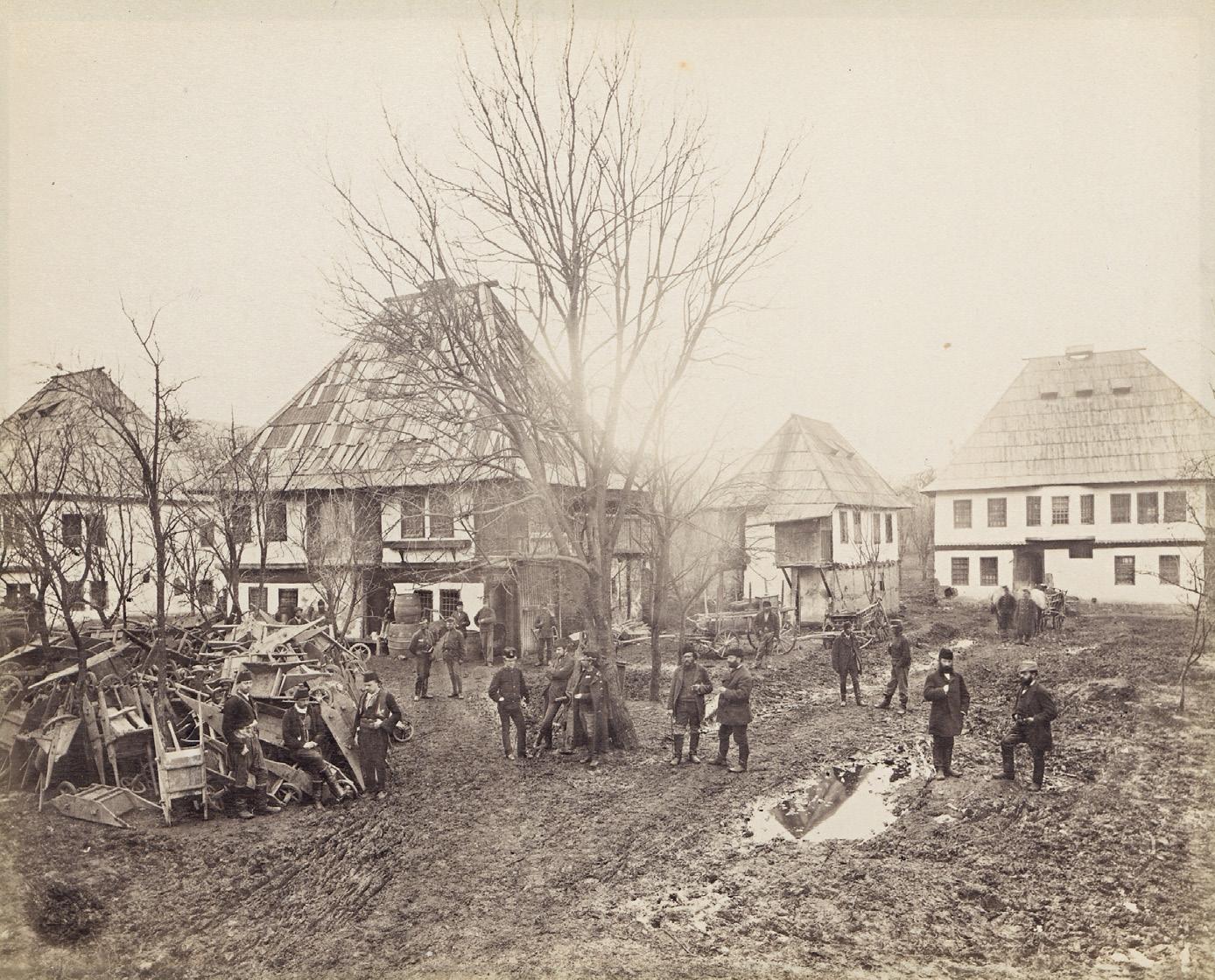
louis igout
(active 1870s-1880s)
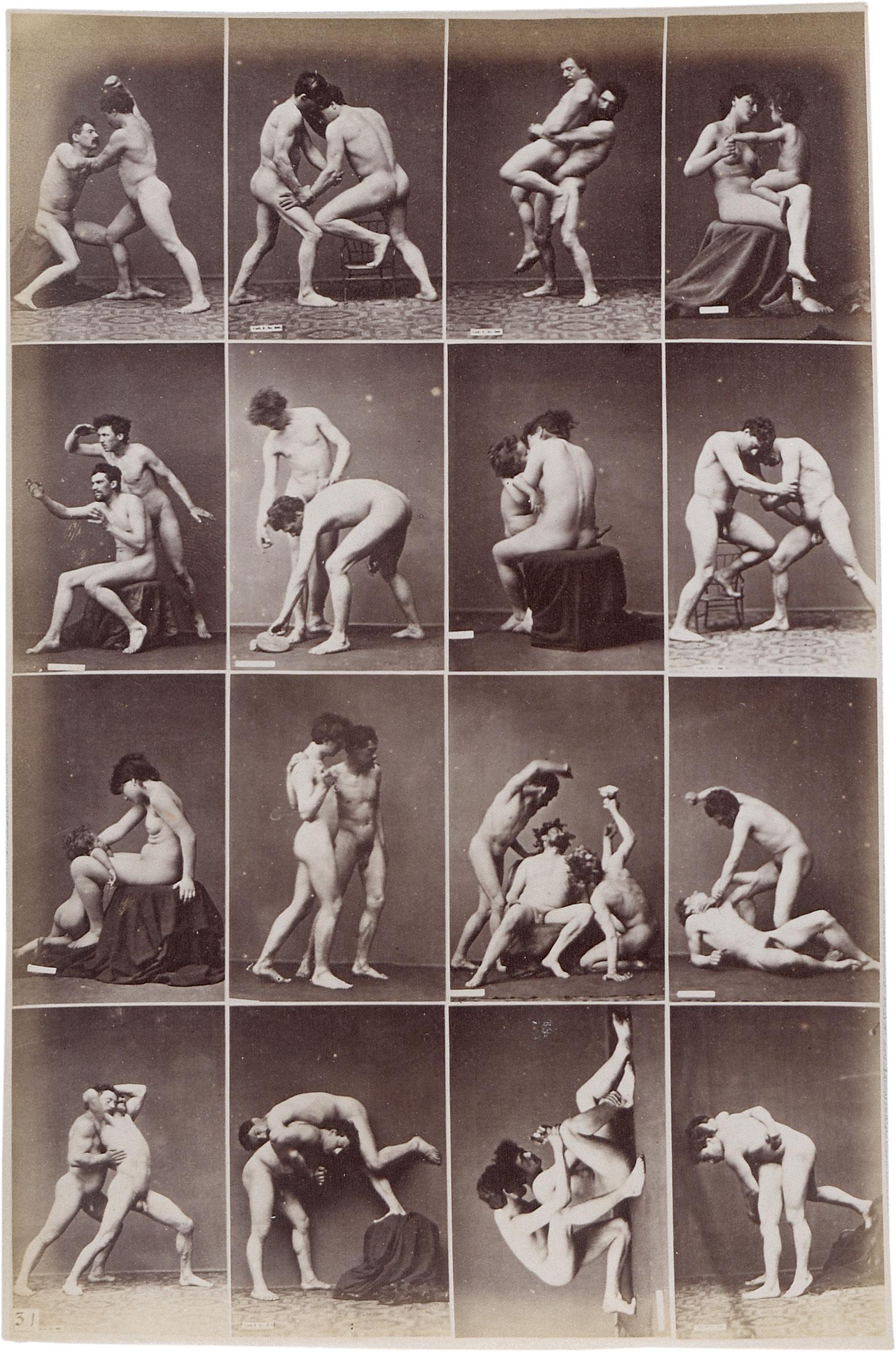
4052 Album d’Études-Poses. 1880s. 39 albumen prints, mounted to album pages. Each ca. 20,5 x 14 cm (30,5 x 24,5 cm). Bound in original half-cloth folio album with gilt-stamped title “Album d’Études-Poses” on the spine as well as printed publisher’s caption “A. Calavas Éditeur, - 68, Rue de Lafayette, PARIS.” on each mount.
2.000 €
This instructional album by Louis Igout was produced around 1880 as a visual aid for artists, sculptors, and illustrators aiming to master anatomy, gesture, and classical composition. Published by A. Calavas in Paris, the album features carefully posed nude studies of men, women, and children, referencing scenes from mythology, antiquity, and the Bible - including Cain and Abel, The Dying Gaul, Hercules and Antaeus, The Drunken Silenus, and the Cnidian Aphrodite, among others. Rendered with academic precision, the photographs served both as instructional models and as a catalogue from which artists could order enlarged prints tailored to their specific needs. A similar album is in the collection of the Metropolitan Museum, New York.
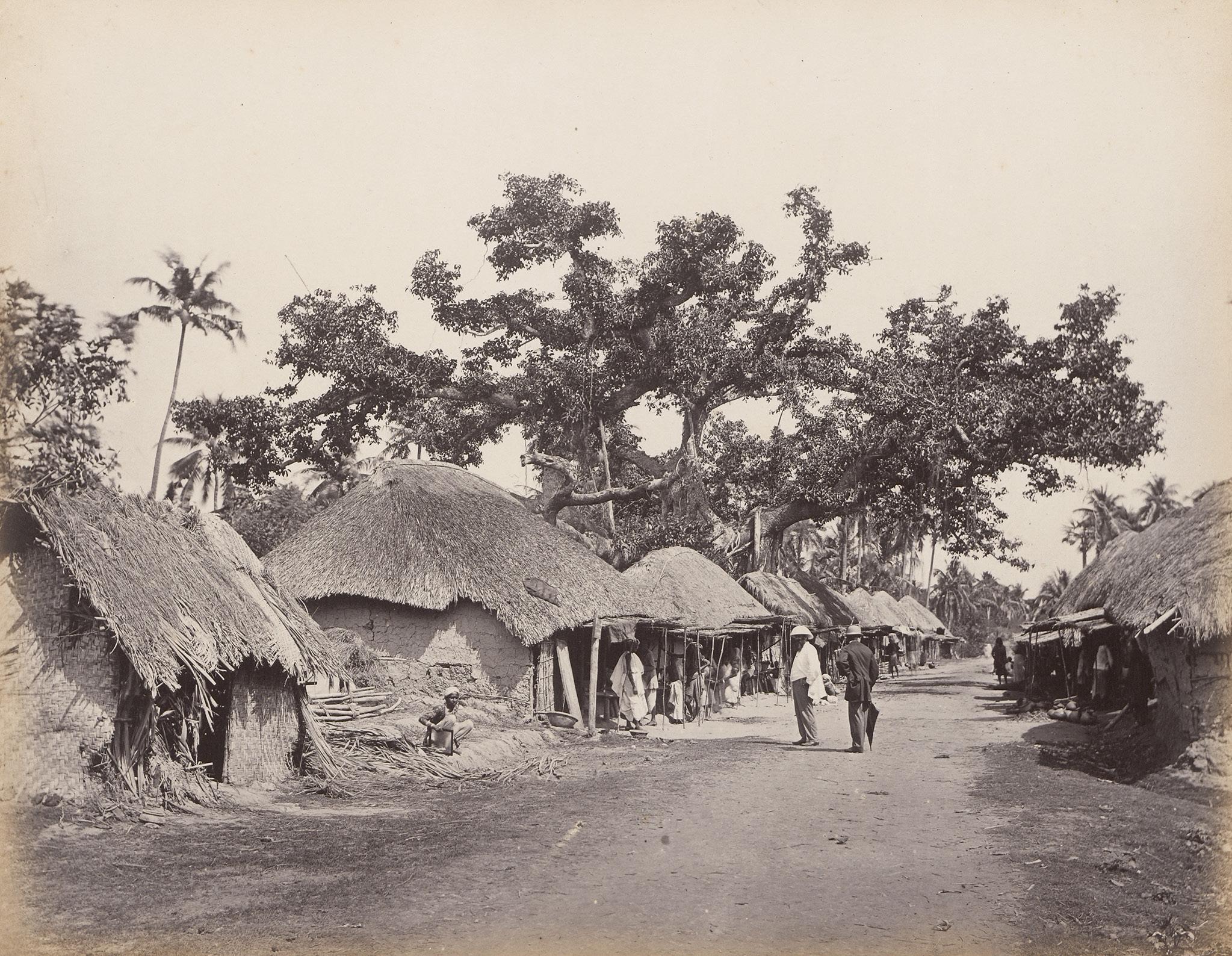

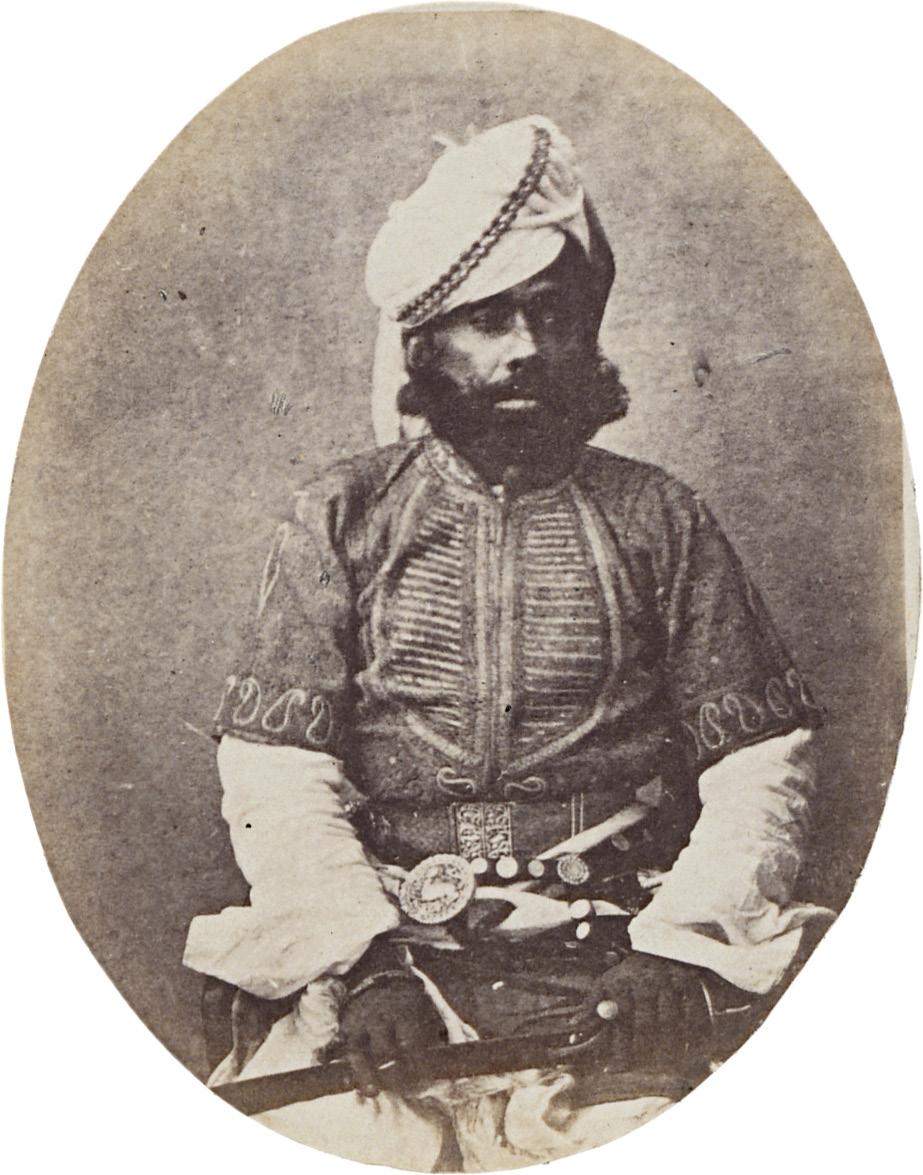

india
4053 Photographer: Samuel Bourne (1834-1912). Views of India. 1860s. 10 albumen prints, mounted to original card. Each ca. 23 x 29,2 cm (31,5 x 36,5 cm). Some signed and numbered in the negative in lower left corner, some annotated in pencil below the image on the mount.
2.000 €
This group of ten photographs offers a representative selection of Samuel Bourne’s celebrated views from across North India, produced during his extensive travels for the firm Bourne & Shepherd. The images include architectural landmarks such as the Qutb Minar and Kashmir Gate in Delhi, the Residency in Lucknow, and Mughal tombs near Agra. Also featured are sweeping landscapes from Srinagar, the foothills of the Himalayas, and views along the rivers of Kashmir. Characterised by Bourne’s finely balanced compositions and clarity of tone, the prints reflect both documentary precision and an aesthetic sensitivity that contributed to his reputation as one of the foremost photographers of British India.
Bath: Pagoda Tree Press, 2007. 4054
4054
“The People of India”, edited by J. Forbes Watson. 1872. 30 oval and arch-topped albumen prints. Each circa 14 x 10 cm and larger. Each mounted to plate with printed caption below the image on the mount, accompanied by text pages. Published b y the India Museum, London, 1872.
1.200 €
This group of photographs constitutes volume six of the eightvolume ethnographic series „The People of India“, compiled between 1868-1875 under the direction of J. Forbes Watson and John William Kaye. Created in the wake of the 1857 Rebellion, the series aimed to visually and textually document the diverse peoples, castes, and occupations of British India for an English readership. The portraits - formal, frontal, and often richly detailed - offer a revealing, if colonial, perspective on the social taxonomy imposed by imperial ethnographers.
Lit.: J. Forbes Watson and John William Kaye. The People of India: A Series of Photographic Illustrations with Descriptive Letterpress of the Races and Tribes of Hindustan […] . Reprint in 2 volumes.





india
4055 Photographers: Samuel Bourne (1834-1912) and Charles Shepherd (active 1850s-1870s). Portraits of maharajas and rulers of India. Circa 1875. 50 cartede-visite albumen prints, mounted to original studio boards. Each ca. 10 x 7 cm. Most with photographer‘s logo on mount recto/verso; inserted in gilt-edged album window mats and bound in tooled full-leather album.
4.000 €
This remarkable album brings together fifty carte-de-visite portraits of Indian rulers, nobles, and officials, taken circa 1875 by the British photographers Samuel Bourne and Charles Shepherd. Compiled at the height of the British Raj, the collection offers an expansive survey of the political and dynastic landscape of princely India in the late 19th century. The portraits document a broad cross-section of regional powers - from major princely states to smaller, less documented territorieshighlighting the diverse forms of leadership and governance that coexisted under British colonial rule.
For a list of all sitters portrayed, please consult our online catalog.
4056 Photographer unknown. H. H. the Raja Saheb Narayan Rao Puar of Dewas-Junior (1860-1892) 1880s. Albumen print, mounted to board. 25 x 18 cm. Number „2418“ in lower area in the negative.
600 €

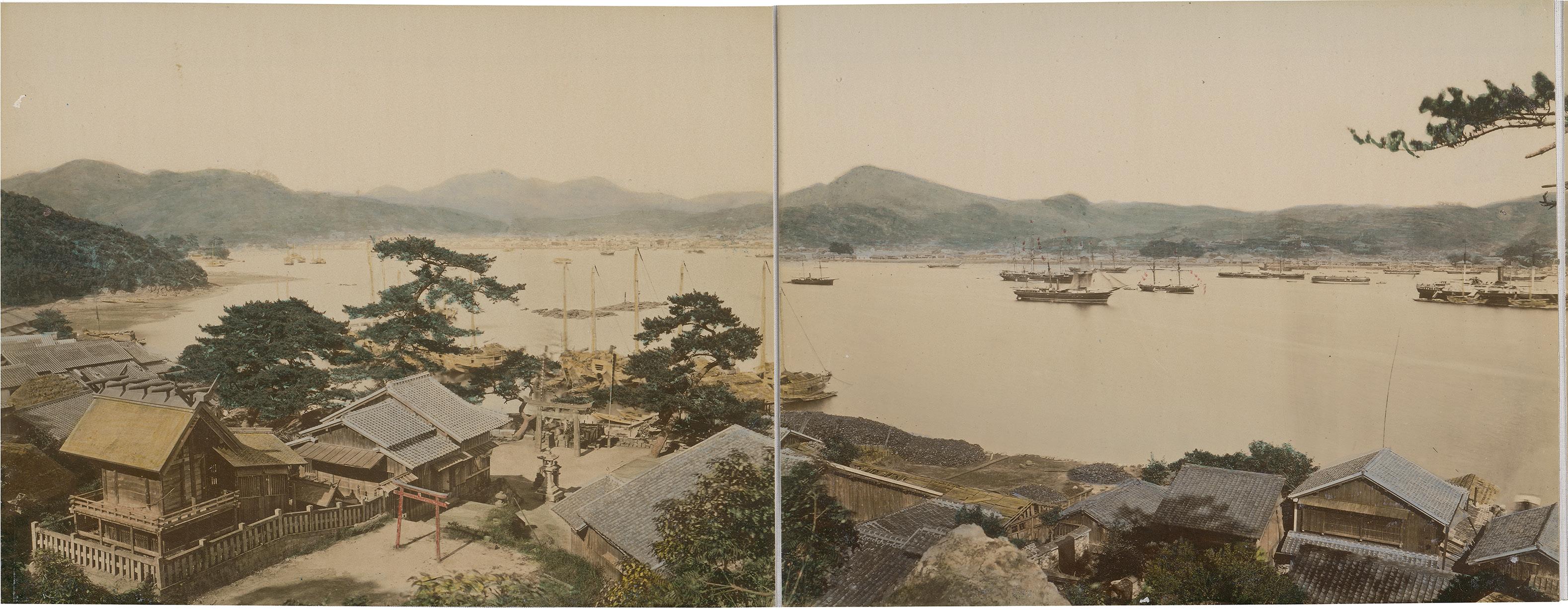
japan
4057 Photographer: Uchida Kuichi (1844-1875). Nagasaki Harbor. 1872. Four-part, hand-colored albumen print panorama. 20 x 102,5 cm.
1.200 €
This rare hand-colored panorama of Nagasaki Bay, attributed to Uchida Kuichi, exemplifies the photographer’s refined approach to large-format topographic views during the early Meiji period. A leading figure of early Japanese photography, Uchida was renowned for his portraits of Emperor Meiji and for producing meticulously composed images for both Japanese elites and foreign clientele. Likely taken from Mt. Kazagashira, the view captures Nagasaki at a pivotal moment of transformation, with steamships in the harbor and a recently constructed factory visible at the right. Another copy of this panorama is in the collection of the Tokyo Photographic Art Museum. Lit.: Bennett, Terry. Photography in Japan: 1853-1912. North Clarendon, VT: Tuttle Publishing, 2006, ill. p. 80.
4058 Photographers: Baron Raimund StillfriedRatenicz (1839-1911), Felice Beato (1832-1909), Kusakabe Kimbei (1841-1932), and unknown. Japanese portraits. 1870s-90s. 28 hand-colored albumen prints, mounted to boards. Each circa 24 x 20 cm (36 x 28 cm). Some with number and title in lower corners in the negative.
1.000 €
Baron Raimund von Stillfried-Ratenicz, Felice Beato, and Kusakabe Kimbei were influential photographers who played key roles in documenting Japan during the late 19th century. Stillfried and Beato, both foreign photographers, captured the landscapes, architecture, and people of Japan, with Beato’s work being among the first visual records of the country for Western audiences. Kusakabe Kimbei, a Japanese photographer who trained under Stillfried and Beato, became known for his handcolored images of traditional Japanese scenes, catering primarily to Western visitors during the Meiji period. This attractive group includes photographs of street sellers, monks, priests, geishas, wrestlers, tattooed men and craftsmen. The coloring is often exceptionally subtle and finely executed.
Lit.: Claudia Gabriele Philippe, Dietmar Siegert, and Rainer Wick, eds. Felice Beato in Japan: Photographien zum Ende der Feudalzeit 1863-1873. Heidelberg: Edition Braus, 1991. Illustrated pp. 155, 160, 168, and 172.
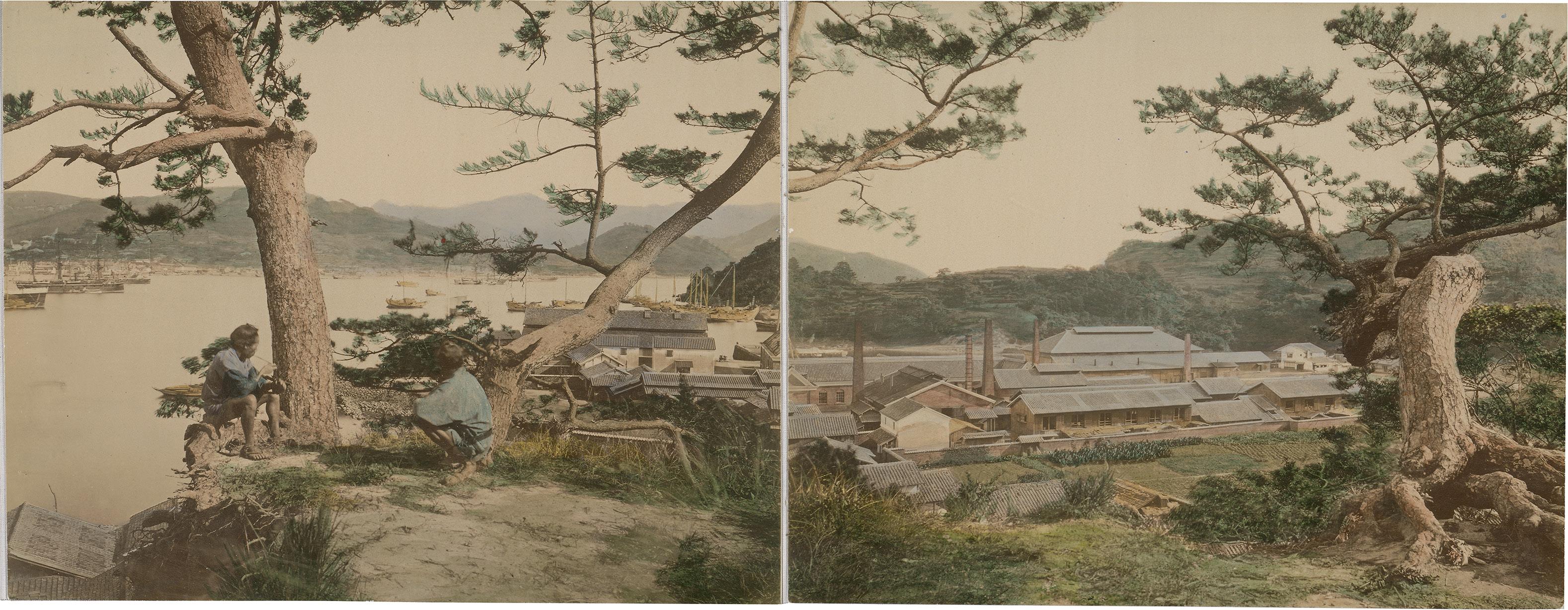


japan
4059 Photographer unknown. Miyako-Odori dancing group in Kyoto. 1880s. Three-part, handcolored albumen print panorama. 18,5 x 71,5 cm. With caption in the negative in lower margin; two prints numbered in the negative.
750 €
This hand-colored panorama presents a formal portrait of the Miyako-Odori, Kyoto’s celebrated annual spring dance performed by geiko and maiko of the Gion district since 1872. Composed of three seamlessly joined albumen prints, the image captures a staged performance in full regalia, with rows of dancers and musicians arranged in precise formation against an ornate folding screen. Likely intended for export during the late Meiji period, the photograph conveys both the stylized refinement of the Miyako Odori and the era’s growing interest in documenting traditional Japanese arts for an international audience.
4060 Photographers: Baron Raimund von Stillfried-Ratenicz (1839-1911), Uchida Kuichi (1844-1875), Tamoto Kenzô (1832-1912), and unknown. Ainu people of Japan. 1870s-1890s. 10 mostly handcolored albumen prints, mounted to boards. Each circa 20,5 x 26,5 cm or reverse (24,5 x 32 cm). Some with number and title in lower corners in the negative.
1.000 €
The indigenous Ainu people originally inhabited the main Japanese island of Honshu before being gradually pushed northward. Traditionally hunters, gatherers, and fishers, the Ainu developed a distinct and self-sufficient culture. By the late 19th century, assimilation efforts by the Meiji government threatened their way of life. Today, only a small number of Ainu remain on the Japanese island of Hokkaido, the Kuril Islands, and Sakhalin. After a long history of marginalization, their language, religion, and cultural practices were officially recognized by the Japanese government in 2008. Historical visual records of Ainu culture are scarce, making this group of photographs particularly valuable. Especially noteworthy are the images of small village scenes and group portraits showing traditional garments and hairstyles.
Lit.: Luke Gartlan. A Career of Japan: Baron Raimund von Stillfried and Early Yokohama Photography. Leiden; Boston: Brill, 2016, ill. p. 138 (variant).


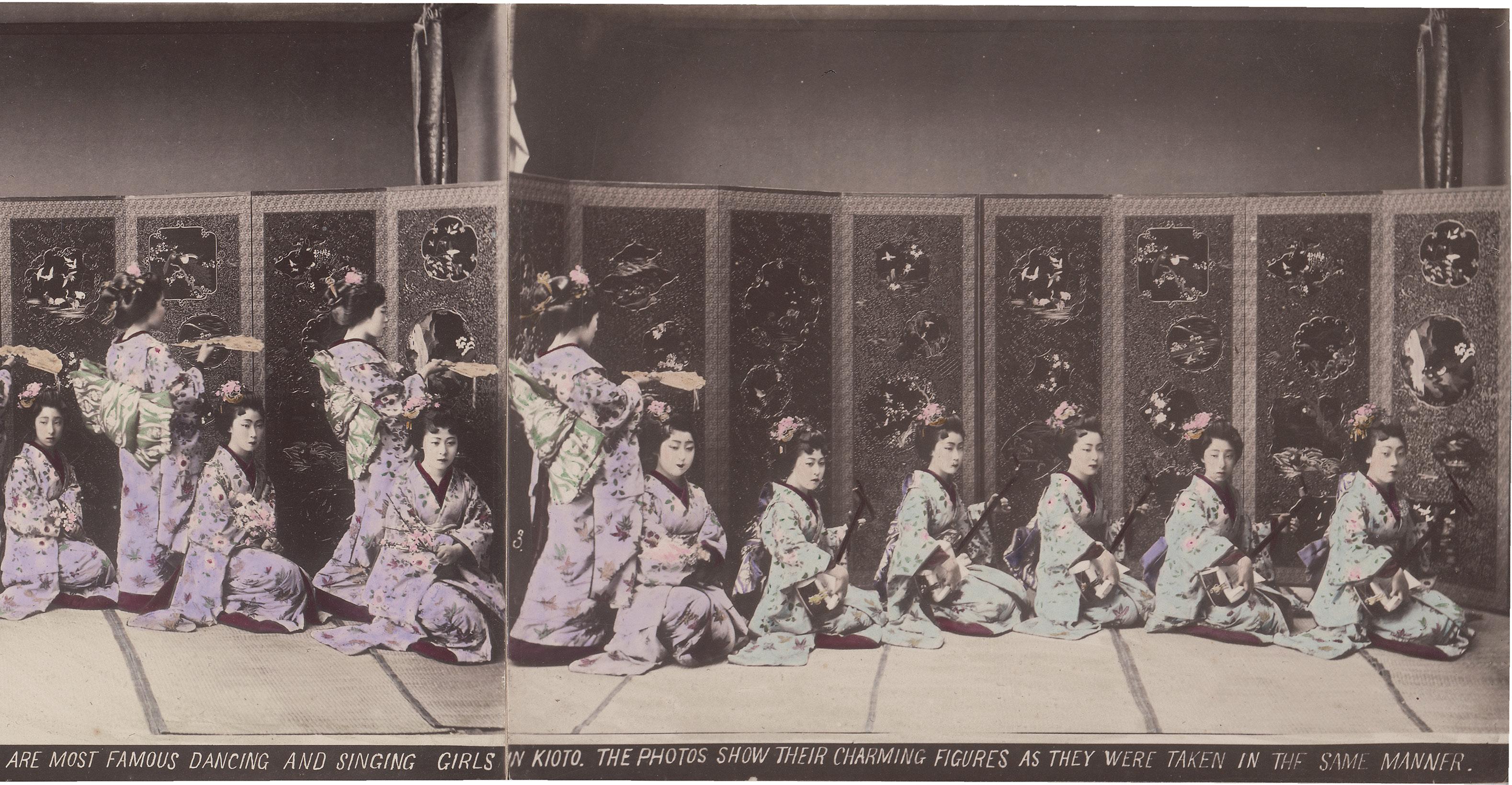

4061 Photographer: Kusakabe Kimbei (1841-1932), attributed to. Selected genre scenes. 1880s. 3 handcolored albumen prints. Each circa 20 x 26 cm and 26 x 20 cm.
400 €
In 1885, Kusakabe Kimbei - formerly an assistant and colorist for Felice Beato - acquired Beato’s Yokohama studio from Baron Raimund von Stillfried-Rathenicz, who had purchased it in 1877. From 1885-1910, Kimbei emerged as one of Japan’s leading commercial photographers, playing a pivotal role in shaping the visual identity of Meiji-era Japan and contributing significantly to the early history of photography in the country.
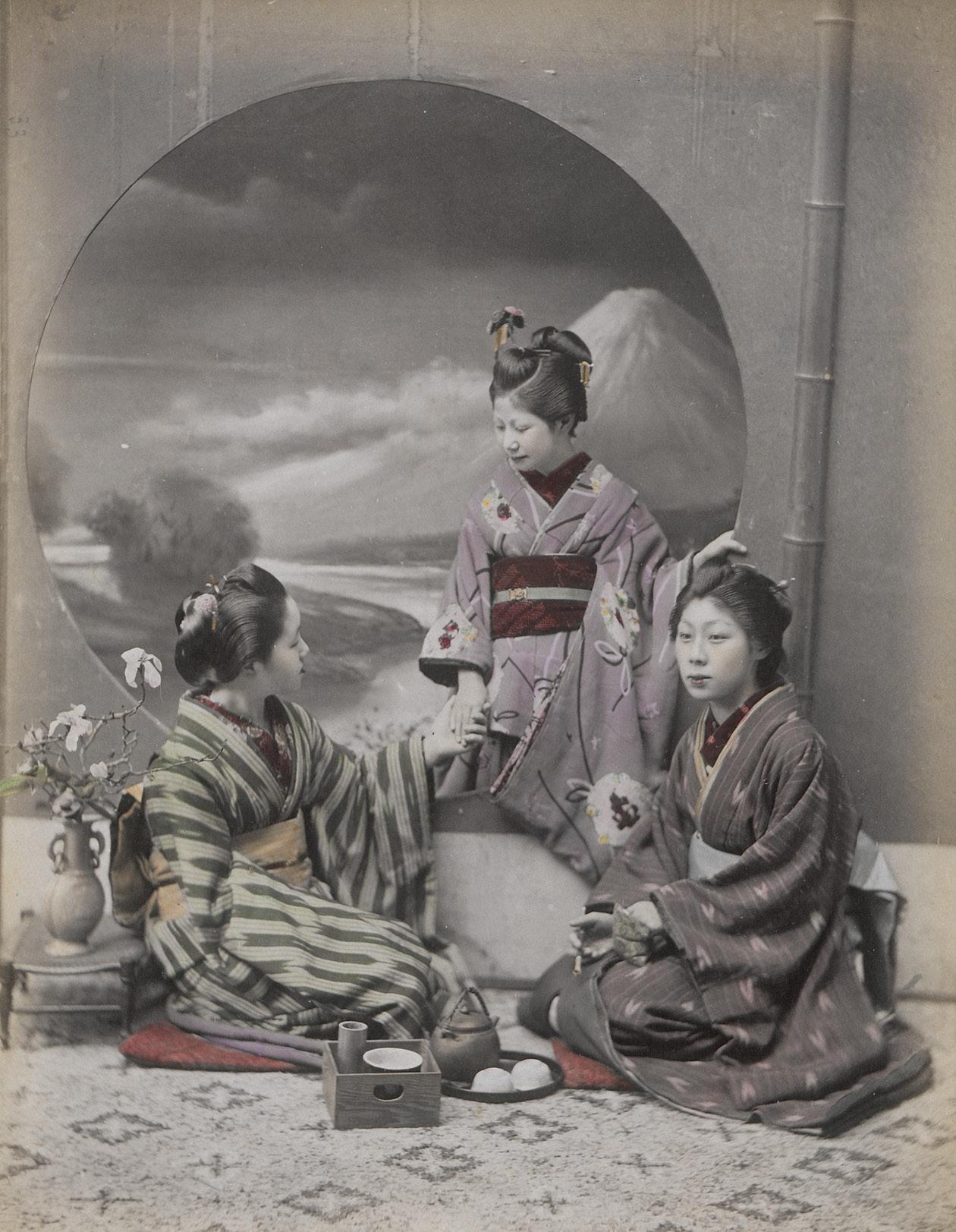
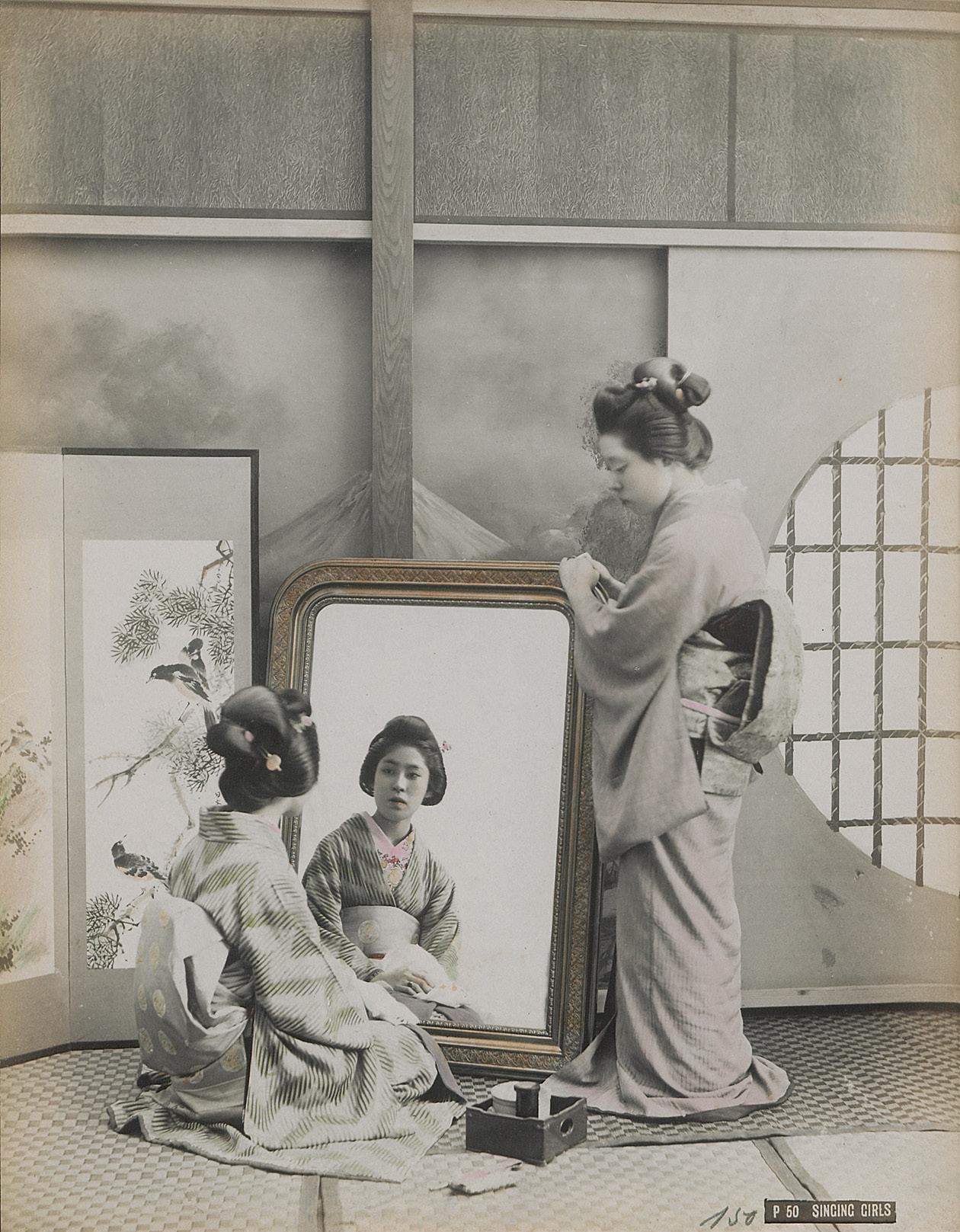
4062 Photographers: Adolfo Farsari (1841-1898) and others. Landscapes and portraits. 1890s. 22 handcolored albumen prints. Each circa 21 x 27 cm. Some with title and number in the negative in lower margin.
600 €
This well-preserved group of hand-colored albumen prints offers a vibrant depiction of Meiji-period Japan, combining landscape views with a variety of portrait subjects. Among the highlights are outdoor scenes featuring geisha in traditional dress, captured in garden settings or temple courtyards, as well as more formal studio compositions. Particularly notable is a rare image of kabuki actors performing a stylized reenactment of seppuku (ritual suicide), reflecting the era’s theatrical and cultural traditions. Produced for the export market, these prints exemplify the refined coloring and compositional elegance characteristic of Yokohama studios such as that of Adolfo Farsari.
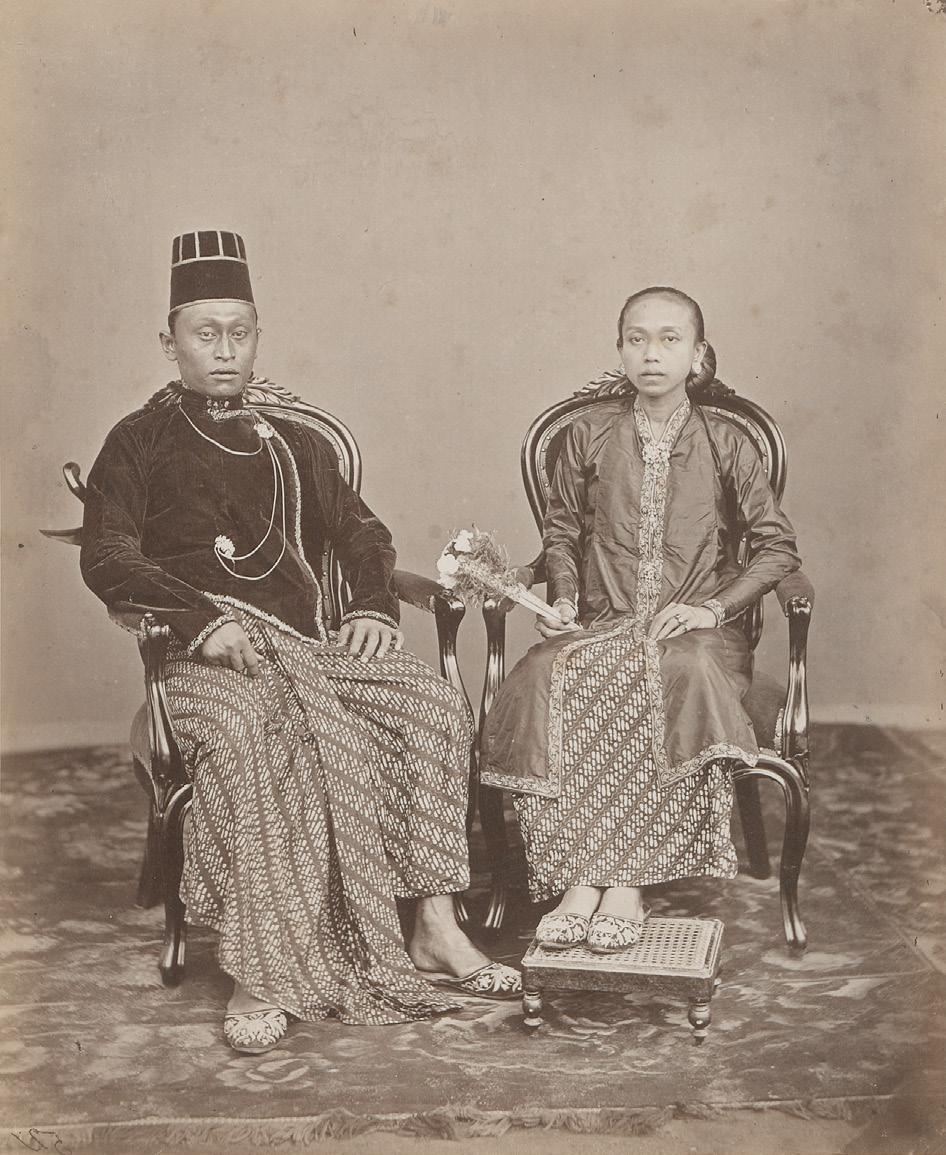
java
4063 Photographer: Woodbury & Page (active 1857-1908). Views and portraits from Java, including Batavia, Bekasi, Pati, and Surakarta. 1870s. 10 albumen prints, mounted to board. Each ca. 19 x 24 cm (25 x 30 cm) or reverse. Some with printed studio name in the negative.
1.000 €
This group documents key moments and figures from colonialera Java during the late 19th century. Among the images are the execution of the so-called Tambun murderers in Bekasi (1869), the Bupati of Pati, Raden Adipati Arya Candra Adinegara with his entourage, and the royal procession of Pakubuwono IX, Susuhunan of Surakarta. Also included are striking portraits of wayang topeng performers, views of village life, and ceremonial gatherings. These prints exemplify Woodbury & Page’s distinctive ability to combine ethnographic detail with a formal photographic sensibility, capturing the diverse visual culture of the Dutch East Indies with remarkable clarity.


4064 Photographer: Woodbury & Page (active 1857-1908). Views of Java. 1870s. 30 albumen prints, mounted to boards. Each ca. 19 x 24 cm or reverse (34,5 x 46 cm). With the photographer’s blind stamp embossed in lower right corner and handwritten captions in pencil below the images on the mount. Presented in canvas-backed clamshell box with silk-lined interior and richly hand-illustrated title leaf featuring Javanese script and a dedication to “Fürst Bismarck.”
2.000 €
This rare and visually striking set offers a wide-ranging photographic survey of colonial Java in the 1870s, including Batavia (Jakarta), Buitenzorg (Bogor), Bandung, Garut, and surrounding volcanic landscapes. The images depict prominent civic buildings such as the former Stadhuis of Batavia, the military hospital, colonial residences, botanical gardens, bridges, markets, and staged ethnographic scenes. Figures in traditional dress appear throughout, offering glimpses of daily life in the Dutch East Indies. The group includes a richly hand-illustrated title page with gold embellishments and Wayang-style figures, bearing a dedication to “Fürst Bismarck” in Javanese script and Latin lettering-suggesting the set was conceived as a diplomatic or commemorative gift to the German Chancellor during a period of expanding international influence.
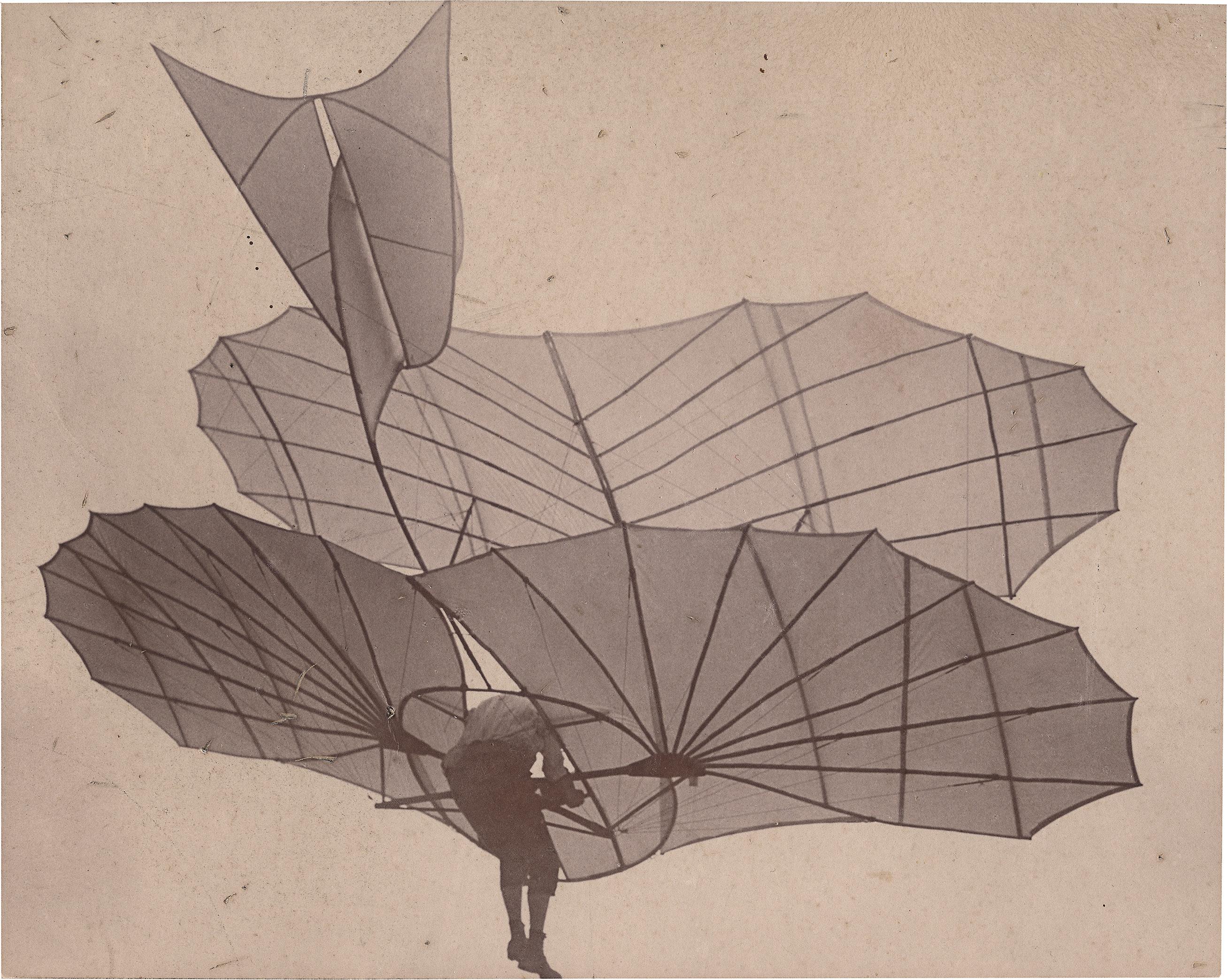
otto lilienthal (1848-1896)
4065 Photographer: Dr. Richard Gustav Neuhauss (1855-1915). Otto Lilienthal flying his gliding plane “Großer Doppeldecker”, Fliegeberg, Berlin-Lichterfelde. Oct. 19, 1895. Vintage gelatin silver print, mounted to board. 16.4 x 20.6 cm. Captioned “Stöllen 1895” in white ink below the image on the mount.
2.000 €
The evolution of photography and aviation shares interesting similarities. In 1884, Ottomar Anschütz began capturing images of storks in flight, marking the first momentary snapshots in the history of photography. By 1890, he developed the „Tachyscope,“ displaying sequential images of people and
animals in motion, which gained popularity at the 1893 Chicago World‘s Fair, highlighting advancements in transportation and industry through widely distributed photographs. In 1891, Otto Lilienthal initiated his flight experiments, lasting five years until his unfortunate death in 1896, due to a flight accident. During this period, photographers such as Ottomar Anschütz, Carl Kassner, Richard Neuhauss, and Alex Krajewski documented Lilienthal‘s flights near Berlin. These images often circulated as photo postcards and served as crucial documentation for Lilienthal. Unfortunately, the glass negatives of Lilienthal‘s photographs, archived in the Deutsches Museum in Munich, were destroyed during WWII.


otto lilienthal
4066 Photographers: Dr. Richard Gustav Neuhauss (1855-1915), A. Regis and others. Otto Lilienthal flying his gliding planes at Rhinower Berge (MaihöheRhinow) and Fliegeberg, Berlin-Lichterfelde. 1893-96. 8 vintage gelatin silver prints, mounted to boards. Various sizes between 16,4 x 22 cm and 10 x 13 cm. Some captioned in white ink below the image on the mount.
1.500 €
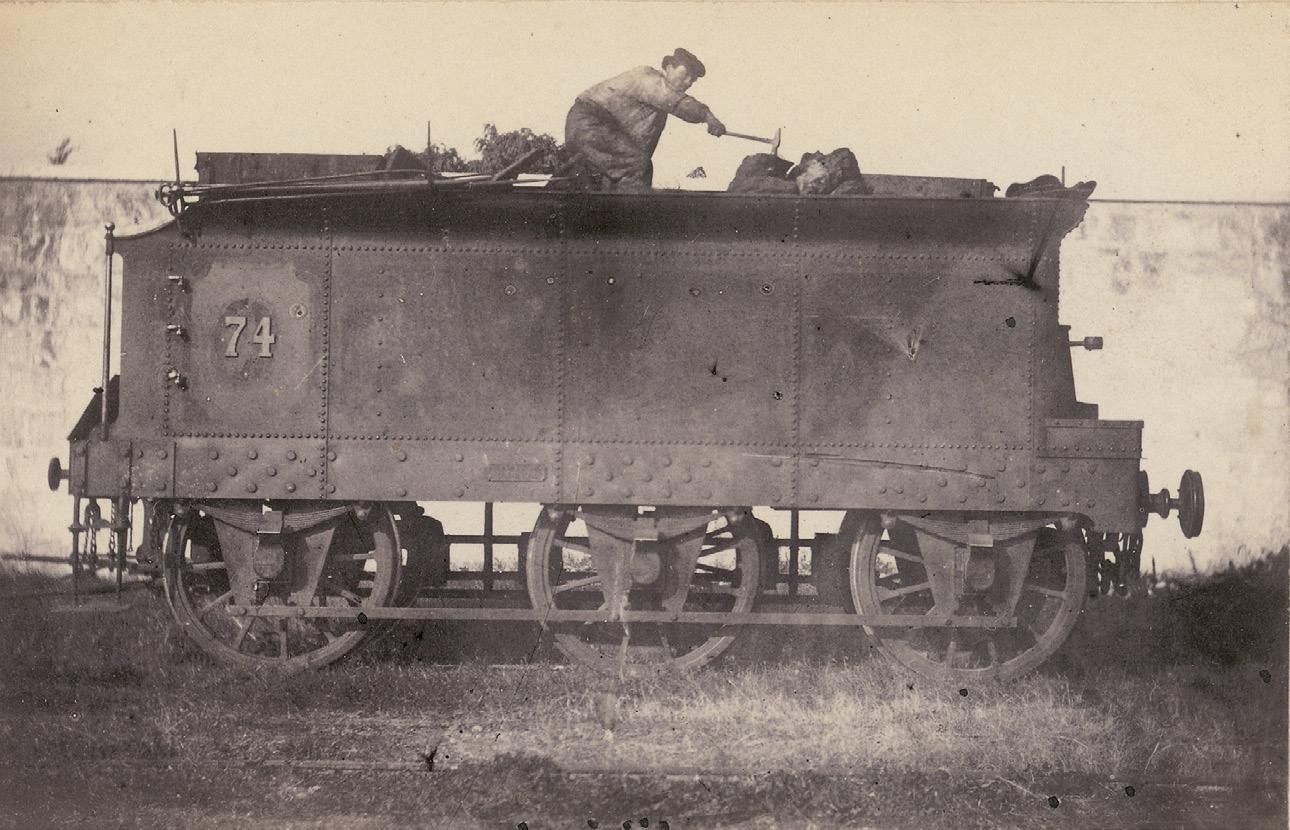
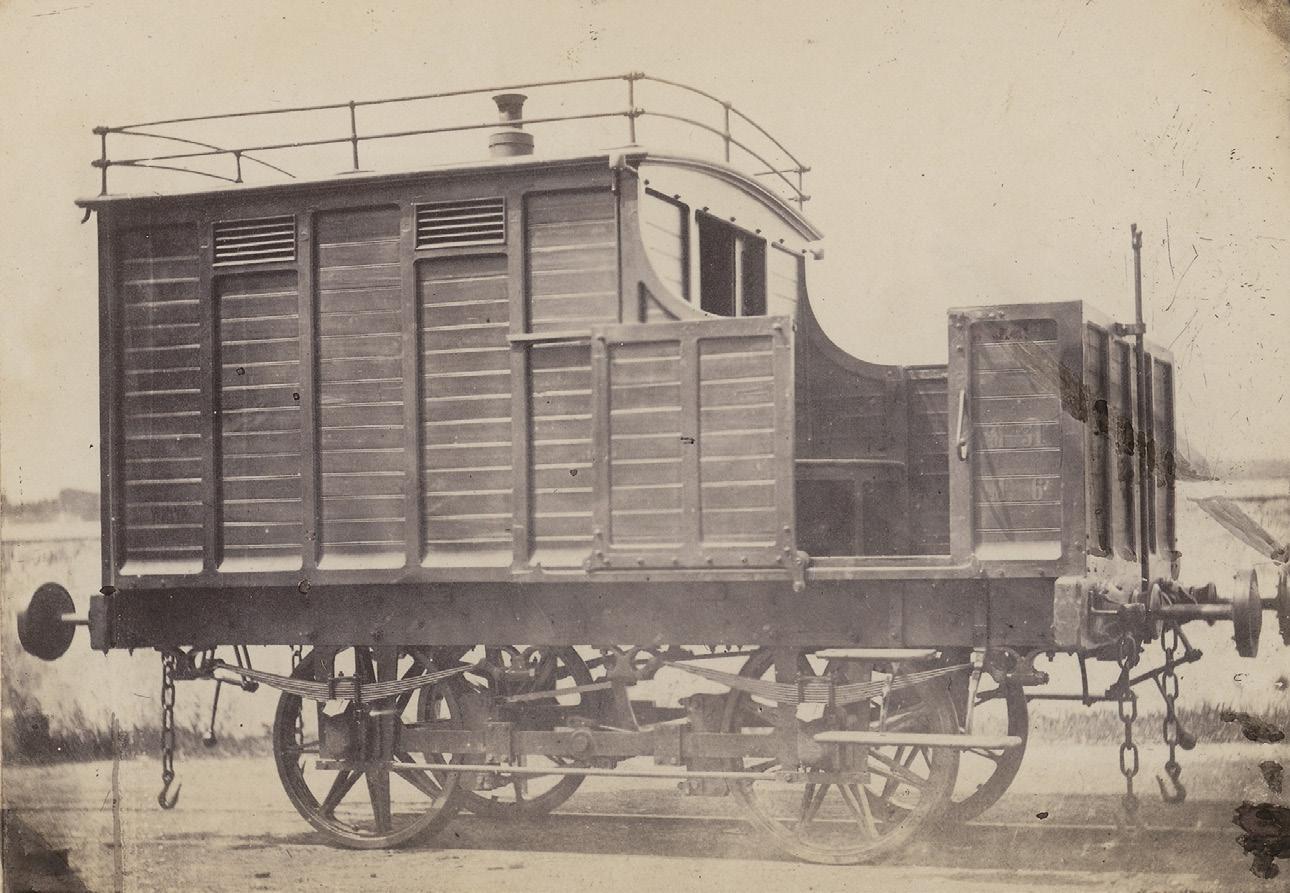
lombard-venetian railway
4067 Photographer unknown. Inventaire photographique et statistique du matérial roulant sur le réseau Vénetien et du Tirol Meridionale. 1863. 29 albumen prints, mounted to album boards. Most circa 8,5 x 14 cm. Each with printed captions above/below images on the mount, bound in halfcanvas album with gilt-lettered title page.
900 €
Rare documentary album illustrating the rolling stock of the Venice-South Tyrol railway network in 1863, compiled shortly before the region transitioned from Austrian to Italian control. The photographs present a comprehensive visual survey of mid-19th-century rail technology, featuring locomotives, passenger coaches, and freight wagons manufactured by leading European firms including Köchlin, Stephenson, Schneider, Cail, Haswell, and others. Each image is accompanied by printed captions detailing technical specifications, making the album a valuable industrial inventory. Produced during a moment of intense political and technological change, it offers a significant historical record of early railway infrastructure in Northern Italy and the former Austrian Empire.
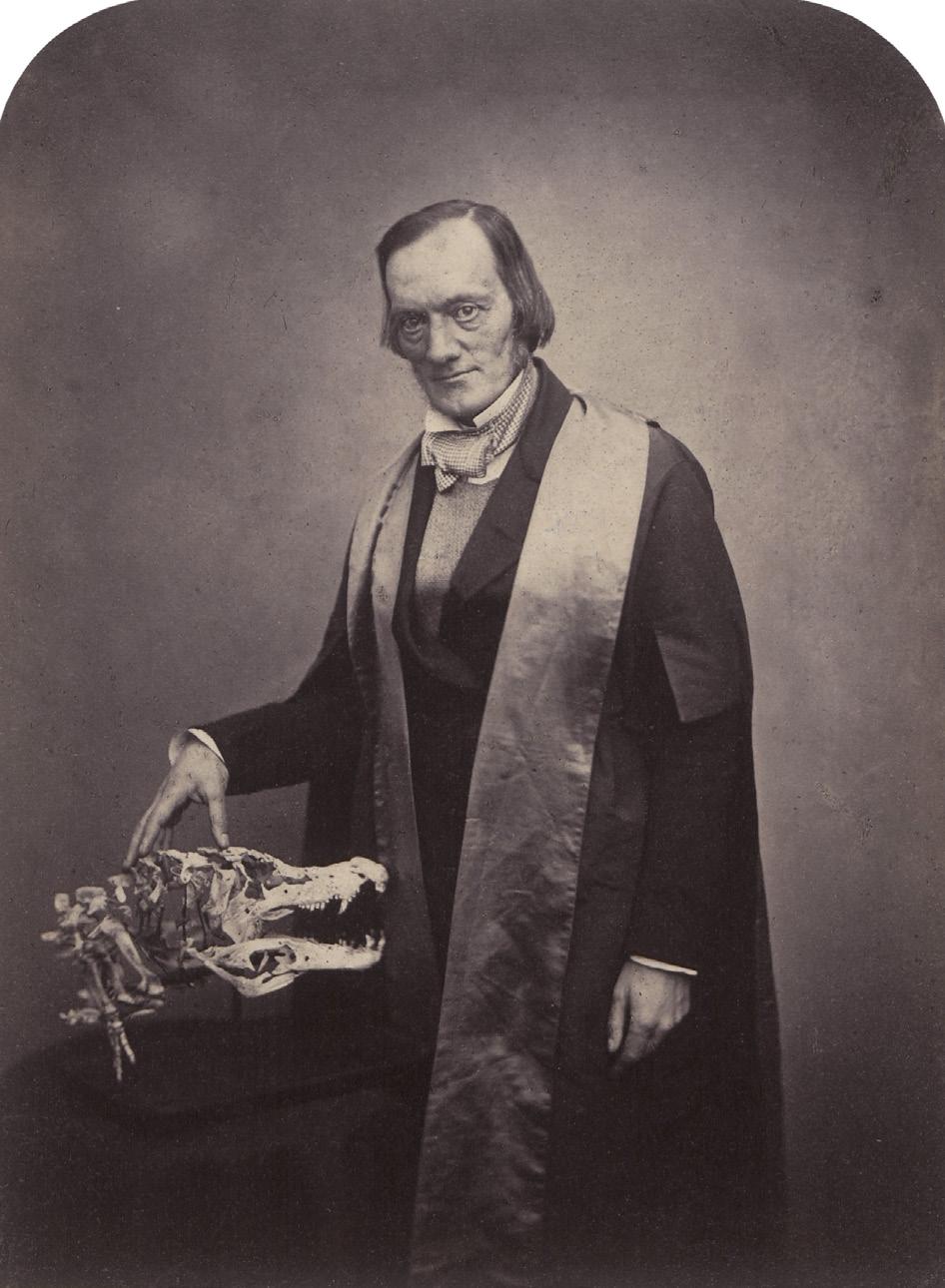
men of mark
4069 Photographers: Samuel Lock (1822-1881) and George Whitfield (ca. 1832-1904). Heinrich Schliemann, Charles Darwin and Jules Verne, from the series “Men of Mark”. 1877. 3 Woodburytypes. Each circa 11,5 x 9 cm (27,2 x 20,5 cm). Each mounted to book page and titled and annotated on the mount, 2 with text page.
400 €
These three portraits of Heinrich Schliemann, Charles Darwin, and Jules Verne are from the renowned series “Men of Mark” by Lock & Whitfield, issued between 1876-1883. The project featured prominent figures in science, literature, and public life, reproduced in high-quality Woodburytypes and accompanied by short biographical texts. The sitters of these bust-length portraits reflect Victorian ideals of intellectual and cultural achievement, and are portrayed with composure and gravitas. The inclusion of Darwin, Schliemann, and Verne highlights the period’s fascination with discovery, both scientific and imaginative.
maull & polyblank (active 1856-1865)
4068 Portraits of British public figures. Circa 1857-1864. 4 Woodburytypes, mounted to card with printed gilt border. Each 20 x 14,8 cm (26,5 x 21,6 cm). Titled in pencil or ink by hand on the mount below the image; photographer’s credit printed on the mount: “Photographed by Maull & Polyblank, 55, Gracechurch Street and 187a, Piccadilly, London.”
1.200 €
This group of early photographic portraits by the London studio Maull & Polyblank features prominent figures of mid-Victorian public life. Among them are Sir Richard Owen, the pioneering comparative anatomist and founder of the Natural History Museum in London, shown with a fossil specimen; Sir William Sterndale Bennett, influential composer and Principal of the Royal Academy of Music; Lord Stanley, later the 15th Earl of Derby and a three-time British Foreign Secretary; and Charles Kean, celebrated Shakespearean actor and theater manager. Taken between 1857-1864, these portraits exemplify the studio’s ambition to create a visual pantheon of British cultural and political leadership.
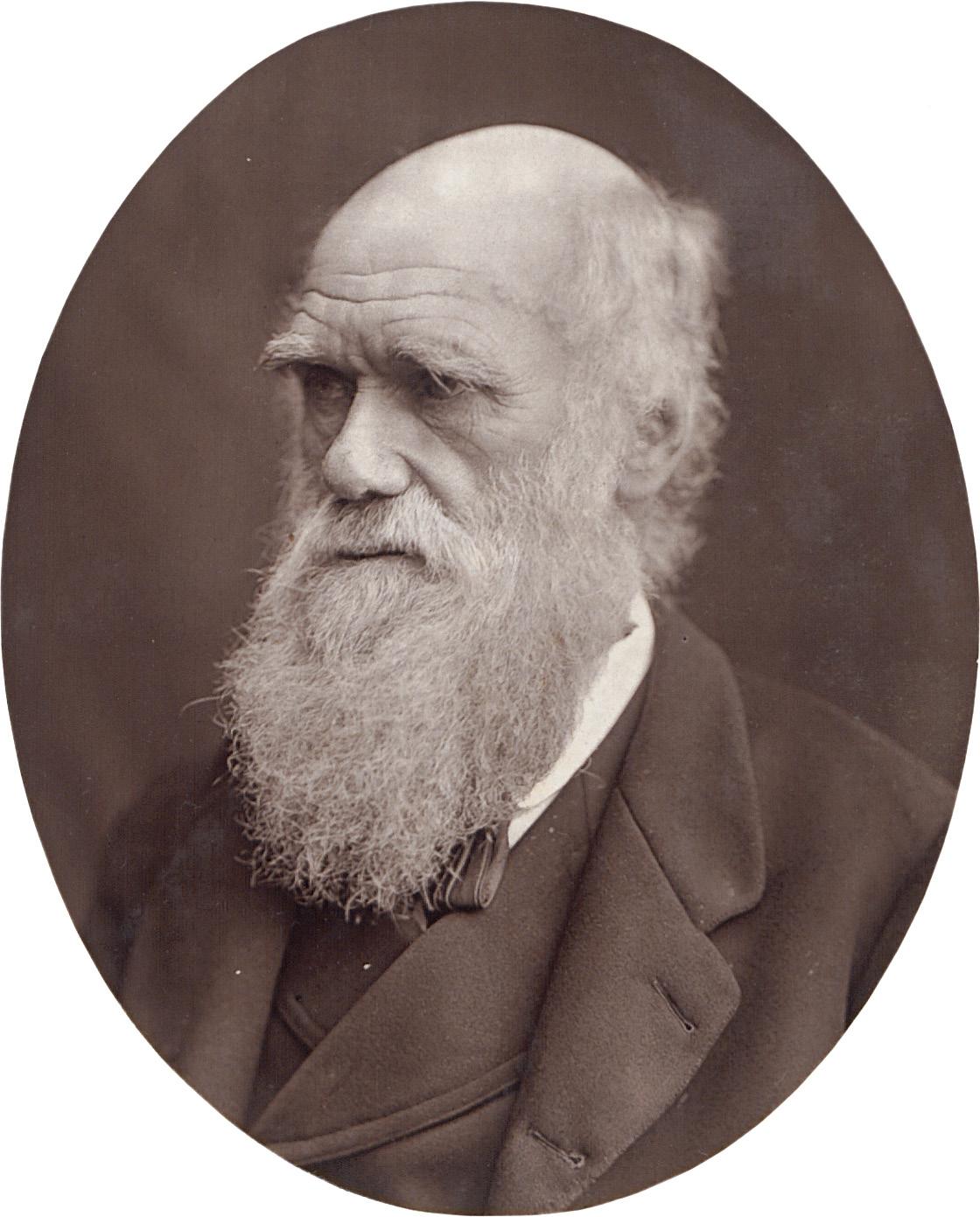
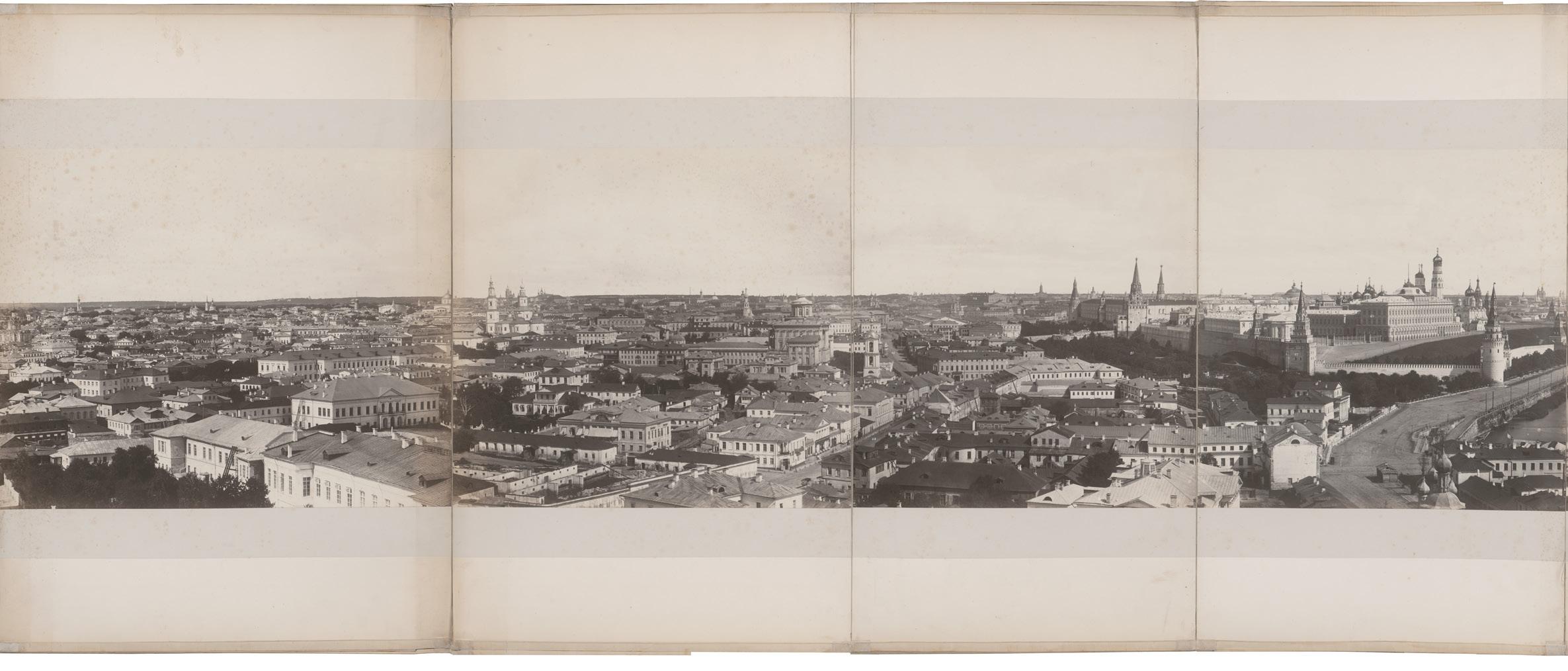


moscow
4070 Photographers: Scherer & Nabholz (active ca. 1860-1868), published by Kozma Terentyevich Soldatyonkov (1818-1901). Panorama von Moskau. 1867. 16 albumen prints, mounted to boards and joined with paper tape into an accordion-fold panorama. Each ca. 34 x 40 cm (entire size: ca. 640 x 61 cm).
Additional mounted albumen print (ca. 27 x 33 cm) on the inside of the rear board, depicting the Cathedral of Christ the Savior. Bound in full-leather album with raised decorative border and large embossed presentation in Russian within raised oval frame on upper cover; front pastedown with gilt-stamped presentation inscription in German: “Panorama von Moskau. Zum Andenken für Louise u. Ludwig Knop. 10 Juni 1868 von K. Soldatonkoff.”
15.000 €
This panorama of Moscow, composed of sixteen large-format albumen prints joined to form a 360-degree view of the city, is among the most technically ambitious photographic achievements of 19th-century Russia. Taken in 1867 from the rooftop of the then-unfinished Cathedral of Christ the Savior, the photographs depict the city in panoramic detail - from the bend of the Moskva River to the walls of the Kremlin - providing a broad view of Moscow’s religious, political, and industrial center. Extending over six meters when fully assembled, the panorama’s scale and the precision of its alignment represent a notable technical achievement of the period.
The work is attributed to the Swiss-born photographers Martin Scherer and Georgy Nabholz, whose Moscow studio was known
for its large-format city views. Using the wet-collodion process, they produced sixteen carefully composed exposures from a high vantage point, coordinating them so precisely that the transitions appear uninterrupted. Their studio had received a silver medal for photographic excellence at the Moscow industrial exhibition of 1865, and this panorama, conceived at the height of their collaboration, is regarded as one of their principal works. The project was commissioned and published by Kozma Terentyevich Soldatyonkov (1818-1901), a textile magnate, philanthropist, and prominent figure in Moscow’s cultural life. Rather than intended for commercial distribution, it was presented as a gift to select individuals. This copy was inscribed and presented in June 1868 to Ludwig Knoop (18211894) and his wife Louise. A Bremen-born industrialist, Knoop had settled in Russia in the 1840s, contributed decisively to the development of the textile industry, and was later ennobled by Tsar Alexander II.
Only one other example of this panorama is known, preserved in the Joachim Bonnemaison Collection of Panoramic Photography at the Getty Research Institute in Los Angeles, formerly part of the library of the Dukes of Saxe-Coburg-Gotha. No copies are recorded in Russian institutions. Its rarity, provenance, and scalecombined with its technical sophistication and ceremonial character - underscore the album’s significance as a landmark of 19th-century Russian photographic, urban, and diplomatic history.
Provenance: Gifted by Kozma Terentyevich Soldatyonkov to Louise and Ludwig Knoop in 1868; thereafter by descent in the Knoop family; Villa Grisebach, Berlin, 26 November 2014, lot 2167; Sotheby’s, London, 28 April 2016, lot 53.

moscow
4071 Photographer: Joseph Daziaro (1831-1892), attributed to. Large panoramic view of Moscow. 1880s. Hand-colored, two-part panoramic albumen print. 40,5 x 89 cm. Flush-mounted to board.
600 €
This two-part panorama provides a wide view across central Moscow, likely photographed from an elevated vantage point. Landmarks such as the Kremlin walls, the Cathedral of Christ the Savior, and various church domes are visible in the distance. The hand-coloring emphasizes architectural detail and topographical depth. Daziaro, active as a publisher and photographer in Moscow and St. Petersburg, is known for producing highquality city views for the local and tourist market.
4072 Photographer unknown. Views of Moscow. 1880s. 24 photochromes mounted to red-edged board. Each circa 20 x 25 cm and 25 x 20 cm. Each with giltstamped number/title in lower edge in French and Russian; bound in textured leather album with giltembossed title „Souvenir de Moscou“ on front cover.
750 €
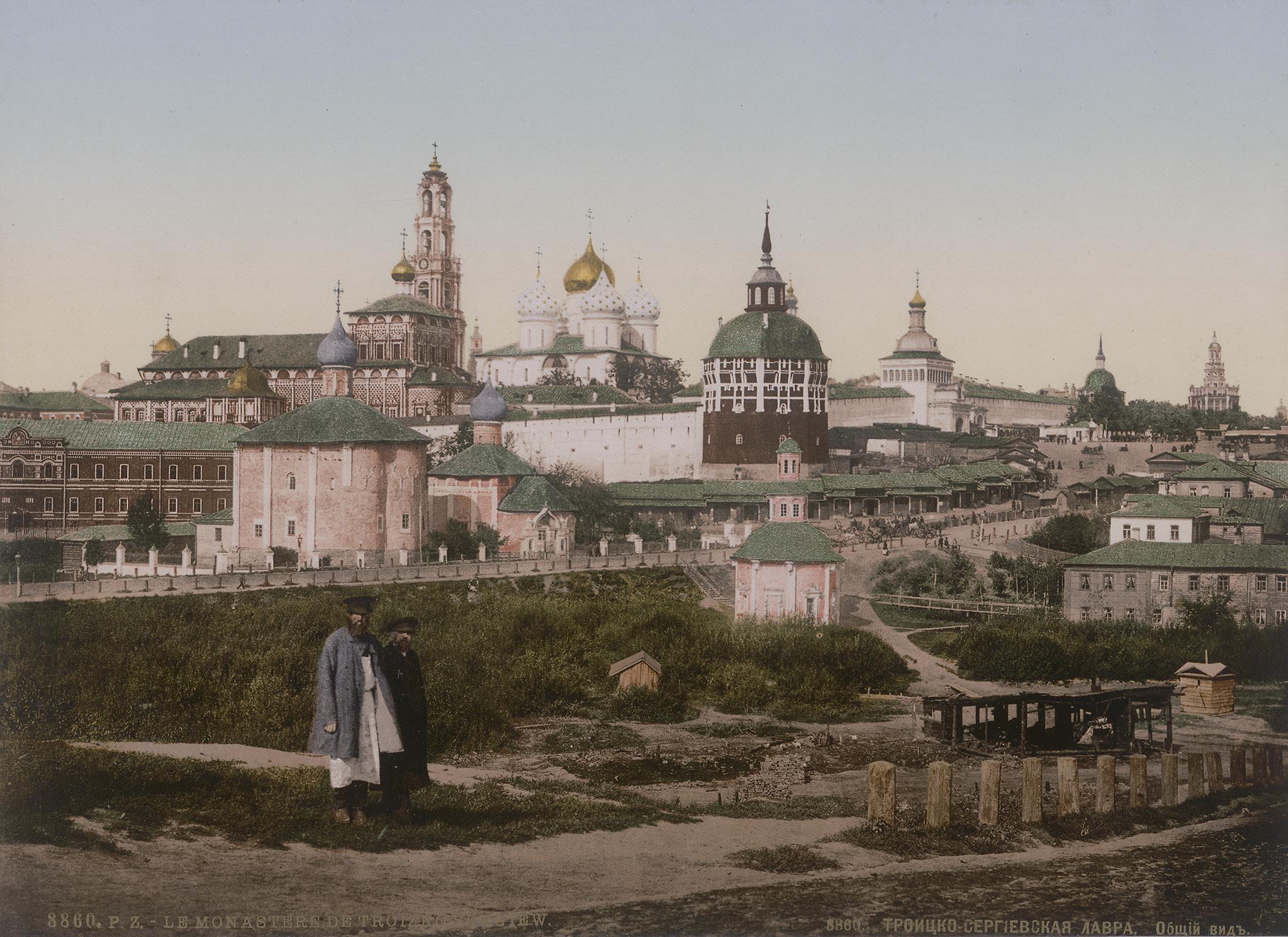


nadar jeune
(Adrien Tournachon, 1825-1903)
4073 Taureau Landais. 1856. Varnished salted paper print, mounted to board. 19,6 x 27 cm (29,7 x 37 cm). Photographer’s signature stamp and number in the negative in lower right, titled “Taureau Landais” in black ink below the image on the mount, numbered “33” in pencil.
1.000 €
Adrien Tournachon, younger brother of the famed Nadar, briefly collaborated with him before a legal dispute in 1855 barred Adrien from using the name “Nadar jeune.” He later focused on documentary photography, notably producing over 120 collodion wet plate negatives of prize-winning livestock at the 1856 Paris agricultural fair, with around 50 included in a presentation album for the Minister of Agriculture. The present print was made using the vernis-cuit technique, which imparts a rich, varnished-leather appearance to the paper.
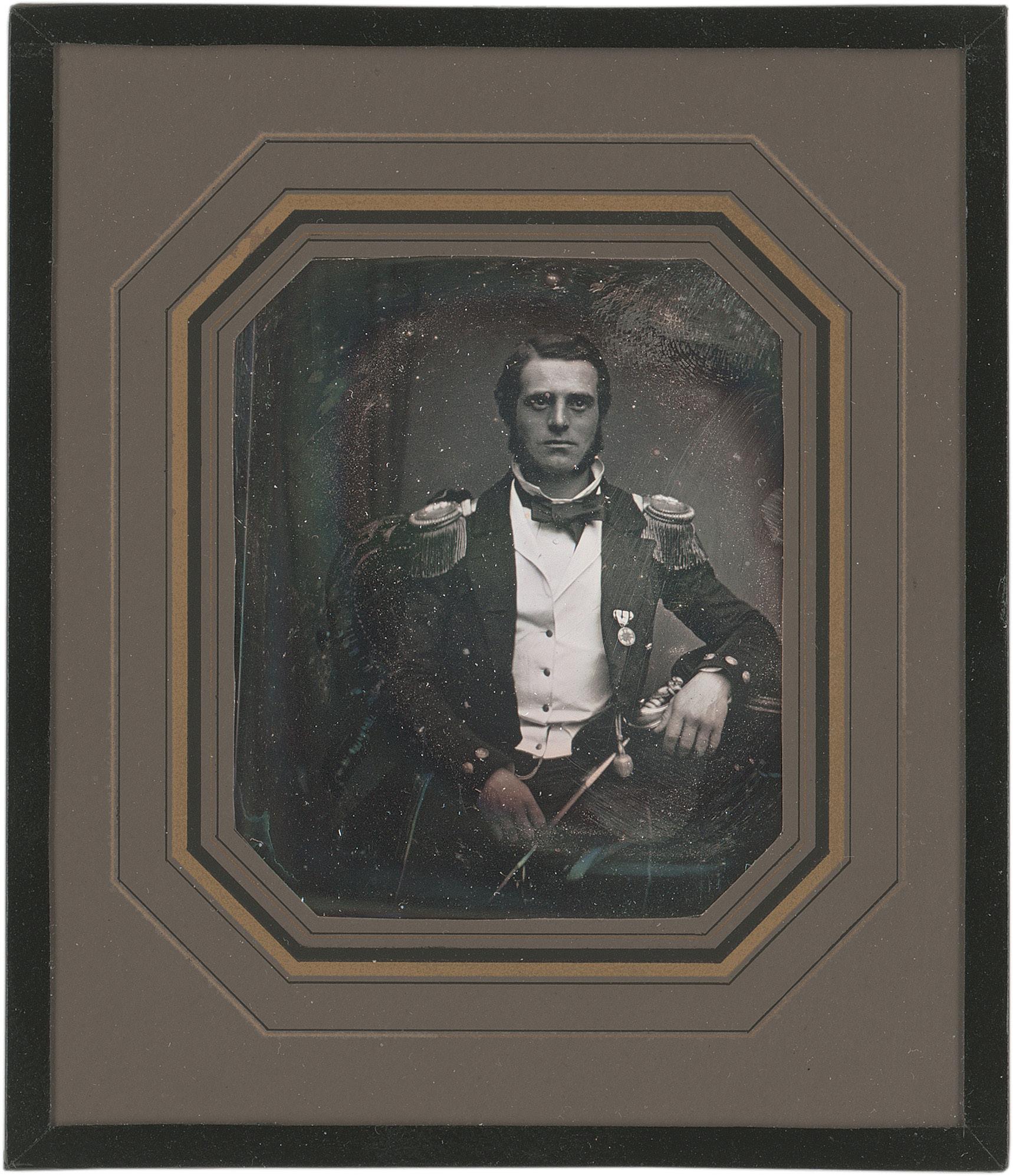
naval history
4074 Photographer: Carl Wigand (1845-1883) Portrait of Adolph Wilhelm Berger (1829-1898). 1850s. Quarter-plate daguerreotype with gilt-ruled paper surround. Ca. 9 x 7,5 cm. Newly sealed behind glass in modern brown canvas clamshell box with giltstamped title „Adolph Berger“.
1.000 €
This finely preserved daguerreotype portrays Adolph Wilhelm Berger in the uniform of a Prussian naval officer, bearing the rank of Leutnant zur See II. Klasse. Likely taken to commemorate his promotion in 1855, the portrait was commissioned at the studio of Carl Wigand in Berlin, then one of the city’s leading daguerreotypists. Berger began his naval training in 1848, when he and four fellow cadets joined the U.S. frigate St. Lawrence in Bremerhaven to study American naval practices - part of a
broader advisory initiative led by Captain Hiram Paulding to support the development of German naval forces. The mission ended in July 1849 with the cadets’ discharge following the ship’s return to Bremerhaven, as Prussia had entered into conflict with Denmark.
Further instruction followed in 1863-64, when Berger trained aboard H.M.S. Black Prince with the British Royal Navy. He sustained serious injuries during the Second Schleswig War in 1864 while serving on the Arcona. Between 1867-1877, he commanded several vessels, including the Musquito, Niobe, Hansa, Renown, and the armored frigate Friedrich Carl. He ultimately rose to the rank of Vice Admiral, marking a distinguished career in the formative years of the Prussian and later Imperial German Navy.
Lit.: Hans H. Hildebrand and Ernst Henriot. Deutschlands Admirale 1849-1945 . Osnabrück: Biblio Verlag, 1988.


new zealand
4075 Photographer unknown. Views of cities and landscapes of New~Zealand. 1860s. 16 albumen prints, several oval, mounted to board. Each circa 19 x 16 cm. Some annotated in pencil in German below the images on the mount as well as on mount verso.
600 €
These early views of New Zealand include cityscapes of Auckland and the harbor of Wellington, alpine and glacial landscapes, as well as a rare early panorama of Nelson. Among the more unusual subjects is a photograph depicting the consulate building of the “Freie und Hansestadt Hamburg” on Queen Street in Auckland.

4076 Photographers: Josiah Martin (1843-1916), and others. Maori portraits. Mid-1870s. 12 albumen prints, mounted to board. Each circa 9 x 6 cm, a few larger. A few with title and number in the negative, some annotated in ink below the image on the mount.
600 €
This group comprises both individual and composite portraits of prominent Maori figures, including Chief Tawhiao, Kawiti, Mohi, Rewi, and Ringorî. Several appear in a photographic montage combining eleven portraits with ethnographic views: a carved meeting house, the settlement at Parihaka, a Rotorua village scene, a war canoe, and six carved figurative sculptures. A print of this montage is held in the British Museum collection. Also included are a larger photograph of a traditional Maori dwelling and several smaller-format studio portraits, offering a rare visual record of Maori leadership and culture in the late 19th century.

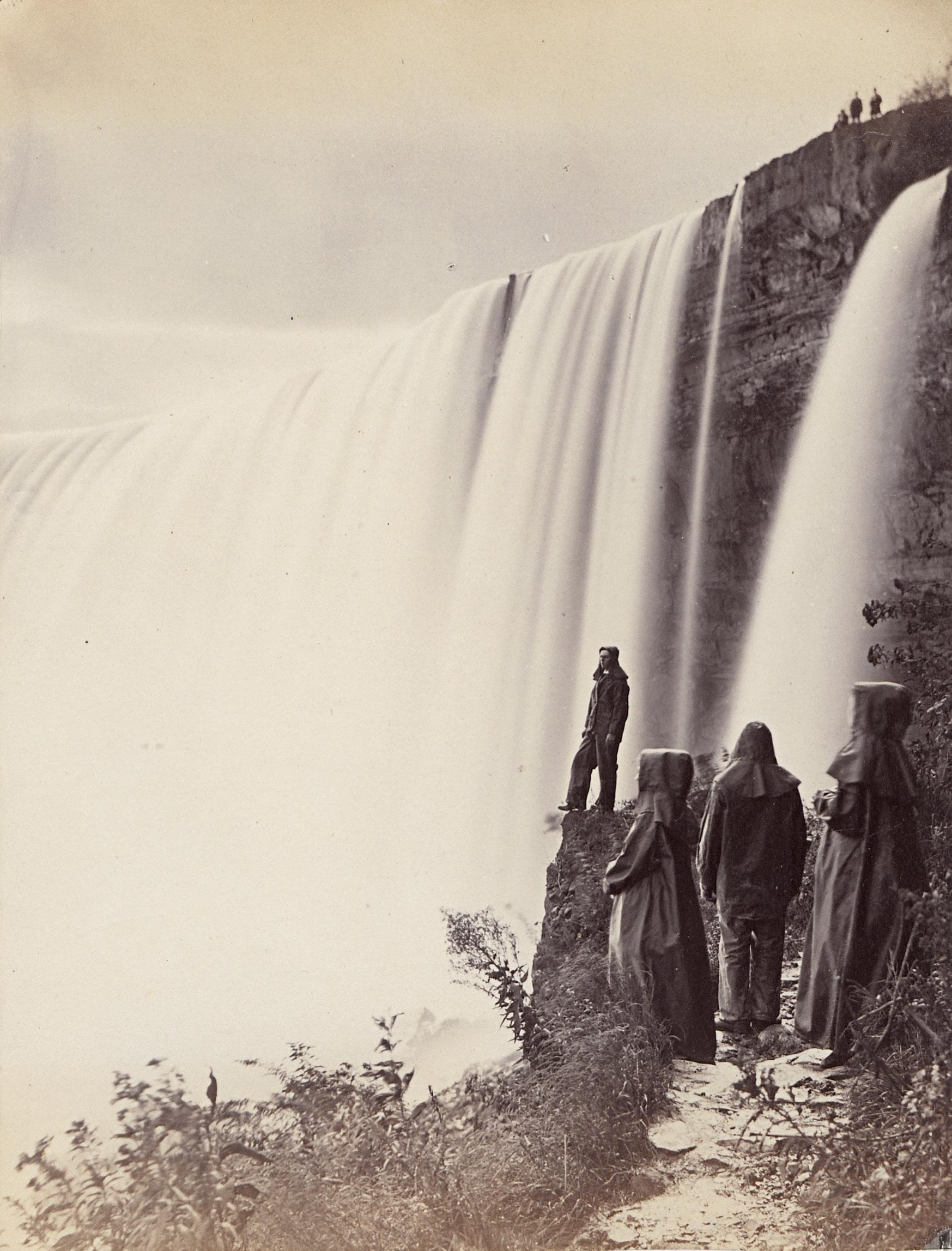
4077 Photographer unknown. Views of Niagara Falls. 1860s. 4 albumen prints, mounted to board. Each circa 19 x 14,5 cm (30,4 x 40,2 cm) or reverse. Some with handwritten captions in the lower margin or on the mount.
600 €
In the nineteenth century, Niagara Falls emerged as a major subject for photography, with pioneers such as George Barker, Samuel J. Mason, and Platt D. Babbitt capturing its dramatic beauty using large-format cameras. Their photographs served both scientific and artistic aims - documenting natural phenomena while also fueling the growing tourism industry. These powerful images helped form Niagara Falls’ status as one of the most iconic and visited natural landmarks of the era.

pannotype
4078 Photographer: Jean Nicolas Truchelut (1811-1890). Portrait of a woman. 1857. Pannotype. 22 x 16 cm (31 x 25 cm). Light hand-coloring and highlighting, mounted in contemporary gilt-lined paper mat, photographer‘s printed paper label and annotated with the sitter‘s name and dates in ink on mat verso.
800 €
The pannotype (from pannus, Latin for linen) is a positive collodion image transferred onto fine fabric, typically linen. Introduced around 1853 by Jean Nicolas Truchelut, the process offered a more affordable and durable alternative to daguerreotypes and early paper prints, though it lacked their luminous quality. Due to its technical complexity and labor-intensive production, the pannotype remained a niche format, adopted by only a handful of photographers. Today, surviving examples are exceedingly rare - especially in larger formats such as this.
prussia
4079 Photographer: Lutz & Witte (attributed to).
Portrait of Prinz August von Württemberg. 1860s. Salted paper print, mounted to card with ornamental frame and gilded border. Ca. 14 x 19 cm. Signed by the sitter in ink on the mount: “Prinz August von Württemberg.”
800 €
This portrait depicts Prince August of Württemberg, a highranking military officer and uncle to King Karl I of Württemberg. Born into one of Germany’s most prominent royal families, August held influential positions within the Prussian army and played a notable role in 19th-century European military and court life. His composed, uniformed appearance reflects the formality and stature expected of a nobleman of his rank.
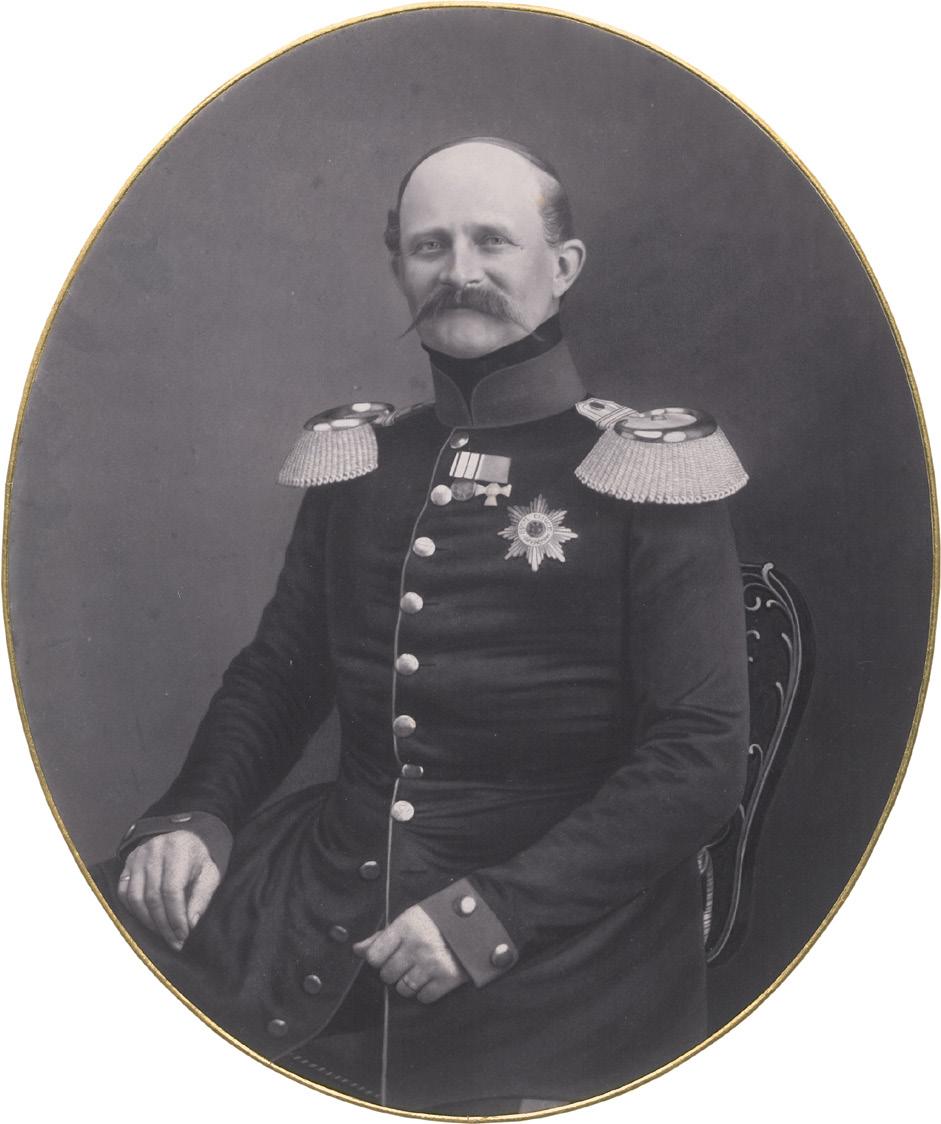

james robertson (1813-1888)
4080 Interior of the Malakoff Tower, Crimea. 1855. Salted paper print, mounted to board. 24,2 x 29,6 cm (38 x 45,8 cm). With ruled border and handwritten caption in black ink below the image on the mount; signed “Robertson” in brown ink in the right margin of the print.
1.000 €
4081 View of Sebastopol harbor from the Redan. 1855. Three-part salted paper print panorama, mounted to card. Each ca. 23 x 30 cm (entire size 38 x 102 cm). Signed “Robertson” in brown ink in the lower left corner of far-left print.
1.800 €


james robertson & felice beato (1813-1888, 1832-1909)
4082 Views of Constantinople. Early 1850s. 12 albumen prints, mounted to board. Most 30,5 x 26 cm or reverse and four 10 x 18 cm. Several signed and titled in the negative in lower edge; with title page with gold lettering, in modern presentation folder.
6.000 €
During the 1850s and 1860s, James Robertson and Felice Beato operated a prominent photography studio in Pera, the European quarter of Constantinople. Their partnership began around 1853, resulting in the formation of Robertson & Beato - one of the earliest commercial photography studios in the region. They were later joined by Beato’s brother, Antonio, further expanding the scope of their activities. Together, they produced an extensive body of work that documented the city’s architectural landmarks, varied landscapes, and scenes of everyday life, offering a vital visual record of the Ottoman Empire in the mid-19th century. Concluding the album are four private photographs depicting British naval officers and a steamer.


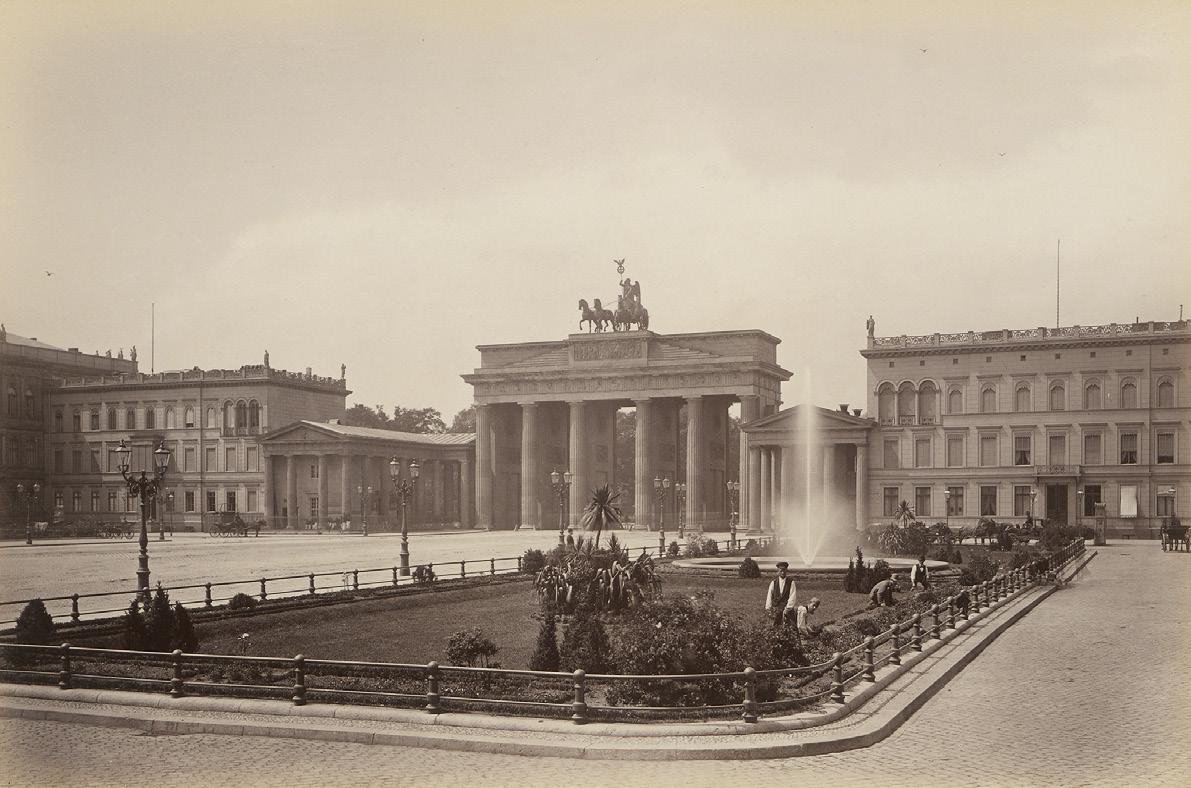

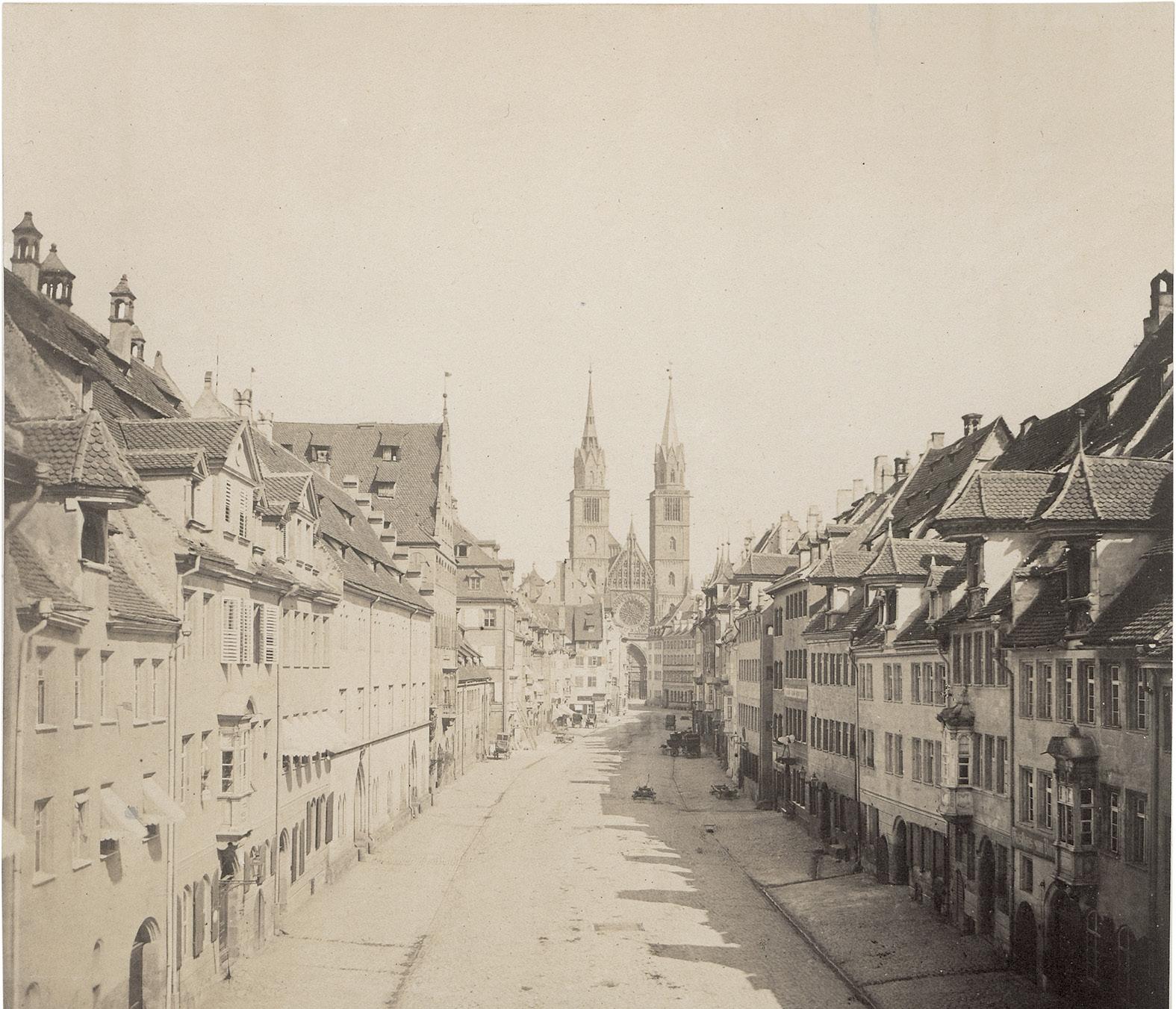
4084
hermann rückwardt (1845-1919)
4083 Berlin und seine Umgebung in Architektur, Landschaft und Plastik (Format IV). 1879-1882. 69 albumen prints, mounted to boards. Each ca. 21,5 x 32 cm or reverse (36 x 49 cm). Each with photographer’s studio information, title, date, and architect’s name printed in letterpress below the image on the mount. Presented in original wooden box with leather covering, gilt tooling, and gilt-embossed title on the lid.
2.000 €
A comprehensive visual survey of Berlin in the late 19th century, this rare compilation presents a wide array of architectural and urban views, many of which depict structures no longer extant. Among the highlights are detailed exterior and interior photographs of the Stadtschloß, the Lustgarten with the old Domkirche, and several now-lost official buildings along Unter den Linden. The album further includes rare views of the historic bridges and canals around Fischerinsel, the monumental ensemble of the Museumsinsel, the Neue Synagoge on Oranienburger Straße, and the Kaiser-Passage with its famed Panoptikum. Also featured are tranquil scenes from the Tiergarten, the Flora in Charlottenburg, and several newly built railway stations, reflecting the city’s rapid modernization.
georg schmidt (1811-1867)
4084 Early views of Nuremberg. 1860s. 6 albumen prints, mounted to boards. Circa 25 x 27 cm and reverse (31 x 40). With handwritten caption in black ink below the image on mount.
1.200 €
This group of early views by Nuremberg-based photographer Georg Schmidt includes prominent architectural landmarks such as the Lorenzkirche, Hauptmarkt with the Schöner Brunnen, the Sebalduskirche, the Rathaus, and views toward the imperial castle. Taken from both street level and elevated vantage points, the images reflect Schmidt’s painterly eye and technical command of the albumen process during the early years of German photography.

pascal sébah (1823-1886)
4085 (Attributed to). Panorama of Cairo. 1870s. Panorama consisting of 6 albumen prints, mounted to boards. Each ca. 25 x 30,5 cm (entire size 25 x 182 cm). In red canvas presentation folder with gilt embossed title „Kairo“ on front cover.
2.000 €
This six-part panorama of Cairo, attributed to Pascal Sébah, depicts a sweeping view of the city’s historical and architectural landmarks, including such sites as the Muhammad Ali Mosque, the Cairo Citadel, the aqueduct, the northern cemetery, and the mosques of Sultan Hassan and al-Rifa’i among others.


pascal sébah and policarpe joaillier (1823-1886, 1848-1904)
4086 Panorama de Constantinople pris de la Tour de Galata. Circa 1880. Panorama consisting of 10 albumen prints. Each circa 25 x 33,5 cm (entire size circa 25 x 340 cm). Mounted to original boards, bound together with linen tape at folds, in original red canvas portfolio with gilt-stamped title and ornament. 1.200 €
An unusually large panorama taken from the Galata Tower, offering a sweeping view across the Bosporus from the Asian shore of Üsküdar to the Topkapi Palace, extending over the Golden Horn and into the western quarters of the city. Lit.: Bodo von Dewitz, ed. An den süssen Ufern Asiens (exhibition catalogue). Cologne: Museum Ludwig, 1988, ill. p. 164 (variant in foldout supplement).

liang shitai
(Liang See Tay, active 1870s-1880s)
4087 Portrait of Li Hongzhang (1823-1901) in Tientsin. 1879. Cabinet albumen print. 14,2 x 10 cm. Mounted to studio board of Byrne & Co., Richmond, annotated „Viceroy Li“ in ink below the image on the mount.
600 €
An intriguing artifact of early photographic circulation, this cabinet photograph is credited to Byrne & Co. of Richmond, England. However, the image is in fact a well-known portrait by Liang Shitai (also known as See Tay), a pioneering Chinese photographer active in Hong Kong during the 1870s. Liang established one of the most prominent studios in the colony before relocating to Shanghai in 1876 and later to Tientsin (Tianjin) in 1880. He became renowned for his portraits of highranking Qing officials and members of the imperial court. Lit.: Terry Bennett. History of Photography in China: Chinese Photographers 1844-1879. London: Quaritch, 2013, ill. p. 261 (with different hand-coloring).
Jeffrey W. Cody and Frances Terpak, eds. Brush and Shutter: Early Photography in China. Los Angeles: Getty Research Institute, 2011, ill. p. 126, plate 6.

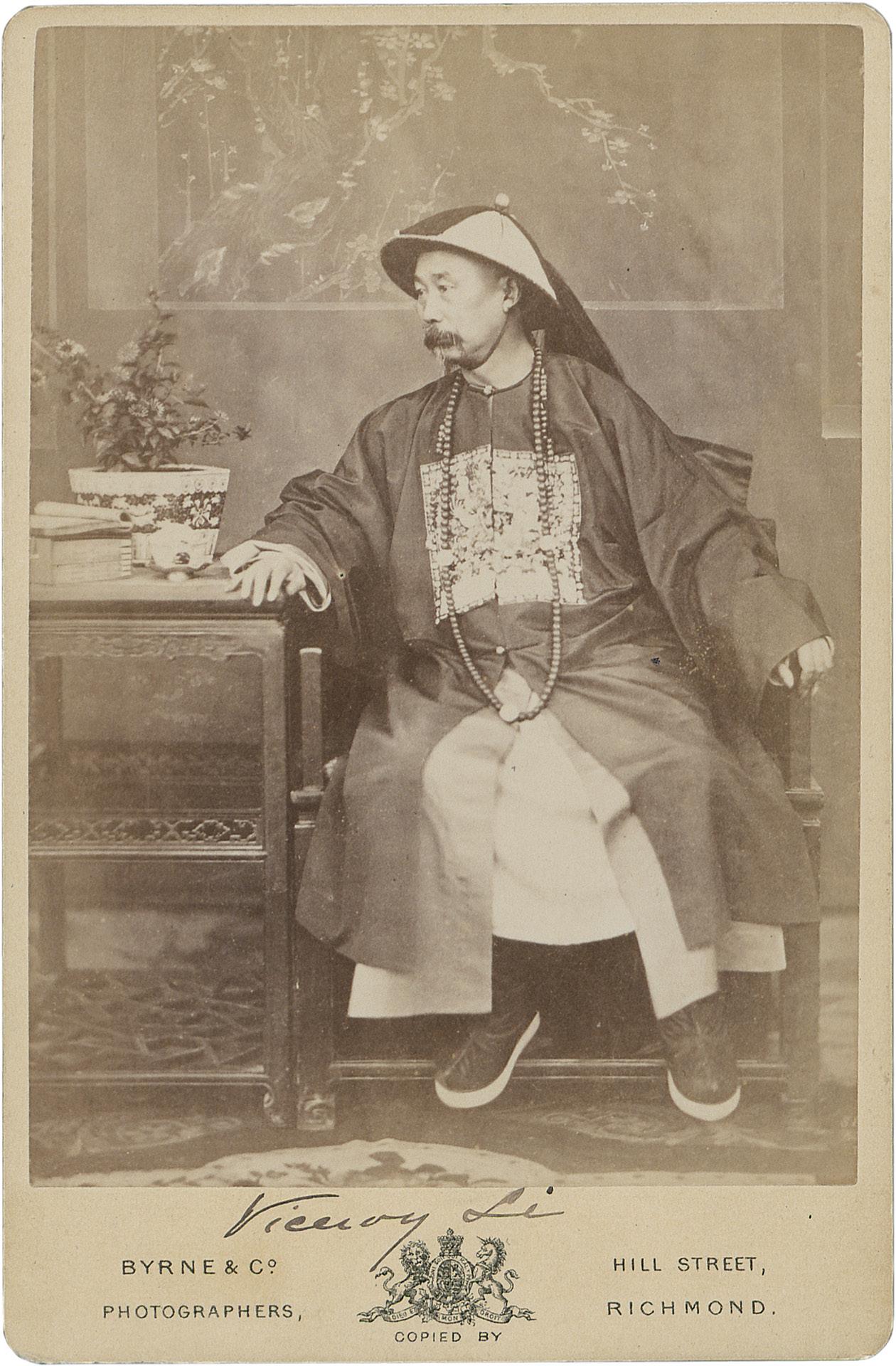
siam
4088 Photographer: Philip Klier (active ca. 1880-1911). Views of Bangkok, Paknam, Rangoon, and Mandalay. 1906. 22 gelatin silver and collodion prints, mounted to boards. Each ca. 22,5 x 28,5 cm (28,5 x 40 cm). Most with handwritten caption in black ink below the image on the mount, some with the photographer’s studio information in the negative.
1.200 €
This group of photographs records significant religious, architectural, and urban sites in Siam and British Burma during a documented journey in late 1906. Among the Bangkok scenes are canal-side dwellings near the Golden Mount (Wat Saket), temple complexes such as Wat Pho and Wat Suthat, and detailed views of the Grand Palace and Wat Phra Kaeo. Further images show the island temple of Phra Samut Chedi at Paknam, the Shwe Dagon Pagoda in Rangoon from multiple vantage points including the Royal Lake and Cantonment Gardens, and distinctive scenes of Mandalay, including palace walls and a large monastic structure. 4087



singapore
4089 Photographers: G. R. Lambert & Co (active ca. 1880-1910) and unknown. Views of Singapore. 1880s-1890s. 20 collodion and albumen prints, mounted on boards. Each ca. 21,5 x 27 cm (27 x 34 cm) or reverse. Most with the photographer’s studio stamp embossed in the lower left corner, some with handwritten titles below the image on the mount. 1.000 €
This extensive group of photographs offers a richly detailed visual record of Singapore at the height of the colonial period. Produced primarily by G. R. Lambert & Co. - the leading commercial photography studio in British Malaya - the images document both iconic landmarks and everyday street scenes. Highlights include the bustling activity of Boat Quay and Keppel Harbor, lively street views with rickshaws and pedestrians in tropical attire, as well as notable colonial-era buildings such as the Police Court and Medical Hall. Also featured is the Hindu temple at South Bridge Road, along with verdant botanical studies, including the striking symmetry of a traveller’s tree (Ravenala madagascariensis) and a distant view of Tyersall Palace nestled within the Singapore Botanic Gardens. One photograph, likely by another photographer, presents a scenic view across the straits toward a Malay village, possibly Kampong Telok Saga on Pulau Brani.




giorgio sommer (1834-1914)
4090 Neapolitan street peddlers. 1870s. 24 handcolored albumen prints, mounted to decorative goldbordered card. Each ca. 9 x 6 cm (14 x 11,5 cm). Some with number in the negative in lower margin.
800 €
This group of hand-colored photographs presents a vivid crosssection of everyday working life in 19th-century Naples. Shown are street vendors, performers, beggars, and artisans - each depicted with their characteristic tools, costumes, or wares, from fishmongers and launderers to cobblers and textile sellers. Carefully staged and richly hand-tinted, the prints belong to a genre popular among foreign travelers, offering romanticized yet documentary portrayals of local Neapolitan “types.”

4091 (detail)
charles soullier (1797-1878)
4091 „Paris-neuf, ou, Rêve et réalité“. 1861. 6 albumen prints mounted to album pages. 7 x 7 cm (24,2 x 14,5 cm). Titled and captioned above and below the image in black ink. Edition Durino & Mercer, Paris.
900 €
Charles Soullier’s photographs from „Paris-neuf, ou Rêve et réalité“ offer a richly detailed visual account of Paris during the transformative years of the Second Empire. Working with the albumen process, Soullier captured iconic sites such as the Pont-Neuf, Place de la Concorde, and the Arc de Triomphe du
Carrousel with remarkable clarity and compositional precision, often emphasizing perspective, texture, and the subtle effects of light and atmosphere. Produced in the early 1850s, these photographs document a city in flux - on the cusp of Baron Haussmann’s sweeping urban renovations. Soullier’s images go beyond straightforward documentation, conveying a quiet lyricism and a contemplative sensibility that present the city not only as a symbol of modernity and progress but also as a space steeped in memory and architectural tradition. The work reflects both a technical mastery of early photographic methods and a nuanced vision of Paris as it straddled past and future.


south & central america
4092 Photographer: Emil Herbruger (1808-1894). Views of Guatemala and Panama. 1860s, album compiled ca. 1876. 24 albumen prints with rounded corners, mounted to album boards. Most circa 20 x 24 cm. Annotated in pencil below images on the mount; bound in full-canvas album with gilt-embossed title „Amerika 1875-1877“.
2.500 €
The German-born photographer Emil (Emilio) Herbruger emigrated to the United States in 1834 and first traveled to Latin America in 1841, working as a photographer in Cuba, Mexico, and Central America. Between 1849-1851, he was active in Colombia, where he also gained recognition as a composer and music teacher. From 1852-1857, inspired by the explorations of Alexander von Humboldt, Herbruger traveled through Peru and Brazil. He later settled in Guatemala, where he produced numerous cartes-de-visite portraits and ethnographic photographs of Indigenous communities. In Panama, portrait photography also became a lucrative line of work. This rare album attests to Herbruger’s mastery of the medium and offers a valuable visual record of the people and cultures of Central America in the mid-19th century.

south pacific
4093 Photographer unknown. Views of Samoa, Fiji, and New Guinea. Late 1890s-early 1900s. 12 gelatin silver prints, mounted to boards. Each ca. 15,5 x 20 cm ( 22 x 28 cm) or reverse. Each with handwritten caption in black ink on the mount.
600 €
This group of photographs offers a rich visual record of life in the German colonial Pacific during the late 19th and early 20th centuries. Likely taken by a missionary-affiliated or ethnographic photographer, the images depict a variety of subjects including Samoan families and women in ceremonial dress, Fijian schoolchildren in front of a thatched classroom, local architecture such as a bamboo church, and the construction of a large traditional meeting house. Other scenes include local converts and indigenous pastors, formal group portraits, and a canoe landing on the beach in the former German protectorate of New Guinea.


théophile auguste stahl (1828-1877)
4094 Views of Rio de Janeiro. 1860s. 25 albumen prints, some with rounded corners. Each ca. 19,5 x 24,5 cm or reverse.
4.000 €
This cohesive group of photographs offers a rare visual record of Rio de Janeiro in the mid-19th century, attributed to the French-born photographer Théophile Auguste Stahl. The views range from prominent landmarks, such as the Imperial Military Academy at Praia Vermelha, the Arsenal da Marinha, and Glória Hill, to sweeping panoramas of the city’s hills and coastline. Several images highlight the urban development of central neighborhoods like Santa Teresa, while others emphasize the dramatic natural setting of Guanabara Bay with Sugarloaf Mountain and Corcovado in the distance. Stahl’s precise compositions convey both the architectural ambition and evolving topography of imperial Rio during a period of dynamic transformation.



robert louis stevenson (1850-1894)
4095 Photographer: John Davis and unknown. Portraits of Robert Louis Stephenson, etc. Circa 1890. 4 albumen prints, mounted on both sides of board. Various sizes between 21 x 13,7 cm and 19 x 23,5 cm. Some annotated in ink below the image on the mount. 800 €
Two photographs in this group feature Robert Louis Stevenson in Samoa - one alongside his wife Fanny, together with local sailors and Samoan villagers - the other shows him with high chief Tuimalealiifano Si’ualo. Also included is a portrait of King Malietoa Laupepa, attributed to John Davis and taken around 1890, as well as a striking image of the German naval vessel SMS Adler shipwrecked in Apia Harbor following the 1889 cyclone.
western sumatra
4096 Photographer: Christiaan Benjamin Nieuwenhuis (1863-1922). Ethnographic studies of the Mentawai People, Western Sumatra. Circa 1895-1905. 8 albumen prints, mounted to board. Each 22,2 x 16 cm (26,4 x 20 cm). Most annotated in pencil on the verso.
1.500 €
This group of photographs by Christiaan Benjamin Nieuwenhuis, taken circa 1895-1905, represents a rare and significant visual record of the Mentawai people of Western Sumatra at the turn of the 20th century. Produced during Nieuwenhuis’s service in the Dutch East Indies, the images reflect the colonial-era ambition to document and classify Indigenous cultures through photography. Beyond their ethnographic purpose, these photographs are among the earliest known visual representations of Mentawai society and thus form an important historical source for the study of material culture, body ornamentation, and premissionary lifeways in the Mentawai Islands.

4096

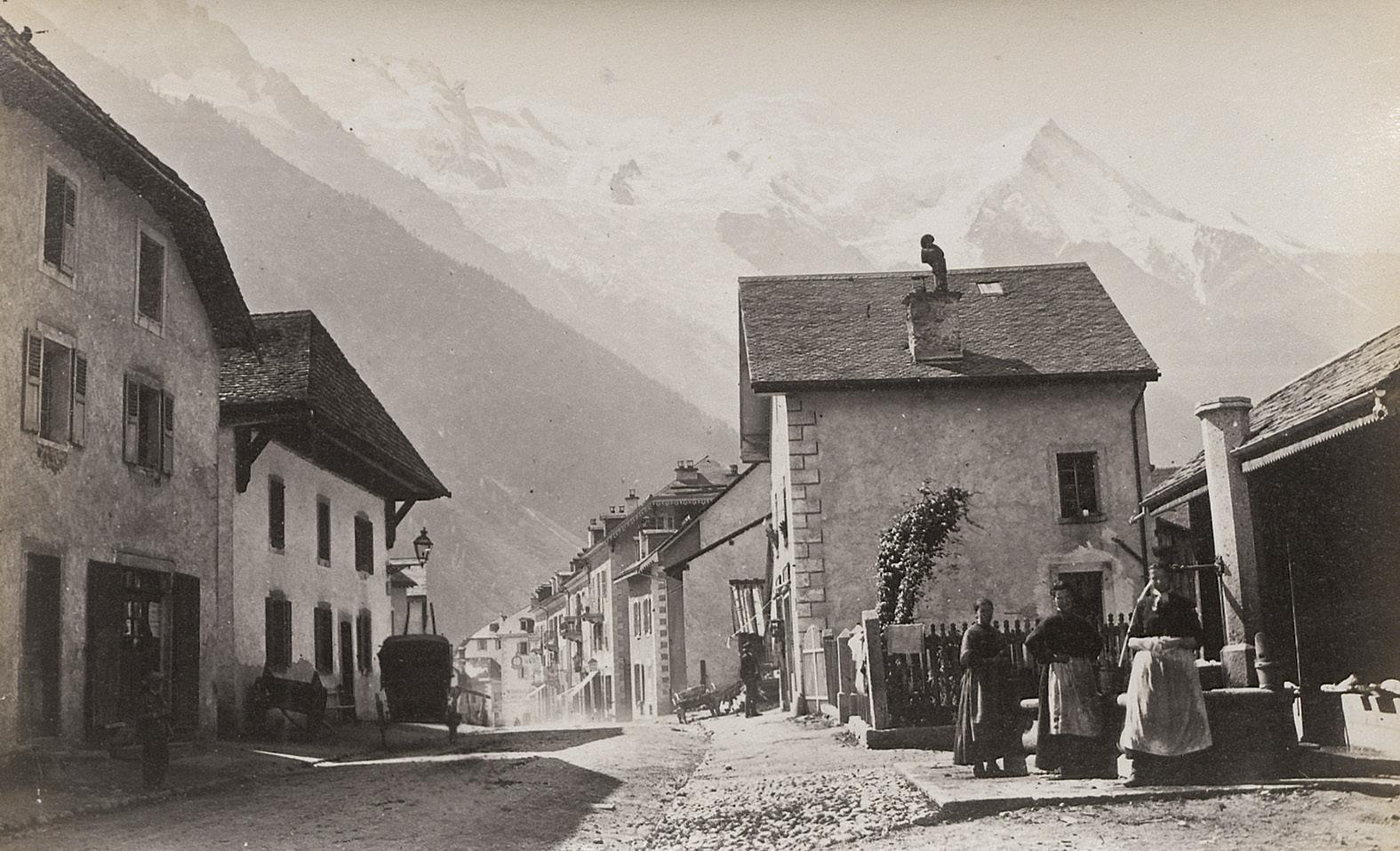
switzerland
4097 Photographer: Frith‘s Series and others
Schweizer Reise August-September 1884 (Views of Switzerland and Alpine landscapes). 1870s-early 1880s. 120 albumen prints. Each circa 10 x 15 cm or reverse. Mounted 2 to each album page, captioned in ink in German below images, bound in green canvas album with black-stamped title Paul Bercht
Schweizer-Reise August-September 1884
2.000 €
The album includes a wide-ranging selection of city and landscape views from Switzerland and surrounding regions, among them Zurich, Lucerne, Brunnen, Axenstein, the Axenstrasse, the Gotthard Railway, Andermatt, the Rhône and Grindelwald Glaciers, Wengernalp, Mürren, Bad Leuk and the Gemmi Pass, Monte Rosa, Breithorn, Chamonix with Mont Blanc, the Mer de Glace (several views), Zermatt with the Matterhorn, Vernayaz, Montreux, Nyon, Geneva, Fribourg, Bern, Basel, and Strasbourg Cathedral. The album was most likely compiled by the Berlin banker Paul Bercht (1847-1899), whose name is stamped on the cover.

john thomson (1837-1921)
4098 Street Life in London . 1877-1878. 12 Woodburytypes, mounted to original boards. Each ca. 11,5 x 9 cm (27 x 21 cm) or reverse. Printed title below image on mount, all with red printed border lines. 1.000 €
This group of photographs comes from Street Life in London (1877-78), a photojournalistic series by John Thomson in collaboration with writer Adolphe Smith. Each image depicts a representative figure from London’s working class, including cabmen, street musicians, chair menders, and vendors of ginger beer and secondhand goods. Taken on location and presented with short explanatory texts in the original publication, the photographs were intended to document the city’s informal economies and daily street life.

togo
4099 Photographer unknown. The Bremen factory and the German mercantile community in Little Popo (Aného), Togo. 1882-84. 4 albumen prints. Each circa 14 x 21 cm. Each mounted to board (23,5 x 29,5 cm), 3 with original captions in ink in German on the mounts.
500 €
These photographs were taken in Little Popo (present-day Aného, Togo), then the principal port on the so-called ‘Slave Coast’ between French-controlled Dahomey (now Benin) and the British Gold Coast (now Ghana), prior to the region’s formal annexation by Germany in 1884. They prominently feature the trading premises of the Bremen firm F.M. Vietor. One image shows its agents alongside representatives of other German trading houses active in Little Popo, all identified in the accompanying caption. Several of these men - including F. Reimann, H.F.A. Eccarius, and Heinrich Randad - were involved in negotiating trade agreements with local chiefs from 1882, laying the groundwork for German colonial expansion. Randad would later be appointed the first commissioner of what became known as the Togoland Protectorate.
torun
4100 Photographer: Eduard Flottwell (1811-1862) and A. Ballerstaedt . St. John’s Church, Torun and views of Danzig. 1861, 1870s. 3 albumen prints. 24,5 x 18,5 cm and 24,5 x 17 cm. Each mounted to board. Flottwell’s blind stamp and Ballerstaedt’s studio stamp below the image on the mount.
900 €


4101 Photographer unknown. Stephansdom, Vienna seen from the West. Mid-1870s. Mammoth albumen print. 56 x 77 cm (mount 68 x 88 cm). Mounted to board (soiled, some traces of use).
600 €
An unusually large and finely detailed albumen print depicting the south façade of St. Stephen’s Cathedral (Stephansdom) in Vienna, taken from Stephansplatz. The image captures the intricate Gothic architecture of the cathedral with striking clarity, including the soaring spire and patterned tile roof. In the foreground, several horse-drawn omnibuses operated by the Neue Wiener Omnibus-Gesellschaft, founded in 1872, highlight the emergence of organized urban transport in late 19th-century Vienna.
20 th century & contemporary photography


merry alpern (b. 1955 )
4102* Shopping #3. 1999. Cibachrome print, mounted to mat. 50,8 x 61 cm (70 x 80 cm). Signed and editioned „1/10“ in black marker on verso.
900 €
In her series “Shopping” (1997-1999), Merry Alpern turns a hidden lens on the performative rituals of luxury retail - high end department stores, fitting rooms, and shopping galleries become stages for gestures of desire, hesitation and surveillance. By photographing anonymous shoppers through discreet cameras, she exposes the subtle choreography of consumer culture: the tension between private impulse and public display within spaces framed by wealth and voyeurism. A print from this edition is held in the collection of the Whitney Museum of American Art.


david armstrong (1954-2014)
4103* Felix in his bedroom, Berlin . 1995. Gelatin silver print. 60,7 x 50,8 cm. Signed, titled, dated and editioned „3/5“ in pencil on the verso.
1.000 €
David Armstrong was an American photographer best known for his intimate, emotionally resonant portraiture. Emerging in the late 1970s alongside his close friend Nan Goldin and the Boston School of photography, he developed a signature style marked by natural light, shallow depth of field, and a quiet, contemplative atmosphere. His portraits - often of friends, lovers, and fellow artists - convey deep trust and vulnerability, capturing fleeting expressions and introspective moments. Felix in his bedroom, Berlin, taken during Armstrong’s travels in Europe, exemplifies his remarkable sensitivity to the inner lives of his subjects.
4104* José Maria and Scott in the Tiergarten, Berlin. 1992. Gelatin silver print. 60,7 x 50,8 cm. Signed, titled, dated and editioned „AP 2“ in pencil on the verso.
1.000 €
4105 Photographers: Emil Leitner (1887-1953) and A. Dittmer. Selected images of marble and stone works incorporated in commercial buildings in Berlin and Hamburg. 1900-1920s. 12 vintage, large-format platinum prints. Various sizes between circa 39 x 29 cm and 20,5 x 26,5 cm. Some with photographer‘s blind stamp in lower corners.
1.500 €
This group of platinum prints documents the stone and marble work of former commercial buildings in Berlin and Hamburg, highlighting the materials and craftsmanship that defined their façades and interiors.



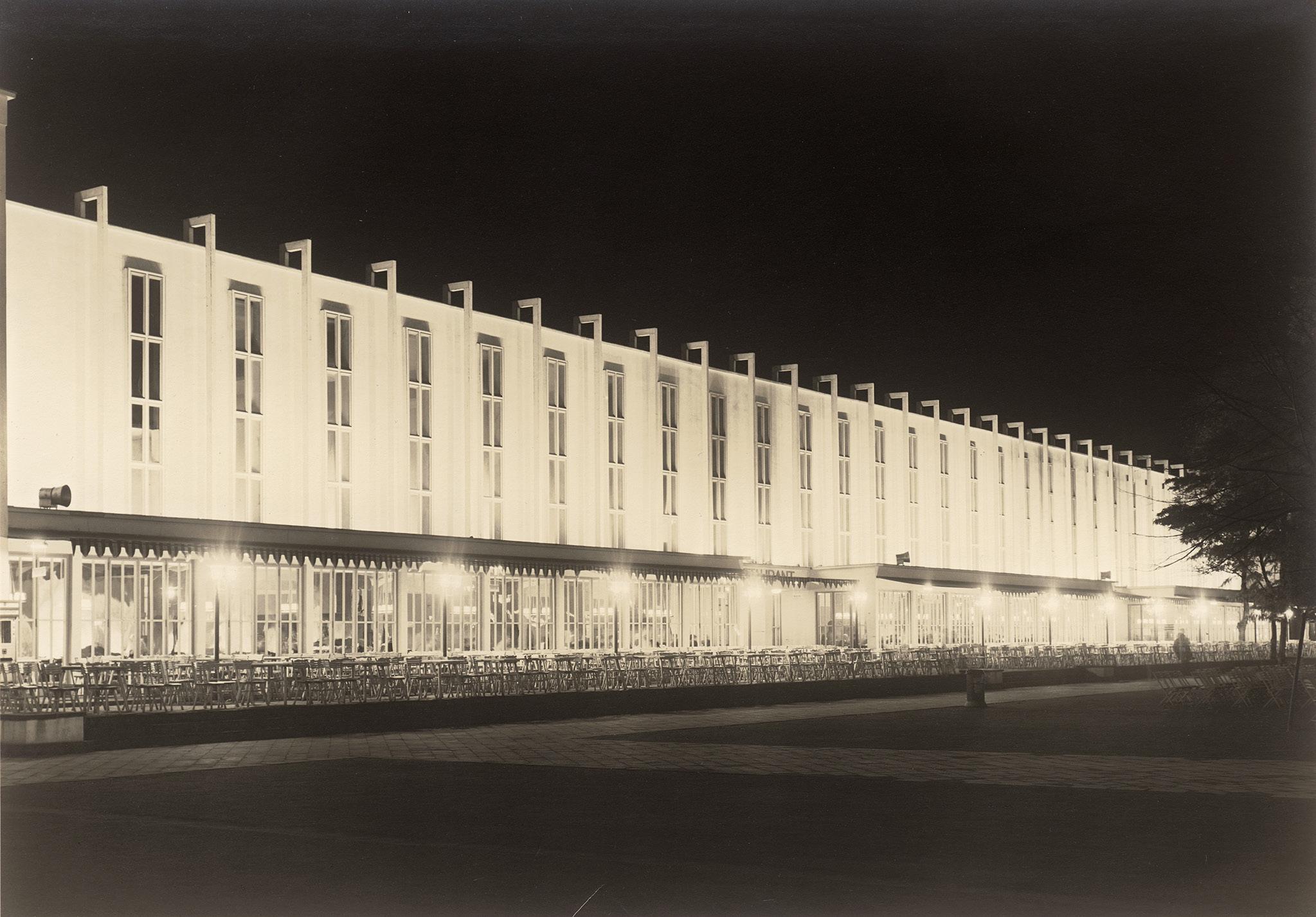
architecture
4106 Photographer unknown. Public Architecture in the Third Reich. 1930s. 21 vintage gelatin silver prints. Each circa 16 x 21,5 cm or reverse. Each mounted to thick card with printed number on the verso, in original cloth presentation portfolio with „Zeiss Spiegel licht, Zeiss Ikon“ stamped in black in upper left corner. 1.000 €
This portfolio comprises technically elaborate photographs documenting state-sponsored architecture and public spaces in Nazi Germany during the 1930s. Included are exterior and interior views of buildings such as the Deutschlandhalle, Reich Aviation Ministry, Sportpalast, and the German Pavilion at the 1937 Paris World’s Fair, as well as images of the Zeppelinfeld in Nuremberg and Unter den Linden decorated for Mussolini’s state visit. The inclusion of several night views and formal compositions suggests that the prints were likely produced for internal or promotional presentation purposes. The photographs offer visual insight into the regime’s use of architecture and spectacle to project power, ideology, and national identity.
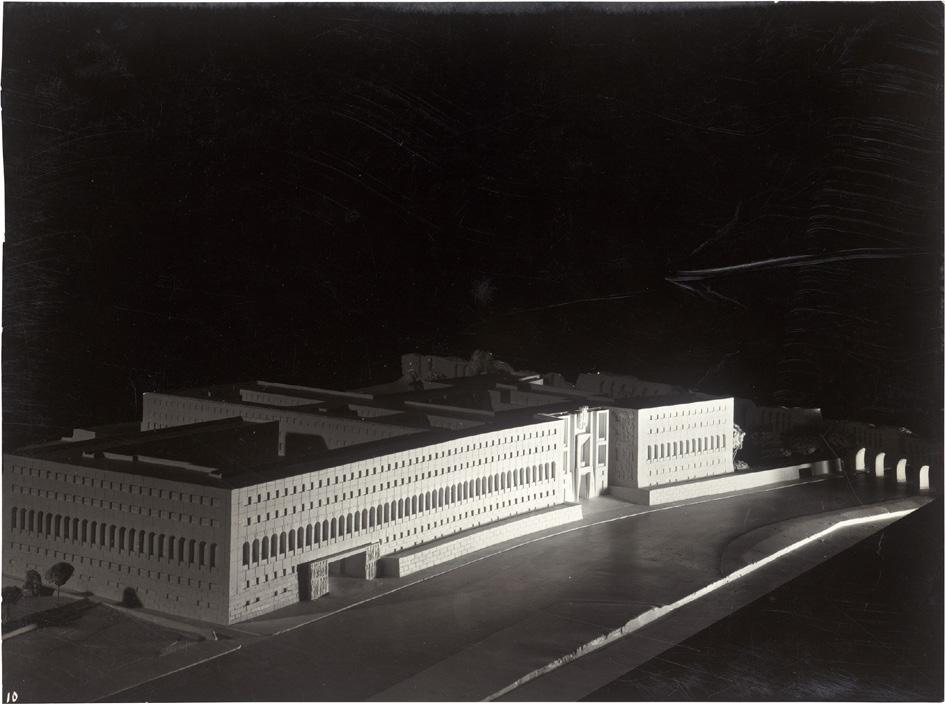
4107 Photographer unknown. Architectural models for Mussolini-era urban planning in Rome. 1930s. 5 vintage gelatin silver prints. Each circa 16 x 21,5 cm. Two with number in negative, each mounted to paper, some with typewritten caption label on mount verso.
500 €
These photographs document architectural models created as part of Fascist-era plans to reshape Rome during the 1930s. According to inscriptions on the mounts, the models represent a proposed but unrealized ministry building situated near the Aurelian Wall. While this specific project was not executed, the images reflect broader ambitions of Benito Mussolini’s regime to impose monumental buildings on the fabric of ancient Rome - a process that often entailed large-scale demolitions and controversial interventions in the city’s historic landscape. Lit.: Harald Bodenschatz/Daniela Spiegel (eds.). Städtebau für Mussolini. Berlin: Dom, 2022.
martha astfalck-vietz (1901-1994)
4108 Nude self-portraits. Circa 1925. 2 vintage reproduction gelatin silver prints by the artist. 10 x 14,5 cm and 14,5 x 10 cm. Each signed in the negative in lower left; one annotated in pencil on the verso.
600 €
In the 1920s, Marta Astfalck-Vietz, who collaborated with photographer Heinz Hajek-Halke on a series of experimental “Combi-Phots”, also created numerous self-portraits in varying settings and costumes, exploring themes of identity, performance, and theatricality. Much of her archive was lost during the 1943 bombing of Berlin, and her work remained largely forgotten until it was rediscovered by Janos Frecot, then head of the photography department at the Berlinische Galerie. A major retrospective followed in 1991. While most of her commercial photography is presumed lost, the surviving works were later donated to the Berlinische Galerie. Lit.: Janos Frecot (ed.). Marta Astfalck-Vietz - Photographien 1922-1935. Berlin: Berlinische Galerie, 1991.
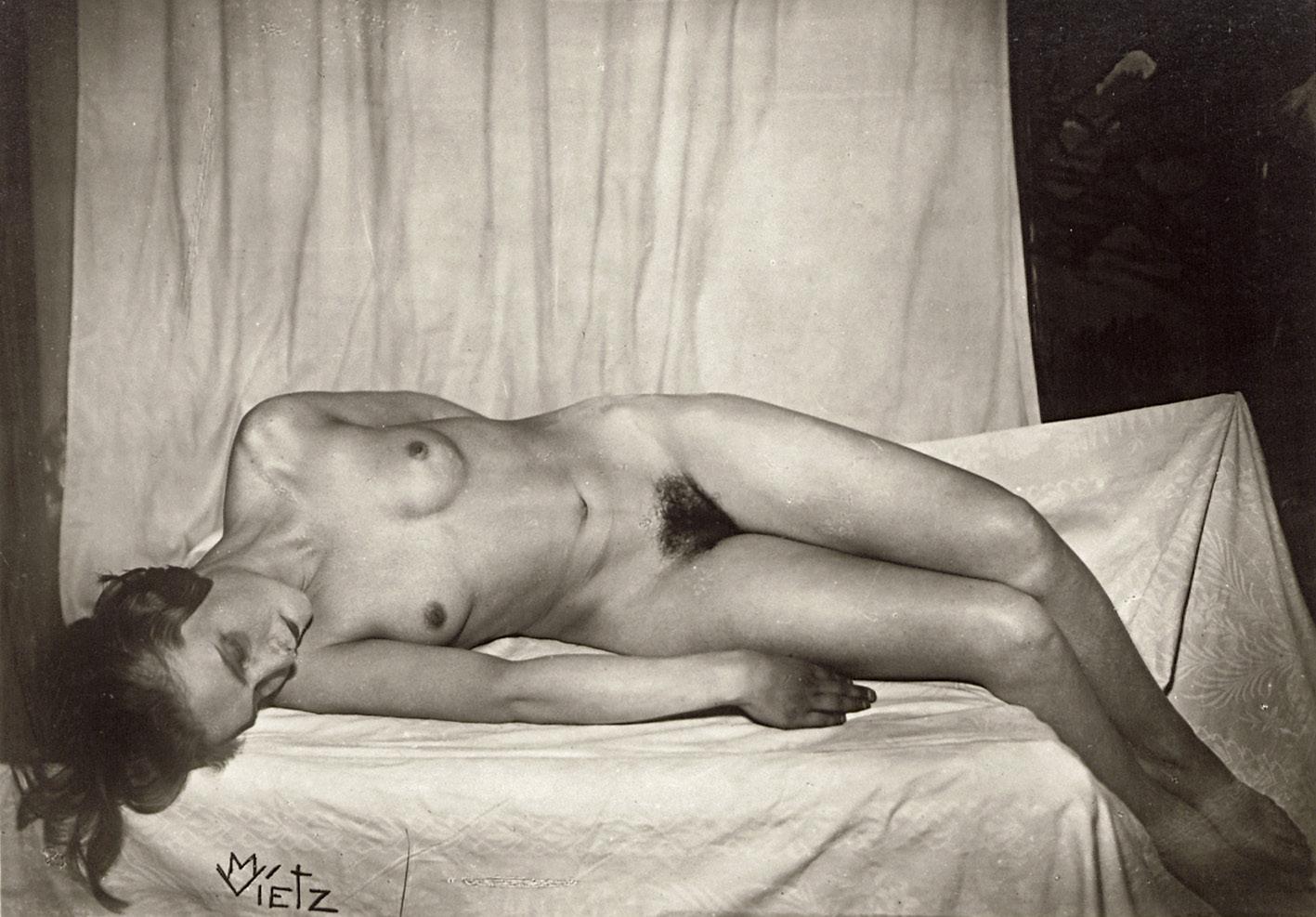
4108

berlin im licht
4109 Photographer: Martin Höhlig (1882-1948). Views of buildings and locations in Berlin illuminated for the project “Berlin im Licht” 1928. 100 vintage, ferrotyped gelatin silver prints on ivory paper. Each circa 22,5 x 16,5 cm and 16,5 x 22,5 cm (Album: 25,5 x 36 cm). Some with number in lower right corner in the negative, inserted in album pages, each captioned in white crayon below the image on the mount. Presented in original full brown leather album with gilt-stamped title „Berlin im Licht“ on front cover, in modern slipcase.
25.000 €
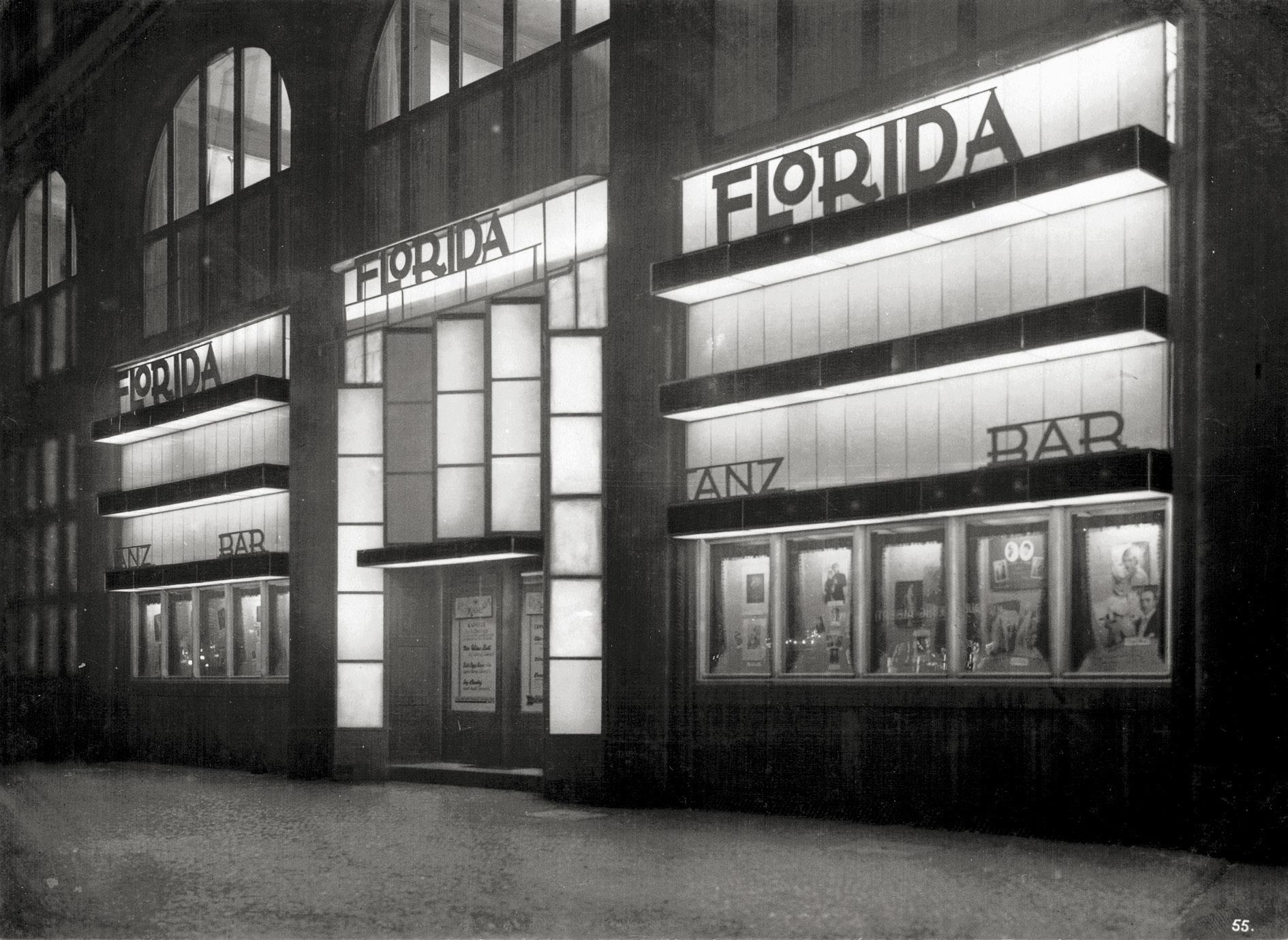
In collaboration with various business organizations and lighting companies - including AEG, Siemens & Halske, and Osramthe city of Berlin launched a visionary publicity campaign for electric light advertising and urban illumination under the slogan Berlin im Licht (Berlin Alight), held from October 13 to 16, 1928. The event attracted nationwide attention and was widely regarded as a celebration of modern urban life. Composer Kurt Weill even contributed a song titled „Berlin im Licht“ for the occasion.
Already in the early 1920s, designer Walter Dexel had begun developing fluorescent lighting for advertising purposes. From 1926 onward, he worked in Frankfurt, designing illuminated signage that aimed to integrate harmoniously with architectural façades. His work included large-scale rooftop lettering, illuminated phone booths, and advertising columns - reflecting the growing interest in using electric light as both a functional and aesthetic element in architecture and marketing.
To document the Berlin im Licht initiative, more than one hundred night photographs were produced. These images, reflecting the principles of the Neue Sachlichkeit (New Objectivity) movement, capture a wide range of locations and lighting installations across the city. The collection offered here comprises a complete set of this photographic series - an important and rare visual record. Only a few such complete albums are known to exist, including one in the collection of the Stiftung
Stadtmuseum Berlin, which was exhibited in 2008 and contains many of the photographs offered here.
The series includes views of modern commercial architecture, such as the department stores Kaufhaus des Westens (KaDeWe) and Michels & Cie. on Kurfürstendamm (both designed by Johann Emil Schaudt); the main branch of Michels & Cie. on Leipziger Straße; the furrier C.A. Herpich & Söhne on Leipziger Straße (Erich Mendelsohn); and several branch offices of Hermann Tietz (Hertie).
Further images document illuminated retail displays, signage, and advertising columns - including the Berlin im Licht column at Großer Stern and the well-known Persil column at Potsdamer Platz. Also represented are cinemas such as the Ufa-Pavillon at Nollendorfplatz (Oskar Kaufmann), the Ufa-Palast on Hardenbergstraße, and the Titania-Palast in Steglitz (Schoffler, Schlönbach & Jacobi). The album also includes hotels like the Excelsior near Anhalter Bahnhof (Otto Rehnig), and entertainment venues such as Potsdamer Platz with Haus Vaterland (Franz Schwechten) and the Columbia Tanz-Cabaret.
Lit.: Franziska Nentwig, ed. Berlin im Licht. Berlin: Stiftung Stadtmuseum Berlin, 2008, ill. pp. 2 and 224-236.
Fred Richter. Die Weltstadt im Licht: Berliner Nachtfotografien von Martin Höhlig aus den Jahren 1925 bis 1932. Quedlinburg: Edition Lichtblick, 2019, many illustrated.







erwin blumenfeld (1897-1969)
4110 Blumenfeld Color. 1940-1950. 10 dye transfer prints, printed 1984. Each between 30 x 20 cm and 32 x 26 cm (sheet size 47 x 39,5 cm). Each with estate stamp, signed by F.C. Gundlach in pencil and numbered „27/50“ on verso. Includes double sheet with title, table of contents, and imprint. Edition PPS Galerie F.C. Gundlach Hamburg. Presented in red linen clamshell box.
8.000 €
Erwin Blumenfeld was a German-born photographer whose radical experimentation and technical mastery helped redefine fashion photography in the 20th century. After early involvement with Dada and photo collage, he moved to Paris in the 1930s and later to New York, where he became a leading contributor to Vogue, Harper’s Bazaar, and Life. Renowned for his innovative darkroom techniques - including solarization, multiple exposures, mirror reflections, and distortions - Blumenfeld infused his images with surreal elegance and psychological depth. His striking fashion and nude studies, celebrated for their bold compositions and daring use of color, bridged avant-garde art and commercial photography, establishing him as one of the most influential image-makers of his era.

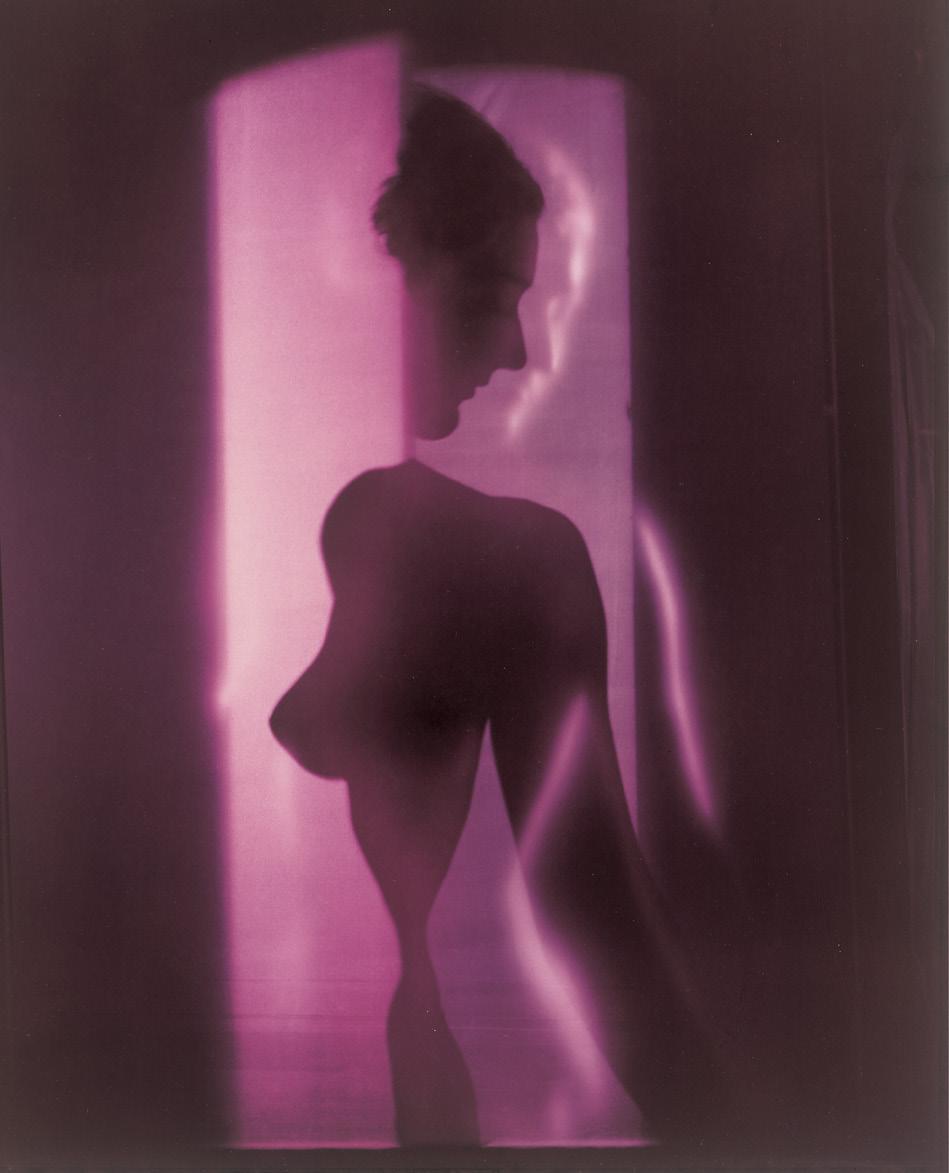


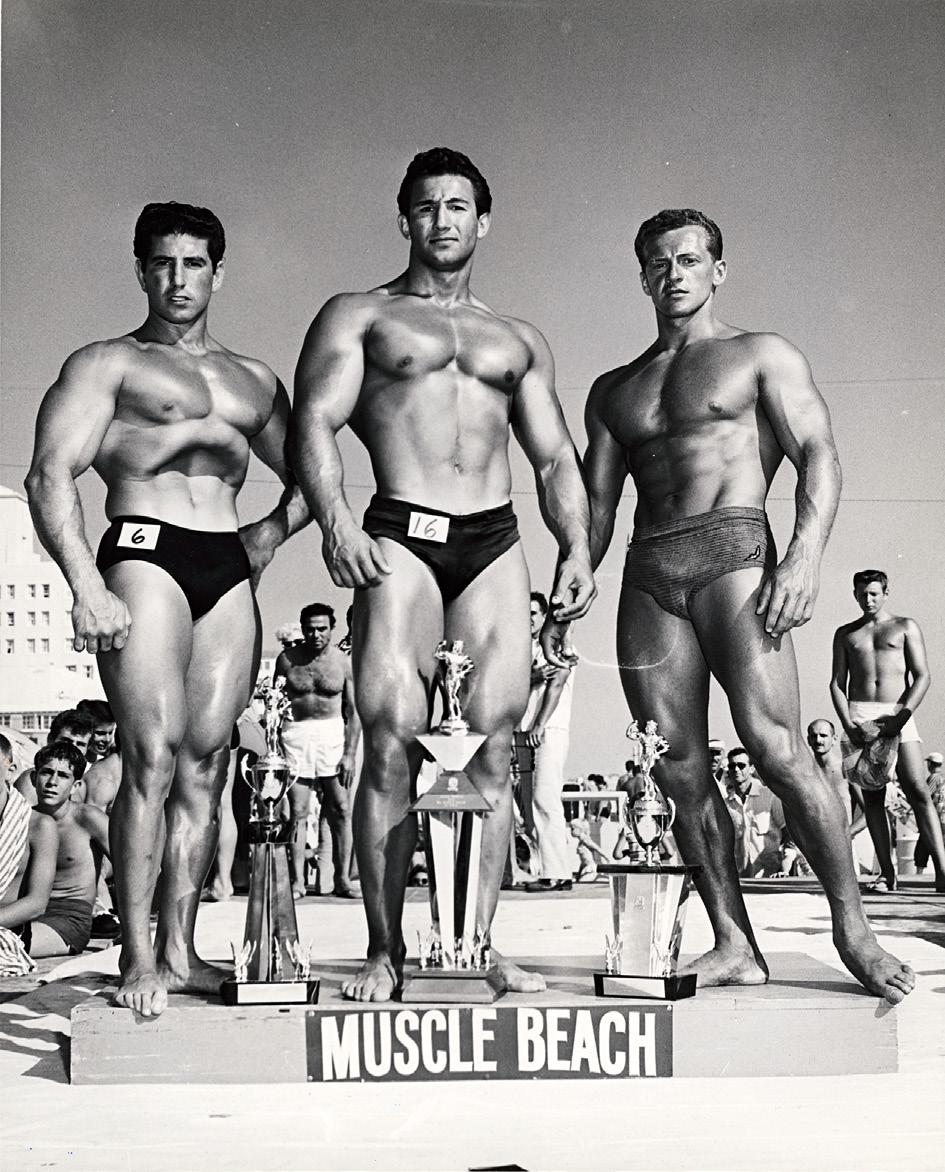
bruce of l.a. (Bruce Bellas, 1909-1974)
4111 Three winners of bodybuilding contest, Muscle Beach, Santa Monica: Charles Collras, Hossein Shokouh und Jerry Boily; Nude of John Manning. 1958. 2 vintage gelatin silver prints, 1 ferrotyped. Each circa 25 x 20,5 cm. One with photographer’s stamp, both annotated in ink and pencil on the verso.
500 €
Bruce Bellas, widely known as Bruce of L.A., was a pioneering photographer of the male physique and nude form during the 1950s and 1960s. In 1956, he founded The Male Figure, a magazine dedicated to showcasing his work and that of fellow physique photographers. Bellas’ images stood out for their polished aesthetic, playful compositions, and often camp-inflected sensibility - blending eroticism, performance, and humor in ways that anticipated later queer visual culture.
norbert bunge (1941-2024)
4112 Ein Loch in der Mauer, Berlin-Kreuzberg. 1962. Gelatin silver print, printed later. 24,5 x 36,8 cm (30,3 x 40,5 cm). Signed, titled and dated by the photographer in pencil, as well as photographer‘s copyright stamp on the verso.
750 €
Norbert Bunge was active in the field of photography for over five decades, both as a freelance photojournalist and as a tireless advocate for the work of overlooked and historically significant photographers. Through his Berlin gallery, argus fotokunst, he curated numerous exhibitions, with a particular focus on socially engaged photography and the visual culture of East Germany.


edward burtynsky (b. 1955)
4113 Shipbreaking # 38, Chittagong, Bangladesh. 2001. Chromogenic print. 86 x 68 cm (104 x 86 cm). Signed, titled, dated and editioned „9/10“ by the photographer on label on the verso, framed under museum glass in wooden frame.
8.000 €
Edward Burtynsky’s „Shipbreaking“ series (2000) examines the vast and hazardous process of dismantling decommissioned cargo ships on the beaches of South Asia, primarily in Alang, India, and Chittagong, Bangladesh. The series emerged from the photographer’s long-standing interest in industrial landscapes and environmental transformation. Prompted by new regulations following the Exxon Valdez oil spill, Burtynsky became intrigued by the fate of obsolete single-hulled tankers and
cargo ships - monolithic structures too massive for conventional scrapyards. His photographs depict immense ship carcasses looming over laborers who, with minimal equipment and safety measures, manually break down these steel giants for salvage. Through large-scale, formally composed color images, Burtynsky captures the tension between the epic scale of global industry and the human effort required to sustain it.

harry callahan (1912-1999)
4114 Providence. 1984. Dye transfer print, printed 1980s. 24,4 x 36,7 cm. Unsigned, with printer‘s stamp on the verso.
1.200 €
Harry Callahan’s color photographs, produced in the later years of his career, are widely celebrated for their vivid, introspective, and often abstract qualities. Exploring a wide range of subjectsfrom landscapes and cityscapes to portraiture - Callahan used color to add a new dimension of depth and emotional resonance, further enriching his already distinguished body of work.

4115 Untitled. 1984. Dye transfer print, printed 1980s 24,4 x 36,7 cm. Unsigned, with printer‘s stamp on the verso.
1.200 €


china
4116 Photographer: Mei Li Photo Studio, Peking; Kang-Sing Chiao, Peking . Views of the Summer Palace, Peking, China. 1900-1920. 5 vintage handcolored gelatin silver prints. Circa 25 x 38 cm and reverse. 4 with photographer‘s studio stamp and some annotated in pencil on the verso.
1.500 €
This group of finely hand-colored prints offers sweeping views of the Summer Palace in Peking (Beijing), capturing pavilions, bridges, and lakeside scenes that reflect the site’s imperial splendor. Likely produced for the early 20th-century export market, the photographs stand out for their rich tonality and delicate hand-coloring.

william christenberry (1936-2016)
4117 Green Warehouse, Newbern, Alabama. 1997. Pigment print, printed later. 28 x 35,5 cm (43,2 x 55,2 cm). Signed, titled, and dated in ballpoint pen on the verso. 1.200 €
A pioneer of Southern vernacular photography, William Christenberry developed a quietly powerful visual language rooted in the landscapes, architecture, and cultural memory of his native Alabama. Revisiting the same humble structures over decades, he documented their gradual decay with a profound sense of personal connection and historical awareness. Green Warehouse, Newbern, Alabama exemplifies his meditative approach - merging documentary clarity with painterly sensitivity and a deep reverence for place and passage of time.

deutsch-ostafrika (former German colony)
4118* Album of German East Africa. Circa 1910. Circa 96 vintage gelatin silver prints. Each circa 8 x 10 cm and reverse. Mounted in brown album window mats, bound in contemporary linen canvas album (23 x 28 cm).
800 €
This album, likely compiled by a German colonial official or settler around 1910, offers a visual record of life in the territory of German East Africa (present-day Tanzania, Burundi, and Rwanda) during the final years of German rule. The photographs include scenes of big-game hunting with displays of animal trophies, as well as depictions of local communities, traditional dwellings, and landscapes. While shaped by a colonial gaze, the images provide historical insight into the region’s social and environmental conditions during a period of foreign occupation.
dornier do x
4119* Photographer: Martin Höhlig (1882-1948). Interior of the Dornier Do X. 1922/23. 4 vintage gelatin silver prints. Each 17 x 23 cm. Two with photographer’s stamp and three annotated in pencil on the verso.
400 €
The Dornier Do X, produced in 1929 by the Dornier company in Germany, was the largest, heaviest, and most powerful flying ship of its time. Conceived by Claude Dornier in 1924, the project began in late 1925 and culminated in its completion in June 1929
allen a. dutton (1922-2017)
4120 Surrealistic collages: The Gobi Caravan; Sibo Lethum; Lustus Espiritus. 1972-73. 3 vintage gelatin silver prints. Each circa 20 x 24,5 cm (26 x 35,5 cm). Each signed, titled and dated by the photographer in felt-tip pen in lower right corner; annotated and monogrammed by the photographer in pencil on the verso.
750 €
Born in 1922 in Kingman, Arizona, Allen Dutton studied painting and sculpture at the Art Center School in Los Angeles. He held a variety of teaching posts in public schools in Arizona, before joining the art department at Phoenix College in 1960, where he taught photography and later served as head of the department until 1982. Between 1963-1964, he studied with Minor White and has acknowledged this time to be one of the greatest influences in his photographic development. His work is in the collections of the Museum of Modern Art, Bibliothèque Nationale in Paris and the Corcoran Gallery in Washington DC.



william eggleston (b. 1939)
4121 Parking lot, Memphis. 1980s. Chromogenic print on Kodak paper. 27 x 40,5 cm (40,5 x 51 cm). Signed by the photographer in ballpoint pen on the verso.
3.000 €
William Eggleston’s pioneering use of color photography elevated ordinary scenes into vivid, emotionally resonant works of art. With an instinctive eye for composition and tone, he turned everyday subjects - parking lots, storefronts, roadside signsinto quietly compelling studies of American life, capturing the poetry in the seemingly mundane.
mitch epstein (b. 1952)
4122 State General Department Store, Hanoi. 1992. Chromogenic print on Kodak Professional Paper. 37,5 x 55,8 cm (51 x 61 cm). Signed, titled, dated, and editioned “1/20” in felt-tip pen on the verso.
2.000 €
4123 Sakhara, Egypt. 1992. Chromogenic print on Kodak Professional Paper. 37,5 x 55,8 cm (51 x 61 cm). Signed, titled, and dated in felt-tip pen on the verso.
2.000 €



4124 Trophon Geversianus-Magellanstraße. 1940/41. Inkjet print on glossy Monoprint R paper, printed 2011. 29,5 x 21 cm. „Alfred Ehrhardt Stiftung“ stamp, therein editioned „1/30“ on the verso. Hinge-mounted in mat and framed under glass in wood frame.
800 €
Widely recognized as a leading figure of New Objectivity photography, Alfred Ehrhardt was one of the most prolific and successful photographers among the former Bauhaus artists. Over the course of his career, he published more than twenty photo books and produced a series of visually striking films that explored modernity through the lens of 1920s avant-garde aesthetics. His experimental documentaries are now considered seminal works in the history of both cultural and scientific filmmaking.
Lit.: Christine Hopfengart, Christiane Stahl, eds. Alfred Ehrhardt Ostfildern-Ruit: Hatje Cantz, 2001, ill. p. 87.
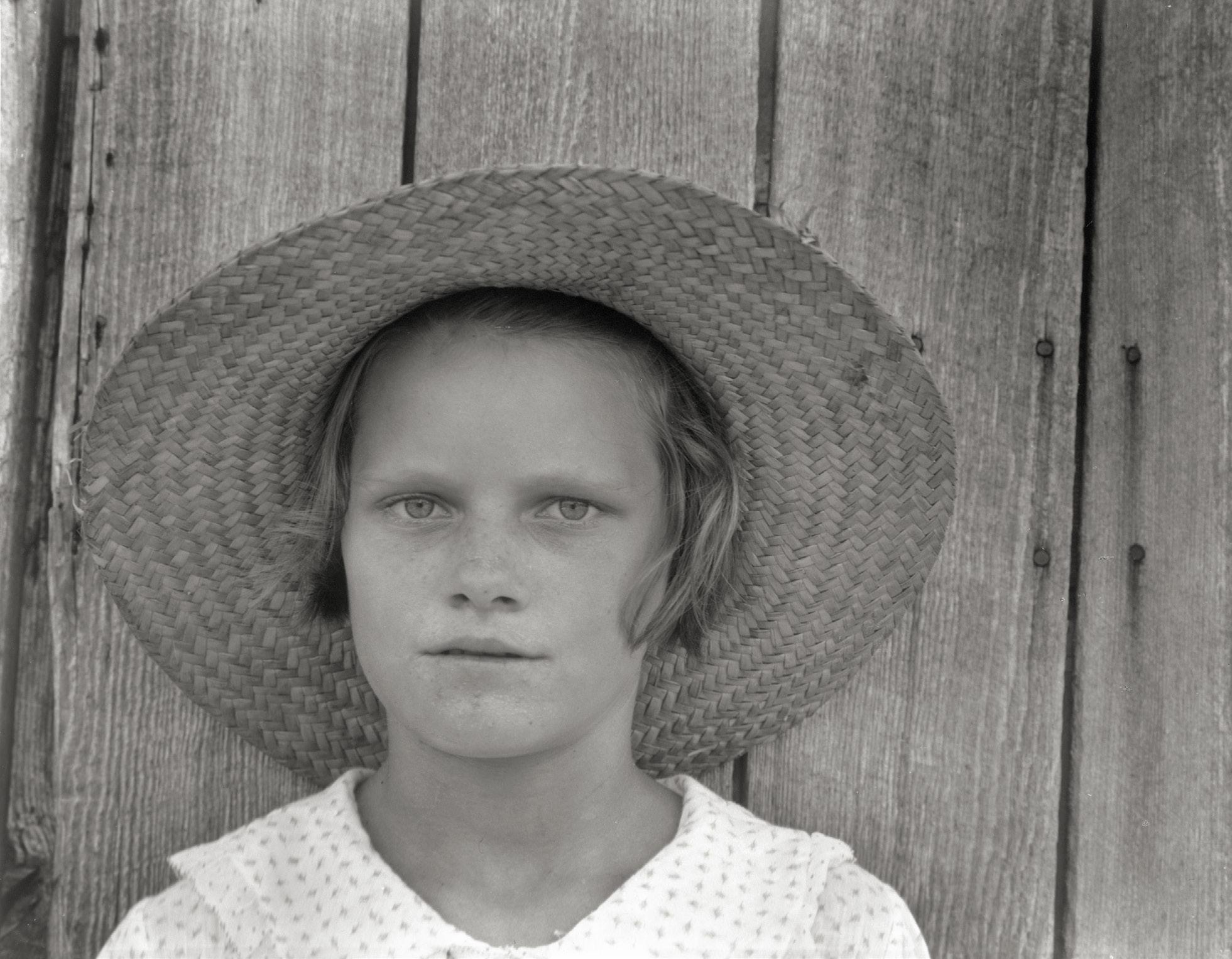
walker evans (1903-1975)
4125 Untitled (Tenant farmer‘s daughter, Hale County, Alabama). 1936. Large-format, matte gelatin silver print, printed 1970s by the Library of Congress from the original negative. 28 x 35 cm. „Reproduced from the collection of the Library of Congress“ stamp and number notations in pencil on the verso. Taped to linen window front mat.
1.500 €
Walker Evans’ work for the Farm Security Administration (FSA) was instrumental in shaping the visual record of rural America during the Great Depression. His photographs captured the stark realities faced by individuals and communities, portraying economic hardship and social dislocation with clarity and empathy. Working alongside other FSA photographers, Evans helped create a lasting documentary of the era - one that not only deepened public awareness but also helped define documen-tary photography as a powerful vehicle for social insight and historical preservation.
Lit.: John T. Hill. Walker Evans: Lyric Documentary. Göttingen: Steidl, 2006, ill. p. 176.
John T. Hill, Gilles Mora. Walker Evans: Der unstillbare Blick Munich: Schirmer/Mosel, ill. p. 204.
emeric feher (1904-1966)
4126 Baigneurs. 1935. Gelatin silver print, printed later. 20,2 x 21,5 cm. Photographer‘s stamp on the verso.
600 €
Emeric Fehér was an Austro-Hungarian-born photographer, who became a Yugoslav citizen in 1919 and obtained French nationality in 1939. Best known for his use of the square 6 x 6 cm format, Fehér produced a distinctive body of modernist work, marked by clarity and compositional balance. From 1933-1939, he was associated with the Paris-based Alliance Photo agency founded by Maria Eisner. His photographs are held in major collections, including the Centre Pompidou, and have been featured in numerous exhibitions.
Exhibition: „Bauhaus Photographie“, Arles 7.7.-30.9.1983

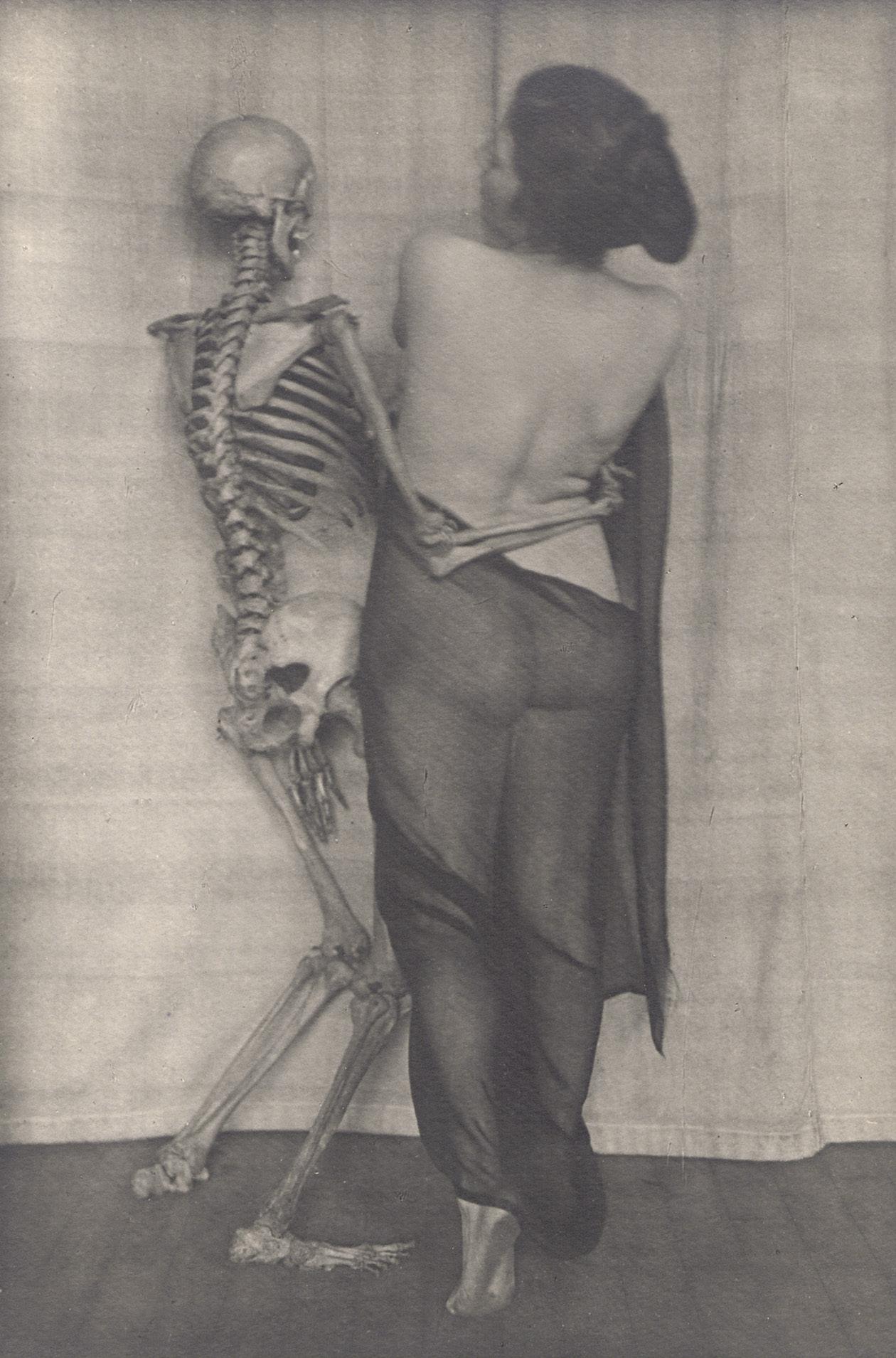
franz fiedler (1885-1956)
4127 Portfolio series: “Narre Tod, Mein Spielgesell”. Circa 1922. 10 vintage gelatin silver prints. Various sizes, between 21 x 14 cm, 15,5 x 15 cm and 14,5 x 20, 2 cm. Each mounted to colored card, with printed title page. Presented in original half-linen portfolio with gilt-stamped title label „Narre Tod, Mein Spielgesell“ on front cover.
1.200 €
Franz Fiedler’s portfolio series “Narre Tod, Mein Spielgesell”, published circa 1922, presents a striking sequence of images depicting a nude female figure interacting with a skeletonan allegorical meditation on the interplay between life and death. Prints from this series were produced in varying quality and are often encountered with notable fading and a soft, brownish hue. The present set, however, stands out for its exceptional tonal richness and clarity, offering a far more refined visual impression than typically seen.

helga fietz (Helga Franke 1907-1958)
4128 The artist Max Beckmann (1884-1950) in his studio, Amsterdam. 1938. Vintage gelatin silver print on Gravura paper. 7,3 x 10,8 cm. Mounted along upper edge to original cream-colored card, photographer‘s stamp on mount verso.
1.200 €
Best known for her iconic portraits of Max Beckmann, Helga Fietz also photographed numerous other artists throughout her career. In addition to portraiture, she developed a particular affinity for the horses of Iceland, a subject she returned to often and which featured prominently in several published volumes of her work.
Lit.: Carla Schulz-Hoffmann, Judith C. Weiss, eds.
Max Beckmann: Retrospektive. Munich: Städtische Galerie im Lenbachhaus, 1984.

4129 Photographer: Mac Walten (Max Gruenthal, 1872-1936). Stills from the German silent film Herzog Ferrantes Ende, directed by Paul Wegener and Rochus Gliese. 1922. 25 vintage matte gelatin silver prints. Each circa 26,5 x 21 cm and reverse. All but one mounted to board, each signed by the photographer in pencil below the image on the mount.
750 €
This striking group of film stills from the early German silent film Herzog Ferrantes Ende exemplifies the aesthetics of German Expressionist cinema in the early 1920s. Although set in the Middle Ages, the film’s art direction by Walter Reimannrenowned for his work on The Cabinet of Dr. Caligari - embraces a distinctly modern, expressionist visual style. Paul Wegener stars in the title role of Duke Ferrantes and co-directed the film alongside Rochus Gliese.
Provenance: The estate of Austrian artist and puppeteer Richard Teschner (1879-1948).

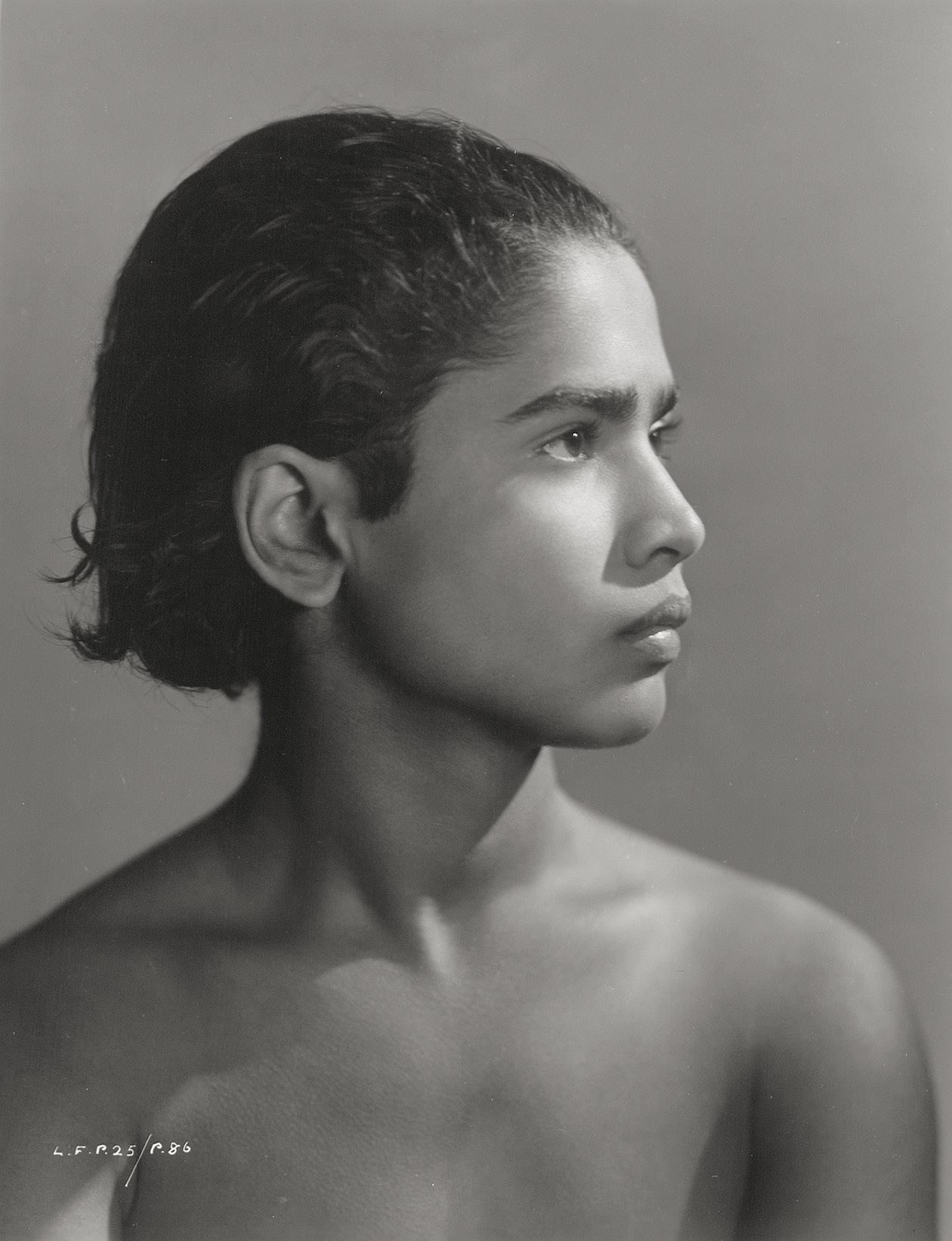
film photography
4130 Photographer unknown. The actor Sabu in his role as Prince Azim in the film The Drum . 1938. Vintage ferrotyped gelatin silver print. 25,3 x 20 cm. Number in the negative in lower left; archive stamps and annotated in pencil on the verso.
600 €
Sabu Dastagir, born Selar Sabu in 1924 in India, rose to international fame under the mononym Sabu, becoming one of the first South Asian actors to achieve stardom in Western cinema. Discovered at age 13 by documentary filmmaker Robert Flaherty, he made his screen debut as an elephant driver in the British film Elephant Boy (1937). His natural charisma and screen presence quickly led to leading roles, including The Drum (1938), produced by Alexander Korda, and most memorably as Abu in the Technicolor fantasy classic The Thief of Bagdad (1940).
arno fischer (1927-2011)
4131 Ostberlin, Friedrichstr. Ecke Unter den Linden. 1959. Gelatin silver print on doubleweight paper, printed 1980s. 27.5 x 42 cm (33.7 x 46.5 cm). Signed, dated, and annotated by the photographer in pencil, with photographer’s stamp and collection stamp on the verso.
750 €


4132 Untitled (SBM) 11. 2022. Pigment print. 75 x 51 cm. Signed, dated and editioned „3/12“ by the photographer in pencil below the image in the margin. Framed under glass in wooden frame.
2.000 €
Thomas Florschuetz is a prominent German photographer known for his abstract and experimental photographic work. His photographs explore themes of light, form, and texture, often reducing subjects to their essential, minimalist components. In the present image Florschuetz‘s subject is the landscape garden at Sítio Roberto Burle Marx in Rio de Janeiro. Here the relationship between space and surface plays an essential role and an interplay develops between the composition of shapes and gradations of black and white tones.

robert frank (1924-2019)
4133* Mabou Window. 1977. Gelatin silver print, printed 1988. 35,5 x 27,7 cm. Title „Mabou Window“ scratched into the surface of the print. Signed, dated, and inscribed in black ink on the verso: “For Walter - till he visits the Window, NYC Aug. 9, 1988”; with an inventory number in pencil on the verso.
8.000 €
Taken from the window of his home in Mabou, Nova Scotia, Mabou Window (1977) exemplifies the quiet intensity and deeply personal tone that came to define Robert Frank’s later work. Following the critical success of The Americans, Frank turned away from traditional photojournalism to focus on his immediate surroundings, creating images charged with solitude, mem -
ory, and loss. The stark winter landscape, seen through a pane of old, distorted glass and partially framed by the window’s edge, evokes both physical and psychological distance. Often interpreted as a tribute to his daughter Andrea, who tragically died in a plane crash in 1974, the image resonates with themes of absence and mourning. This print, made in 1988, bears the scratched title on the surface and is dedicated in black ink on the verso: “For Walter - till he visits the Window, addressed to Swiss publisher and close friend Walter Keller. Variants of this print are held in the collections of the Museum of Modern Art, the Museum of Fine Arts, Houston, and the Art Institute of Chicago.
Provenance: From the artist to Walter Keller, publisher of Scalo, Private Collection, Zurich.


4134* Film stills from Energy and How to Get It. 1981.
2 gelatin silver prints. 35,5 x 27,8 cm. Signed and titled in blue ink; cropping marks in blue crayon on the recto; inventory number in pencil on the verso.
8.000 €
These two prints are film stills from Robert Frank’s satirical pseudo-documentary Energy and How to Get It (1981), made in collaboration with Rudy Wurlitzer and narrated by William S. Burroughs. The film blends fiction, absurdist humor, and social commentary, following a fictional inventor’s efforts to promote a mysterious new energy source. Characterized by Frank’s raw, high-contrast visual style, the images reflect the film’s disorienting mix of industrial landscapes, mysticism, and critique of American ambition and technological hubris.

robert frank
4135* E for Empire. 1995. Gelatin silver print.
27,8 x 35,4 cm. Signed, titled and dated on recto below the image; with a wriiten dedication
„For Walter Keller and his E“.
6.000 €
This print also bears a handwritten dedication to Walter Keller, the Swiss publisher and curator with whom the artist shared a close professional relationship.
Provenance: From the artist to Walter Keller, publisher of Scalo, Private Collection, Zurich.

gisèle freund (1908-2000)
4136 James Joyce, Paris. 1939. Dye transfer print, printed later. 30,2 x 20,2 cm (46,3 x 35,5 cm). Signed by the photographer in felt-tip pen in lower margin, as well as copyright blind stamp in lower right corner; photographer‘s/copyright stamp on the verso. Hingemounted in mat.
1.200 €
The German-born French photographer and photojournalist Gisèle Freund was renowned for her documentary work and intimate portraits of writers and artists. She pioneered the use of the Leica camera for reportage and was among the first to employ Kodachrome and Agfacolor films for color portraits, capturing figures such as James Joyce, Virginia Woolf, and André Malraux with a uniquely candid style. Her contributions significantly shaped 20th-century photography, blending sociological insight with artistic expression.
Lit.: Gisèle Freund. Photographien und Erinnerungen. Munich: Schirmer Mosel 1998, ill. p. 88.
4137 Colette, Paris. 1939. Dye transfer print, printed later. 30 x 20,5 cm (46 x 35,5 cm). Signed by the photographer in felt-tip pen in lower margin; photographer‘s/ copyright stamp on the verso. Hinge-mounted in mat.
1.000 €
Lit.: Gisèle Freund. Photographien und Erinnerungen. Munich: Schirmer Mosel 1998, ill. p. 85.


gisèle freund
4138 Varieté clown. 1946. Vintage gelatin silver print. 25 x 17 cm. Photographer‘s credit stamp and annotated in pencil and crayon on the verso. 1.000 €
Lit.: Gisèle Freund. Photographien und Erinnerungen. Munich: Schirmer/Mosel, 1998, ill. p. 190.
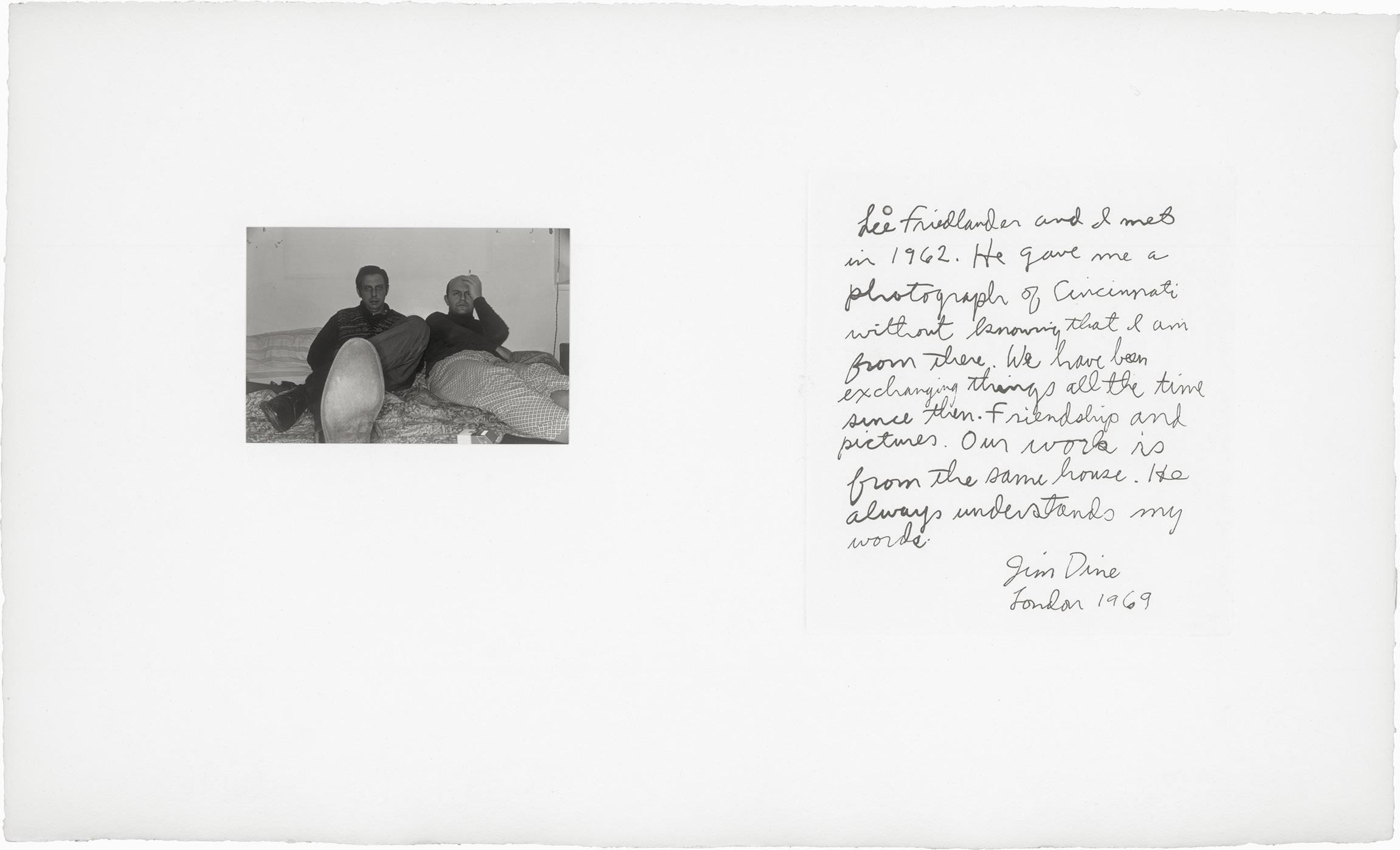
lee friedlander & jim dine (b. 1934, b. 1935)
4139 Photographs and Etchings. 1969. 17 gelatin silver prints by Lee Friedlander and 16 etchings by Jim Dine. Each between 12 x 18 and 18 x 26 cm or reverse (46 x 76 cm). Housed in original black faux-leather clamshell box with embossed title (entire size 49 x 80 x 3 cm). Published by Petersburg Press, London, in an edition of 75 plus 15 artist’s proofs.
5.000 €
In this unusual pairing of mediums and sensibilities, Photographs and Etchings brings together Lee Friedlander’s sharply observed street photography with Jim Dine’s gestural, psychologically charged etchings. Rather than illustrating or responding to each other, the works inhabit parallel registersFriedlander’s formal precision counterbalanced by Dine’s raw mark-making - offering a dual meditation on surface, structure, and subjectivity in the American visual landscape of the late 1960s. The portfolio reads less as collaboration than as a deliberate juxtaposition, allowing two distinctive artistic voices to echo, interrupt, and refract across the page.
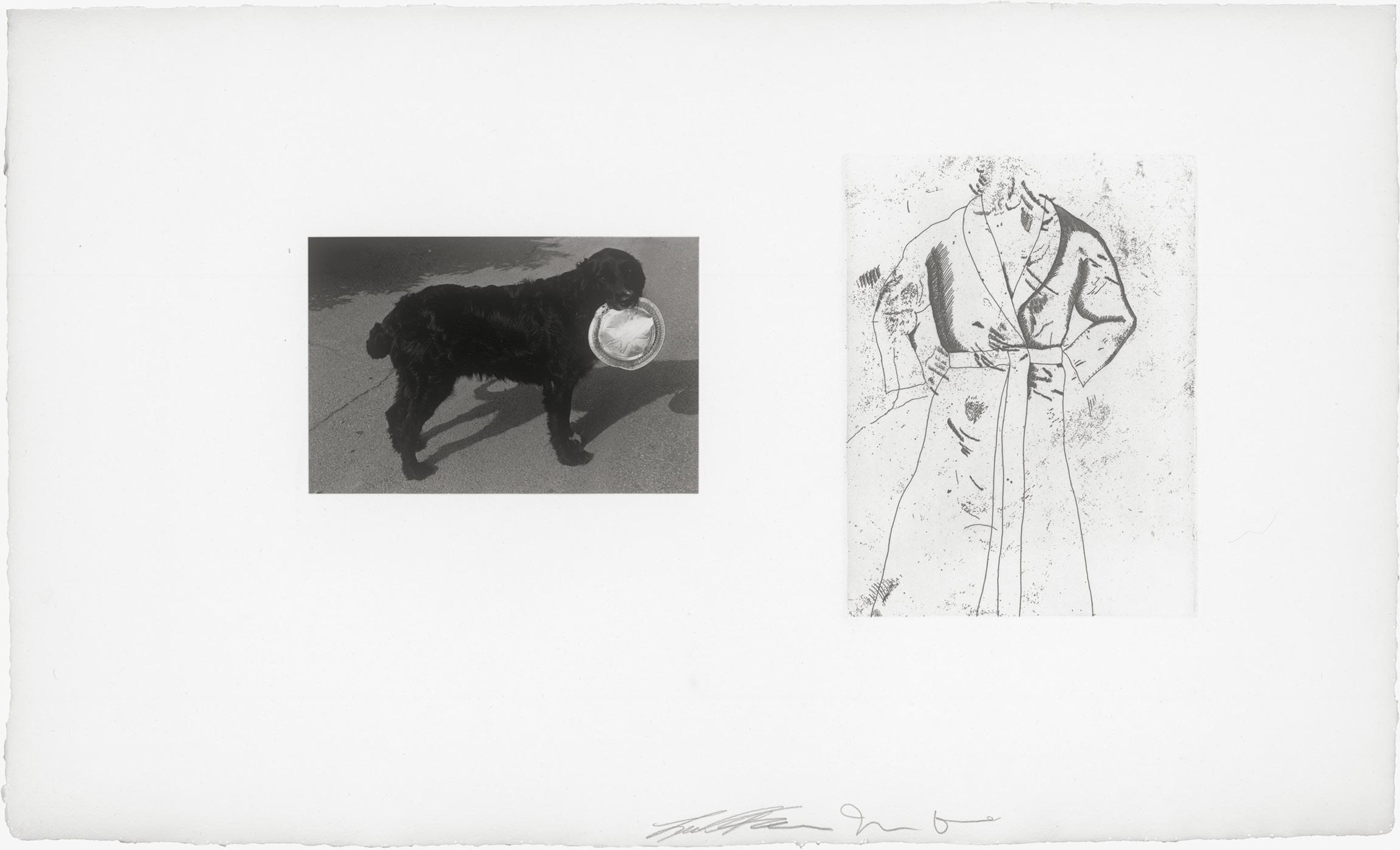


gerhard gäbler (b. 1952)
4140 Leipzig, 6. Oktober 1989. 1989. Vintage gelatin silver print. 41 x 30,3 cm (50 x 40 cm). Signed, titled, and dated in pencil on the verso, with photographer’s copyright stamp.
1.200 €
Gerhard Gäbler is recognized for his nuanced black-and-white photographs documenting everyday life in the GDR during the 1970s and 1980s. With a quiet, observational approach, his images convey the social atmosphere of East Germany through understated but resonant detail. This particular photograph shows a woman cradling a bunch of bananas - a rare and highly sought-after commodity in the GDR - on the eve of the state’s 40th anniversary. Gäbler’s work is represented in major institutional collections, including the Museum of Fine Arts, Houston, and the International Center of Photography, New York.
4141 Berliner Mauer, 11.11.1989. 1989. Vintage gelatin silver print. 28,5 x 41 cm (39,8 x 49,8 cm). Signed, titled, and dated in pencil below the image on recto; signed, titled, dated, and editioned in pencil, with photographer’s copyright stamp on the verso.
1.200 €


charles gatewood (1942-2016)
4142 William Burroughs and Brion Gysin with the „Dreamachine“. 1972. Vintage gelatin silver print. 17 x 22,5 cm (28 x 35,3 cm). Photographer‘s stamp on the verso.
800 €
andré gelpke (b. 1947)
4143 Mann mit Hut. 1979. Vintage gelatin silver print on Agfa paper. 32,5 x 22 cm (38,7 x 29 cm). Signed, titled and dated by the photographer in pencil on the verso.
500 €
André Gelpke is a German-Swiss photographer and educator. From 1969-1975, he studied at the Folkwangschule Essen under Otto Steinert. In 1975, he co-founded the photo agency Visum alongside Rudi Meisel and Gerd Ludwig. Over time, Gelpke shifted his focus increasingly toward artistic photography and, together with figures like Heinrich Riebesehl and Michael Schmidt, played a key role in establishing photography as a recognized art form in Germany.


4144 Untitled, from the series ”Io non ho mani che mi accarezzino il volto”, 1961-1963. Gelatin silver print, printed later. 12,5 x 18 cm. Signed by the photographer in black ink in lower right corner; signed by the photographer in pencil on the verso.
1.000 €
Mario Giacomelli’s work „Io non ho mani che mi accarezzino il volto“ (1961-1963) is a seminal series capturing the playful yet contemplative lives of young seminarians, blending motion and stillness to reflect the tension between spiritual devotion and human yearning. Characterized by Giacomelli’s distinctive highcontrast black-and-white style, the series transforms everyday scenes into abstract, almost surreal compositions, highlighting his ability to transcend traditional documentary photography.
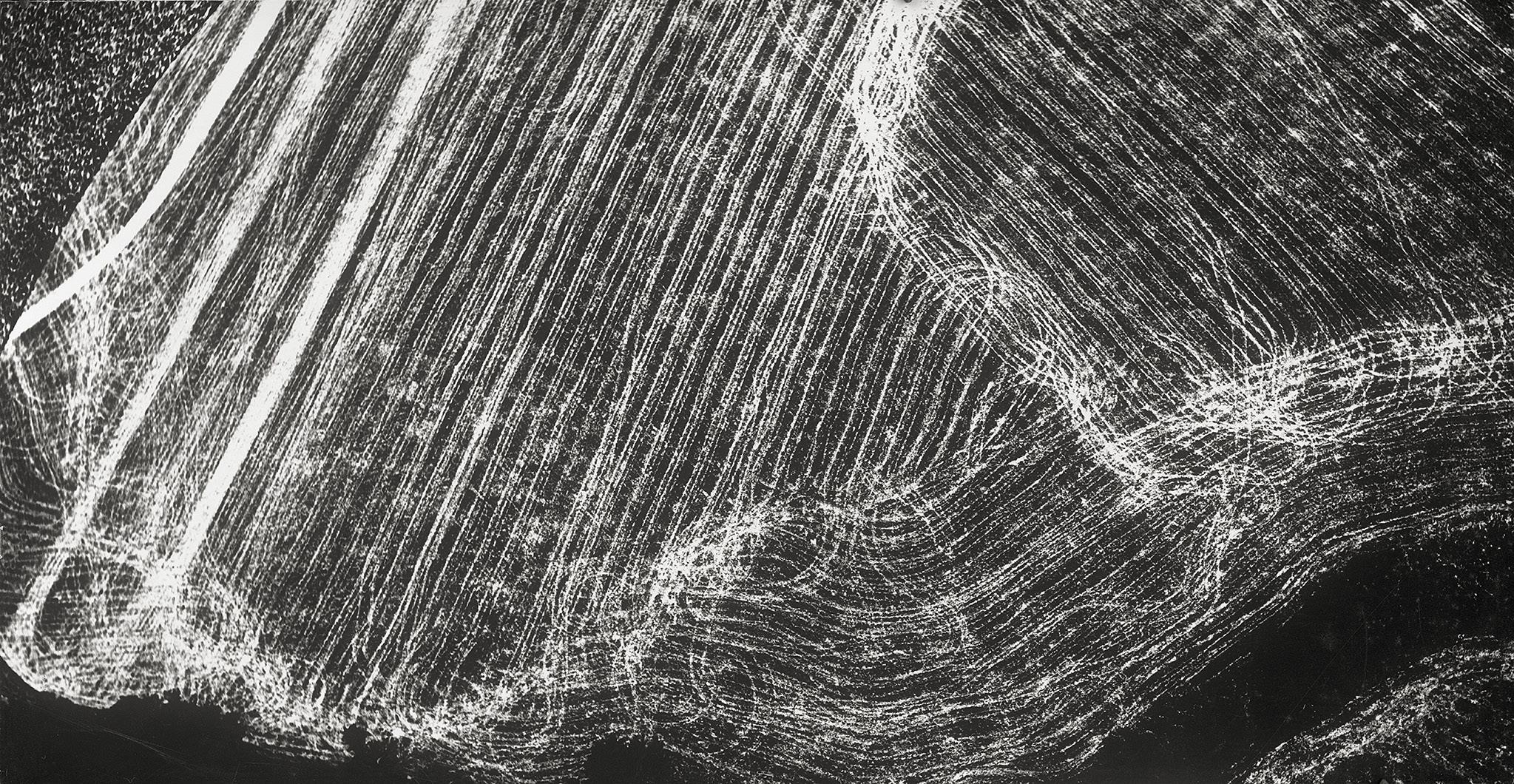
mario giacomelli
4145 Untitled (from the series „Presa di Coscienza della Natura“). 1970s. Vintage gelatin silver print. 16,5 x 32 cm. Annotated in pencil, „Mario Giacomelli via Mastai 24 Senigallia“ copyright stamp on the verso.
800 €
Part of Giacomelli’s late-career series “Presa di Coscienza della Natura” (Awareness of Nature), this photograph exemplifies the Italian master’s distinctive approach to landscape - marked by graphic abstraction, lyrical contrasts, and an emotional engagement with the land. Shot from above, the plowed fields and furrowed earth become near-calligraphic marks, echoing both environmental cycles and the photographer’s inner reflection on humanity’s relationship with nature.

(b. 1953)
4146 Jimmy Paulette after the Parade, New York. 1991. Cibachrome print, printed 1990s. 50,8 x 61 cm. Signed by the photographer in blue marker on the verso.
2.500 €
Nan Goldin is an American photographer renowned for her deeply personal and raw visual narratives that delve into themes of love, gender, domesticity, and sexuality. Her seminal work, The Ballad of Sexual Dependency (1986), is a poignant documentation of her “chosen family,” capturing the post-punk and gay subcultures of New York City during the late 1970s and early
1980s. Goldin’s style is characterized by an informal, snapshot aesthetic, often portraying private moments in intimate settings such as cluttered kitchens, downtown bars, and disheveled beds. Her adept use of color accentuates the emotional essence of each moment. Beyond her photographic endeavors, Goldin has been an active voice in art and activism, addressing critical issues such as the HIV/AIDS epidemic and the opioid crisis. She currently resides and works between New York City, Berlin, and Paris.
Lit.: Nan Goldin, David Armstrong, and Walter Keller, eds. The Other Side. Zurich: Scalo, 1992, ill. p. 63.
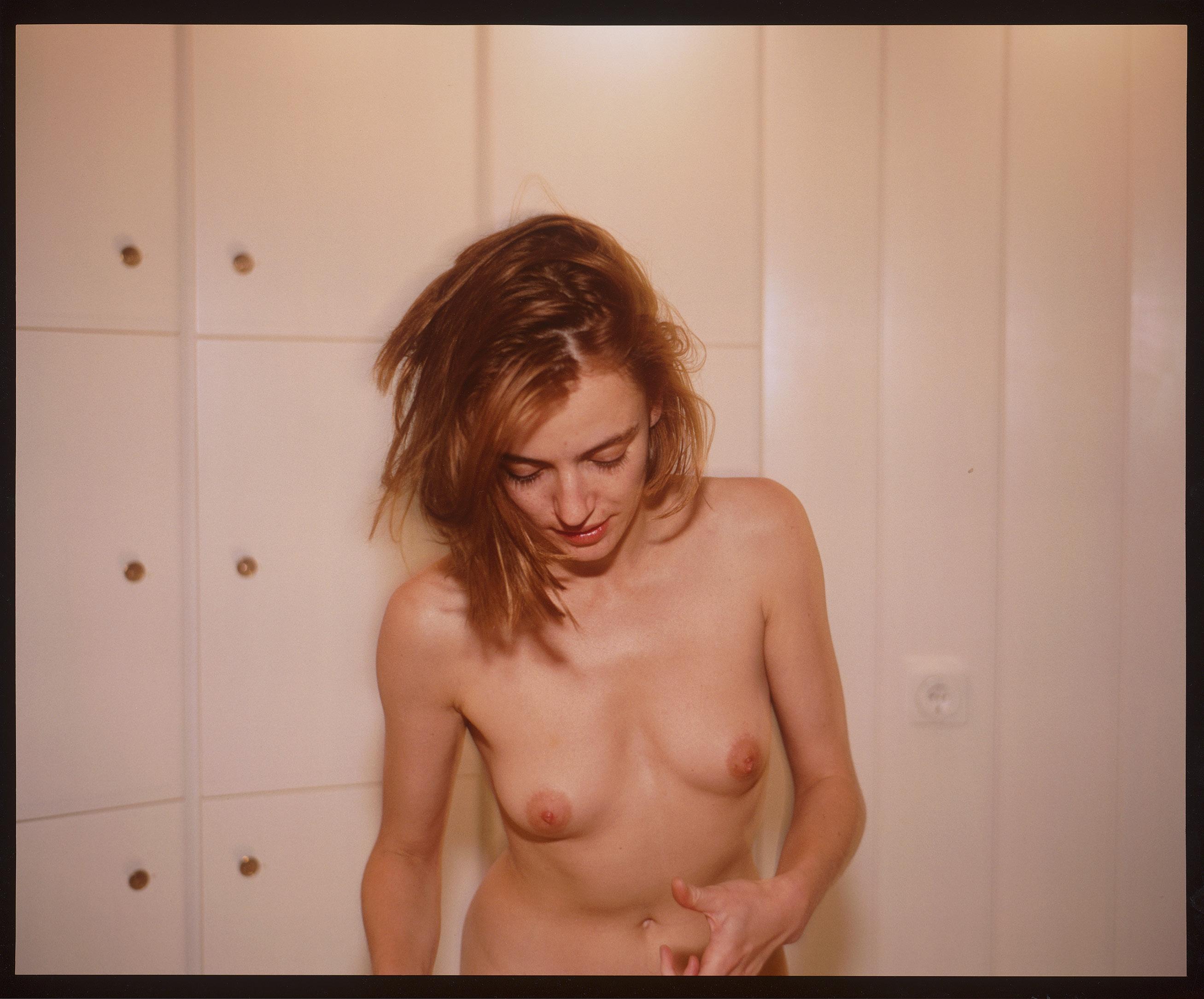
4147 Amanda in the Locker Room, Berlin . 1993. Cibachrome print, printed 1990s. 51 x 61 cm. Signed and titled by the photographer in black and blue marker on the verso.
1.800 €
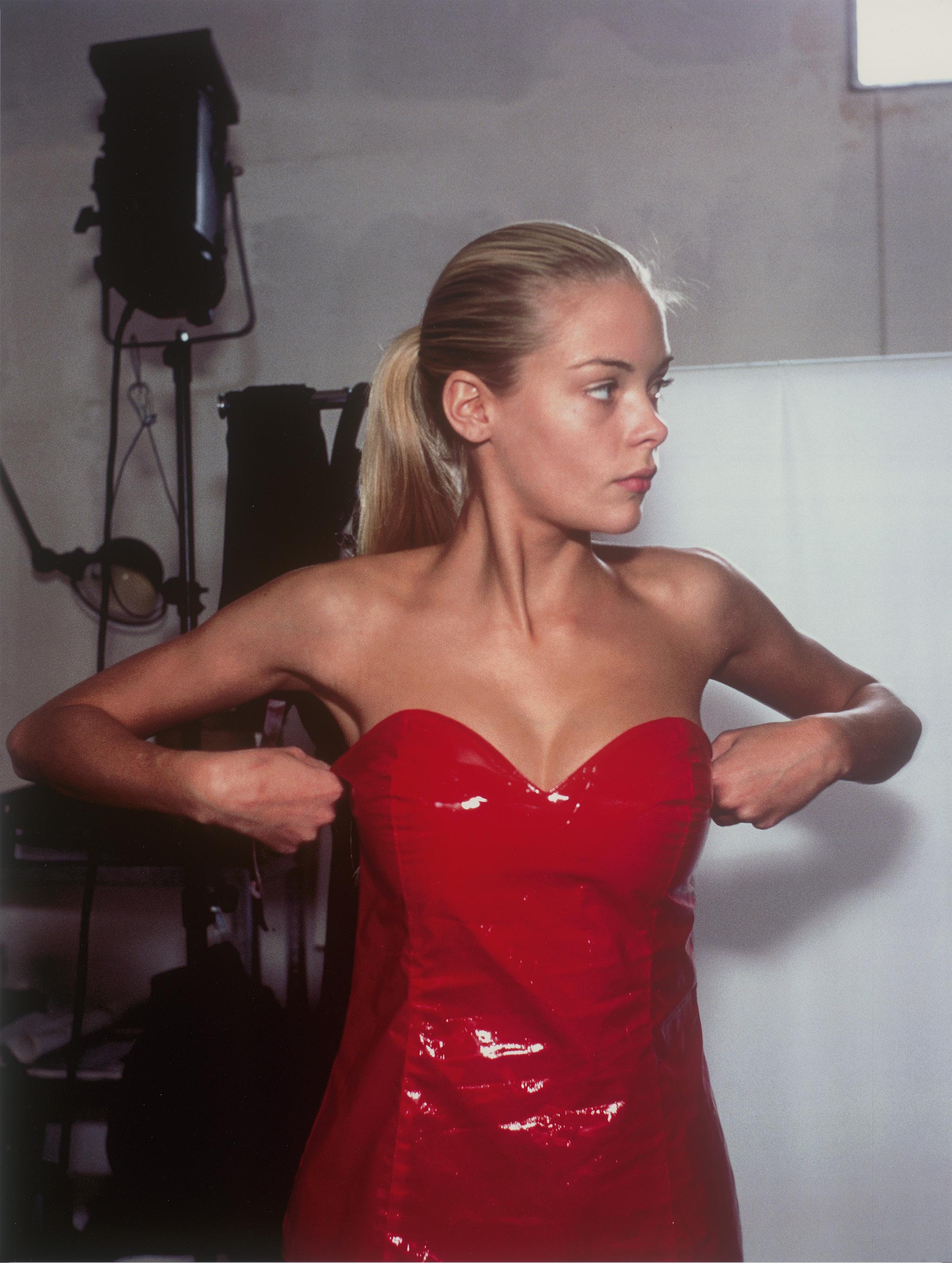
4148 James at a Jean Colonna fitting, Paris. 1995. Cibachrome print. 61,5 x 46,5 cm. Signed by the photographer in felt-tip pen on the verso.
3.000 €
Nan Goldin’s „James King: Supermodel“ series offers a raw, intimate portrayal of teenage model Jaime (James) King, who rose to prominence in the mid-1990s - a transitional moment between the height of the supermodel era and the rise of the so-called “heroin chic” aesthetic. At just sixteen, King was
thrust into a fashion world marked by unattainable beauty ideals, the fetishization of youth, and the glamorization of drug culture. Goldin’s photographs avoid mythologizing this milieu; instead, they lay bare its emotional and psychological costs, capturing moments of vulnerability, fatigue, and the loss of innocence. This particular image of James King formed part of Goldin’s 1995 body of work on the model, though it was not included in the final portfolio of the same name.
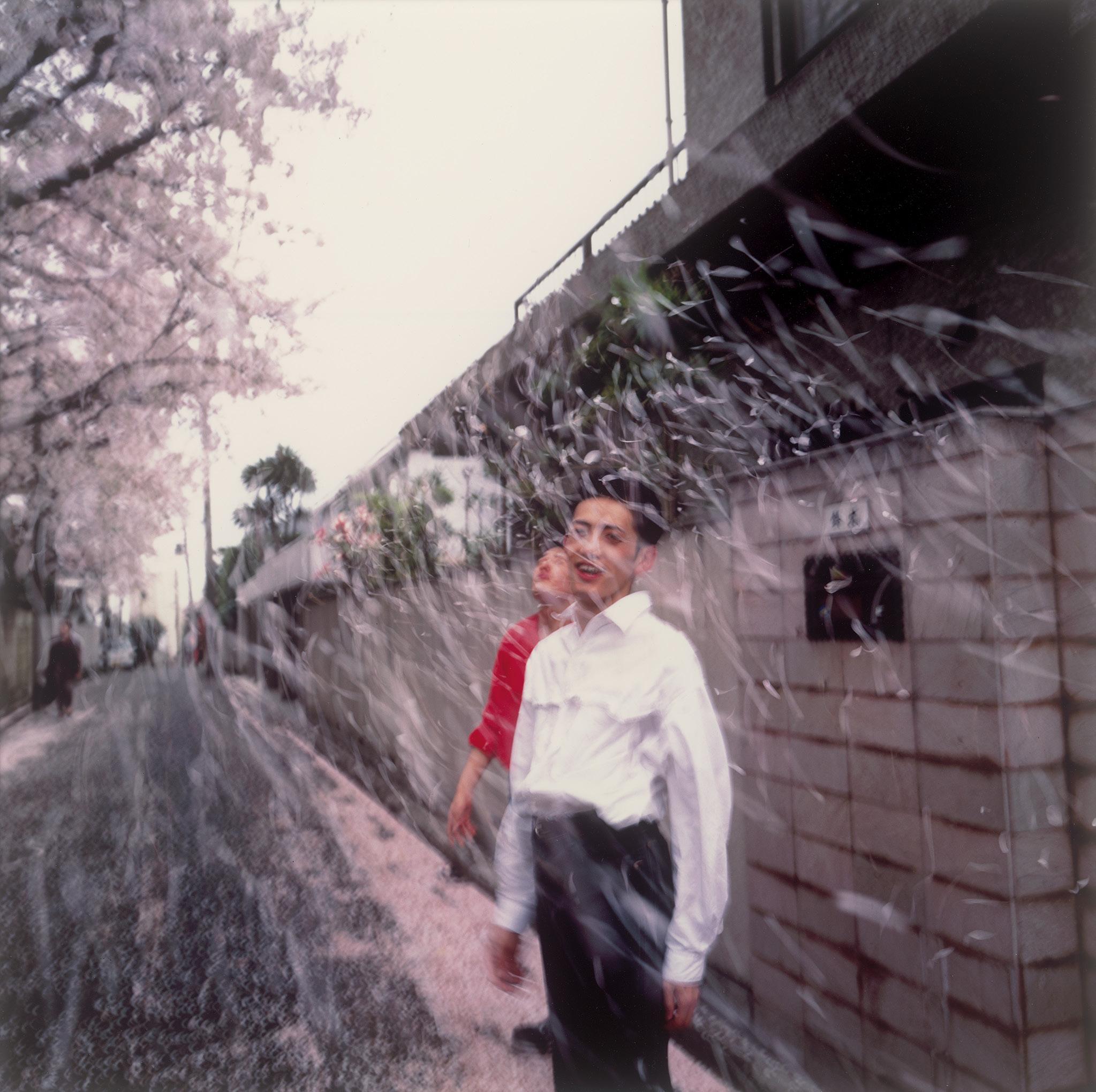
4149* Honda Bros in Cherry Blossom Storm, Tokyo. 1994 Chromogenic print. 61 x 50,8 cm. Signed, titled, dated, and dedicated “For my beloved Walter, one of the truest eyes I know” in black marker on the verso.
5.000 €
Nan Goldin first traveled to Japan in the early 1990s, creating a series of portraits and scenes that capture the country’s vibrant subcultures, intimate encounters, and fleeting moments of beauty. Merging her diaristic style with a keen sensitivity to Japanese culture, this body of work reveals Goldin’s deep engagement with her subjects and surroundings. Honda Bros in Cherry Blossom Storm is emblematic of this work - imbued with motion, color, and emotion, it evokes both personal tenderness and poetic transience.

brian graham (b. 1951)
4150 Robert Frank in New York. 1981. Vintage gelatin silver print from a polaroid negative. 30 x 23 cm (35,4 x 28 cm). Signed, titled and dated by the photographer in pencil on the verso.
1.200 €
Born in Canada, Brian Graham received his Bachelor of Arts from St. Francis Xavier University, Nova Scotia, in 1973. He moved to New York in 1981 to pursue photography and went on to assist and print for Robert Frank for over a decade. During this time, he also printed the archives of Allen Ginsberg - documenting the Beat era - as well as work from the Walker Evans Estate and Rosalind Fox Solomon. Graham has photographed across Africa, Europe, and the Americas, and has exhibited in New York, Berlin, and Lisbon.
Lit.: Brian Graham. Goin‘ Down the Road with Robert Frank. Göttingen: Steidl, 2023, ill. front cover.
4151 Tom Waits Bleecker St. near Bowery. 1986. Vintage gelatin silver print. 30,5 x 45,2 cm (40,5 x 50,4 cm). Signed, titled and dated by the photographer in pencil on the verso.
800 €

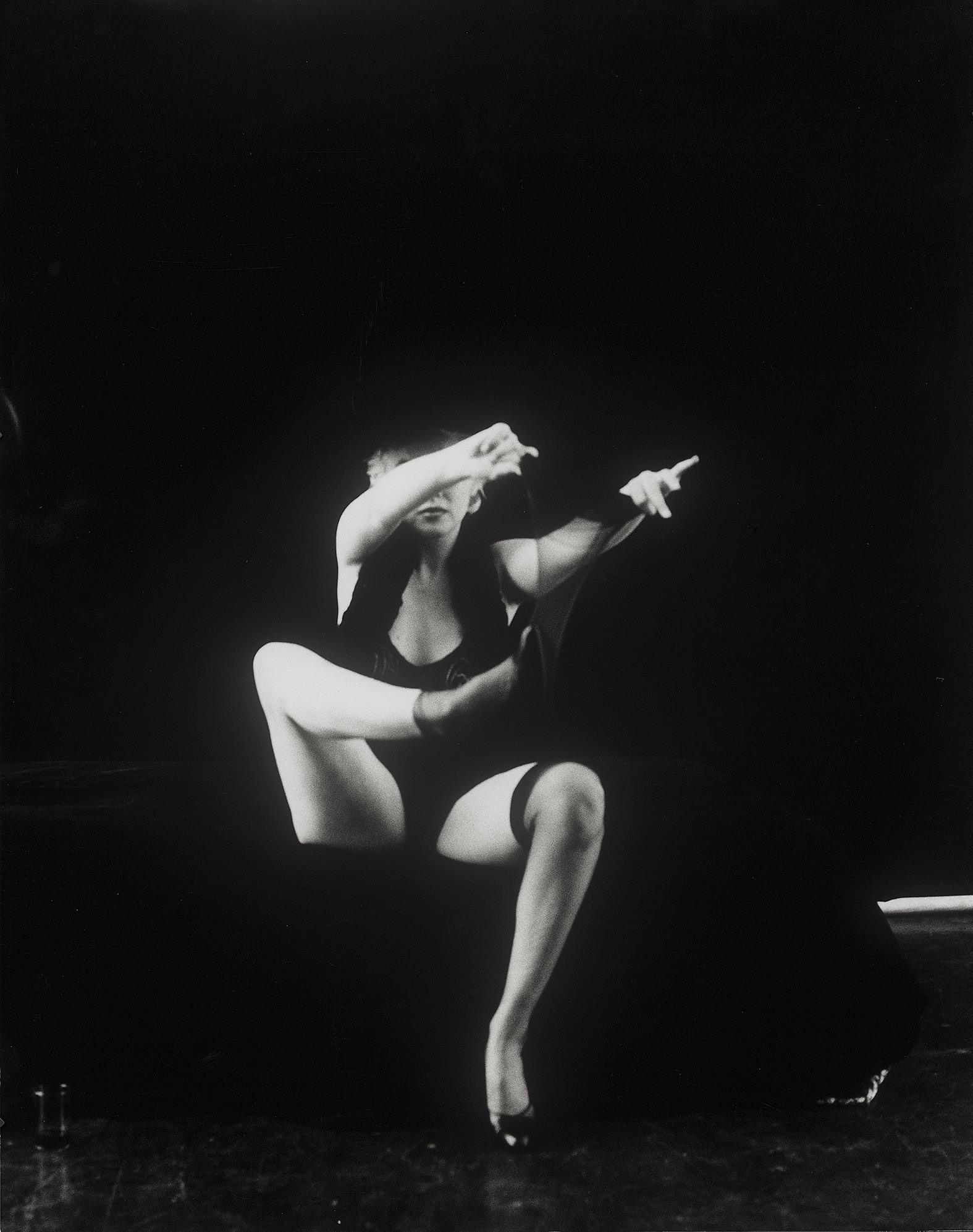
milton h. greene (1922-1985)
4152 Marilyn Monroe (from the „Black Sitting“). 1956. Large-format gelatin silver print, printed 1979. 48,5 x 40 cm. Photographer‘s „Authentic Original Photograph by: Milton H. Greene“ stamp, therein signed and dated by the photographer in ink on the verso.
1.200 €
Milton H. Greene rose to prominence as a fashion photographer in the 1940s and 1950s, with work featured in Harper’s Bazaar and Vogue. He went on to photograph some of the most iconic figures of the era, including Elizabeth Taylor, Frank Sinatra, Audrey Hepburn, Grace Kelly, Ava Gardner, Sammy Davis Jr., Catherine Deneuve, Marlene Dietrich, and Judy Garland. His close professional relationship with Marilyn Monroe led to the founding of Marilyn Monroe Productions, a bold move to give her greater control over her career. Greene and Monroe collaborated on more than 50 photo sessions, including the celebrated „Black Sitting“, from which the photograph offered here originates.
Lit.: Joshua Greene (ed.). Milton‘s Marilyn. Munich: Schirmer/ Mosel, 1998, ill. p. 158 ff. (images from the same sitting).

manfred hamm (b. 1944)
4153 View from Große Neugierde towards Babelsberg , Glienicke. 1999. Vintage gelatin silver print. 26,5 x 19,8 cm (30,2 x 23,7 cm). Signed by the photographer as well as negative number in pencil on the verso.
600 €
Manfred Hamm was born in Cainsdorf near Zwickau and trained as an advertising and theater photographer in Ulm and Munich from 1961-1963. Between 1965-1967, he traveled extensively through Australia and Southeast Asia before settling in Berlin in 1967, where he worked as an assistant to Ben Wargin at Galerie S until 1970. From that point on, Hamm worked as a press photographer for various magazines, and in 1977, he published his first photo book, Berlin - Landschaft einer Stadt.
Lit.: Michael Seiler,Manfred Hamm (eds.). Inzenierte Landschaften: Blicke ins preussische Arkadien. Berlin: Transit, 1999, ill. p. 142.
günter hildenhagen (b. 1935)
4154 Sagrada Familia ; Feigenblatt. 1962. 2 vintage ferrotyped gelatin silver prints. 26 x 23,3 cm and 29,4 x 23 cm. Each mounted to board, signed, titled and dated by the photographer in pencil below the image on the mount.
750 €
Günter Hildehagen is known for his intense portraits which often show people outside of „normal“ society but his portfolio also features more graphic, abstract works such as the photographs offered here. Between 1958-1960 he completed an apprenticeship with Pan Walther and from 1961-1965 he studied with Otto Steinert.


höfer (b. 1944)
4155* Wartesaal Düsseldorf. 1981. Chromogenic print on Kodak-Professional paper, printed 1991. 40,2 x 51,7 cm (50,8 x 61 cm). Signed, dated and numbered „30/30“ by the artist in ink on the verso, mounted in upper corners in mat.
2.200 €
The German photographer Candida Höfer is renowned for her meticulously composed, large-scale color photographs of public and institutional interiors. Her work captures the psychological and aesthetic dimensions of spaces such as libraries, museums, theaters, and zoological gardens, often devoid of human presence. By focusing on the architecture and design of these environments, Höfer invites viewers to contemplate the cultural and historical significance embedded within these spaces.
Lit.: Photographische Sammlung, SK Stiftung Kultur, Köln, eds. Candida Höfer: Orte, Jahre. Photographien 1968-1999. Munich: Schirmer/Mosel, 1999, ill. p. 45.

marta hoepffner (1912-2000)
4156 Symmetrische Scheiben . 1970s. Chromogenic print. 50 x 49,5 cm. Signed by the photographer in pencil in lower right corner; titled and annotated by the photographer in pencil and photographer‘s label on the verso.
1.800 €
The German photographer Marta Hoepffner developed her innovative Farbinterferenzbilder (color interference images) from the mid-1960s onward. These experiments investigate the optical properties of polarized light through layered, geo -
metric compositions. Informed by Bauhaus principles and the aesthetics of the New Vision movement, her work represents a distinctive synthesis of scientific inquiry and visual abstraction. Her striking images position Hoepffner as a significant figure in postwar kinetic and light-based art.
Lit.: Eva Scheid (ed.). Lichtbilder Bilder des Lichts. Marta Hoepffner: Fotokünstlerin und Pädagogin. Hofheim am Taunus: 1997, see pp. 5067.
Brigitte Behrens, Ulrika Jäger. “Lichtbilder Bilder des Lichts. Marta Hoepffner und Ihm Schoffers.” In: Die Frauenfeder, no. 2, Drumlin Verlag, Weingarten, 1986, pp. 135-175.
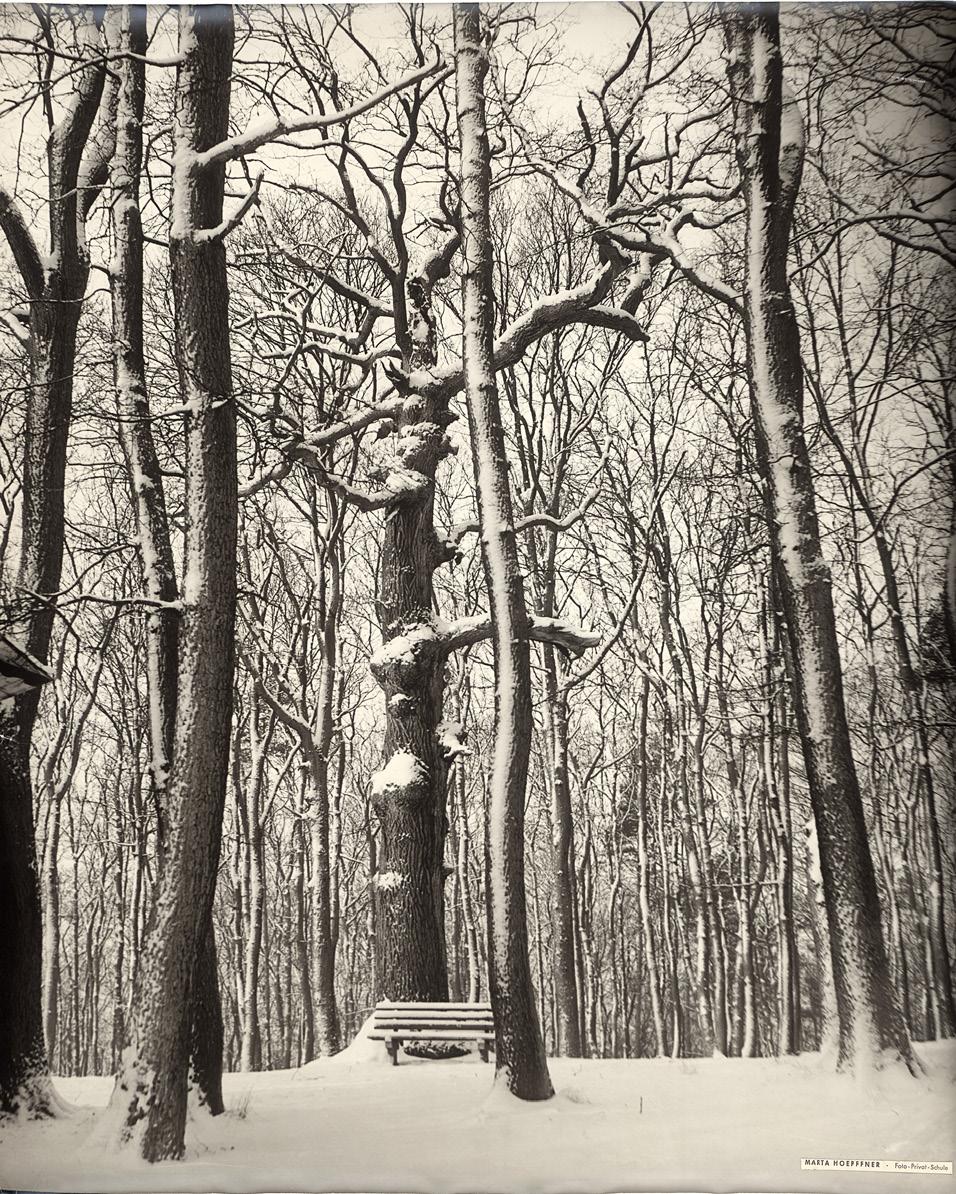
marta hoepffner
4157 Winter scene. 1960s. Vintage large-format gelatin silver print. 59,5 x 49,5 cm. Photographer‘s label affixed in lower right corner; photographer‘s stamp on the verso.
900 €
konrad hoffmeister (1926-2007)
4158 Berlin (combination print from two negatives). 2000. Vintage gelatin silver print. 25,8 x 38,7 cm. Signed and dated by the photographer in pencil on the verso.
900 €
Konrad Hoffmeister studied photography and reproduction techniques in Magdeburg before serving as an assistant and lecturer at the Academy of Fine Arts in Berlin-Weißensee from 1953-1956. Beginning in 1957, he worked as a freelance photographer in East Berlin. He produced images for theater, television, magazines, and advertising, while also pursuing independent artistic projects. Among these is his notable portrait series „Ansichten zu Deutschland“ (Views of Germany). Hoffmeister’s work has been exhibited internationally and remains a significant contribution to postwar German photography.
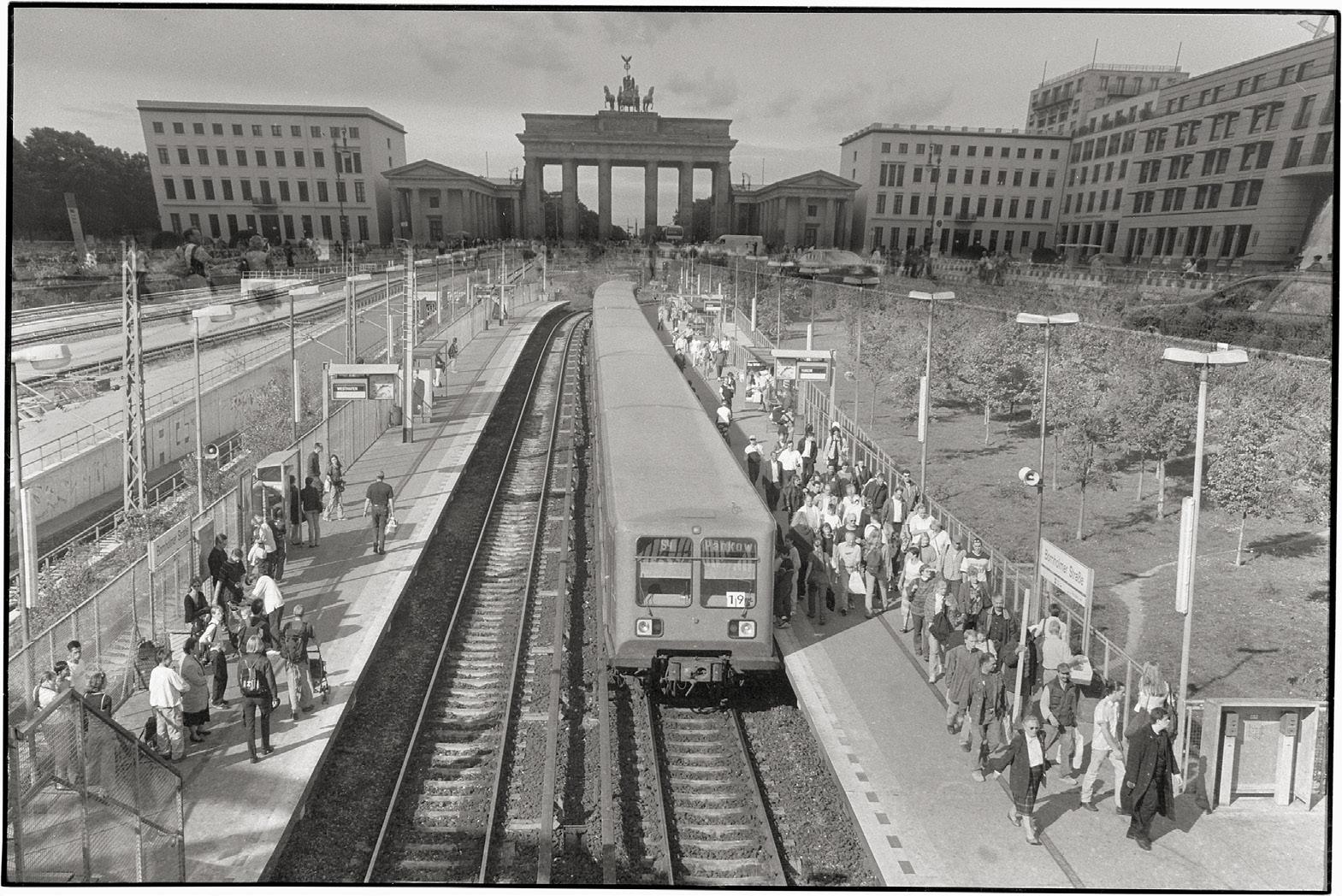

homma (b. 1962)
4159* Untitled from the series „Tokyo and my Daughter“. 2005-2006. Chromogenic print mounted on dibond. 80 x 100 cm. Signed and editioned „1/3“ by the artist in black marker on the verso.
1.200 €
This and the following two photographs are from Takashi Homma’s series „Tokyo and my Daughter“, a contemplative body of work that captures the Japanese capital through understated, often impersonal topographical views. Homma presents Tokyo’s everyday architecture - residential façades, commercial streets, and construction sites - with cool detachment and formal clarity. These urban scenes are interspersed with images of a young girl introduced as his daughter (though she is actually the daughter of a friend), subtly challenging assumptions of authorship and intimacy. Through this juxtaposition of borrowed affection and dispassionate observation, Homma offers a portrait of Tokyo that is at once analytical and quietly lyrical.
Lit.: Takashi Homma. Tokyo and my Daughter. Zürich: Nieves, 2006, (unpaginated).

takashi homma
4160* Untitled from the series „Tokyo and my Daughter“. 2005/2006. Chromogenic print mounted on dibond. 42 x 54 cm. Signed and editioned „1/5“ by the artist in black marker on the verso; with gallery label.
800 €
Lit.: Takashi Homma. Tokyo and my Daughter. Zürich: Nieves, 2006, (unpaginated).
4161* Untitled from the series „Tokyo and my Daughter“. 2005/2006. Chromogenic print mounted on dibond. 54 x 42 cm. Signed and editioned „1/5“ by the artist in black marker on the verso; with gallery label.
800 €
Lit.: Takashi Homma. Tokyo and my Daughter. Zürich: Nieves, 2006, (unpaginated).


horst p. horst (1906-1999)
4162 Mainbocher Corset, Paris, August 11, 1939
Gelatin silver print, printed later. 50,5 x 40,3 cm. With the photographer’s blind stamp below the image on recto; signed, titled, and dated in pencil on the verso, mounted to mat.
8.000 €
Taken in Paris on the eve of World War II, Mainbocher Corset (August 11, 1939) remains one of the most iconic images in the history of fashion photography. Commissioned by French Vogue, the photograph shows the back of a model adjusting a satin corset by Mainbocher, rendered in luminous chiaroscuro that recalls classical sculpture. With its perfect balance of form and shadow, sensuality and restraint, the image transcended its
commercial origins to become a lasting symbol of poise and vulnerability. Widely reproduced in books and exhibitions, it endures as a defining work of 20th-century photographyelegant, enigmatic, and forever marked by the fragility of its moment.
Lit.: Nancy Hall-Duncan. The History of Fashion Photography
New York: Alpine Book Company, 1979, ill. p. 65.
Valentine Lawford. Horst: His Work and His World. New York: Alfred A. Knopf, 1984, ill. p. 184.
Martin Kazmaier, ed. Horst: Sixty Years of Photography. London: Thames & Hudson, 1996, ill. pl. 8.
Provenance: Camera Work Gallery, Berlin; acquired from the above by the present owner.
lotte
jacobi (1896-1990)
4163 German mailman, Weimar Republic. Circa 1930. Vintage gelatin silver print. 23 x 17,2 cm. Mounted to black card, mounted to cream colored board, signed by the photographer in pencil below image on the mount.
750 €
Lotte Jacobi is renowned for her intimate and engaging portraits, utilizing dramatic lighting and composition to capture the true essence of her subjects. This whimsical portrait of a mailman „on the job“ was likely commissioned to be published in one of the many popular magazines of the day. Jacobi‘s fusion of artistic vision and technical prowess has established her as a significant and celebrated figure in the history of photography.
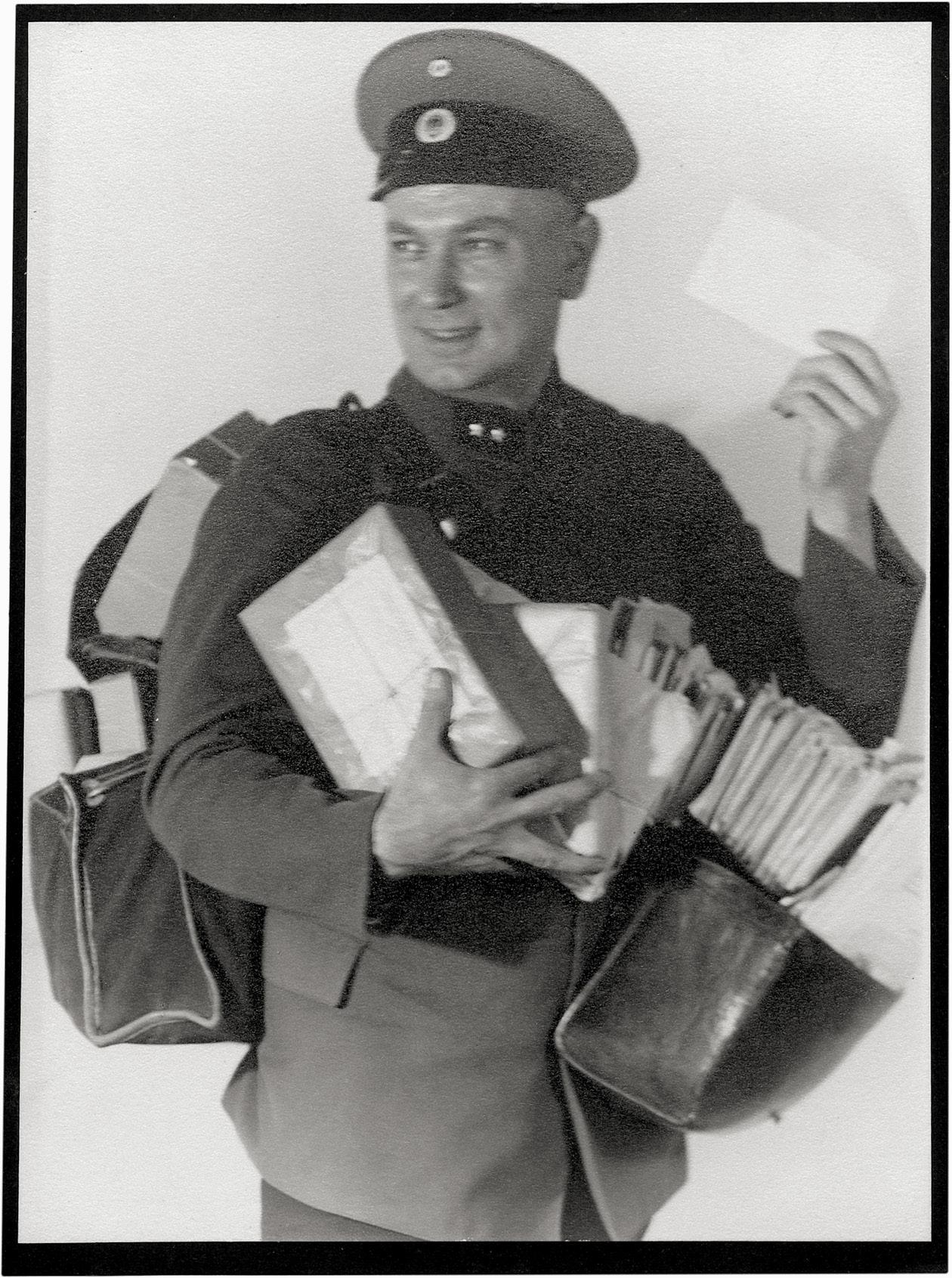

clemens kalischer (1921-2018)
4164 Valle Stura, Italy. 1963. Vintage gelatin silver print. 25 x 20 cm. Photographer‘s/copyright stamp, signed by the photographer in ink and annotated in pencil on the verso.
500 €
Born in Germany, Clemens Kalischer emigrated to the United States, where he studied art and established himself as a photojournalist and art photographer. His most recognized body of work is a powerful series documenting displaced persons arriving in New York City from postwar European refugee camps in 1947 and 1948. Combining humanistic sensitivity with documentary rigor, Kalischer’s photographs capture the emotional weight of migration and transition in the aftermath of World War II.

4165
karl krüger (active in Dessau, 1930s)
4166 Advertising photo for Lufthansa (Junkers Ju 90). Circa 1935. Vintage gelatin silver print. 25 x 21 cm. Mounted to original card, signed and titled by the photographer in ink below the image on the mount.
600 €
This image shows the Junkers Ju 90, the last civilian passenger aircraft built in Dessau for Lufthansa. At the outbreak of World War II, all eleven aircraft in Lufthansa’s fleet were requisitioned by the German Luftwaffe for military use.
Lit.: Brian Walter. Junkers - ein Pionier der Luftfahrt Erfurt: Sutton, 1997.
robert lebeck (1929-2014)
4167 Der gestohlene Degen, Leopoldville. 1960. Gelatin silver print, printed later. 25,3 x 37,5 cm (30,5 x 40,5 cm). Signed, titled and dated by the pho-tographer in felt-tip pen, with the photographer’s stamp on the verso.
1.200 €
Lit.: Tete Böttger (ed.). Robert Lebeck: Vis-à-vis. Göttingen: Steidl/Arkana, 1999, ill. p. 88.
benjamin katz (b. 1939)
4165 The artist Gerhard Richter. Circa 1978. Vintage gelatin silver print on Agfa paper. 14,9 x 18,3 cm. Signed by the photographer in pencil, titled in ink and with photographer‘s/copyright stamps on the verso.
500 €
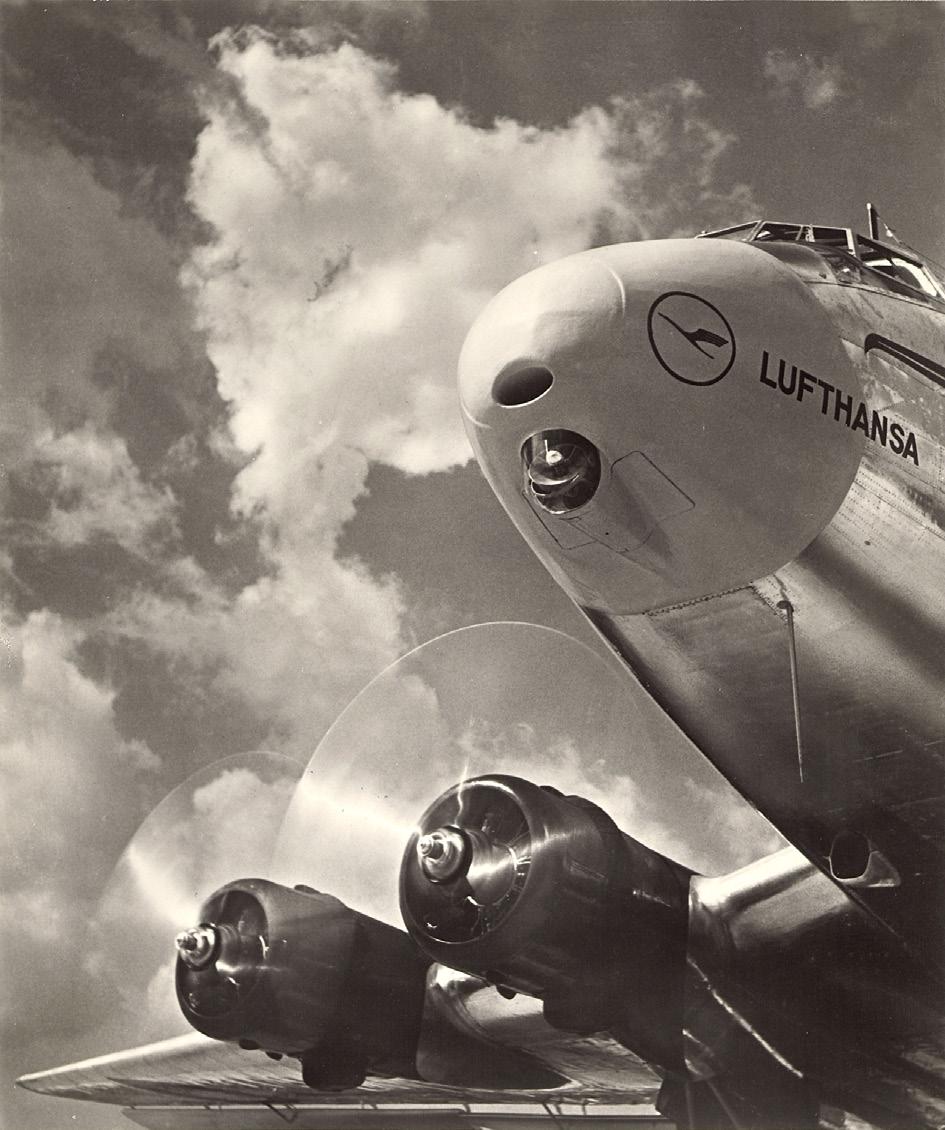
4168 Romy Schneider in Berlin. 1976. Gelatin silver print, printed later. 25,3 x 37 cm (30,2 x 40,2 cm). Signed, titled and dated by the photographer in felttip pen, with the photographer’s stamp on the verso. 1.200 €
Lit.: Tete Böttger (ed.). Robert Lebeck: Vis-à-vis. Göttingen: Steidl/Arkana, 1999, ill. p. 244.





herbert list (1903-1975)
4169 Young men in water. 1949. Vintage ferrotyped gelatin silver print on doubleweight Agfa-Brovira paper. 21,2 x 28,8 cm. Annotated in pencil on the verso. 1.200 €
4170 Rome. 1950s. Vintage ferrotyped gelatin silver print on doubleweight Agfa-Brovira paper. 23,1 x 29,5 cm. Estate stamp, therein negative number in pencil on the verso.
1.500 €
4171 Rome. 1950s. Vintage ferrotyped gelatin silver print on doubleweight Agfa-Brovira paper. 29,5 x 24 cm Agency stamp, therein titled and with number in pencil on the verso.
1.200 €
4172 Reason for Divorce: the Trumpet, Oktoberfest, Munich . 1950s. Vintage ferrotyped gelatin silver print on doubleweight Agfa-Brovira paper. 21,8 x 29,2 cm. Photographer‘s stamp and annotated in pencil on the verso.
1.200 €


klaus lehnartz (1936-2008)
4173 Reconstruction of the Schauspielhaus, Gendarmenmarkt with Deutscher Dom. 1964. Vintage gelatin silver print. 16,6 x 22,6 cm. Photographer‘s stamp and annotated by the photographer in pencil on the verso.
500 €

man ray (Emmanuel Rudnitzky, 1890-1976)
4174 Larmes. 1930. Gelatin silver print on Agfa paper, printed 1991. 19,7 x 26,8 cm (23,5 x 30,3 cm). Griffelkunst and ADAGP Man Ray Trust copyright stamps on the verso.
900 €
Lit.: Jean-Hubert Martin, ed. Man Ray: Photographs. London: Thames and Hudson, 1991, ill. p. 84.


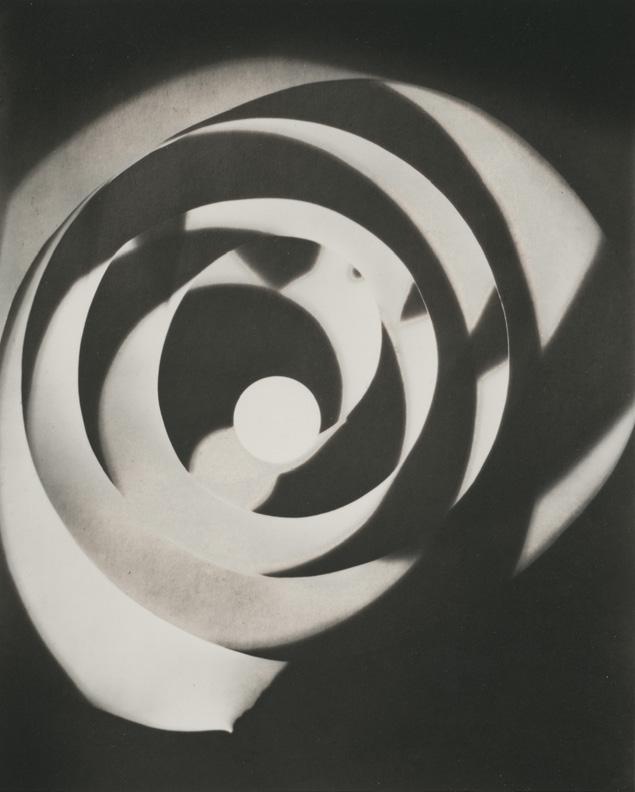
man ray
4175 Rayographs. 1921-1923. 3 gelatin silver prints on Agfa paper, printed 1978. Each circa 29,5 x 22,5 cm (43 x 34 cm). Each with Griffelkunst edition stamp, Man Ray’s signature stamp and rayograph stamp, as well as signed and dated in pencil by the estate exec u tor on the verso; each print mounted along upper edge to gray board, Griffelkunst stamp on mount verso.
1.500 €
Man Ray created his “rayographs” without a camera, placing everyday objects - such as thumbtacks, wire, and circular formsdirectly onto photosensitized paper and exposing them to light. While he had previously photographed ordinary items, these unique, otherworldly images elevated his status to that of one of the leading avant-garde artists of his time.
Lit.: Jean-Hubert Martin, ed. Man Ray: Photographs. London: Thames and Hudson, 1991, ill. pp. 140-141.
4176 Juliet. 1945. 2 gelatin silver prints on Agfa paper, printed 1991. Each circa 26 x 20,5 cm (30 x 24 cm). Griffelkunst and ADAGP Man Ray Trust copyright stamps on the verso.
500 €
Lit.: Jean-Hubert Martin, ed. Man Ray: Photographs. London: Thames and Hudson, 1991, ill. p. 84.
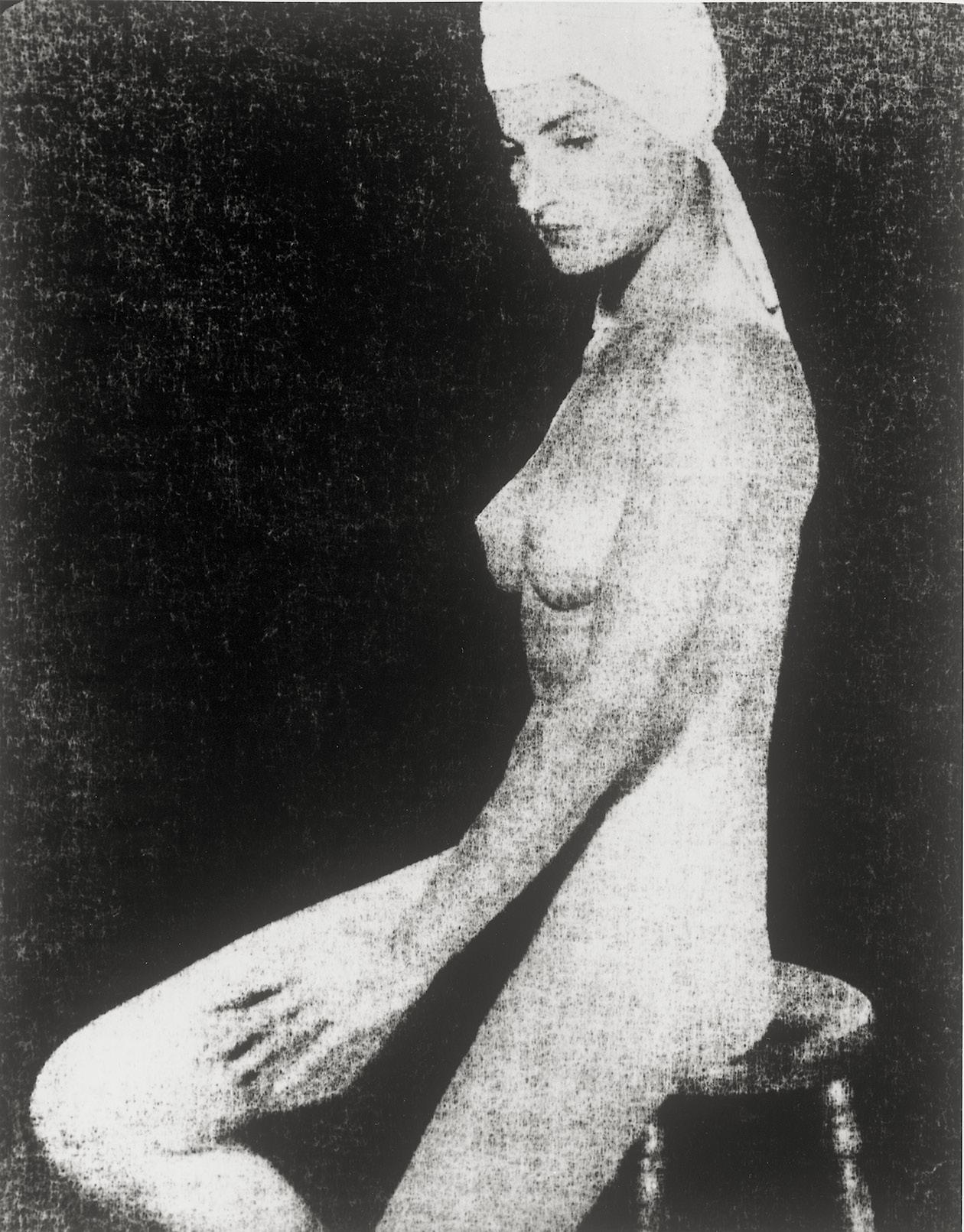
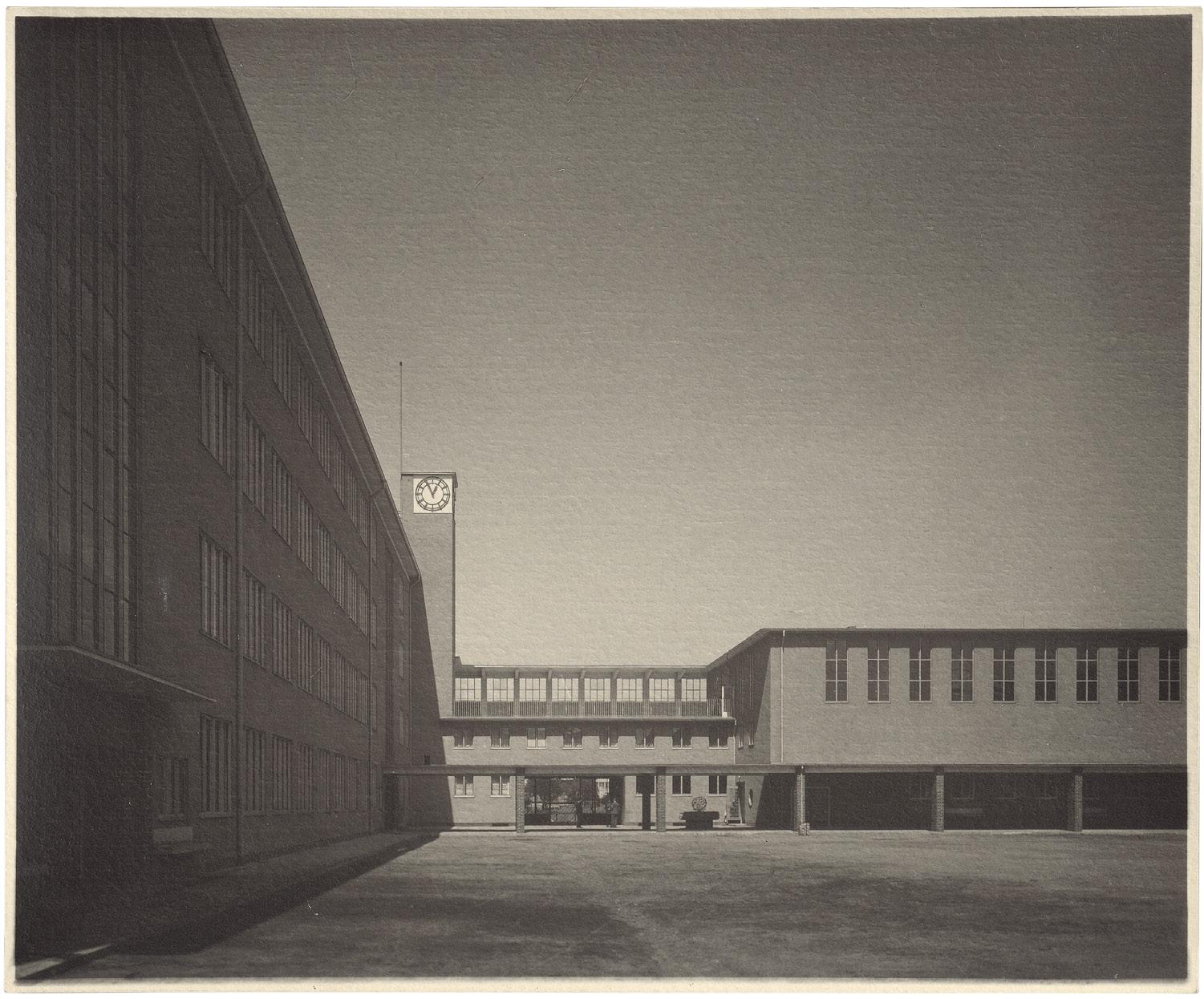
werner mantz (1901-1983)
4177 Schule Köln-Zollstock, architect Helmuth Wirminghaus. 1929. 2 vintage gelatin silver prints, 1 on matte paper. 17,2 x 20,7 cm and 22,5 x 17 cm. Each with photographer’s stamp and copyright stamp, annotated in pencil on the verso.
900 €
Lit.: Compare: Museum Ludwig. Werner Mantz (exhibition catalog). Cologne: Verlag der Buchhandlung Walther König, 2000, p. 198 ff.
charlotte march (1934-2005)
4178 Gil, Towel (Gil Latour for twen ). 1963. Gelatin silver print, printed later. 39,5 x 29,7 cm. Signed, titled and dated by the photographer in pencil on the verso.
900 €
From the 1960s through the 1980s, Charlotte March was among the leading international fashion photographers. Her work for magazines such as twen, Stern, Harper’s Bazaar, Vanity Fair, Elle, and Vogue conveyed an emancipatory spirit, capturing the energy of a new lifestyle and the cultural shifts that defined the 1960s.
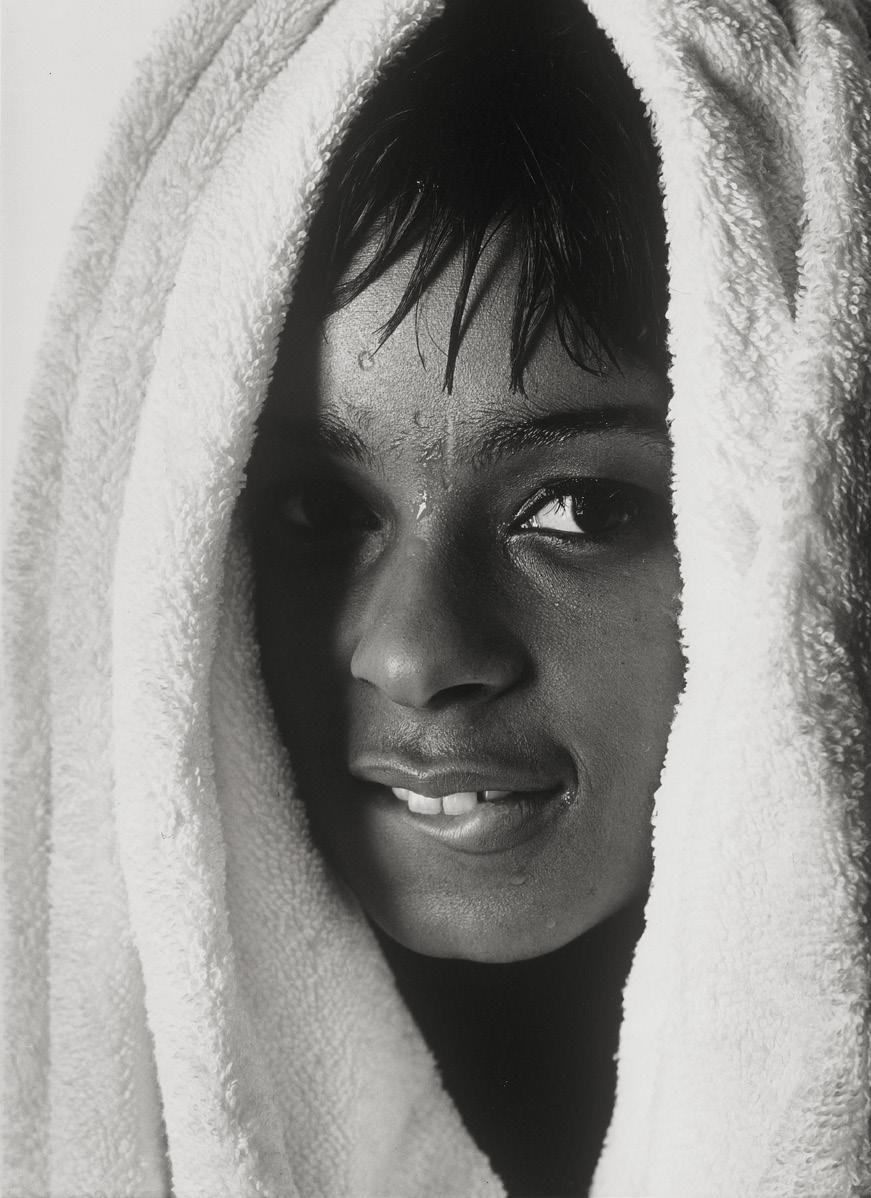
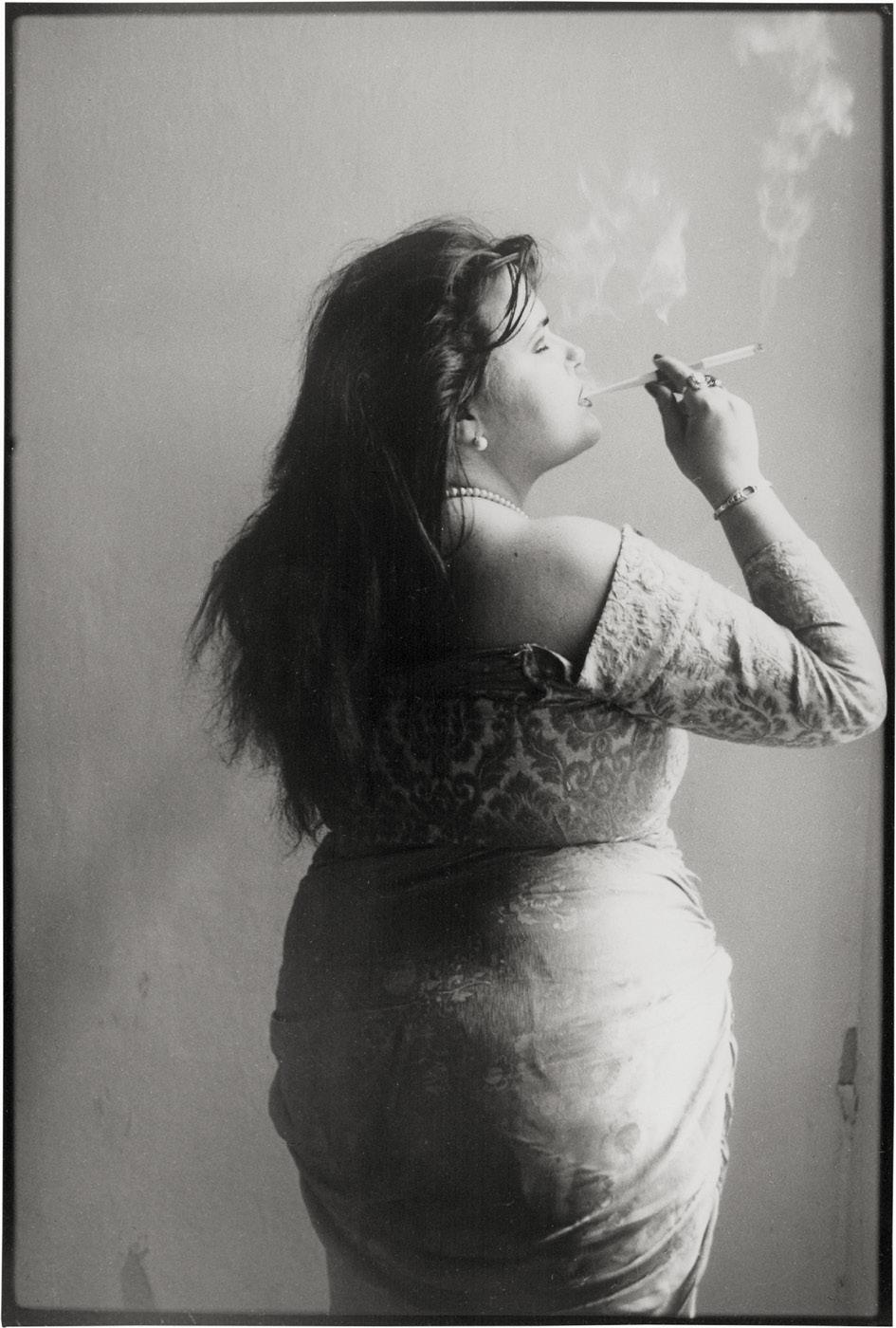

sven marquardt (b. 1962)
4179 Woman with cigarette. 1989. Gelatin silver print, printed 1990s. 31 x 21,5 cm. Photographer‘s stamp and dated in pencil on verso.
900 €
Sven Marquardt trained as a photographer and cameraman at the DEFA studios before making a name for himself with publications in magazines like Sonntag and Das Magazin in the mid-1980s. He worked as a fashion photographer for Sibylle, alongside Roger Melis and Arno Fischer, gaining recognition for his documentation of the GDR‘s subculture. Following German reunification, he turned to working as a bouncer at the renowned Berghain club, becoming an emblematic figure of the club culture scene. He has participated in numerous exhibitions and continues his photography work today.
4180 Young man. 1988. Gelatin silver print, printed 1990s. 31 x 21,5 cm. Photographer‘s stamp and dated in pencil on verso.
900 €

will mcbride (1931-2015)
4181 Boys in Tree Watching Football Game, Berlin 1956. Gelatin silver print, printed 1990s. 33,5 x 29,7 cm (50,5 x 41 cm). Signed, titled and dated by the photographer in pencil as well as photographer‘s stamp on the verso.
1.000 €
The American-German photographer Will McBride is celebrated for his candid and empathetic documentary work. From the start of his career, he focused on unvarnished depictions of youth, sexuality, and identity, offering a glimpse into the cultural and societal shifts of the postwar era. With a compassionate eye and deep trust in his subjects, McBride created photographs that remain striking for their honesty, intimacy, and emotional depth.
4182 Kriegsversehrter im Rollstuhl, Berlin . 1956. Gelatin silver print, printed 1990s. 37 x 54,5 cm (50,3 x 60,5 cm). Signed, titled and dated by the photographer in pencil as well as photographer‘s stamp on the verso.
1.000 €

will mcbride
4183 Mike in the Shower ( Mike wäscht sich wie auch die Anderen, Schule Schloß Salem) . 1963. Gelatin silver print, printed 1998. 54,5 x 35 cm (61 x 50,5 cm). Signed, titled, editioned „11/12“ and dated by the photographer in pencil as well as collection stamp on the verso.
2.800 €
Lit.: Will Mc Bride. I, Will McBride. Cologne: Könemann, 1997, ill. p. 205.
Will McBride. Coming of Age: Photographs by Will McBride New York: Aperture, 1999, ill. p. 29.
Provenance: Directly from the photographer to the present owner.
4184 Das Morgen Duschen, Schloss Schule Salem 1963. Gelatin silver print, printed 1990. 36 x 53,5 cm (50,5 x 60,5 cm). Signed, titled, dated and editioned „12/12“ by the photographer in pencil and collector‘s stamp on the verso.
2.500 €
Provenance: Directly from the photographer to the present owner



will mcbride
4185 Adenauer & Kennedy in Bonn, Palais Schaumburg. 1963. Gelatin silver print, printed 1996. 31 x 46,5 cm (40,2 x 50,4 cm). Signed, titled and dated by the photographer in pencil on the verso.


linda mccartney (1941-1998)
4186 Paul - Long Island, Painting, East Hampton 1990. Vintage gelatin silver print. 22,7 x 15,3 cm (25,2 x 20,2 cm). Printed copyright label on the verso.
1.200 €
Linda McCartney secured her first breakthrough as a photographer while working as an editorial assistant at Town & Country magazine. She documented a Rolling Stones promotional event aboard the SS Sea Panther, and the magazine was so impressed with her candid and relaxed photographs of the band that they published her images in an editorial feature. While photographing at the Fillmore East in New York City, she captured many iconic musicians including B.B. King, The Who, Janis Joplin, and Jimi Hendrix. Linda continued to work prolifically as a photographer throughout her life, documenting family life, landscapes, interiors, and portraits of artists. Her work is held in major public collections, including the National Portrait Gallery in London. Lit.: Wolfgang Suttner, ed. Paul McCartney. Paintings. Siegen: Cantz, 1999, ill. p. 13.
Paul McCartney. Paintings. Boston: Little, Brown and Co., Bulfinch, 2000, ill. p. 51.
4187 My Love, London . 1978. Chromogenic print on Kodak Professional paper. 20,2 x 25,3 cm. Agency stamp with photographer‘s name and numbers in pencil on label on the verso.
1.800 €
Lit.: Linda McCartney. Roadworks: Photographs and Words. New York: Bulfinch Press, 1996. Wolfgang Suttner, ed. Paul McCartney. Paintings. Siegen: Cantz, 1999, ill. p. 10.
Paul McCartney. Paintings. Boston: Little, Brown and Co., Bulfinch, 2000, ill. p. 16.


barbara metselaar-berthold (1951-2024)
4188 Berlin, Prenzlauer Berg. 1982. Vintage gelatin silver print. 18,5 x 27,5 cm (21 x 20,6 cm). Signed and dated by the photographer in pencil in lower margin; photographer‘s label and annotated in pencil on the verso.
900 €
papu pramod mondhe (b. 1973)
4189 Wall Street Brokers Wearing Armani Suits. 1994. Gelatin silver print on chamois paper. 24 x 36 cm (30 x 40 cm). Signed, titled and dated by the photographer in pencil on the verso.
600 €

stefan moses (1928-2018)
4190 Saul Steinberg, New York, from the series „Künstler machen Masken“. 1965. Gelatin silver print on RC paper, printed later. 36,3 x 26,8 cm (40,3 x 30,3 cm). Signed, titled and dated by the photographer in pencil and photographer‘s stamp on the verso.
900 €
martin munkacsi
(1896-1963)
4191 Umbrellas in the rain. Circa 1929. Gelatin silver print, printed 1970s by Pierre Gassmann. 22,5 x 30,2 cm (27,5 x 35,4 cm). With “Tirage original de Martin Munkacsi réalisé par Pierre Gassmann Paris” stamp and number in pencil on the verso.
900 €
Born in Hungary in 1896, Martin Munkácsi was a pioneering force in both fashion and sports photography. He revolutionized fashion imagery by taking models out of static studio environments and into dynamic outdoor settings, capturing movement, spontaneity, and life. Equally attuned to the energy of everyday scenes, he brought a keen eye for composition to street photography, transforming the ordinary into the visually extraordinary.


4192 Gemini XII: United Arab Republic - Saudi Arabia: Red Sea and Nile Valley. November 1966. Vintage chromogenic print. 20,2 x 20,2 cm. Red NASA number „S-66-63535“ in margin, „A Kodak Paper“ watermark on the verso.
600 €
This and the following vintage NASA photographs offer a striking visual record of the American space program during its most ambitious decades, from the Gemini missions of the 1960s to the Apollo moon landings and early shuttle flights. Produced as chromogenic prints from negatives made by astronauts using specially adapted Hasselblad and Nikon cameras, these images were distributed by NASA’s public affairs office to press outlets, government agencies, and educational institutions.
4193 Photographer: Neil Armstrong (1930-2012).
Buzz Aldrin on the Moon, Apollo 11, July 1969. Vintage chromogenic print. 20,2 x 20,3 cm. „A Kodak Paper“ watermark on the verso.
500 €
4194 Photographer: Neil Armstrong (1930-2012).
Buzz Aldrin descending Apollo 11 LM ladder. July 1969. Vintage chromogenic print. 20,2 x 20,3 cm. „A Kodak Paper“ watermark on the verso.
600 €
4195 Photographer: Neil Armstrong (1930-2012).
Buzz Aldrin and Lunar Module, Apollo 11. July 1969. Vintage chromogenic print. 20,2 x 20,3 cm. „A Kodak Paper“ watermark on the verso.
600 €
4196 Photographer: Neil Armstrong (1930-2012).
Buzz Aldrin near the Lunar Module footpad, Apollo 11 July 1969. Vintage chromogenic print. 20,2 x 20,2 cm. „A Kodak Paper“ watermark on the verso.
600 €

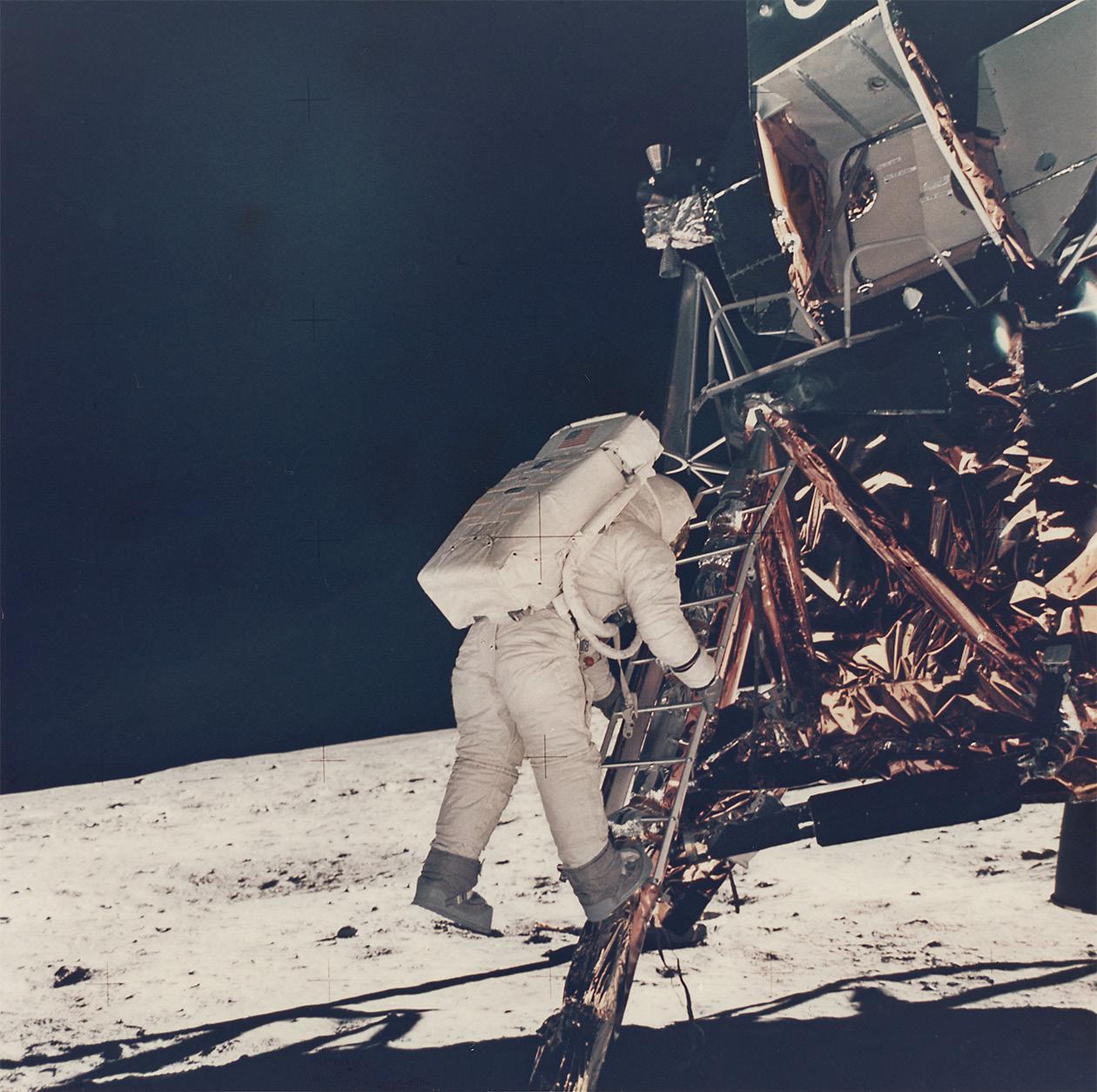



naval history
4197 Launching of Gorch Fock (I), built by Blohm & Voss, Hamburg. May 3, 1933. Vintage gelatin silver print on doubleweight paper. 30 x 24 cm. Annotated in pencil on the verso.
500 €
The Gorch Fock was originally built in just 100 days as a training vessel for the German Reichsmarine prior to World War II. During the war, she was repurposed as a stationary office ship in Stralsund, before being officially reactivated on April 19, 1944.
floris neusüss (1937-2020)
4198 Glyptothek München . 1964. 2 gelatin silver test prints, printed later. Each circa 25 x 25 cm (33,5 x 30,5 cm). Photographer‘s stamp as well as signed and annotated by the photographer in pencil on the verso.
750 €
Floris Neusüss is widely recognized for his pioneering role in cameraless photography, particularly through his innovative use of the photogram. Beginning in the 1960s, he explored the human figure at life-size scale, creating bold, immersive images that challenged conventional notions of photographic representation. He was also fascinated by the sculptural figures in various museum collections of which he also made life-size photograms.These prints are more traditional photographs of the sculptures which he used in the successive process.

night photography
4199 Photographer: Kurt Schraudenbach (1912-1967), Robert Bothner (1899-1967), F.X. Bartl . Neon Lights. 1950s. 3 vintage ferrotyped gelatin silver prints, 2 on Agfa-Brovira paper. Various sizes: 17 x 22 cm, 30 x 23,8 cm and 29 x 36,5 cm. Each with photographer‘s stamp and 2 annotated in pencil on the verso.
600 €
olympic games 1936
4200* XI. Olympiade. Berlin 1936. 38 vintage gelatin silver press prints. Circa 18 x 24 cm. Each with typed press text affixed to lower edge.
1.400 €
Comprehensive collection of press photographs from the 1936 Summer Olympics in Berlin, offering a vivid visual record of the Games as both a sporting and propaganda spectacle. The photographs depict a wide range of disciplines - including track and field, gymnastics, swimming, and equestrian events - as well as opening and closing ceremonies, athlete portraits, and moments of national representation. Participants such as Jesse Owens during his world record long jump, Tajima Naoto at the triple jump event, for which he set a world record and Gerhard Stöck surrounded by his students (signed and dated) are shown.
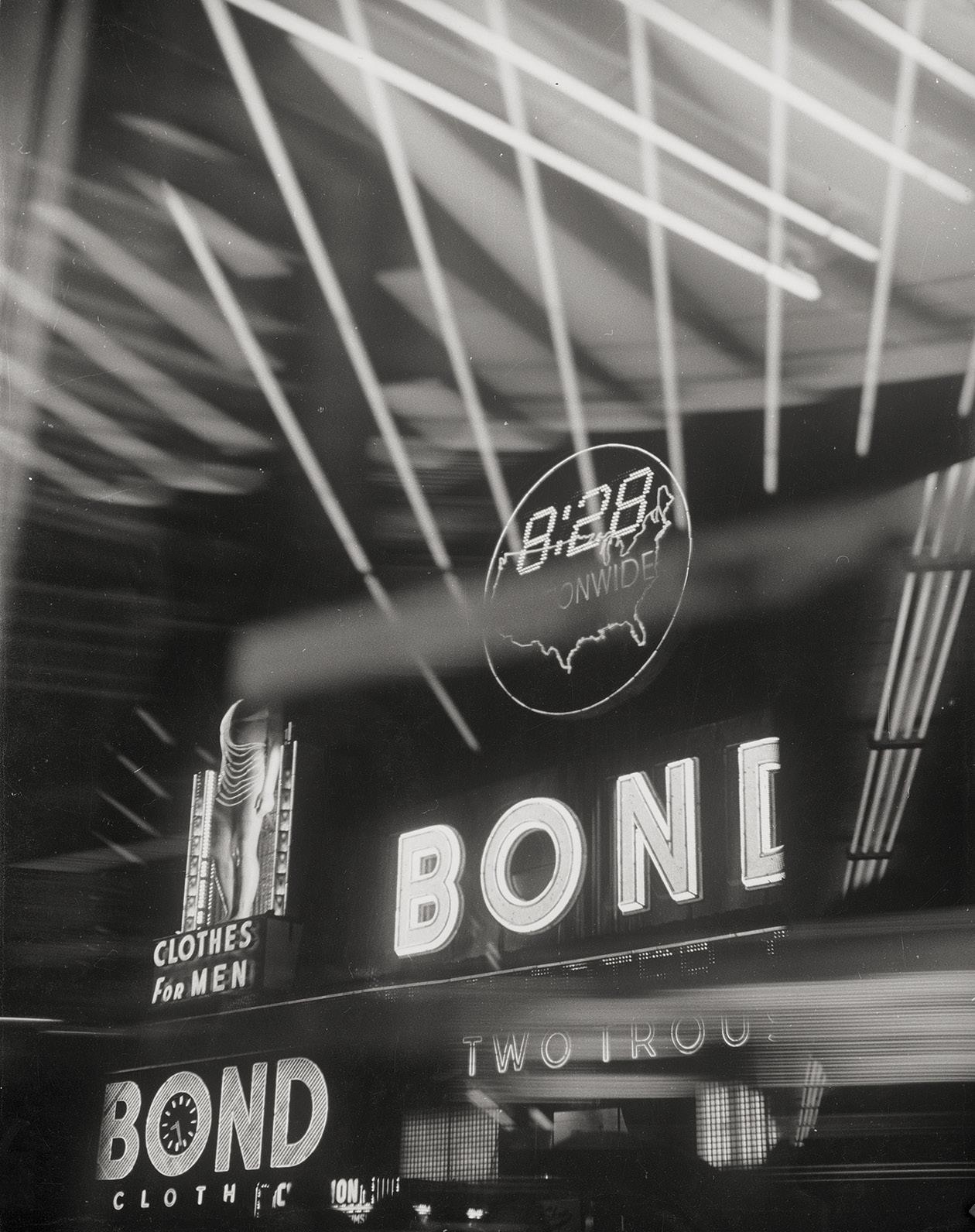

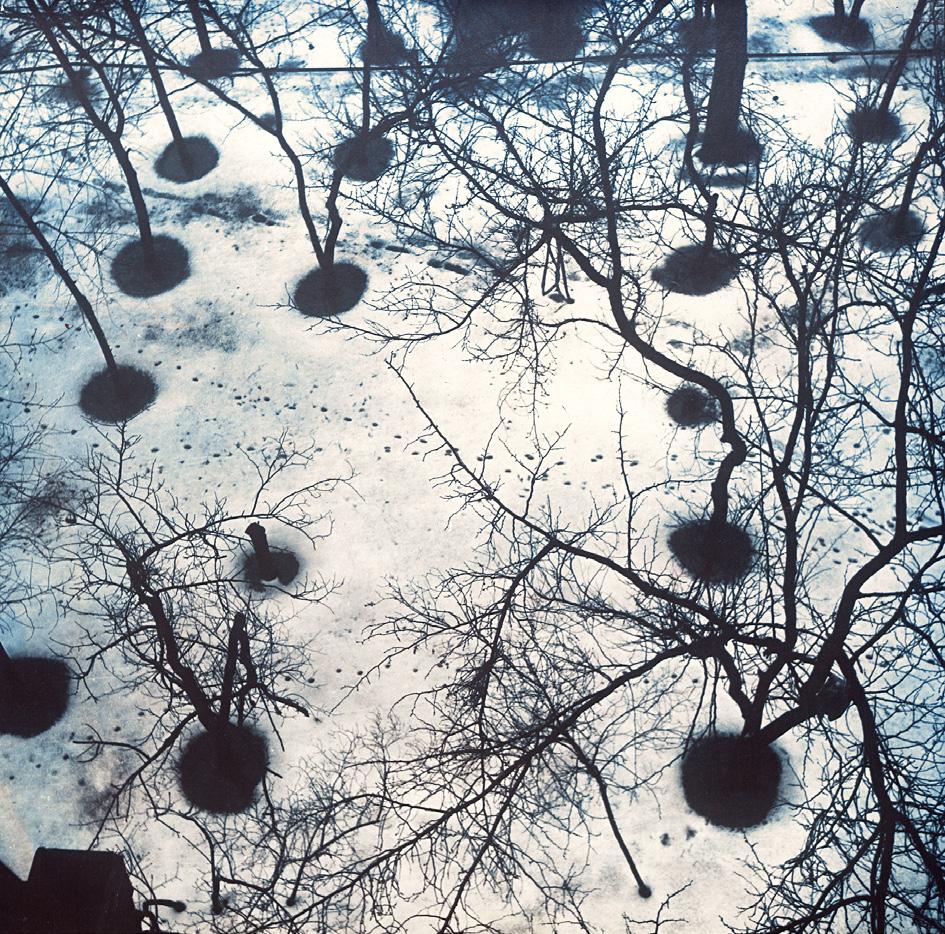


4201 March; The Spring. 1995. 3 vintage toned gelatin silver prints. Each circa 22 x 22 cm. Each signed/copyrighted, titled, dated and editioned „1/10“ and „3/10“ as well as the photographer‘s stamp on the verso.
750 €
These poetic and delicate images by Ukrainian photographer Rita Ostrovskaya reflect her deeply personal approach to recording memory and identity. A central theme in her work is the preservation of Jewish life and culture in Ukraine, captured with quiet intimacy and nuance. Her photographs are represented in major public collections, including the San Francisco Museum of Modern Art.

norman parkinson (1913-1990)
4202 Adele Collins. 1958. Dye transfer print, printed late 1980s. 56 x 44 cm (58 x 48,2 cm). Unsigned, with printer‘s stamp on the verso.
2.500 €
From the 1930s until his death, Norman Parkinson was one of Britain’s leading portrait and fashion photographers. Influenced by Martin Munkacsi, he broke with convention by taking models out of the studio and into dynamic outdoor settings, helping to redefine British fashion photography. Between 1935 and 1940, he worked for Harper’s Bazaar and The Bystander, before beginning a long and influential association with Vogue in 1941.
george platt lynes (1907-1955)
4203 Male nude embraced. Early 1950s. Vintage gelatin silver print, hinge-mounted in upper edge in mat. 25,5 x 20,5 cm. With the photographer‘s studio stamp and „Collection of John Edward Rollins“ stamp, as well as annotated by another hand in pencil on the verso.
1.200 €
George Platt Lynes was a pioneering figure in mid-20th-century photography, known for his highly stylized portraits, fashion images, and male nudes. Merging surrealist aesthetics with classical references and meticulous lighting, his work evokes a dreamlike sensuality and psychological depth. Lynes’s photographs are celebrated for their elegant eroticism and remain central to the history of queer visual culture and modern fineart photography.
nelly rau-häring (b. 1947)
4204 Berlin, Charlottenburg, Fasanenstrasse. 1985. Gelatin silver print, printed later. 25,3 x 37,5 cm (29,5 x 39,2 cm). Photographer‘s/copyright stamp and annotated in pencil on the verso.
750 €

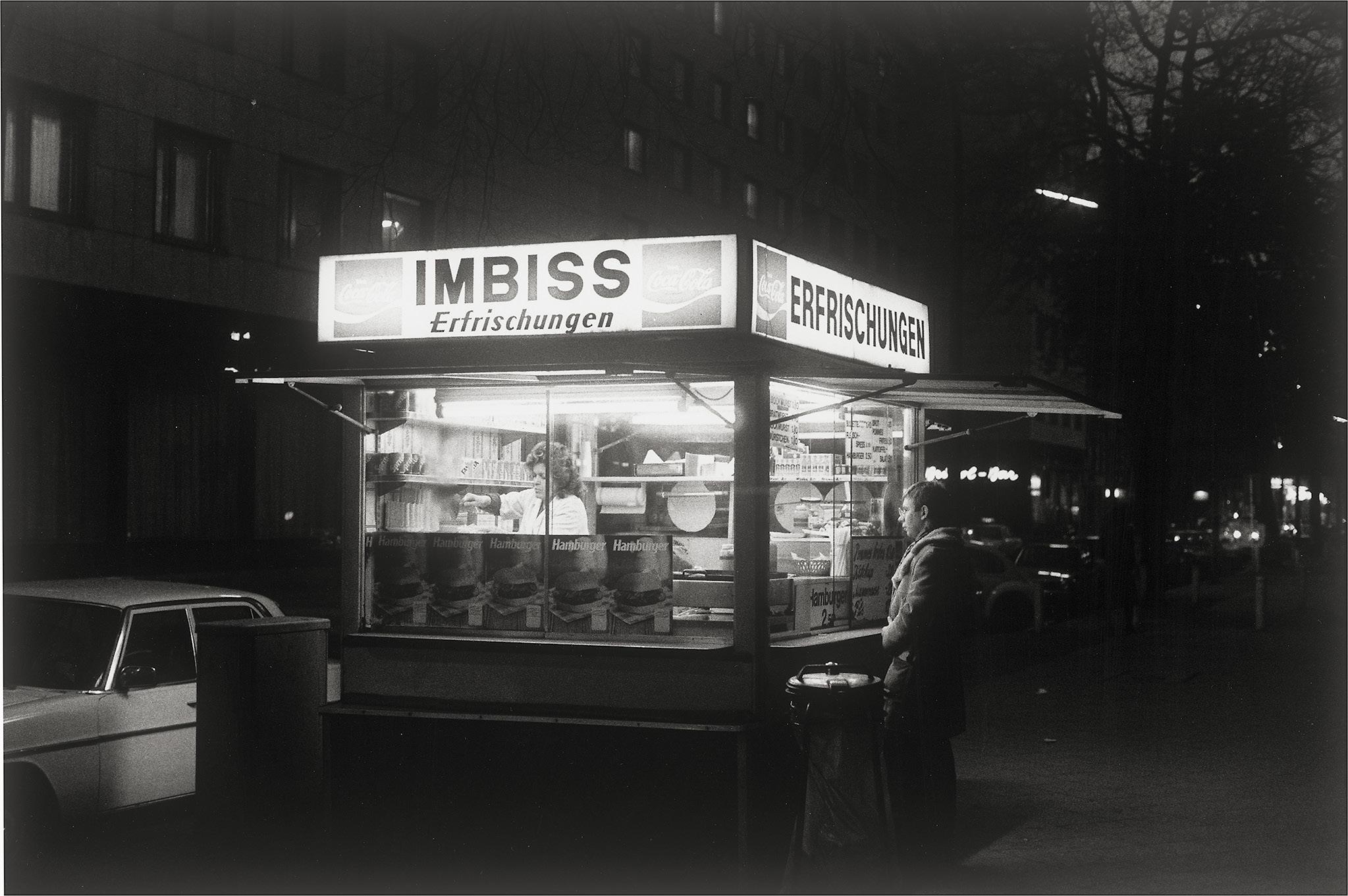
alexander rodchenko (1891-1956)
4205 Samozvery. 1926. Gelatin silver print, printed 1989. 30,3 x 23,8 cm. „Arkana Göttingen“ edition stamp, therein numbered „34/50“ and annotated in pencil on the verso.
1.000 €
In 1926, Alexander Rodchenko, in collaboration with his wife Varvara Stepanova, created a series of experimental photo illustrations for Samozvery, a children’s book by Sergei Tretjakov. Using artificial lighting and multiple exposures, Rodchenko animated Stepanova’s paper animal figures with striking visual dynamism. Although conceived as a pioneering work of Soviet avant-garde art for young readers, the project was never published and remained at the conceptual stage.
Lit.: Alexander Lavrentiev. Alexander Rodchenko - Photography 1924-1954 . Cologne: Könemann, 1995. ill. p. 138.


4206 Pioneer. 1930. Gelatin silver print, printed 1989. 30,3 x 23,8 cm. „Arkana Göttingen“ edition stamp, therein numbered „34/50“ and annotated in pencil on the verso.
1.500 €
Unconventional vantage points were a hallmark of Alexander Rodchenko’s photographic style. In this striking image, the head of a young “Pioneer” - a member of the Soviet youth organization - is captured from directly below, transforming the figure into an abstract, triangular composition.
Lit.: Alexander Lavrentiev. Alexander Rodchenko: Photography 1924-1954 . Cologne: Könemann, 1995. ill. p. 146.

thomas ruff (b. 1958)
4207 Sterne, 05h 12m/70°. 1990. Granolithograph. 67,5 x 45 cm (89 x 65 cm). Printed title below the im age in the margin; signed by the photographer in pencil on the verso and editioned “1/40”. Framed under plexiglass in wooden frame.
1.500 €
Fascinated by astronomy since childhood, Thomas Ruff eventually integrated this lifelong interest into his diverse photographic practice. In the early stages of his career, he was frustrated by the technical limitations that prevented him from
photographing the night sky himself. In 1989, he acquired a set of negatives from the European Southern Observatory, taken using a specialized telescopic lens as part of a systematic effort to chart the visible universe. From this material, Ruff randomly selected star formations, reoriented their perspectives, and dramatically enlarged the images. The resulting works are guided solely by his visual criteria and bear no direct correspondence to observable reality. This print is the first in a portfolio of eight granolithographs, published by Edition Schellmann, Munich/New York.

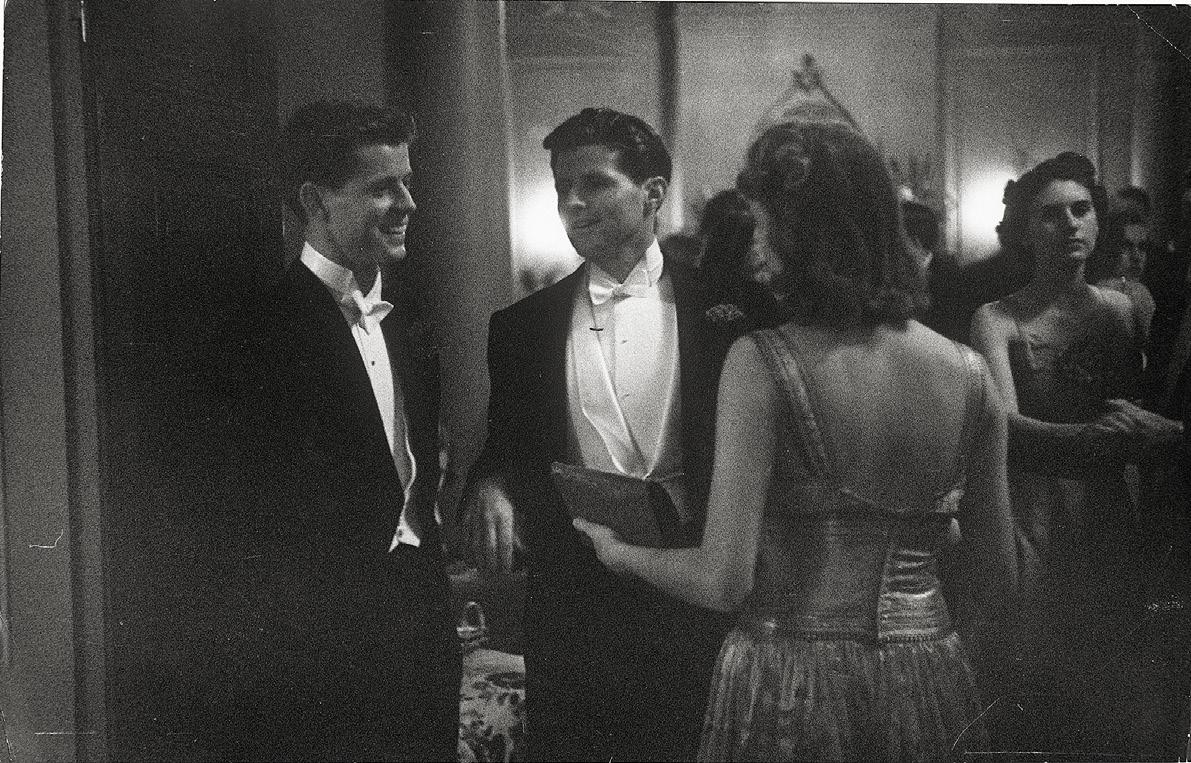
erich salomon (1886-1944)
4208 Marlene Dietrich on the telephone with her daughter in Berlin from Hollywood, 1930; Benito Mussolini, Heinrich Brüning, Dino Grandi, and Julius Curtius at the Hotel Excelsior, Rome, 1931. 2 gelatin silver prints, 1 ferrotyped and on Agfa-Brovira paper, printed 1960s. Each circa 18 x 24,5 cm. One with two agency stamps, photographer’s stamp, and annotated in pencil/marker on the verso; the other with typed press text and name stamp on the verso.
750 €
4209 John F. Kennedy and his brother Joe Jr. at a diplomatic party, London. 1938. Ferrotyped gelatin silver print, printed 1960. 18,7 x 29,5 cm. Annotated/ layout marks in pencil and ballpoint pen as well various agency stamps and Dutch press text label on the verso
750 €

pentti sammallahti (b. 1950)
4210 Solovki, White Sea, Russia. 1992. Pigment print on heavy vellum paper. 37,5 x 89,5 cm (43 x 101 cm). Signed, dated and annotated as artist proof by the photographer in pencil below the image in the margin.
1.200 €
Pentti Sammallahti, a renowned Finnish photographer, joined the Helsinki Camera Club in 1964 while still a student. Though he later studied art history, musicology, and mathematics at the University of Helsinki, he did not complete his degree. From the mid-1970s onward, he taught photography and printing techniques in Lahti and at the University of Art and Design in Helsinki. An avid traveler, Sammallahti documented landscapes and daily life across Eastern Europe, Asia, Africa, and beyond - often using a custom panoramic camera. His images shift between intimate everyday scenes and quietly expansive, poetic vistas.
In 2004, Henri Cartier-Bresson selected him as one of his 100 favorite photographers for the inaugural exhibition of the Fondation HCB in Paris.

pentti sammallahti
4211 Solovki, White Sea, Russia. 1992. Pigment print on heavy vellum paper. 37,5 x 89,5 cm (43 x 101 cm). Signed, dated and annotated as artist proof by the photographer in pencil below the image in the margin; titled and dated in pencil on the verso.
1.200 €


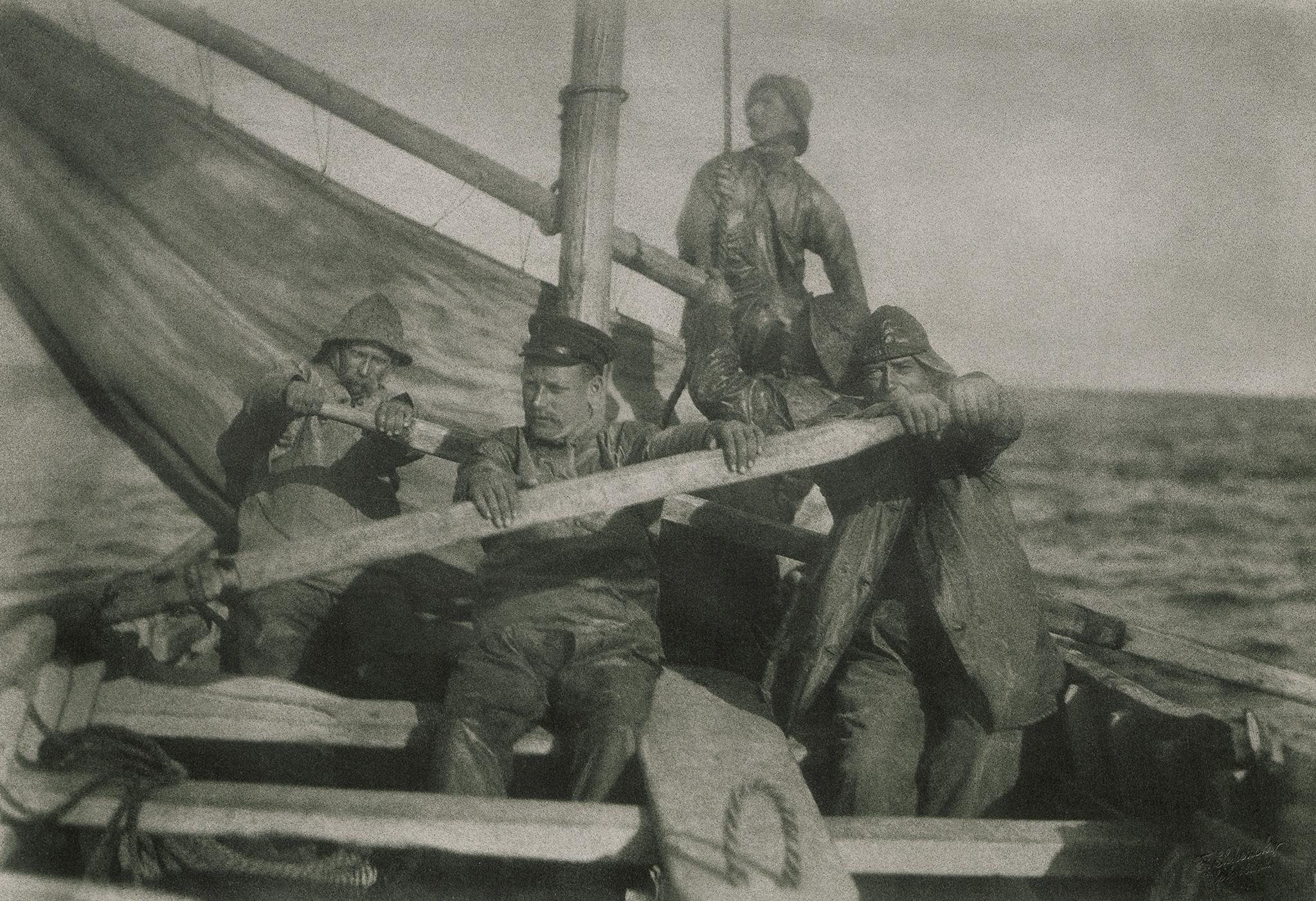
franz schensky (1871-1957)
4212 (Attributed to). Sea view with sailboat and ship; View of Helgoland from the sea. Circa 1910. 2 vintage toned carbon prints. Each 15,5 x 21,5 cm.
400 €
Richly toned and carefully composed, these atmospheric seascapes reflect Schensky’s early engagement with pictorial landscape photography along the North Sea coast. Known for his work on Helgoland, Schensky captured the island and its surrounding waters with poetic clarity, often emphasizing the interplay of sea, sky, and maritime life.
4213 Sea view with wave; Helgoland in rough seas. Circa 1910. 2 vintage green-toned carbon prints. Each 16 x 21,7 cm. Wave image with photographer‘s blind stamp in lower right corner, each flush-mounted to board.
500 €
4214 Fishermen at sea. Circa 1910. Vintage carbon print. 26,5 x 38,5 cm. Photographer‘s blind stamp in lower right corner.
500 €
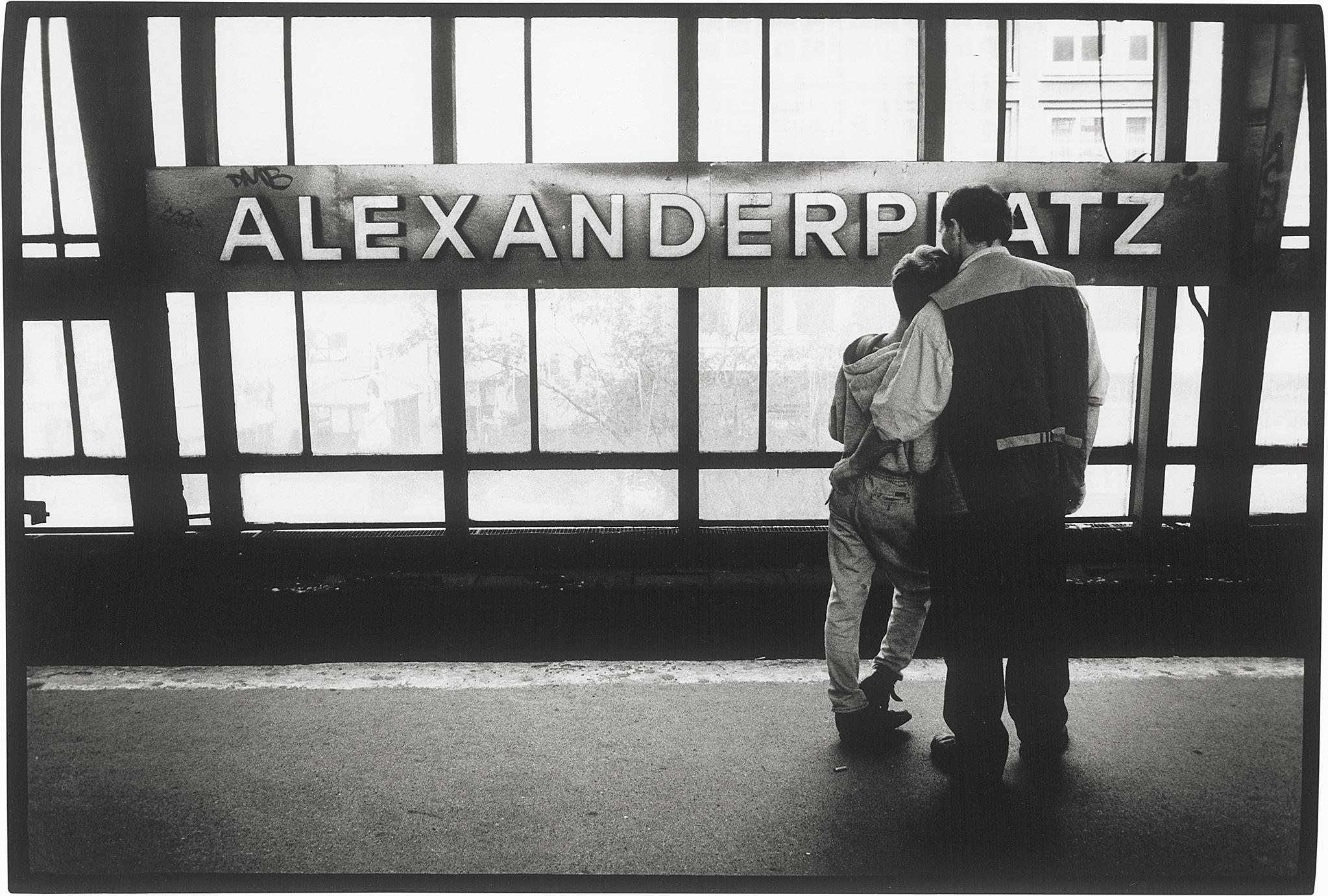

sabine sauer (1959-2009)
4215 Berlin, Alexanderplatz. 1994. Vintage gelatin silver print. 30,5 x 44,8 cm (35 x 48,2 cm). Signed, titled and dated by the photographer in pencil and photographer‘s label on the verso.
600 €
karl hugo schmölz (1917-1986)
4216 „Ilford“ Photomation fair stand. 1950s. Vintage gelatin silver print on doubleweight Agfa-Portriga paper. 13 x 22,2 cm. Photographer‘s (Hugo Schmölz) stamp on the verso.
With: Photo of a sketch design for the Ilford stand.
500 €

toni schneiders (1920-2006)
4217 Skiers on mountain, Bregenz. 1950s. Vintage ferrotyped gelatin silver print on Leonar paper. 24,2 x 18 cm. Photographer‘s „Lindau - Schachen, Badstrasse 3“ stamp and annotated in pencil on the verso.
900 €

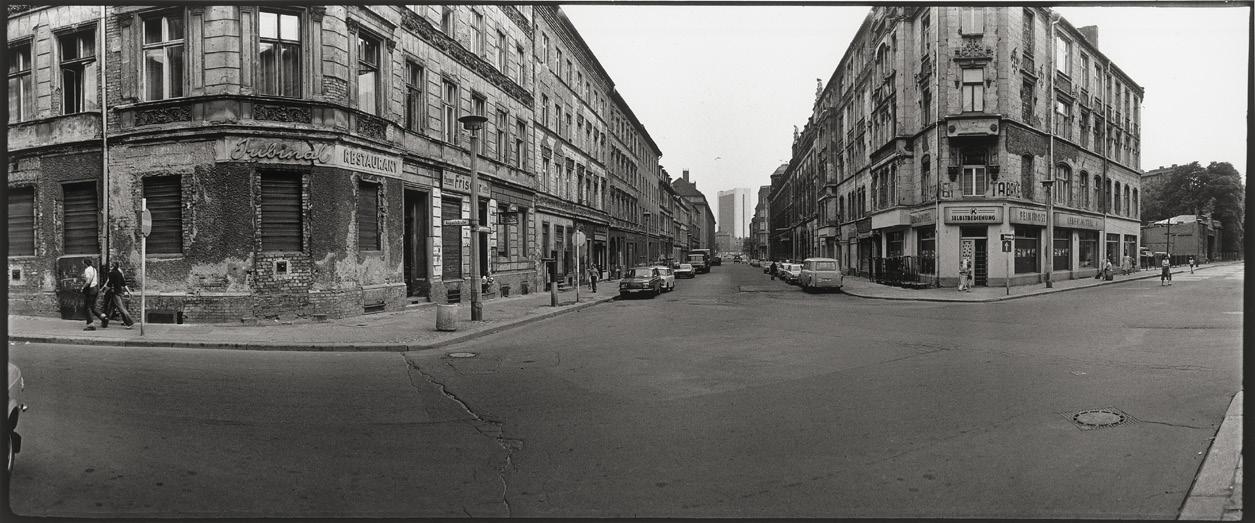

hans martin sewcz (b. 1955)
4218* Oranienburger Straße, Berlin; Tucholskystraße/ Ecke Auguststraße, Berlin ; Oranienburger Tor, Berlin 1979. 3 panoramic gelatin silver prints, printed 20052007. Each circa 22 x 52,5 cm and 24 x 57 cm (32 x 60 cm). Each signed, titled, and dated by the photographer in pencil as well as with photographer‘s stamp on the verso.
1.500 €
Hans Martin Sewcz studied at the Academy of Visual Arts in Leipzig and is best known for his photographic exploration of East Germany and other former Eastern Bloc countries. His work has been widely exhibited and is held in major public and private collections, including the Berlinische Galerie, the Deutsches Historisches Museum, the Institut für Moderne Kunst in Nuremberg, and the Deutsche Bank Collection in Frankfurt am Main.
Lit.: Marc Barbey, ed. Hans Martin Sewcz: Berlin-Mitte, Mai 1979 Berlin: Collection Regard, 2011, ill. pp. 24 and 38-39.



4219* Oranienburger Straße/Kreuzung Auguststraße, Berlin; Große Hamburger Straße, Berlin; Große Hamburger Straße, Berlin . 1979. 3 panoramic gelatin silver prints, printed 2005-2007. Each circa 24 x 56,5 cm (32 x 61 cm). Each signed, titled, and dated by the photographer in pencil as well as photographer‘s stamp on the verso.
Marc Barbey, ed. Hans Martin Sewcz: Berlin-Mitte, Mai 1979. Berlin: Collection Regard, 2011, ill. pp. 15, 16-17 and front cover.

raghubir singh (1942-1999)
4220 After Crossing the Luni River, Barmer, Rajasthan 1975. Dye transfer print, printed circa 1985. 24,4 x 37,2 cm (44,5 x 55,4 cm). Unsigned, with printer‘s stamp and signed by the printer in pencil on the verso.
1.500 €
From an aristocratic Rajput family in Jaipur, Raghubir Singh first encountered photography as a student when he dis-covered Henri Cartier-Bresson’s Beautiful Jaipur (1948). The book ignited a lifelong passion, inspiring a vivid and ex-pansive body of work that captures the complexities of Indian life and landscape. Singh is now recognized as a pioneer of color photography, standing alongside William Eggleston, Stephen Shore, Joel Sternfeld, and Joel Meyerowitz. He published over fourteen books on India and received numerous international honors.
A print of this image is held in the collection of the Metropolitan Museum of Art, New York.
4221 India, Kashmir. Circa 1978. Dye transfer print, printed circa 1985. 24,4 x 37,2 cm (44 x 55,4 cm).
Unsigned, with printer‘s stamp and signed by the printer in pencil on the verso.
1.500 €
4222 Srinagar, Kashmir. 1984. Dye transfer print, printed circa 1985. 24,4 x 37,2 cm (44,5 x 55,4 cm).
Unsigned, with printer‘s stamp and signed by the printer in pencil on the verso.
1.500 €
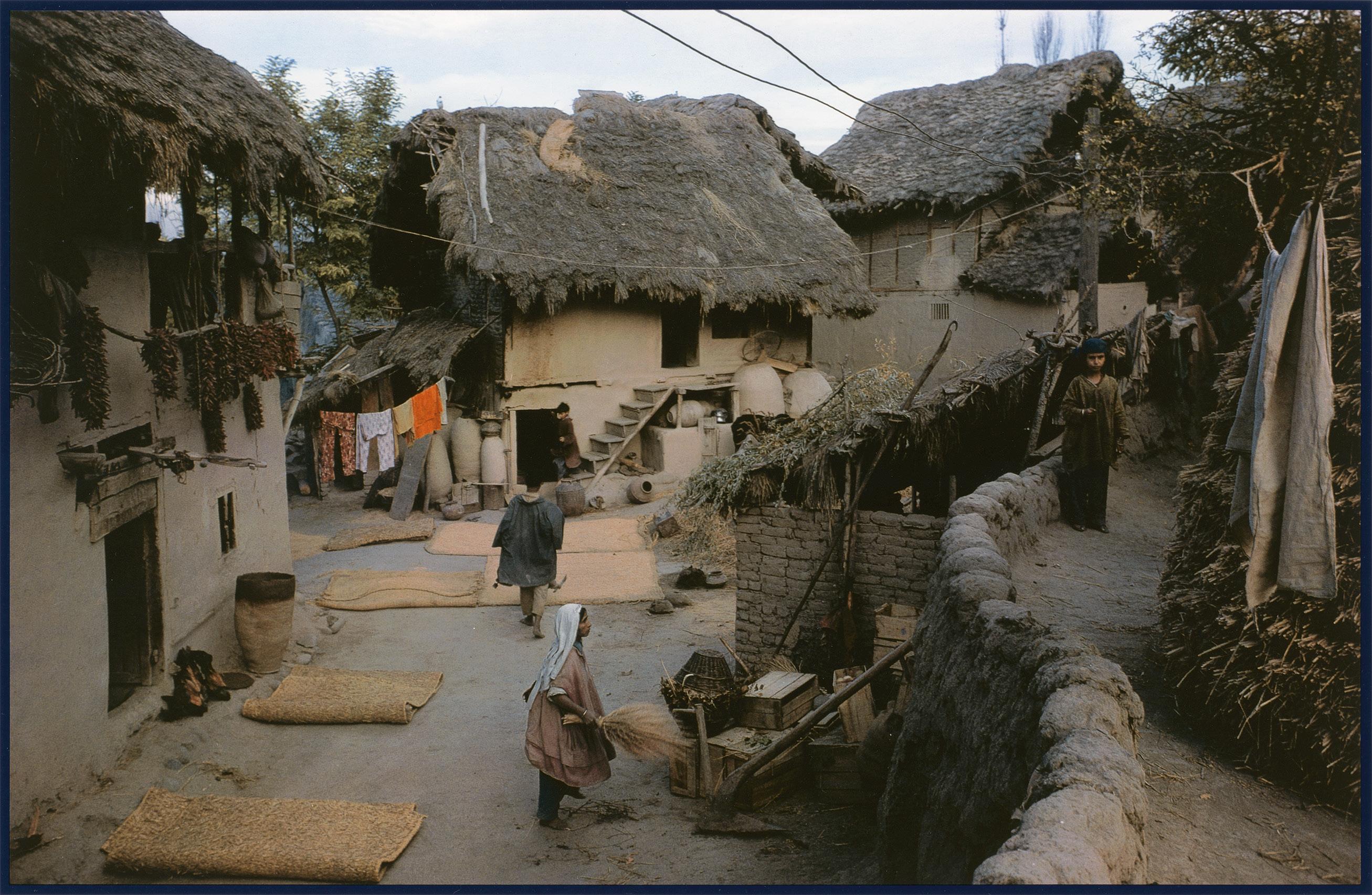
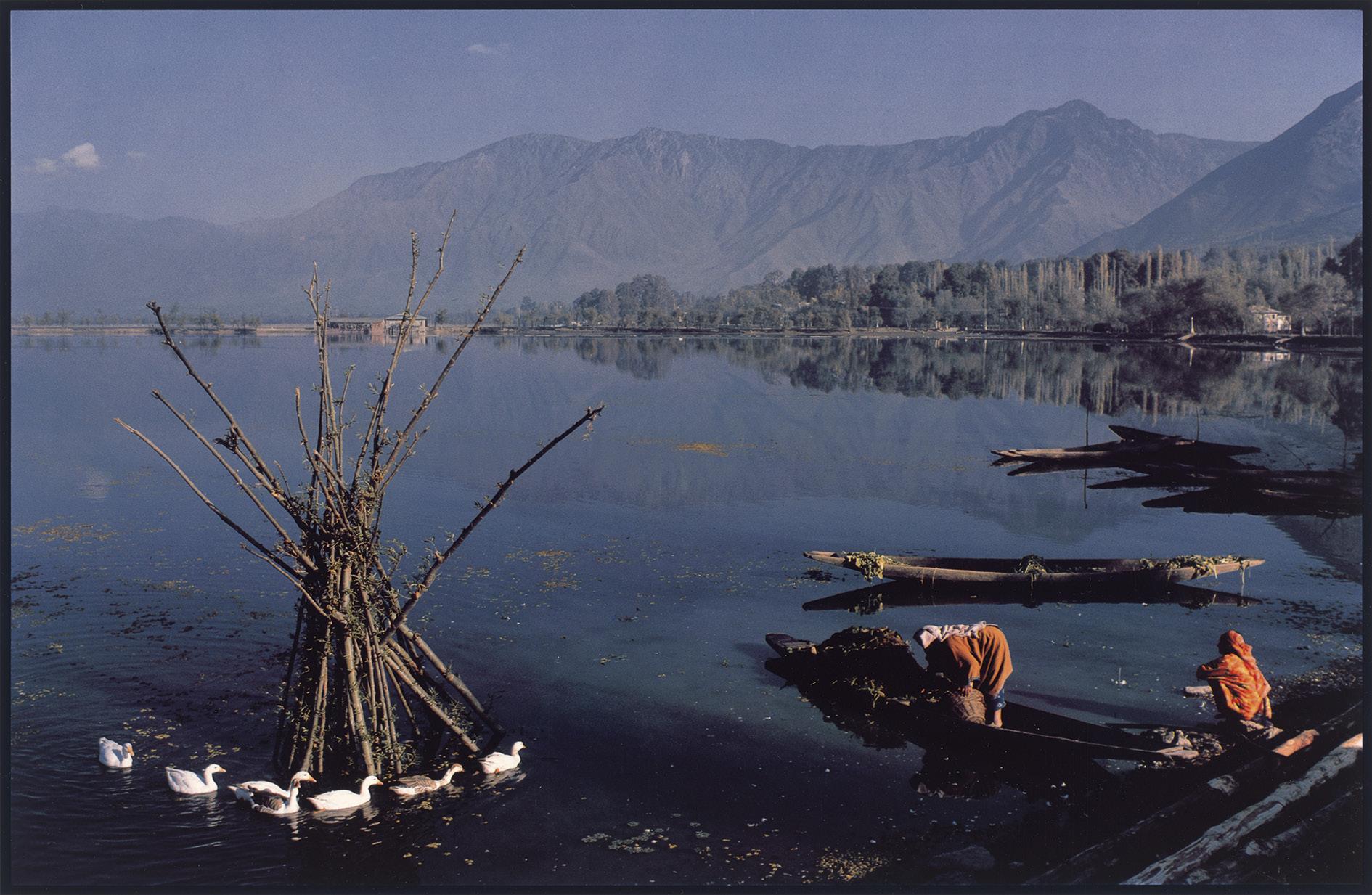

max slevogt (1868-1932)
4223 Photographer: Hugo Erfurth (1 photo postcard) and unknown. Portraits of the painter Max Slevogt. Circa 1918. 15 vintage gelatin silver prints. Between circa 13,5 x 9 cm, 16 x 12 cm and 19 x 16 cm. Most mounted to card.
400 €
Max Slevogt was a leading figure in German Impressionism and an important contributor to the Berlin Secession. Renowned for his luminous landscapes and dynamic brushwork, he often depicted gardens, sunlight, and scenes of leisure. Over time, his work also engaged with elements of Expressionism. The present group of photographs includes images of Slevogt painting in his studio circa 1930, painting en plein air in 1918, a group portrait of Berlin Secession members, and views from his funeral - offering a rare visual chronicle of the artist’s life and legacy.

uwe steinberg (1942-1983)

Uwe Steinberg approached photography as an autonomous artistic medium, even within the confines of the socialist system in the former GDR. His extensive body of work - ranging from scenes of labor and everyday life to portraits of youthreflects both a keen eye for subject matter and a refined command of composition. 4225
andré steiner
(1901-1978)
4224 Hof, Schönhauser Allee 72. 1979. Gelatin silver print, printed later. 26,5 x 37,5 cm (30 x 40 cm). Photographer‘s stamp and annotated in pencil on the verso.
600 €
4225 Swimmer. 1930s. Vintage ferrotyped gelatin silver print. 24 x 16,2 cm. Photographer‘s/copyright stamp and numbers in ink and red crayon on the verso.
600 €
After living in Budapest and Vienna, the Austro-Hungarian photographer André Steiner eventually settled in Paris, where he became known for his experimental and wide-ranging approach to photography. His avant-garde work spanned abstract compositions, photo experiments, nudes, scientific micro- and macrophotography, nature studies, and sports imagery - demonstrating both technical precision and a bold artistic vision.

otto steinert (1915-1978)
4226 Maske einer Tänzerin . 1952. Vintage gelatin silver print on ivory doubleweight paper. 20,2 x 15,2 cm (23,7 x 18,5 cm). Signed by the photographer below image in margin in pencil.
2.000 €
The German photographer Otto Steinert was a decisive figure in the Subjektive Fotografie movement, known for using experimental techniques to express emotional and abstract ideas rather than objective reality. His work, characterized by high
contrast, multiple exposures, and unconventional angles, explores themes of light, shadow, and form, often blurring the boundary between photography and modern art. Steinert’s influence reshaped post-war European photography, encouraging a more personal, subjective vision that celebrated artistic experimentation.
This iconic image was featured on the cover of Otto Steinert‘s seminal photobook Subjektive Fotografie (1952).
Lit.: Otto Steinert. Subjektive Fotografie. Band I. Bonn: Brüder Auer, 1952, ill. front cover.

bert stern (1929-2013)
4227 Fashion photograph for Pierre Cardin. 1969. Gelatin silver print. 34 x 34,4 cm (43 x 35,7 cm). With the photographer’s copyright stamp on the verso, therein numbered, titled, and dated.
900 €
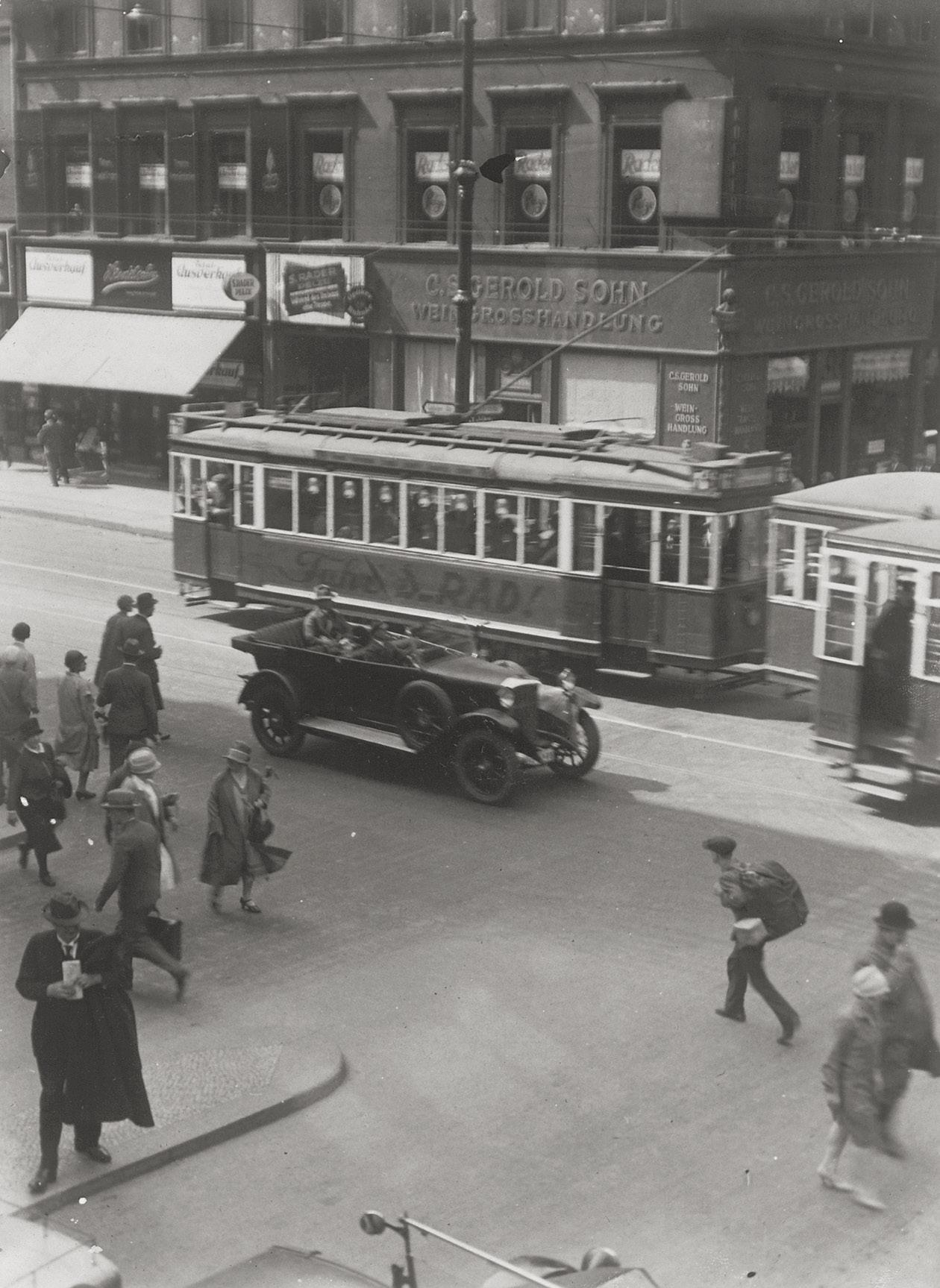
sasha and cami stone (Aleksandr Serge Steinsapir 1895-1940, Wilhelmine Camille Schammelhout 1892-1975)
4228 Berlin street scene. Circa 1927. Vintage gelatin silver print. 22,7 x 16,4 cm. Photographers‘s copyright stamps (Berlin and Brussels) as well as numbered and annotated in pencil and red ink on the verso, hingemounted in upper edge in mat.
800 €
Sasha and Cami Stone were key figures in Berlin’s dynamic photographic culture of the 1920s and early 1930s, celebrated for their modernist approach that merged architectural, commercial, and fine art photography. Their studio served as a hub for avant-garde visual expression in Weimar Berlin, reflecting the era’s embrace of functionalism, technological progress, and a bold new photographic aesthetic. With the rise of National Socialism, the Stones emigrated to Brussels, where they continued their creative work in exile.
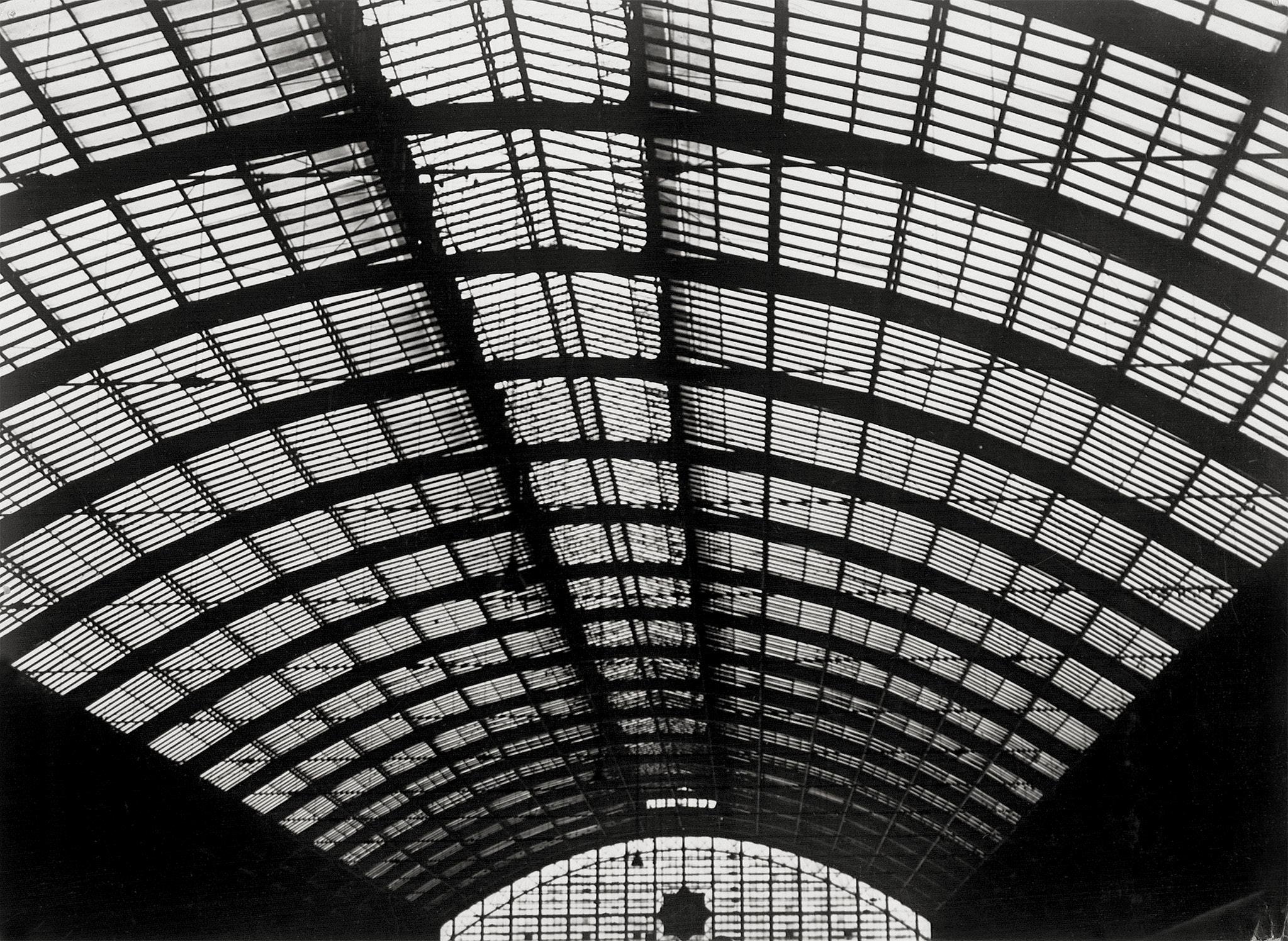
4229 Berlin train station. Circa 1927. Vintage ferrotyped gelatin silver print. 17,5 x 23,5 cm. Photographers‘s copyright stamps (Berlin and Brussels) as well as numbered and annotated in pencil and red ink on the verso, hinge-mounted in upper edge in mat.
600 €
4230 Views of Berlin. Circa 1928. 3 vintage ferrotyped gelatin silver prints. Each circa 17,8 x 23,5 cm and reverse. 1 with photographers‘s copyright stamps (Berlin and Brussels) as well as numbered and annotated in pencil and red ink and 2 with archive label, therein annotated in pencil on the verso.
800 €

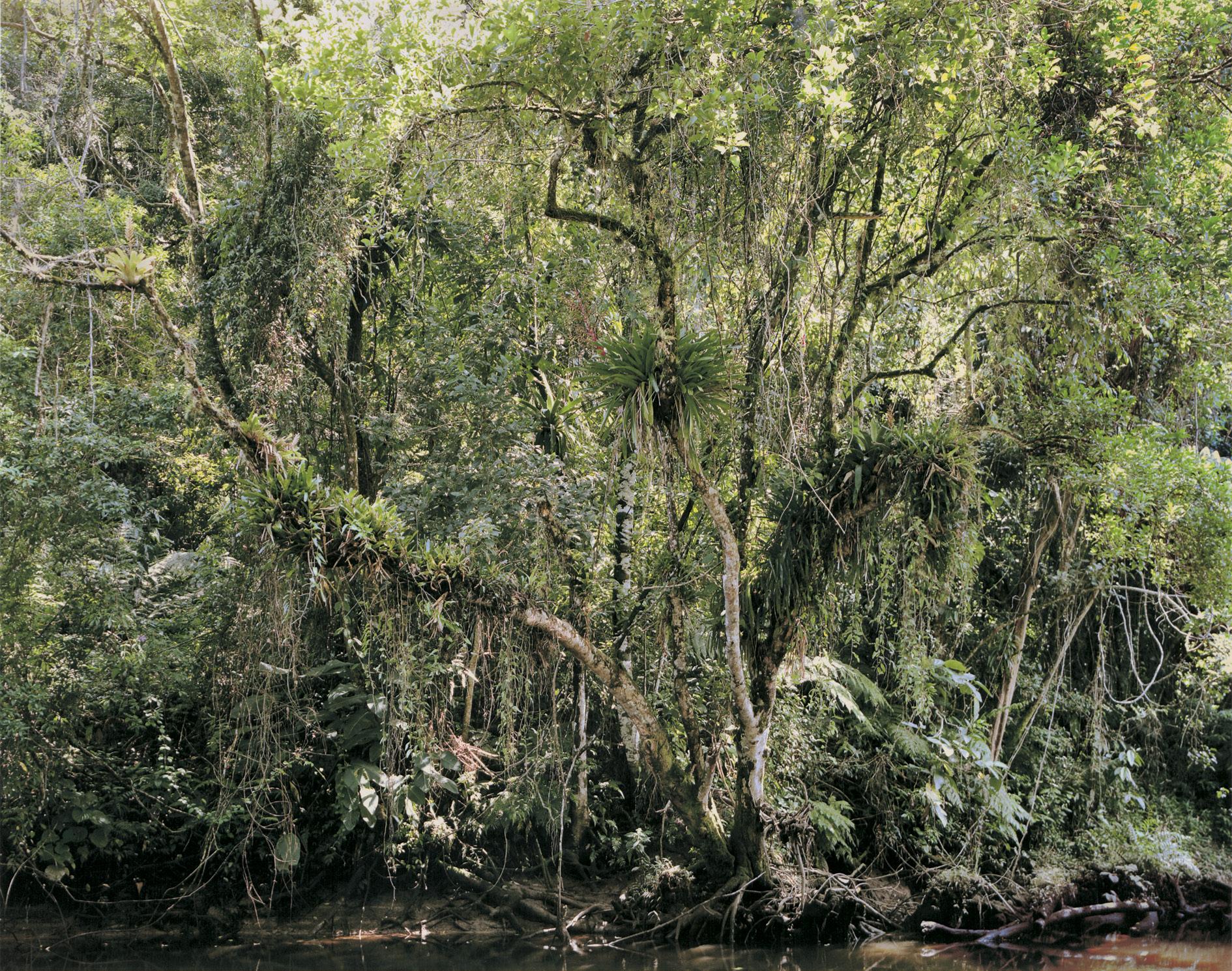

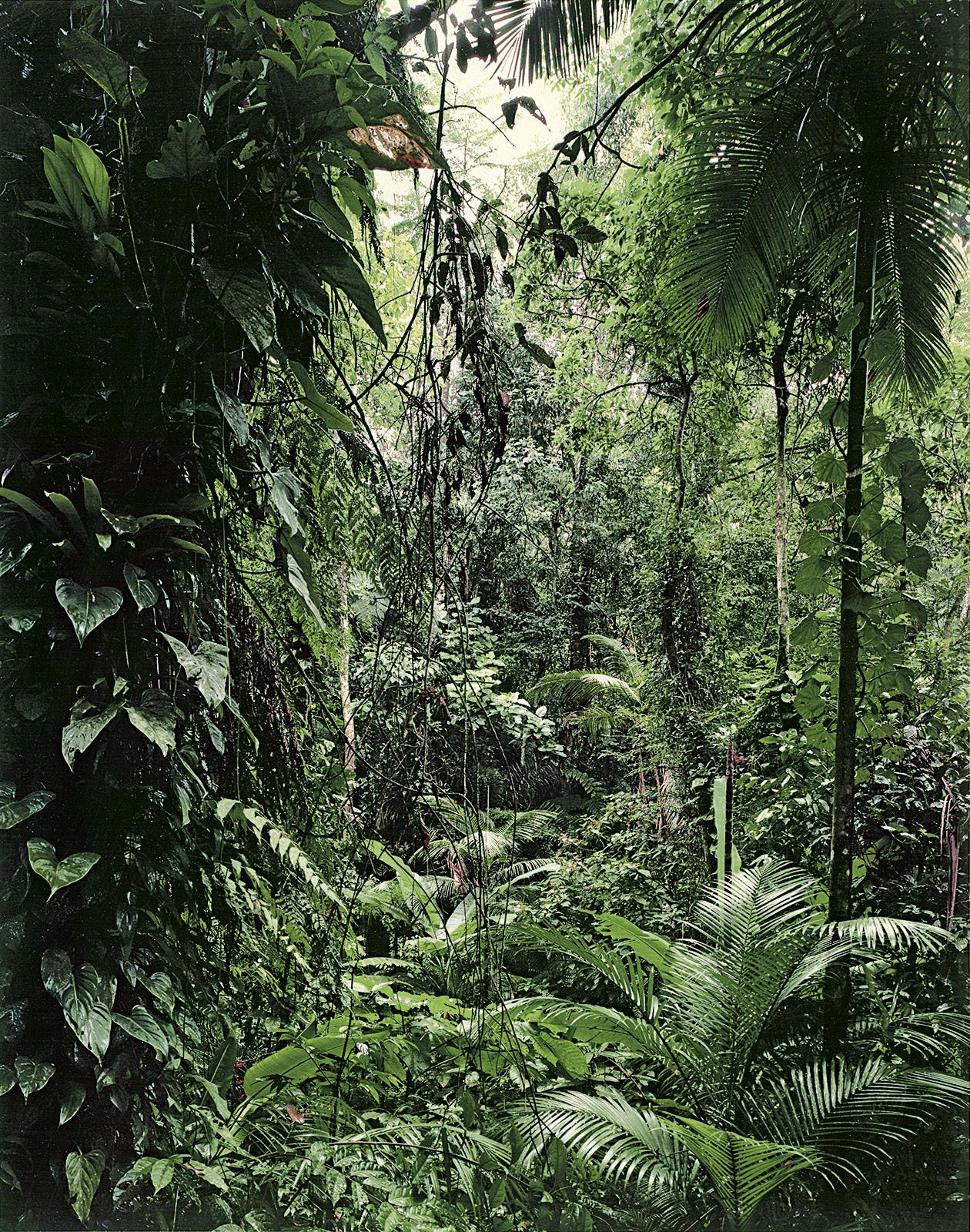
thomas struth (b. 1954)
4231 „Paradies“ series. 2004. 5 color pigment prints and 1 black and white pigment print. Each circa 30,7 x 39 cm and 39 x 30,7 cm (33,4 x 48 cm and 48 x 33,4 cm). Each with Griffelkunst edition text printed on the verso. In original card portfolio, inner flap signed by the photographer in pencil and with text page.
1.200 €
The titles in this portfolio include: Juquehy, São Francisco de Xavier, Yakushima, Daintree, Xi Shuang Banna and Yosemite National Park
Lit.: Thomas Struth. New Pictures from Paradise. Munich: Schirmer/Mosel, 2002.


karin székessy (1939-2025)
4232 La belle et la bête. 1976. Gelatin silver print, printed later. 50,7 x 40,7 cm. Signed in pencil in lower left corner of recto; verso with signature and inscribed “e.a.” (épreuve d’artiste).
1.000 €
Karin Székessy is renowned for her poetic nude studies and meticulously staged compositions that blend surrealism, symbolism, and sculptural form. Beginning in the 1960s, she developed a distinctive visual language marked by dreamlike interiors, symbolic props, and an introspective treatment of the female body. Often working in natural light and using long exposures, Székessy’s photographs evoke the stillness of Old Master paintings while challenging conventional representations of femininity. Her work occupies a unique place in postwar European photography, bridging fine art, fashion, and surrealist traditions.
4233 Nude. 1970s. Gelatin silver print, printed 2025. 52 x 42 cm. Signed and numbered “1/12” in pencil on the verso; with H 2 SF edition stamp.
1.000 €
4234 Madame est seule. 1976. Cibachrome print. 51 x 61 cm. Accompanied by a certificate of authenticity signed by the artist.
1.200 €
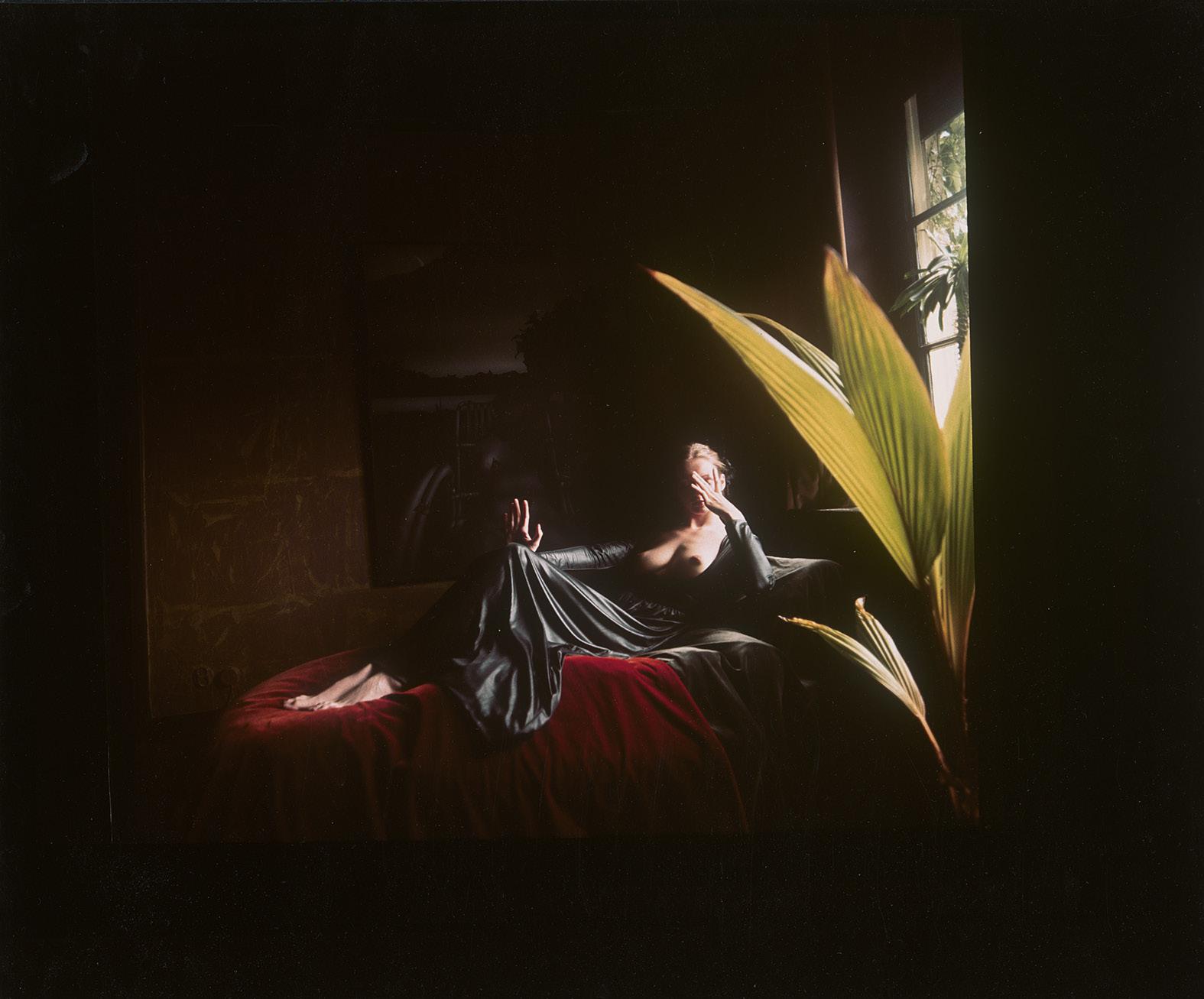

4235 Good-bye Party Friends. 1991. Vintage matte gelatin silver print. 39,5 x 30 cm. Signed and dated by the photographer in pencil on the verso.
800 €
A poignant image by Lithuanian photographer Antanas Sutkus, Good-bye Party Friends reflects the atmosphere of political transition in the final days of the Soviet Union. Known for his humanist approach, Sutkus captured everyday life in Lithuania with emotional depth and psychological nuance. This photograph belongs to his ongoing exploration of identity, ideology, and social change at the margins of empire.
umbo (Otto Umbehr, 1902-1980)
4236 Unheimliche Straße. 1928. Gelatin silver print on Agfa paper, printed 1977. 30 x 23 cm. Signed, editioned „60/100“ and dated by the photographer in pencil on the verso; mounted along upper edge to board, editioned „60/100“, dated and signed as well as dedicated by the photographer in pencil below the image on the mount and annotated in pencil on mount verso.
750 €
Otto Umbehr, known as UMBO, was a key figure in early 20thcentury avant-garde and modernist photography. The photograph offered here ranks among his most iconic images, though the original negative was lost early on. Only a few vintage prints of this work are known to exist. In 1977, UMBO rephotographed one of these rare prints and produced a small edition of high-quality prints, issued as the annual gift for members of the Kestner Gesellschaft.
Lit.: Herbert Molderings. Umbo: Otto Umbehr 1902-1980 Düsseldorf: Richter, 1995, ill. plate 52.


vaughan. john (1953-1995)
4237 Marsha Hunt for „Hair“. 1968. Vintage gelatin silver print. 30,3 x 23,3 cm. With typewritten caption printed onto label attached to the verso, photographer‘s agency stamp as well as copyright stamps and cropping marks in blue marker on the verso.
500 €
albert vennemann (1885-1965)
4238 Photomontage images from the series „Das schöne Berlin“ and „Das neue Gesicht Berlins“ . 1920s. 3 vintage gelatin silver photo postcards. Each circa 10,2 x 14,5 cm. Each with title and „Original-Handdruck aus der Sammlung Vennemann“ as well as copyright text printed on the verso.
1.200 €
Known as the “creator of the face of a cosmopolitan city,” Albert Vennemann produced striking photo postcard series such as „Das schöne Berlin“ (Beautiful Berlin) and „Das neue Gesicht Berlins“ (The New Face of Berlin), in which he combined images of streets, train stations, commercial and industrial buildings into visionary urban compositions.


waddell (b. 1968)
4239 Tokyo Subway. 2004. Pigment print. 41 x 55 cm (67 x 79 cm). Matted and framed under glass in artist‘s wooden frame; signed, dated, titled and editioned „4/7“ by the photographer in black marker on frame verso.
1.200 €
Born in Vancouver, British Columbia, Stephen Waddell grew up in a family deeply engaged in the arts. While studying at Simon Fraser University - where he took courses with Jeff Wall - he initially used photography as a sketching tool for his paintings. By the late 1990s, photography became his primary medium. Known for his painterly approach, Waddell brings a refined sensitivity to light and composition, often depicting people engaged in everyday activities within urban spaces. A flâneur at heart, he captures quiet, observational scenes that blur the line between documentary and fine art. His work has been widely exhibited and is held in major international collections.


jan wenzel (b. 1972)
4240 Untitled. 1997. 3 chromogenic photoboothstrips on PMI photographic passport paper. Each between 20,3 and 23 x 4 cm. 1 strip signed, dated and annotated „Bautzen, Galerie Budussin 24.I.9725.II.97, Leipzig Kurt Eisner Str. 73 29.I.97 - 5.II.97“ and „Mein Flug ins All , Leipzig, AOK Ritterstr. 16.10-10.12.97“ by the photographer in ink on the verso.
500 €

Jan Wenzel has been taking photographs in photo booths since the early 1990s. The mechanics of the machine create a photographic event that lasts exactly 28 seconds. The tableaux, often consisting of several photo strips placed together, show imaginary spaces created by the rapid change between the individual shots. They are the result of a specific choreography with which objects were held in the machine. The dynamics of the images arise from minimal differences in how they connect. Referring to these tableaux works, Wenzel stated: “Each of my photos is the result of calculation, time constraints, self-control, and chance“.

(Arthur Fellig, 1899-1968)
4241 Easter Sunday in Harlem . 1940. Gelatin silver print, printed circa 1980s. 25,1 x 20,2 cm. Annotated in pencil and ink on the verso.
1.500 €
Weegee, born Arthur Fellig, was a prolific photojournalist known for his stark, unflinching images of crime scenes, urban life, and street culture in 1930s and 1940s New York City. Often arriving at scenes before the police, thanks to his
self-installed police radio, he captured raw, flash-lit photographs that combined documentary immediacy with a gritty, noir aesthetic. His work not only defined an era of tabloid photography but also offered a visceral portrait of the city’s underbelly, blending sensationalism with a distinct visual style.
Lit.: Weegee (Arthur Fellig). Weegee’s New York: Reportagen eines legendären Photographen 1935-1960. Munich: Schirmer/ Mosel, 2000, ill. p. 275.

reinhart wolf (1930-1988)
4242 Romy Schneider. 1972. Gelatin silver print, printed later. 41 x 40,5 cm (60,2 x 50 cm). Titled, dated and editioned „1/2“ in ink in another hand as well as photographer‘s estate stamp on the verso.
1.000 €
The German photographer Reinhart Wolf is known for his fashion and portrait photography. He not only crafted iconic portraits of celebrities, models, and artists but also ventured into the realm of landscape and architectural photography, leaving an enduring mark on the world of photography with his versatile and influential body of work.
Provenance: From the estate of the photographer.
4243 Chicago. 1950. Gelatin silver print, printed later. 50 x 49,5 cm (60 x 60 cm). Photographer‘s estate stamp on the verso.
Provenance: From the estate of the photographer.

800 €
dr. paul wolff (1887-1951)
4244 Sun deck. 1930s. Vintage ferrotyped gelatin silver print on doubleweight paper. 24 x 16,7 cm. Photographer‘s „Frankfurt am Main“ stamp, photographer‘s „Wiener Photo-Kurier“ stamp annotated in pencil and red/blue crayon on the verso.
600 €
The German photographer Dr. Paul Wolff is renowned for his pioneering role in advancing modern photographic techniques, particularly in the use of the Leica camera. A master of lighting and composition, he helped define the aesthetics of 20thcentury photography through both his portraits and dynamic reportage. His innovative vision and technical expertise left a lasting impact on the development of modern photography.


4245 Paris. 1930s. Vintage ferrotyped gelatin silver print on doubleweight Agfa-Brovira paper. 23,5 x 17,7 cm. Photographer‘s „Frankfurt am Main“ stamp, annotated in pencil and „Schostal“ agency label with photographer‘s name on the verso.
600 €

world war i
4246* Panoramic view taken from German military balloon between Mourmelon-le-Grand and St. Thierry, France. 1917. 26 gelatin silver prints mounted together on board and joined with paper tape to form a continuous panorama (entire size circa 19 x 141 cm). Handwritten notations in ink above and below images on the mounts, titled “Ballonrundblick der eigenen und feindlichen Stellungen von Mourmelon Le Grand bis St. Thierry”. Folded concertina-style.
600 €
This extraordinary panoramic photograph, assembled from 26 individual gelatin silver prints, documents the terrain between Mourmelon-le-Grand and St. Thierry in northeastern France during World War I. Taken from a German military observation balloon in 1917, the detailed images offer a sweeping view of both German and enemy positions, with handwritten notations identifying key strategic points along the horizon.
x-ray photography
4247 Photographer unknown. X-ray of a hand with a ring. Circa 1910. Vintage collodion print. 22,5 x 17 cm. Mounted to original board with gilt-ruled outline.
300 €

